Starfinder Core Rulebook by Alien Rope Burn
"This massive 560-page hardcover rulebook is the essential centerpiece of the of the Starfinger Roleplaying Game, with rules for character creation, magic, gear, and more - everything you need to play Starfinger as a either a player or Game Master!"
Original SA post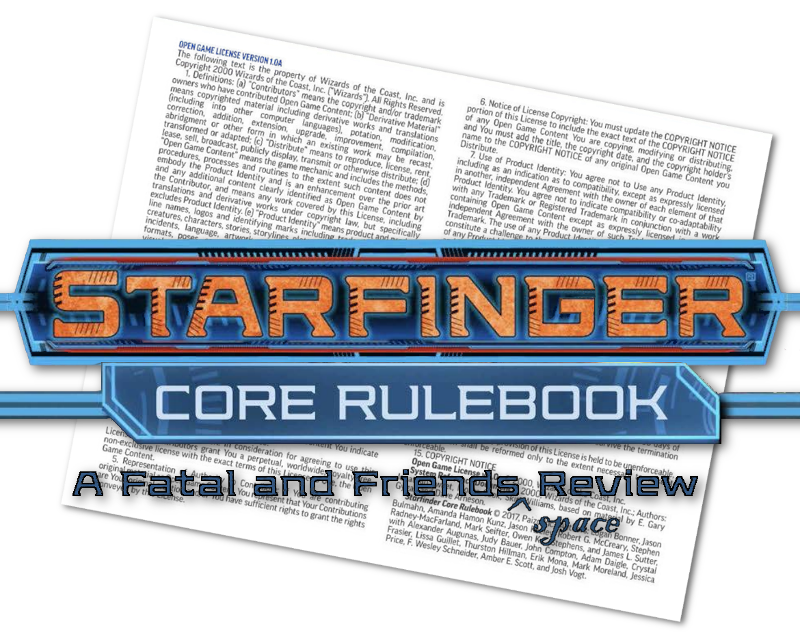
Starfinger Core Rules Part #01: "This massive 560-page hardcover rulebook is the essential centerpiece of the of the Starfinger Roleplaying Game, with rules for character creation, magic, gear, and more - everything you need to play Starfinger as a either a player or Game Master!"
(Credit: Paizo Store ad copy.)
So, it's time to return to the fields of Paizo. It's been a half-decade since my Pathfinder Roleplaying Game review, and those familiar with it will remember I found plenty to be critical about. was, frankly, a warmed-over version of Dungeons & Dragons 3.5, which itself was a warmed-over version of Dungeons & Dragons 3rd Edition. Pathfinder was derivative RPG pablum that ignored most of the design innovations that Dungeons & Dragons 3.5 had made, instead favoring just dialing back the clock from 2009 to 2003. It was not only a rebuttal not only to Dungeons & Dragons 4th Edition, but to most of the innovative content that had been released under Dungeons & Dragons 3.5. That being said, it was attractively illustrated and laid out, had a very strong marketing pitch, and was very well-supported with adventures, setting material, and enough player options to choke a Tarrasque.
But there was one particular criticism leveled at my review: that Pathfinder Roleplaying Game wasn't just comprised of its two core books - that it was a living game, and to properly evaluate it, I'd need to be familiar with the current Pathfinder "state of the art" and judge it based on that. I reasonably maintain that if you write 904 pages of core material, that stands on its own and can be judged as a game, but they were not convinced. But there was no way I was going to sit down and review thousands of pages of Pathfinder material just to cover what I was already reasonably certain of. But Starfinger was coming. A new slate for Paizo. Certainly, I could go and see the Paizo's best foot put forward, and give them another chance.
To be fair, I poke fun. And hell, do I criticize. But I didn't come into this with a lot of preconceived notions. I expected something average - better than Pathfinder, but not massively groundbreaking. I may not have ever taken it too seriously, but I was hoping for something I could look and take some positive surprise from. I want to be impressed. I don't want to grind my teeth and sigh and cluck my tongue. After all, I don't want Paizo to just be stuck forever reprinting an RPG that will soon reach the age of majority in its home country. I want to see them free to design their own game, to be free of their albatross, to at least tip over some sacred cows. Will Starfinger manage a new, tasty recipe? Or will it just be astronaut ice cream?
Let's have a bit of a taste.
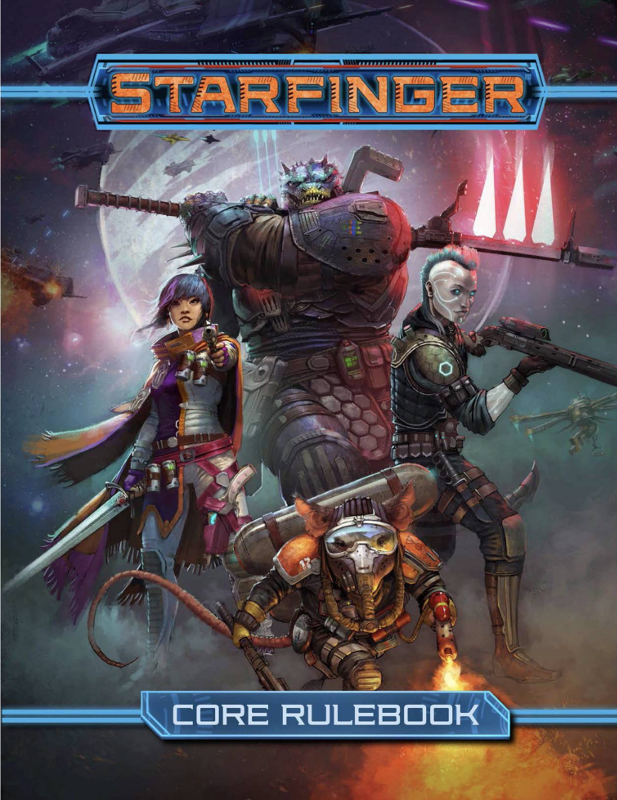
Starfinger Core Rules posted:
In Starfinger, you and your friends play the crew of a starship exploring the mysteries of a weird universe. Within this framework, however, there are no limits to the characters and play and the stores you can tell.
Well, aside from the classes and races available, and your capabilities at a given level, and whether or not you have the right feats... do you have the supplement to play that alien race? Pretty sure that's not out yet. Well, there are limits, and we'll be knocking up against them. They lied to us. (Marketing is like that.)
But first, what isa roleplaying game? Well, we get a pretty decent explanation. And we're ready to get started, because:
Starfinger Core Rules posted:
This book contains all the information you need to play Starfinger, whether you're a player or a Game Master.
Well, it's missing antagonists, unless you build all of your antagonists like PCs. Well, right off the bat, we have a bold untruth (repeated in the ad copy). Marketing is like that. But don't worry. We'll be directed to buy the absolutely necessary Alien Archive much later, but not here in the intro, when we're first deciding to buy the book. Of course, there's other stuff we'll need, which it tells us all about. We'll need dice, though! And pencils! And a map! Wait, where do we get a map?
Starfinger Core Rules posted:
Not sure where to start? Starfinger Flip-Mat: Basic Terrain and Starfinger Flip-Mat: Basic Starfield give you the maps you need to play, and you can find miniatures and cardstock pawns like the Starfinger Core Rulebook Pawn Collection at paizo.com, along with dice sets and other gaming accessories.
Ah, yeah, there's the Paizo I know. Remember boxed sets that came with everything you needed? Those were nice. This could use one of those. I suppose it'd be hard to find a box for this 560 page behemoth, though. Once again, why publish a Gamemaster's Guide when you can just bundle it with every Player's Guide? I mean, it makes the book really ridiculously big, but... then you can publish another book, and call it the Gamemaster's Guide, and make that seem essential! Marketing is like that.
As I read this, I'm flashing back to a month ago at GenCon, listening to Paizo publisher Erik Mona talk about how Pathfinder isn't really a game so much as a subscription. We're at the d20 retrospective, in which Ryan Dancey touts the accomplishments of the d20 license, which he was elbow-deep in creating. As for the cost to the industry, well, that's just on the heads of RPG publishers who made the wrong decisions.
Flash back a little further and I'm standing in line for the exhibition hall talking with people, one of which is describing multiple walls he has to dedicate to his Pathfinder collection. Another guy bemoans the fact that he had to cancel getting each case of Pathfinder miniatures because $300 a month was just too much and he couldn't keep up. Another talks about his friend who has a separate apartment just to hold his gaming collection. Not to live in. Just for storage. Not sure if that friend is a Paizo fan as well. These aren't people I sought out. They're not part of any of my game tribes. There's just enough of them that I can run into a few without putting any effort into it.
And we hop back forward to the the talk with Mona, where he mentions when they did Pathfinder Adventure Path #100, he felt like they were just kind of going through the motions, but now that they're doing Starfinger, he feels like Pathfinder Adventure Path #125 is finally a milestone he can be proud of, that they're finally moving things forward.
Let's move forward a little further, and I'm in the Paizo booth. It's huge. There are the Starfinger GM Screens and Flip-Mats in stacks, but the game itself sold out. Lisa Stevens mentioned at a talk that they'd brought 50% more copies of Starfinger in 2017 than they'd brought of Pathfinder in 2009. I feel really unconvinced by the notion that they thought it wouldn't sell out. Certainly she's aware that their player base probably was more than 50% bigger? I figure I'll ask some Paizo employee if the PDF is available, thinking about this potential review, but I'm distracted by a game writer I recognize and walk up to chat with them.
While I'm talking to the writer, they say, "Are you the guy that does those Rifts reviews? Oh my god, you have to send me the link for those!" I'm a bit shocked, but I can't pass on the name. I walk away from the Paizo booth having completely forgotten why I'd come in the first place.
Okay, that's a little off track, but I had to mention it. (I did send the link.)
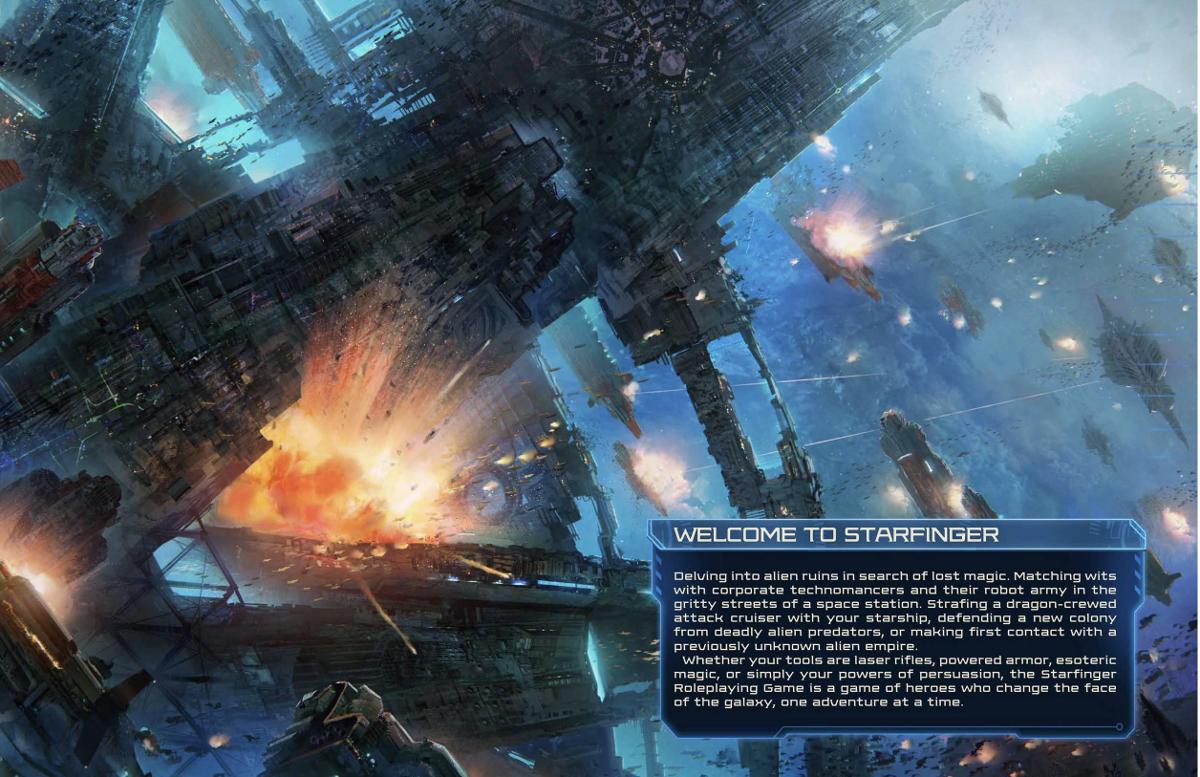
I feel like there's a more interesting story here than the system or the game and more about the marketing itself. I go to the Paizo site to see what's available and nearly every page mentions a subscription. How did Paizo manage to get gamers to abandon the piecemeal supplement model of years past and get them to sign up for games like a magazine - a really expensive magazine, at that? It mirrors the Pre-Order Season Pass Early Access model we've seen hit videogaming around the same time, of effectively buying big blind boxes of content and trusting a company to make it all worthwhile... or for sunk cost fallacies to convince the customer that they're worthwhile.
I think of Erik Mona staring at a keyboard and thinking "What the fuck do I say about A Song of Silver that I haven't said about the last ninety-nine adventures?" I think of a customer going "Well, I could quit, but that'd mean admitting I was wrong about subscribing to the last hundred Adventure Paths, but fuck that. Someday I'll get to run them all, once the Singularity comes!"
And what is Starfinger, other than a new revenue stream, a new subscription path? I look at the author list for this book to see who I need to look up, to find out who's responsible, and there are over twenty authors this time around. RPG by committee, by any measure, and the usual auteur notions of RPGs are nowhere to be found here. This product belongs to nobody but Paizo. An extruded RPG product, if you will. I'm not saying there wasn't passion put into it, or inspiration. You definitely can feel both from the designers when the excitedly talk about it. But a lot of what fuels a product like this is folks like Mona or Stevens seeing folks cancel their $300 minis subscriptions and seeing buyer fatigue set in. Yes, fandom will keep people pitching money in, but only so far. They needed something that seems new and fresh.
Is Starfinger new and fresh? Well, that's about my limit in trying to analyze the business side of things. Let's find out about the rules.
Next: Roll 4d6... in space!
"I mean, if Pathfinder is chocolate chip ice cream then this is chocolate chip mint ice cream."
Original SA post
Starfinger Core Rules Part #02: "I mean, if Pathfinder is chocolate chip ice cream then this is chocolate chip mint ice cream."
(Credit: James Sutter, Starfinger Creative Director, Game Informer interview.)
Time to get right into the toybox.
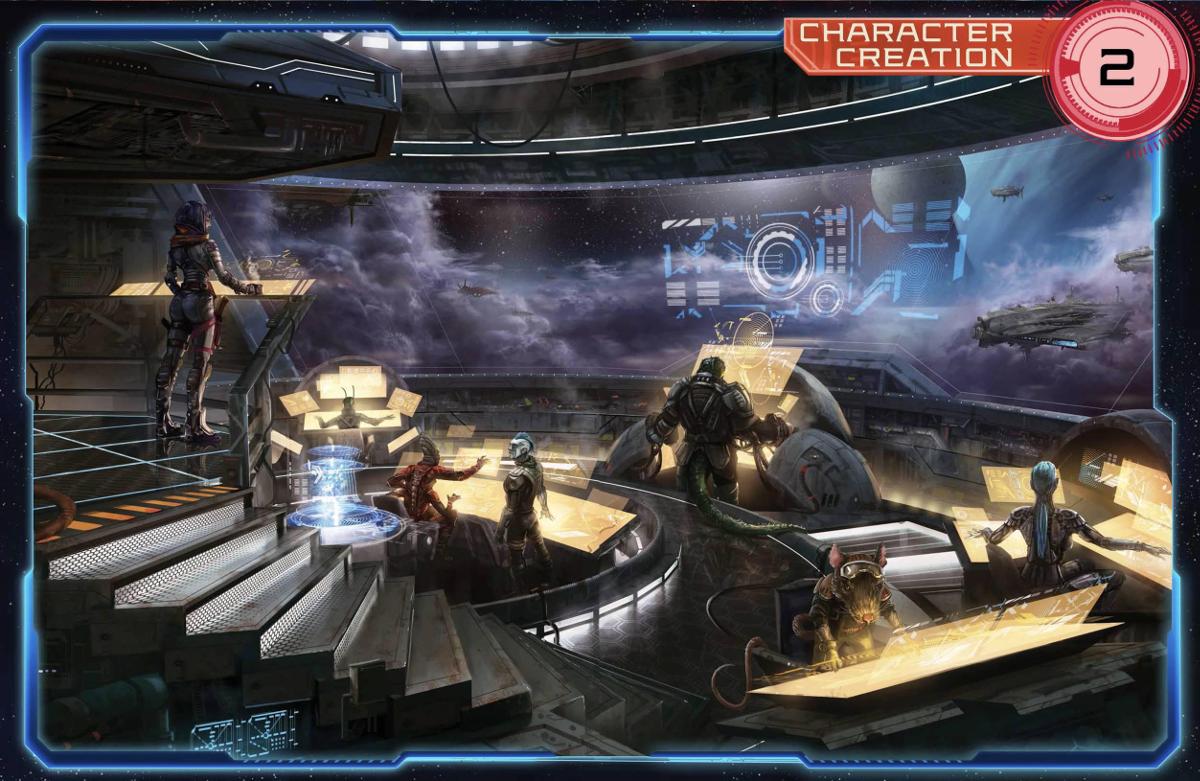
We're told to create a concept. So I'm thinking about a froggy space race pilot, and he like, pilots ships using an interface built off of his arboreal race where there are levers everywhere! He has like four eyes (two on either side of its head) and has an advanced set of spatial awareness since they can see in four directions-
Well, no, we can't do that, at least not yet - there are only very specific character races listed.
 You lied to me, Starfinger. (Marketing'll do that.) Well, here's how it actually breaks down: choose a race package, choose a theme package, choose a class package, work out your ability scores, gain your class benefits, assign skills, choose feats, purchase equipment, choose alignment, and note a bunch of miscellaneous stuff, until you end up with processed character spread. More interestingly, you get a spaceship!... well, your group gets a starship, but we've got seven more chapters to go until we can discuss that part.
You lied to me, Starfinger. (Marketing'll do that.) Well, here's how it actually breaks down: choose a race package, choose a theme package, choose a class package, work out your ability scores, gain your class benefits, assign skills, choose feats, purchase equipment, choose alignment, and note a bunch of miscellaneous stuff, until you end up with processed character spread. More interestingly, you get a spaceship!... well, your group gets a starship, but we've got seven more chapters to go until we can discuss that part.Now, I'm going to assume this isn't your first d20 rodeo. If you need a primer, you can find it elsewhere. Like with my Pathfinder Roleplaying Game review! (Coming soon never: Fatal & Friends Flip-Mats.) Instead, I'm just going to talk about the changes here, mostly, such as:
- A form of point buy is the default. You just start with 10 in all abilities, modify by race and theme, then add 10 more points any which way you like. Abilities can't go over 18, even with racial adjustments. There are also "quick picks" where you have an array and... fuck, they still the option of rolling like it's 1974. Well, at least purchasing is now front and center so it's like they've progressed to at least 1994. You get a bump to four different ability scores every five levels now by +2 if they're 16 or lower, or by +1 if they're 17 or higher. Why not just the more elegant solution of one ability bump per level? Well, given we have three means to generate ability scores, I have a feeling rules elegance is going to be in short order around here. The fact it's every four levels doesn't correspond to otherwise "empty" levels at all, either, so it's not that.
- You have Hit Points and Stamina points and Resolve Points instead of just Hit Points. Stamina Points are your flesh wounds and grazes, where Hit Points are your serious injuries. SP come from your (class SP + Con bonus) and HP come from your (race HP + class HP), and both are multiplied by your class levels. Resolve Points are half of your level (round down, minimum 1) plus your primary ability mod for your class. They can be used to fuel some class abilities or regain all your SP for 1 RP + 10 minutes of rest. They also can be used to stave off death or keep from falling unconscious. A ongoing issue with RP as we go through the book is that they also activate many class abilities (and some feats and spells), making you have to decide between doing cool stuff and having the RP you need to heal or keep from bleeding out. (Also, though it's rarely confusing, having an abbreviation for a stat be the same as the abbreviation of "RolePlay" might be... well, elegance is in short supply, yes.)
- Same alignments as ye olde D&D. Yes, seriously. There's a throwaway note that you can discard alignments if you want. Mostly, it only comes up with some magic is involved. Space magic, I'm sure.
- Feats are at every odd-numbered level instead of every three levels.
- There is the ability to retrain, but it's tied to an expensive piece of one-shot equipment detailed later, because it's not allowed to just happen, Starfinger needs a little more versimilitude.
Themes...
... stink. I hate to jump to being dismissive right off the cuff, but most of these are pretty dull. Back when I did my Pathfinder review, I noted "nickel bonuses" or "dime bonuses", fiddly little bonuses with miniscule impact on gameplay, which mostly just add one more thing to track without significantly impacting gameplay or providing new options. An example would be dwarves getting a +2 bonus on Appraise checks to determine the price of nonmagical goods containing precious metals or gemstones. Or gnomes getting +2 on a single Craft or Profession skill. Well, most themes offer tiny bonuses that are either nickel bonuses or weird situational shit, much like Pathfinder's traits. While Starfinger's traits are more robust than those of its ancestor, they're drip-fed so slowly the difference feels a bit academic.
Most themes offer the following: at 1st level, you get a +1 to an attribute, a reduced DC for checks for knowledge relating to your profession by 5, and +1 to a skill roll or an additional class skill. In addition, they give more stuff at 6th, 12th, and 18th level. The 18th level is almost invariably an additional means to gain 2 extra RP a day under certain circumstances, which is an effect actually legit disappointing to see have locked away only to characters who have almost reached Starfinger's endgame.
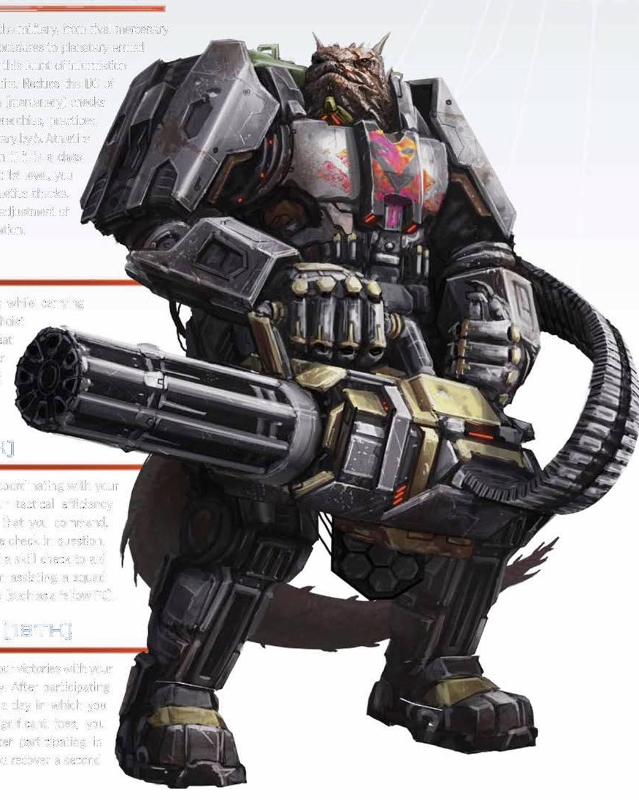
And I could cover every one, but they don't have a major impact worth focusing too deeply on. The Bounty Hunter gives you bonuses to tracking... only while on foot... in a space setting. The Icon has what I presume is a typo because it actually makes you worse at making Profession and Culture skill rolls in some situations. It's also got the awful "Celebrity" bonus where people recognize you more easily and might help you out or not, GM's call. The Mercenary gives you a +1 to Strength when working out your carrying capacity, which will be useful in corner cases. An Outlaw can bribe the authorities to get out of legal trouble at a cost that rises based on their level, so the more competent they are, the more they pay. The fuck?
It's not all bad, an Ace Pilot gets to be a more competent pilot by reducing penalties... at 12th level, anyway. The Scholar can reroll knowledge checks every so often. A Xenoseeker can communicate and get improved impressions against unknown races - sometimes. But like most Pathfinder material, the balance is all over the place. Some are really useful, others are... well, the Icon. Fuck playing an Icon unless you're real tired of introducing yourself or something. Yay, people know who the fuck you are! Does it matter? Who the fuck knows?!
TBH, the Icon's low-level ability is basically a punishment level for their later ability to reduce costs by 10% - which may not seem like a big deal, but... well, you'll see. It's a big deal to Starfinger.
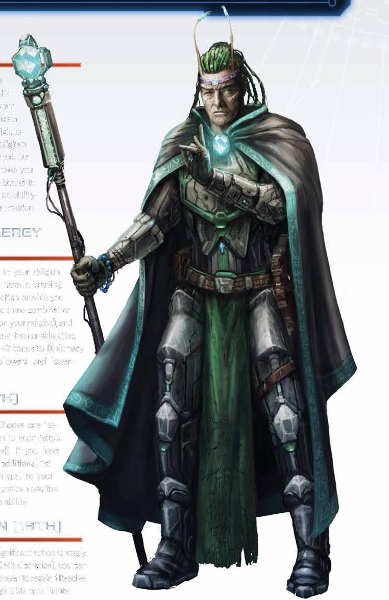
Alternatively, you can tell themes to take a hike and just get a "generic" theme that grants an ability bonus, an extra class skill, and extra skill benefits which will be useful, so there's that. Which is nice, because there aren't that many themes and it's easily possible your concept won't neatly slot into them. Mostly, themes seem extremely conservative by d20 standards, as if thinking granting somebody notable benefits outside of a class structure might shatter balance somehow and bring the whole system crashing down. What's more, they tend to reserve their more interesting benefits for level 12+, at which point characters will be getting far cooler stuff from their classes. There's a definite hesitancy in Starfinger, as if the writers are staring warily at charop boards in remembered trauma.
It's not the best start. But things'll get better before they get worse.
Next: No elves! (Until the appendix.)
"Are you going to care about your brother marrying a man when your sister's marrying a sentient jellyfish?"
Original SA post
Starfinger Core Rules Part #03: "Are you going to care about your brother marrying a man when your sister's marrying a sentient jellyfish?"
(James Sutter, Starfinger Creative Director, Game Informer interview.)
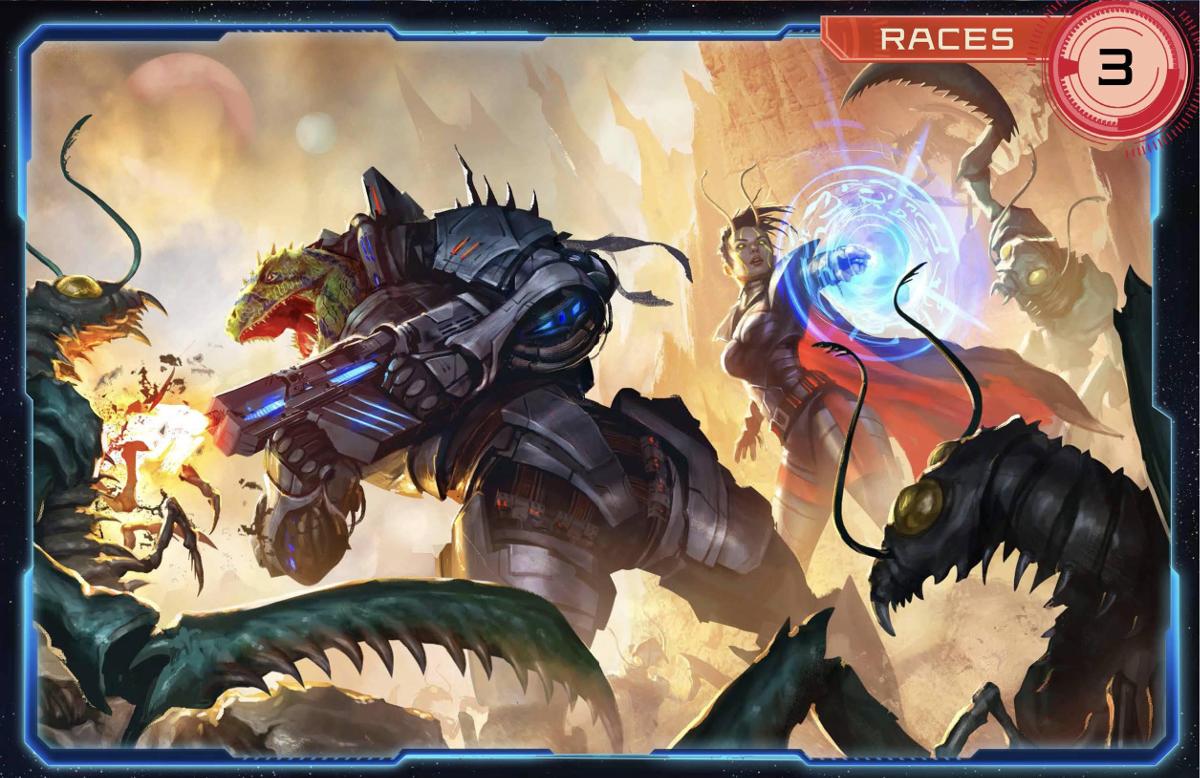
We have are seven core races of the "Pact Worlds" (whatever those are) in Starfinger, but before that, we have languages. So many languages. Everybody speaks... can you guess? Can you guess the language that everybody speaks? Yep, let's give a hand for good ol' Common! The language of the Commonians, I suppose? In any case, you speak your racial tongue if you have one (sorry, humans, you're still indistinct and get nothin') and your planet's language if it has one. And this game has no less than thirty languages, most of them relating either to regional languages we have no frame of reference for or the innummerable racial and planar languages of
Unless you just pick up comprehend languages or tongues because you're a spellcaster. No, translator machines aren't a thing. "But maybe I can use the custom computer creation rules to make a translating compu-" No, that doesn't work either, not an option. Computers can only speak one language at a time, as far as I can tell. Go fuck yourself, C-3P0! Unless you're a wizard C-3P0. Then you can translate as much as you like.
It's a little early for us to be squinting at caster shenanigans, though, and there'll be time enough for that. Instead, let's have some people.
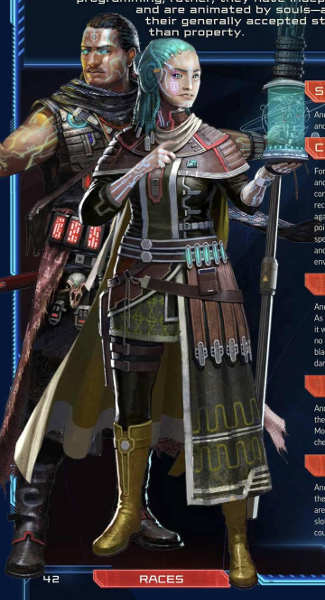
Androids (+2 Dex, +2 Int, -2 Cha)
These are androids modeled after humans, and only humans, so if you want to be an orcdroid, tough luck. Man, just mentioning that is disappointing, isn't it? Their big deals are being able to survive in space, low-light vision, and being able to install an armor upgrade in their bodies (which I presume they still have to pay for). They apparently were made for labor until they revolted and became independent, though sometimes people still make them unscrupulously for slavery. They're kind of impassive but... deep down, even an android can cry.
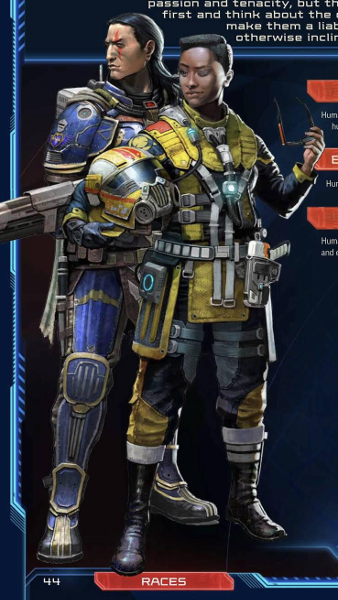
Humans (+2 to one ability)
There are no surprises here. Same as they ever was.
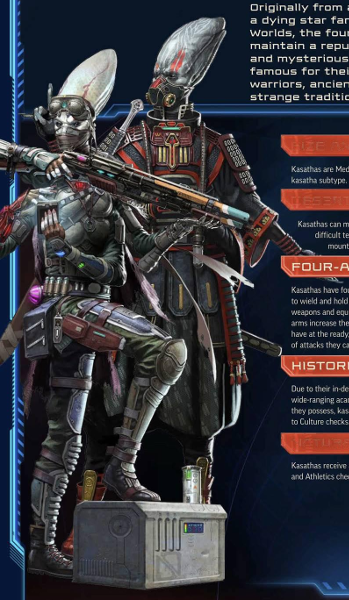
Kasathas (+2 Str, +2 Wis, -2 Int)
Four-armed coneheads, they get to ignore most terrain penalties and get four arms which lets them... hold more stuff. I mean, sure, they get some dime bonuses but who cares? (Not me.) They're from a desert world and apparently were derived from the "plane-hopping witchwyrds". These witchwyrds, whatever they are, told them to go to a planet and they did. Only they found out it had been already settled! Dammit, witchwyrds, check that shit first before you guide an entire race on a wild goose chase! So many of them emigrated around but a lot of them still survive on their giant colony ship. They're matriarchal and nomadic and prefer stabs to shoots. They have mysterious traditions! Traditions that are so mysterious that they aren't really discussed. And that's that!
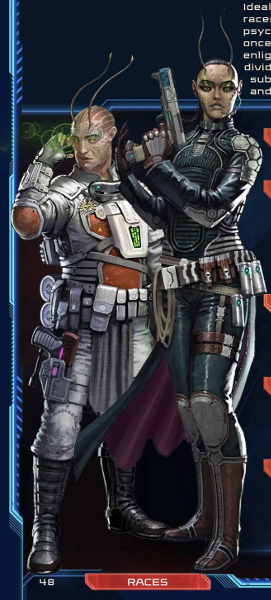
Lashuntas (+2 Cha, +2 Str, -2 Wis or +2 Cha, +2 Int, -2 Con)
These are antennaed psychic sorts, and they get some basic mind reading (once a day), mild teke (whenever), daze (whenever), and limited telechat (whenever). They evolve into one of two subspecies depending on their early experiences, either the buff korasha or the smart damaya. Apparently this used to be a gender thing, but modern lashunta are more progressive and develop means to guide one's evolution towards the role one chooses for oneself. They have "natural pheremones" and "almost perfect physical symmetry" which apparently makes them the hotness of the galaxy but the art is not convincing me. Pink antennae on humans still looks weird to my eyes. (Sorry, Mantis, but it's true.) Otherwise, they're kind of generically enlightened and honorable hippie sorts. If there weren't already space elves, these would be space elves.
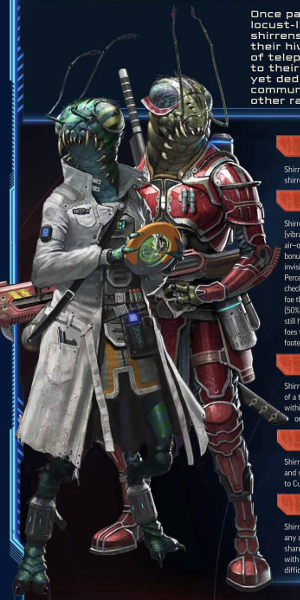
Shirrens (+2 Con, +2 Wis, -2 Cha)
Bug-people that apparently freed themselves from a hive mind called THE SWARM recently. They have blindsense, telechat, and one-a-day reroll when they're near a teammate, and that's most of what defines this race. It's also the first race we see with bonus HP (+2 per level). They have three sexes (female, male, and "hosts" which actually incubate the offspring of the first two), and carry around their baby larva in protective containers. Apparently choice and individuality has a druglike quality for them, and they're generally friendly since they fall back on old hivelike cooperation.
Probably the most interesting sorts I've seen so far.
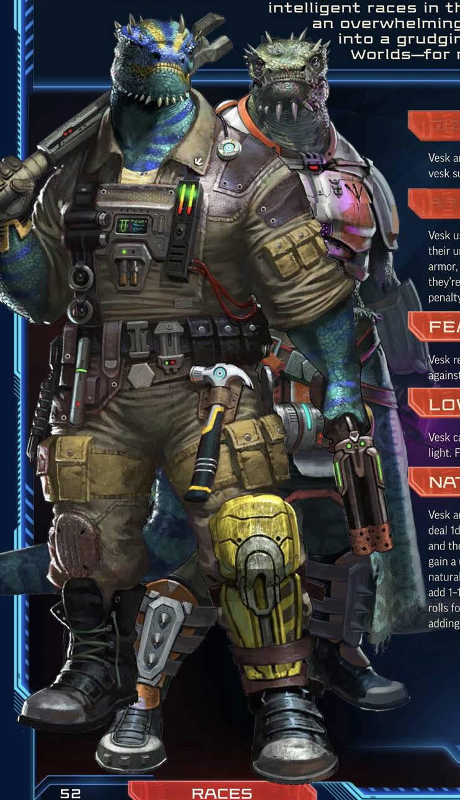
Vesk (+2 Str, +2 Con, -2 Int)
Big lizard guys, which is of questionable benefit in a setting where people get lasers. They get nightvision and a bunch of garbage bonuses - a nickel armor bonus, a dime fear bonus, and a 1d3 lethal damage claw, be still, my heart. Well, they get an HP bonus, too They're organized and militaristic and aggressive but honorable... okay, they're lizard Klingons. I can just leave it at that, these guys are painfully generic. I like the visual design, but their personality is [insert warlike race here]. They're the kind of race that stole space travel just to make war on other races. But they've chilled out a bit since then.
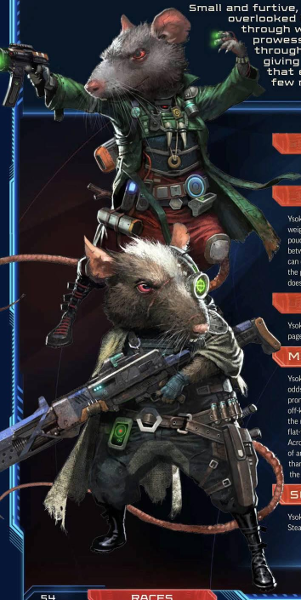
Ysoki (+2 Dex, +2 Int, -2 Str)
The only "small" race we get, these rat-guys get... uh... cheek pouches. Seriously, one of their racial benefits is shoving shit in their mouth, and the designers think having a gun in your cheek is pretty rad. Hm. They also get darkvision, stand up really fast, ignore penalties for zero gravity, and get bonuses to run past people. They're kind of ubiquitous and do shitty jobs because they have blue-collar pride, apparently. Scrappy and energetic, they pretty much embody a generic but positive stereotype of rats. Or maybe raccoons? Wait, why did I just think of raccoons? Well, it can't be too important. Also, they love nicknames, like Blackjack. Or Sale. Or Rocket.
Oh, and it's all the way in the back of the book, but we still have dwarves, elves, half-elves, half-orcs, and halflings. There aren't vast changes to them save for their opinions on space (they're in it) and halflings are annoying "where are they?!" snipers now. Most of their statblocks have been adjusted but largely just to adapt them slightly to the new rules. It's all pretty much as you'd expect - dwarves like making shit, drow are still evil, halflings are now a bit redundant with ysoki around, etc. I might cover them a bit more when we get to their section, but for now you can sleep easy knowing that Paizo hasn't taken your elves away. There, there. It's okay. The elves are still there. The elves are still there.
Next: Space Bards and Mecha Rangers.
"People want to be that raccoon!"
Original SA post
Starfinger Core Rules Part #04: "People want to be that raccoon!"
(Credit: James Sutter, Starfinger Creative Director, Game Informer interview.)
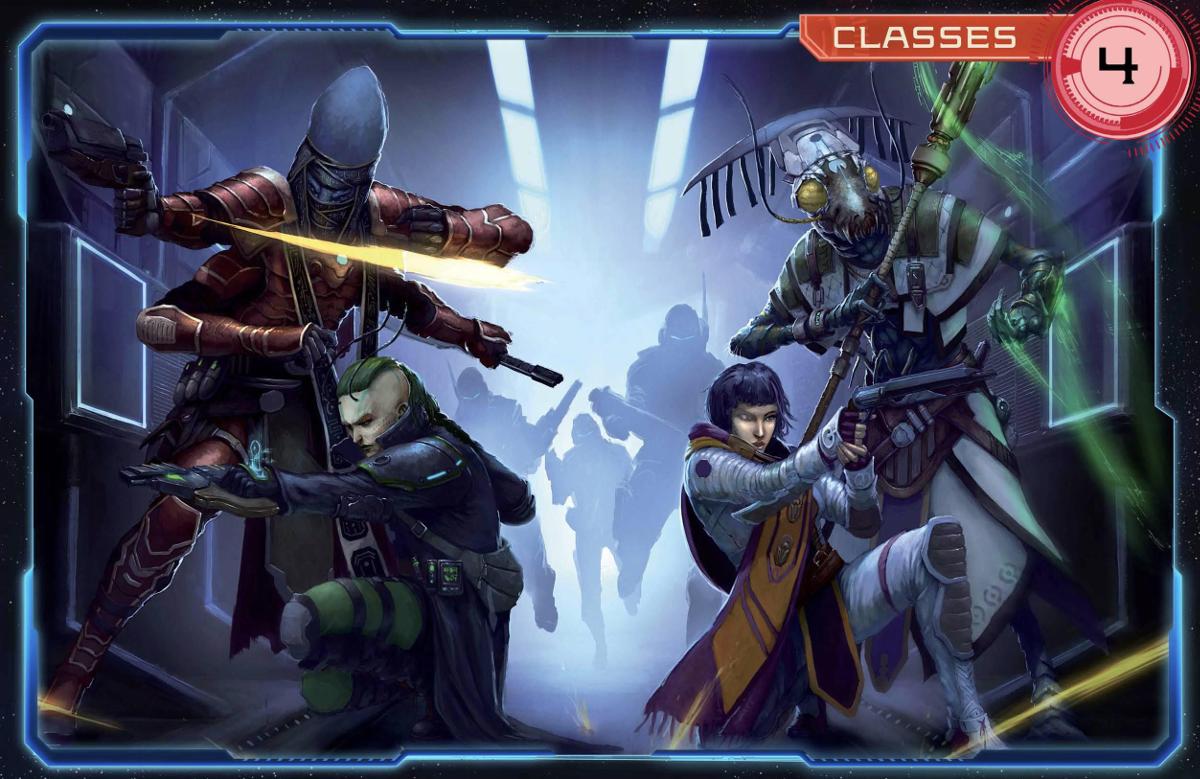
Time for Envoys, for those who want to explore the puddle-deep social mechanics of Starfinger, and Mechanics, for those who want a R2 to pal around with.
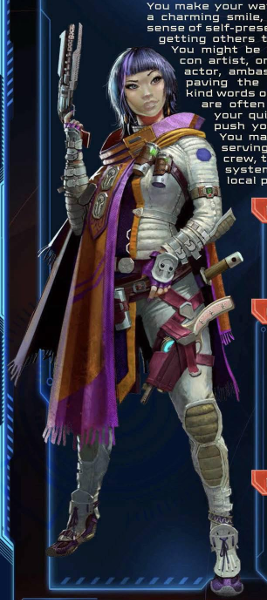
Envoys
Did you know asian women have naturally dyed hair? It's true!
(Honestly, it's good to see the general diversity of the humans in this game, but... there's a spunky stereotype stumble here. Also, her dyed streak keeps switching sides.)
That aside, this is mostly a mix of social and skill monkey, Envoys are Starfinger's attempt to do a socially-oriented class, even moreso than Bards. They get an "Expertise" bonus on Sense Motive checks (that for some reason is a 1d6 or a 1d8 + a number depending on your level) that later they can apply as a limited bonus to their other skill checks they've taken (mild punishment feat) Skill Focus for. Their big class thing is that they get an "Improvisation", which are various social and attack tricks they get every 2 levels. Of course, some are listed as language-dependent or mind-affecting, so they might not work on, say, aliens that don't share your language or a robot... unless you spend the Improv tax to overcome those with specific Improvisations. Often you can spend a Resolve point to get a bonus with these or to turn a failure into a success. Sample ones include:
- Clever Feint: Feint at a range if they can sense you, and your feint benefits your allies as well as yourself. Resolve Point lets you turn a failure into a success.
- Don't Quit: This lets you supress one status effect on an ally for a single turnbat the cost of a standard action. You don't get to actually remove anything until 12th level - by spending a Resolve Point, but only if it doesn't have permanent duration! If there were any more catches to this, it'd be a baseball game.
- Not in the Face: Give a penalty to hitting your if the opponent fails a Will save. Not the best, but you can spend a Resolve Point to make it automatic.
- Duck Under: If you make a Full Defense and if they miss you with a melee attack, you get a big bonus to hit them in the following round.
- Hurry: Spend a standard action to grant an ally a move action.
- Draw Fire: Spend an RP to make all enemies get a penalty to ranged attacks within 100 feet unless they target you.
- Expert Attack: Spend 2RP to add your expertise bonus to an attack. Seriously? That's all? Well, at least you won't have this option until 8th level...
- Sustained Determination: Spend 2 RP to grant an ally 1 RP that they have to spend within 1 turn or lose it... and you can only do this once per ally until you've both gone through a rest period. Yeesh!
They also get Expertise Talents every 3 levels, and talents are like feats except... they're class-bound. Examples include:
- Altered Bearing: Do very minor disguises as a move action.
- Cultural Savant: Take 20 on Culture checks to recall knowledge even if you don't have access to a computer or research material.
- Menacing Gaze: Use Intimidate against a group to demoralize, but it only lasts 1 round no matter what you roll. Mentioning this because you specifically can't use this kind of talent with Intimidation-boosting Improvisations, because that would be too powerful...?
- Surgeon: Let's you treat deadly wounds an extra time a day... at a +5 to difficulty and an hour to do so.
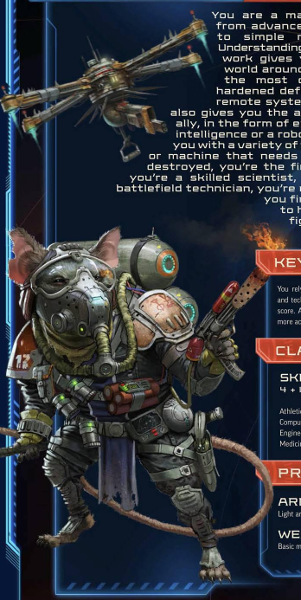
Mechanic
So, these are the gear monkeys of the game, but only get a 4 + Int skill bonus. Well, who needs skills, anyway?... oh, right. These guys. Well, at least it suggests you specialize in Intelligence. They basically get a choice at first level with their "AI" ability: Drone or Exocortex. A Drone is a buff familiar that acts as a secondary character, while an Exocortex is an implanted cyberbrain that gives you direct boosts. They also get a variety of benefits on Computers and Engineering checks, as well as a more powerful toolkit. As they level up, can attempt to shut down electronic devices as a standard action (for 1 round only), hack at range, buff armor or weapons temporarily, heal ships, stun robots, various hacking bonuses, etc.
Their big thing is Mechanic tricks, which make up a lot of their choices for class abilities .Examples include:
- Energy Shield: Get a modest bonus to Hit Points for a minute, and then this can't be used for another ten minutes. Oh, you haven't run out of Stamina Points? Well, this doesn't matter until that happens. That's a theme you'll see with a lot of force fields - they're just not very good unless you've already been battered about.
- Neural Shunt: Ignore a mind-affecting effect, but you have to shut down your exocortex for as long as that effect lasts.
- Nightvision Processor: Darkvision doesn't seem like much to get out of a full mechanic trick, especially when you need the Perception-boosting tax trick of Visual Data Processor first. After all, you can buy nightvision goggles, right? Nope. Those don't exist in Starfinger, if you want a Darkvision, you get through cybereyes, racial benefits, or a class bonus like this one. (There are flashlights you can buy, thankfully.)
- Overcharge: Do 1d6 extra damage with an energy weapon, but use up three shots instead of one. If the weapon doesn't have an ammo limit, this has no effect.
- Quick Repair: Repair a thing in half the time.
- Drone Meld: Lets your drone turn into a suit that you wear and get a benefit depending on your drone type. Pretty cool!... but it takes a full-round action to suit up or suit down, so not as useful in a fight.
- Holographic Projector: Lets you make a image as per the spell as a standard action.
- Mod Tinkerer: Lets you swap around all your mods on a drone or exocortex with 24 hours of uninterrupted work. Better stock up on energy drinks, I guess.
- Ultraclocking: Grant haste to your drone for 1 minute as a move action, only usable once between 10-minute rests. The top of the Overlocking > Hyperclocking chain.
Drones come in three types: combat, hover, or stealth. If it gets wrecked, you can take a full 24 straight hours to rebuild it. You can also swap out the type or benefits whenever you gain a level with another 24 hours of work. Drones only get to move or do a standard action on their turn, but not both unless you spend a move action to directly control them (this is the only way they can do swift or full actions). The combat one is best suited to melee and takes less damage, the hover one can fly, but is weak, and the sneaky one gets fancy reactive camouflage. Otherwise, they're full characters, and can choose their own feats, level up ability scores, etc., through on a reduced schedule and more limited selection. They also get mods, which serve as their variable benefits, like:
- Camera: Yes, you need a full mod slot to have a remote camera on your drone.
- Hardened AI: Bonuses against getting hacked and spells that might control it.
- Manipulator Arms: Yes. Arms are extra, too.
- Riding Saddle: Yes, this takes a full slot. Granted, since most races are medium and only combat drones are medium, this is mostly only combat drones (though I guess a Ysoki could ride a stealth drone, completely negating its primary function - "Why is that Ysoki sitting in midair?"
- Energy Shield: Actually pretty useful, unlike the Mechanic trick, since drones don't get SP, only HP... but you have to be 11th level or higher to get it.
- Flight System: Your drone can fly!... for 10 minutes a day... that must be used in 1-minute increments. I guess this space society hasn't worked out how to make things fly longer than that. The hover robots get this for free, but with the same limitation. I understand flight is strong, but this isn't Pathfinder, anybody can buy a flying car as it is.
- Medical Subroutine: If you get knocked unconscious, your drone can apply first aid!... but it requires 2 of your RP to actually get you back up with some HP. Oh, you thought the drone might be able to use its own RP to do that, since it does get some? Nope.
- Shock Wave: If your drone is knocked below 10 HP, it shuts down and does 1d6 x level damage to everything around it. Yes, that includes you if you happen to be near your own drone.
An Exocortex, on the other hand, makes you into more of a straightforward fighter, letting you spend a move action to increase your attack bonus to equal your level against a single target. As you level up, you also get bonuses with skills, hack autonomously at a short distance), give yourself some basic drone mods at higher levels. In general, the Exocortex seems more utilitarian unless you really want the multiple attacks and bilocation having the drone grants, though your overall combat bonuses of the drone mechanic are lower over time.
In general the Mechanic seems like a decent class, as long as you can dodge the trap options that will rarely come up. Their skills are limited, though, presumably because they're positioned as a fighter-type, and Starfinger positions classes on the "useful in combat vs. non-combat" as a measure of balance. That's not a design notion I'm thrilled with, and it also means the Envoy or Operative can actually have a higher skill bonus at Engineering or Computers... though the Engineer has more they can potentially do with those skills, at least.
Oh, and these guys are loosely like rangers, given the focus on a companion and being a secondary combat class with environmental tricks.
Next: Unpriests and Star Scoundrels.
"So I wrote up a rules treatment for [druids] - as a specialization within the Mystic class - and presented them to the team, who went: 'Meh.'"
Original SA post
Starfinger Core Rules Part #05: "So I wrote up a rules treatment for [druids] - as a specialization within the Mystic class - and presented them to the team, who went: 'Meh.'"
James Sutter, Starfinger Creative Director, Black Gate interview posted:
At which point I think I shut the door and said something like "Then none us are leaving here until we make it cool!"
Time for the Mystic, aka "somebody better fucking play one of these" because an erzatz Cleric is still a Cleric, and the Operative, the Swiss Army knife of sneaking skills.
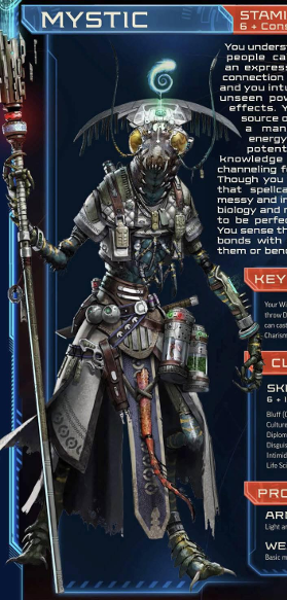
Mystic
This is our first spellcasting class, the equivalent of a Cleric or Druid, with spells being based on Wisdom. They also have a lot of psychic flavor, though. Unlike Pathfinder, they only get spells that go from levels 0 to 6 instead of 0 to 9, and it's interesting to see the game try and curb spellcasters somewhat. As they level up and get more spells, they can discard one old spell afor a new spell... of the same level. As a full action, they can basically read magic, because it sucked having to use up a spell slot on that one. In addition, they can heal HP on some once per day by taking 10 minutes to do so, so combat healing isn't a given anymore. However, most Mystics will be taking the mystic cure spell - perhaps the most reliable way to heal HP, making them as essential as Clerics ever were. As they level up, they can talk telepathically and... well, stuff at top level I'm not going to cover because who gets to 19th level before a game ends, anyway? Mostly, they gain spells. We're told the arcane / divine division doesn't exist anymore, but Mystics are functionally indistinguishable from the general concept of a divine casting class, save for the aforementioned psychic flavor - so they get some mind-affecting spells in place of the broader "everybody gets bonuses" sorts of spells, which the Envoy fills in for.
It's worth noting that they don't have to prepare spells, they can just cast anything they know as long as they have a slot to cast it with. Everybody is like sorcerers, more or less.
In addition to spellcasting, they get a "Connection" where they choose a
- Akashic: Knowledge stuff. Lets you boost skills, see the future, read minds, etc. Gives mostly divination spells.
- Empath: Reading brains and ESP stuff. Lets you sense emotions, mindlink, tell lies, etc. Mostly just ESP and mind-reading spells. Man, who needs Envoys when you can have one of these around...? Fucking seriously, Starfinger? They're right there and Sense Motive is their thing. Well, who needs skills when you can just get root access on a failed save?
- Healer: Fairly self-explanatory. Lets you heal people in combat by spending RP, take on their damage, sense others' conditions, vampire-drain people's lifeforce by spending RP, etc. Spells mostly center around removing conditions and afflictions.
- Mindbreaker: Psychic attacks, mainly. Lets you spend RP to hurt people (no save) when they hurt you, damage people when they save against your spells, inflict conditions by spending RP, nauseate people, etc. They get a number of mental attacks and conditions for their spells. Very much the "fuck you for overcoming my weaknesses as a spellcaster" Connection by letting you screw over anybody that picks on you. Oh, and "Explode Head" if you make it to 19th level that'll insta-kill a foe with 20 HP or less for an RP.
- Overlord: The flipside of "who needs an Envoy, again?", letting you control people directly. "Oh," you may guess, "at least the Envoy is subtle and isn't likely to cause as much backlash when people are influenced by skills instead of spells?" Well, no, the 1st-level ability of the Overlord means that people forget that they were magically controlled, no save (they remember what they did, but not the control). Other than that, you can make people become friendly, grant penalties even if they save against your spells, make monsters more friendly, etc.
- Star Shaman: Spooky space stuff. Become immune to vacuum, fly in space, glow in a blinding sense, reroll rolls sometimes (because... astrology... or something...), etc. You get a variety of spells from
shoot magic missilesshooting stars to darkvision to making people radioactive or not.
- Xenodruid: You're a druid!... only more... xeno? You can talk with animals, spend RP to entangle people in plants (whether or not there are plants, so it works on the surface of a spaceship), gain modest shapeshifting benefits, gain energy resistance (of any type you like, fuck Energy Shields). Your spells revolve around helping people survive stuff and random nature shit including reincarnate because why not? Yes, that spell is still in Starfinger, because who doesn't want to become a random gnome? Maybe you can work in some Star Trek III references.
Uuugh. Anyway, so, yeah, Starfinger is still Pathfinder, only less so. There are also a lot of healing effects only the Mystic gets convenient access to. If your character gets the space plague, loses an arm, or gets chopped in half and thrown down a shaft, you're gonna need a Mystic, pay for a Mystic's services, or... suffer. Suffer a lot. But we'll get to that much later.
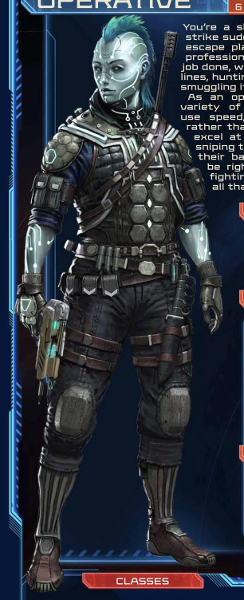
Operative
These are the puckish rogues.
This time around, they get an bonus with initiative and skill checks, and choose a Specialization. Each Specialization gives specialty skills and a specific Exploit (this class' flavor of special benefits). They also each get a special power... at 11th level, so I'm not going to worry about covering all of those those. They are: Daredevil, Detective, Explorer, Ghost, Hacker, Spy, or Thief. About the most interesting 11th level power is that of the Thief, which lets you declare a backup plan during a heist to get a single benefit like a specific piece of gear you need or an ally that shows up in the nick of time.... but then it requires a skill roll with skill declared by the GM and a DC adeclared by the GM, and if you fail the roll you just say bye-bye to the RP spent. Pretty neat, but it has to come with a gamble because this is Starfinger, buckos.
They also get their choice of Exploits every even level. I'll focus mainly on the ones you'll see based on Specialization:
- Cloaking Field: You can become invisible for 10 rounds; attacking reveals your position but you can hide again the next round. It recharges 1 round per minute.
- Glimpse the Truth: Get true seeing by spending 1 RP.
- Elusive Hacker: If your hacking attempt would set off a countermeasure, there's a flat 50% chance it doesn't.
- Ever Vigilant: You can make Perception checks while asleep or always act during a surprise round, but you always go no sooner than second during the latter.
- Holographic Distraction: You can psychically or technologically made a duplicate of yourself that runs off in a different direction, but people can Will save against it. Requires the "Holographic Clone" Exploit despite the fact that this ability is gained by the the Thief for free without it. Whoops.
- Master of Disguise: You can disguise yourself as a standard action with bonuses, which lasts up to (10 minutes x level), after which your disguise apparently bubbles and sloughs off like Darkman. It was a movie? The one with the guy with the melting disguises? We were desperate for superhero movies enough back then to watch an off-brand version of The Question, sad to say. If you disguise as a single person, it lasts a number of minutes equal to your level. Is this... really... a Master of Disguise?
Versatile Movement: You can climb or swim equal to your land speed. Does not synergize with any extra movement abilities... like the one this class gets.
- Field Treatment: Spend an RP to gain back HP, if you have a literal minute.
- Inoculation: You get a bonus against poisons and disease! Just what every miscellaneous stack of abilities needs, so you can be like "I hope this comes up!... or maybe not...?"
- Nightvision: Because in the far future, you have to spend ability slots to see in the dark.
- Uncanny Pilot: Halves penalties to attack while in a vehicle and gets bonuses to certain piloting actions.
Next: Indecisive Jedi and Shooter Guys.
"Dwarf Solarian. His name is Wrothor Ironstar."
Original SA post
Starfinger Core Rules Part #06: "Dwarf Solarian. His name is Wrothor Ironstar."
(Credit: Owen K.C. Stephens, Starfinger Design Lead, Diamond Bookshelf interview.)
This time, we have the Solarian, the attempt to make a monk that isn't a lotus flower filled with a curly turd, and the Soldier, who fights.
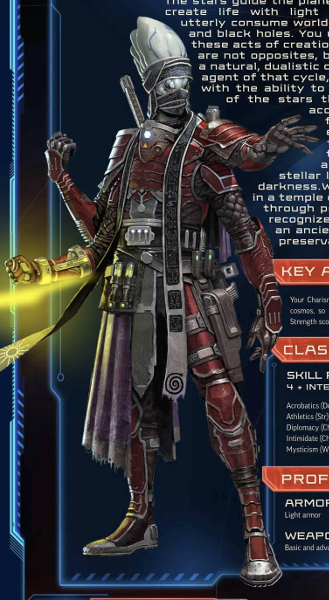
Solarian
Starfinger Core Rules posted:
The stars guide the planets with gravity, create life with light and heat, and utterly consume worlds in supernovas and black holes. You understand that these acts of creation and destruction are not opposites, but rather two parts of a natural, dualistic cycle. You seek to be an agents of that cycle, and enlightened warrior witht he ability to manipulate the forces of the starts themselves. Constantly accompanied by a mote of fundamental energy or entropy, you can shape this essence in combat to create weapons and armor of gleaming stellar light or pure, devouring darkness.
Yes, because you understand stars real well, you can make magic swords representing, if you will, the light side of stellar bodies and, if I may, their dark side. This is Starfinger's most original class, I have to say, a wholly new concept with no previous precedent in pop culture.
Unlike other magic-themed classes, this is a fighting class, and you can tell because it gets 1 more HP and SP a level than any other class we've seen so far. They can generate a solar armor or a solar weapon. Solar armor, being a cosmic expression of pure might, gives you... +1 to AC. But hey, at 10th level, it's... +2. Starfinger! But at every 5th level, you get Energy Resistance +5 to fire or cold, and can switch it at will. Do other Solarians do fire or cold damage? Oh, lordy no. Solar weapons do 1d6 + Str, 2d6 at 6th level, and +1d6 per 3 levels after that. Weapon crystals are a type of equipment you can get if you want to do more damage, to focus your light weapon in various ways. Clever, I wonder how they came up with that idea? As they level up, they can do faster attack flurries, like Monks.
They can also go into "Graviton Mode" where they get a bonus to reflex saves and gain gravity attunement points, and "Photon Mode" where they add to damage and get photon attunement points, representing the darkness of a black hole and the light of a star, respectively. This novel duality is something they can switch at the start of a turn, though if they have points from either they have to go into an "unattuned" mode for a turn to dump their existing points before switching modes. They can also, as they level up, use these modes outside of combat for bonuses on certain skills, Graviton lets you be sneaky and insightful and Photon lets you be social and in touch with life. They get "Revelations" which are abilities they can only use by powering up these dark and light- er, Graviton and Photon meters.
Examples include, as their level increases:
- Black Hole (graviton): You can pull others a distance closer within a short range, as if by force. No save.
- Flare (photon): Create light, and blind somebody for one round unless they save.
- Gravity Boost (graviton): Let's you leap and climb and swim around better. Yes, the power of the black hole helps you swim! Because gravity.
- Plasma Sheath (photon): Lets you deal fire damage with your light sword. Better hope your Solarian rival didn't pick that. Wait, of course they did! Solarians have no ability to deal cold damage.
- Astrologic Sense (photon): Lets you see the future, because "you can sense the movement of all objects influencing you". Astrology was real all along. Sorry, science.
- Crush (gravition): Lets you crush the internal organs or workings of a target, like, say, their throat. Staggers people for a round and you can maintain it as a move action as long as they keep failing their save. An RP can also let you stun people.
- Gravity Surge (graviton): Lets you disarm or trip at a range, as if by telekinesis. Or pull your weapon from them when you're fully powered up with that disarm.
- Hypnotic Glow (photon): Lets you charm people and make them your friend briefly, with the power of... starlight? Twinkle, twinkle.
I get it now! These guys are kind of like Monks... but aren't they just Solar and Abyssal exalted from Exalted? I figured you out, Starfinger!
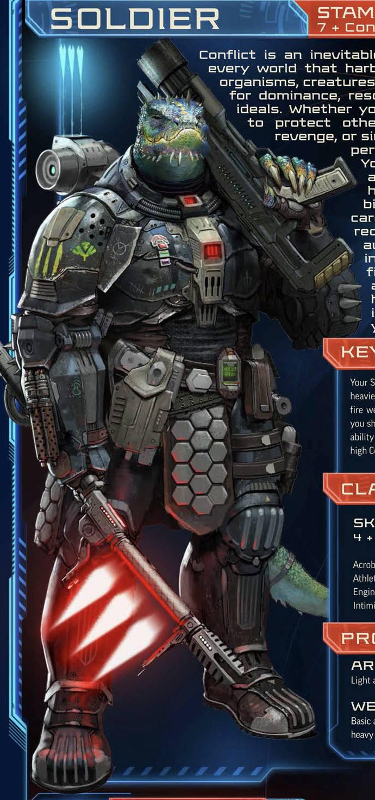
Soldier
Fighters. +1 HP and SP per level tells us that. So, they get bonus feats like Fighters every two levels (meaning they basically get a feat every level with the increased basic feat rate). They also have bonus attacks at high level, and have to choose a "Primary Fighting Style" (you get a second one at 9th level). The styles are:
- Arcane Assailant: You're a wizard, but only where stabbing is concerned. You can make your weapon magical (for ghoststabs), and as you level up you can add elemental damage to your weapon or spend RP to cancel some conditions.
- Armor Storm: This focuses on putting on armor and getting ready for some football (in space). You get to punch extra hard when in heavy or powered armor, and as you level up you get proficiency with powered armor for free, can buy an extra upgrade for your armor beyond its normal limitations (because sponsors, it says), and can damage targets if you bull rush them good enough.
- Blitz: This boosts your speed and initiative. As you level up, you can make charge attacks without penalties and regain SP by spending RP, which is useful because you just charge headlong into fights all the time, you Scrappy-Doo.
- Bombard: The sane bomber sort of soldier. You can throw grenades further and can automatically create a free grenade by taking 10 minutes, but only one extra grenade at a time and if anybody else tries to throw it, it becomes a dud.
 Oookay. As you level up, you can add yout Strength bonus to ranged attacks (as a full action, because fuuuck soldiers), or inflict conditions along with your attacks by spending an RP.
Oookay. As you level up, you can add yout Strength bonus to ranged attacks (as a full action, because fuuuck soldiers), or inflict conditions along with your attacks by spending an RP.
- Guard: This is the bodyguard soldier. You reduce penalties from armor, level up to powered armor proficiency, get the ability to intercede to take half of somebody's damage, and spend RP to temporarily surpress conditions for 10 minutes. (This game really likes puts a price on straight-up ending conditions, presumably because it likes inflicting the extra busywork of tracking sur=pressed conditions?)
- Hit-and-Run: The not-running-away-but-tactically-withdrawing sort of soldier. They get Opening Volley (gives a bonus on a melee attack in round two of combat if you shoot them with a ranged on round one, nothing if you miss or don't damage) as a bonus feat. After that as they level onward, they can make half their speed before or after a full attack, and spend an RP to ignore attacks of opportunity from movement or a ranged attack (each time, so if you trigger multiple ones, spend multiple times, so enjoy that as you get your bonus attacks).
- Sharpshoot: Sniper, minus keeping your piss in jars. This lets you reduce cover penalties against enemies, unless it's total cover (because that would be too powerful... for a non-spellcaster). As your level goes up, you get reduced penalities when making multiple ranged attacks agains the same creature, or spend an RP to negate cover and reduce concealment when making a shot (unless it's total cover, because of course).
- Armored Advantage: +1 to Kinetic Armor Class. So, not energy. Yep. An extra 5% defense that only works about half the time takes a whole slot.
- Bullet Barrage: +1 to +5 damage with projectile damage depending on level.
- Flash Freeze: Reduces the movement of somebody you hit with a cryo weapon (not just cold damage, but specifically one of those). There are a number of these specialty weapon boosts for elemental damage.
- Laser Accuracy: +1 to hit with laser weapons. That's all. +1. With lasers only. Yayyy.
Next: "Do you believe in such a thing as magic?"
"But, why do you want to become a wizard and devote years of your life to learning a light spell when you can just buy a flashlight?"
Original SA post
Starfinger Core Rules Part #07: "But, why do you want to become a wizard and devote years of your life to learning a light spell when you can just buy a flashlight?"
(James Sutter, Starfinger Creative Director, Game Informer interview.)
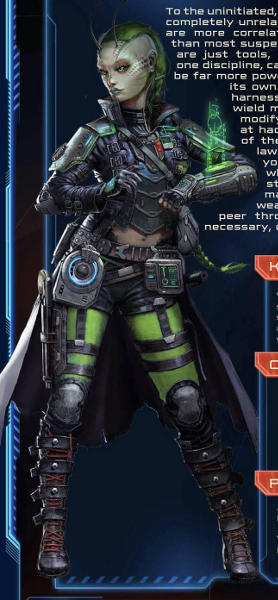
Technomancer
Oh, like on Babylon 5...? Wait, I already linked that. How about "Once you become a Technomancer, there's no going back." That'll do for my requisite vapid reference.
So these are wizards with a vague technology theme, based on Intelligence. (You can tell they're wizards because they have 1 less SP and HP per level than other classes.) Spellcasting is their chief thing, and like Mystics, they can swap spells as they level up. They get a special device they lets them cast an additional spell per day of any level they can cast, and as they level up, they get Spell Focus, a bonus on Computers and Mysticism rolls, or be able to have the following spells up for 24 hours (but only one at a time): detect radiation, disguise self, keen senses, or unseen servant. Once again like Mystics, they don't have to prepare spells, they can just cast anything they know as long as they have a slot to cast it with. Though we're told that the arcane / divine divide between spell types doesn't exist, but these are pretty clearly modeled after arcane casters.
They also get "Magic Hacks" every 2 levels, such as:
- Countertech: Expend spell slots to halve damage to you from technological weapons with a successful caster level check.
- Energize Spell: You can now get an extra spell slot by eating a battery once a day. Yes, this gives you another top-level spell slot, effectively.
- Harmful Spells: Extra damage to your damaging spells. Cost? There's no cost, you're a wizard!
- Magic Negation: Spend an RP to negate a spell or magic item for 1d4 rounds... unless the caster level or spell level is greater than yours... and if it's affecting a creature, they get a save.
- Spell Grenade: Spend an RP to put a spell in a grenade for 1 round, which then affects 1 target in its blast radius of your choice with a touch spell.
- Diviner's Tap: On a successful Computer check, you can monitor a device's activity for (days = level).
- Mental Mark: If an enemy fails a will save agains your spell, it takes a penalty to all saving throws for a round... or if you succeed, it takes a miniscule penalty. Yes, this means you can snowball spells at a big foe more easily this way.
- Spellshot: Cast an area spell through a weapon, so you can snipe people with area effects beyond your normal range.
- Seeking Shot: I'm just mentioning this because you can spend an RP to ignore total cover. Sorry, sharpshooting Soldiers, Technomancers can snipe what you can't. Oh, there's Phase Shot that ignores all cover and concealment, too...
Wizards! Starfinger still loves 'em impiously.
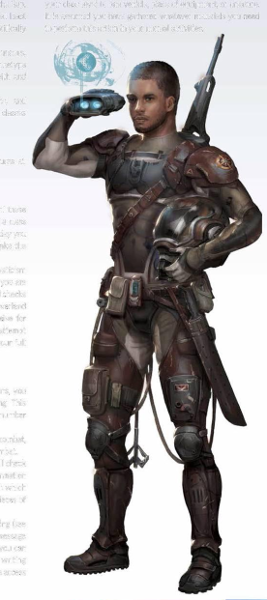
Archetypes
So, you may think, now that the classes are more flexible, there's less of a need for variants. I mean, you have the Operative with its varying Specializations, Soldiers have their Fighting Styles, and each class has a set of abilities it can use to vary its arsenal. Feats are a lot more available than they were before. So there'd be less of a need for class archetypes, alternate classes, or prestige classes, right?
Pfffft. Starfinger knows better. It knows players want the allure of being the special snowflake, of having endless options even if a given choice will only see use in a tiny fraction of the games out there. (Marketing is like that.) So it's time for archetypes, which are variant class features that you can take as soon as their first class feature is available, and replace existing class features to modify your existing class. So if Foozle Fluffer gets its first feature at 3rd level, you can become a Foozle Fluffer at 3rd level. For those familiar with class archetypes from Pathfinder, they're similar to those, but not longer tied to class... which at least is nice in that you don't have to have a specific build to take one, but also have the related issue that they may or may not synergize with your class of choice. You can only have one per class you have, since it modifies a given class you're taking, and you can't double up on the same archetype for multiple classes. Generally speaking, they eat up the varying abilities each class chooses (Mechanic Tricks, Gear Boosts, etc.), though some classes have special considerations and there's a full page of those. We get two Archetypes in this book:
Phrenic Adept
This is the Archetype you take if you want to be a psychic!... but don't want to go full Mystic for whatever reason. You get telepathic chat (or more range if you already have it) and some extra languages. As you level up, you can spend RP to reroll a save against mental effects, reduce the damage and duration of mental effects against you, spend 1 RP to sense mental magic effects and gain blindsense, and then start gaining spells like charm monsters, clairaudience/clairvoyance (couldn't just name it "ESP", could you), and psychokinetic strangulation (like a baby Vader). It's kind of neat but doesn't let you do much overt until you're in mid-levels without dumping feat slots into the Minor Psychic Power feat, and doesn't really synergize with most class abilities - being a half-assed caster is rarely worth it to begin with, and this is more like a... quarter-assed caster. Not nearly enough ass.
Starfinger Forerunner
You're a member of the Starfinger Society, but we've got over 300 pages before we find out more about them. They're apparently into exploring and fingering all those stars. You don't have to take this to be part of the Starfingers, though, it's only for the more dedicated members. They get a shit-ton of tiny bonuses, like getting Culture and Survival as class skills, rerolls with those skills, identifying creatures even if the skill required isn't one they have (it doesn't give you the bonus you need to succeed, only the chance), make Survival checks to get food or endure weather without slowing their overland travel, initiative bonuses, extra information when identifying creatures, never misidentify strange writing (though they can still fail to read it), can always take 20 to identify alien writing, and spend RP to heal their allies' SP by a small amount or take time to automatically repair some HP to a vehicle. Modestly useful stuff if you're the kind of archaeologist archetype, but it's gonna hurt your ability to do anything fighty.
Next: Why learning a profession is just holding you back.
"Everybody on the Serenity has something to do on Firefly. Everybody on Star Trek has a job."
Original SA post
Starfinger Core Rules Part #08: "Everybody on the Serenity has something to do on Firefly. Everybody on Star Trek has a job."
(James Sutter, Starfinger Creative Director, Game Informer interview.)
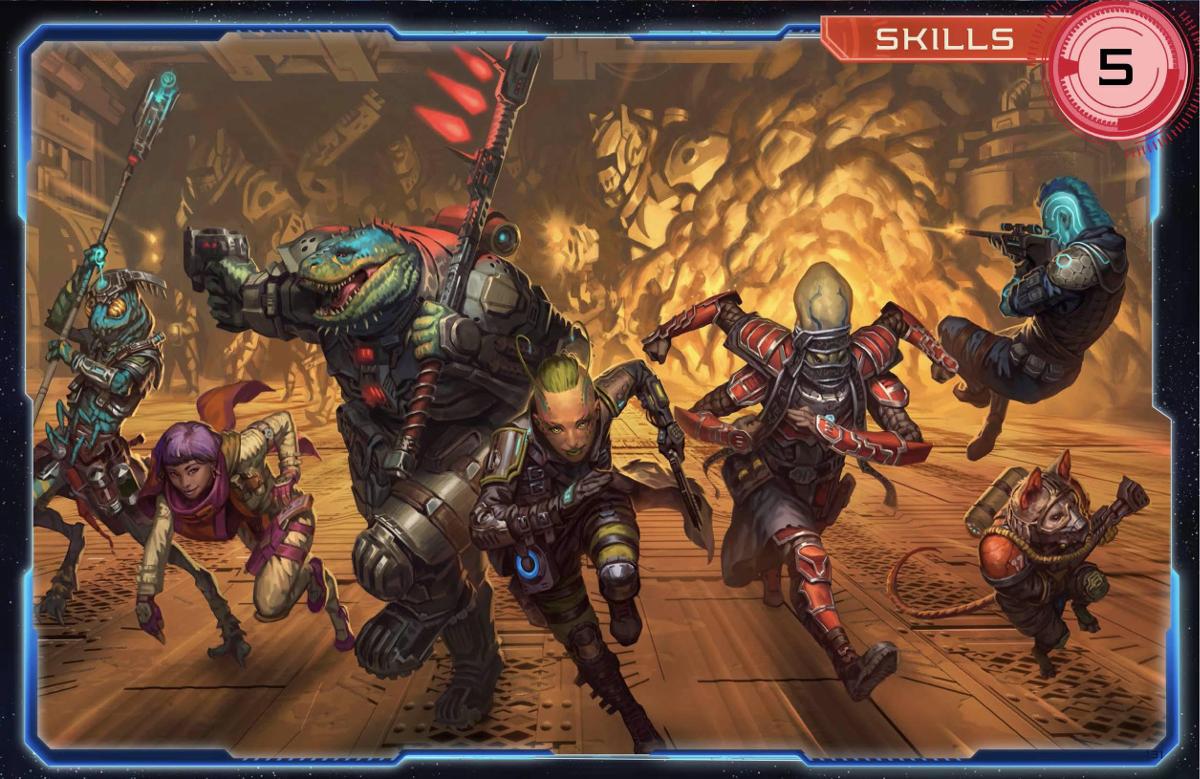
Skills! Are you excited? I'm faking being excited! Man, this is the best part of any book! It's not at all boring! 

If you're played d20, you'll know the drill for the most part. Characters in Starfinger can invest skill ranks in a skill up to their level, add their ability modifier, and if it's a class skill for them, they get +3 to their rolls with it. Almost every class gets (4 + Int modifier) for skills, multiplied by 4 for the 1st level, except for Mystics that get (6 + Int modifier), and Envoys and Operatives get (8 + Int Modifier). This is because the best educated people in society are priests, con artists, and thieves.
You get all your basic features here - opposed skill checks, taking 10, taking 20, aid another, and then we get into specific mechanics. You can "Identify Creatures" with the Mysticism skill for magical creatures or Life Science for mundane-ish creatures. There's "Recall Knowledge" where you aim at an arbitrarily decided target number with any appropriate skill to know facts, but taking 20 requires a special information resource like a database or library (notable mainly because a number of class features let you ignore that requirement).
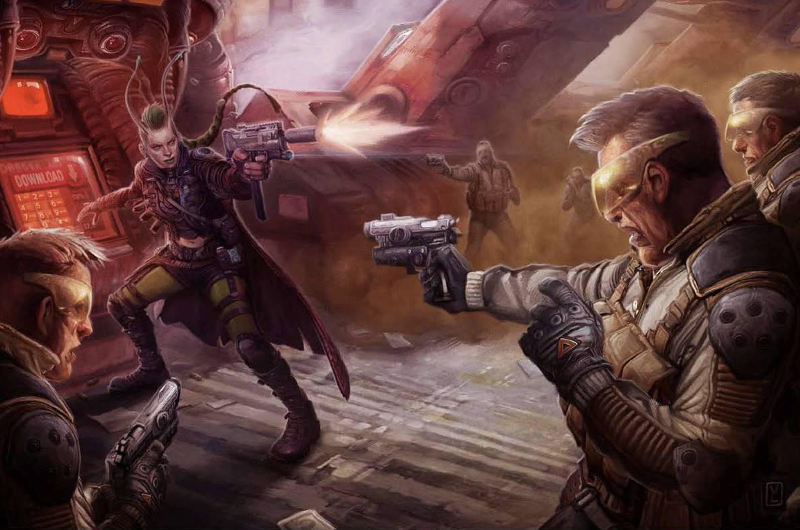
This looked cool and then I realized "Hey, wait, they can't hit a guy ten feet away?"
We've also got an issue here with the Difficulty Classes (DCs); some of them are based out off the Challenge Rating (CR) of an NPC you're targeting (or the Item Level of a device). For example: tumbling through a threatened area with Acrobatics, feinting a foe in combat with a Bluff, befriending somebody with Diplomacy, identifying or repairing an item with Engineering or Mysticism, or demoralizing a foe with Intimidation. And that can have issues where enemies end up being homogenous; a big dumb thug is as hard to feint as a canny mastermind of the same CR. But more than that, the DCs are based off (1.5 x CR), often something like "15 + (1.5 x CR)". Which means, presuming that the heroes are facing NPCs with CR equal to their character level (the norm), the DC increases faster than their ability to increase their bonus. This is subtle, but with "15 + (1.5 x CR)", the average maximized character will need a 8 or higher on a d20 to succeed at level 1 against CR 1, but a 13 or higher at level 20 against CR 20. That's a 25% increase in difficulty, meaning that you're less competent at high level than low levels.
Now, to some extent this can be offset by equipment and classes which grant skill bonuses. (It's already presumed you're getting all the ability score boosts you can.) But when you need to get class bonuses in a skill (like the Operative does) just to keep up, something has gone wrong math-wise. The skill bonus from a class should make you better than the average, not just allow you to keep par. Mind, most skill rolls are thankfully still quite functional. But this will be getting even worse - to a game-breaking extent - when we get to the skill rolls involved with starships. I'd normally hold off on mentioning that since that's chapters ahead, but's infamous enough at this point to just establish right now.
So the skills are very similar to Pathfinder, but let's go over them all once again:
- Acrobatics: This lets you keep your balance with a slightly torturous DC calculation with 4 different factors: surface with, obstructions, slipperiness, slope, and surface steadiness. It's important we have that complexity, because falling on your ass constantly is a important feature of the space fantasy genre. Escape lets you escape from bindings or a grapple, with a difficulty based on the grappler's armor, so the the more armored they are, the harder it is to break free? There's rolls for Flying, so you don't Boba Fett into a Sarlacc, and you have to roll over a maneuver, flying in dangerous wind conditions of 51+ MPH or higher, or for hovering. Yep. Hovering requires a roll or you fall (unless you have perfect manuverability). There's a whole chart of wind speed difficulties, so hopefully the GM has the weather forecast. Then there's tumbling through spaces without triggering attacks of opportuniy, and there's some... calculations based the CR of the enemy and how many they are and remember those balance modifiers? You count all those in too. Oy, does anybody bother with that? "Well, you're tumbling past a goblin and a martian, so we take the CR of the martian and add 2 for the goblin, and it was raining, so we add another 2, and there are rocks, so..."

- Athletics: Does Climbing involve no less than three to five factors? You bet it does? Cue chart of DC modifiers! Similarly, Swim is a smaller but notable set of charts. There's also Jumping, which... remember those Balance modifiers? They're baaaack. Being physical requires a lot of math, ironically.
- Bluff: Thankfully, whether you're on gravel or sand will not affect your ability to talk wise. You can cause Diversions to try and hide even if you don't have cover or concealment or get a bonus on a palming attempt. You can Feint to try and make creatures flat-footed. And, of course, you can lie. There's "The GM may determine that somsome lies are so improbable that it is impossible to convince someone they are true.", no doubt a hedge towards convincing people that you are, in fact, the Moon. And you can use it to pass secret messages in class.
- Computers: Mostly hacking, though you can craft computers with this. This lets you also forge electronic documents (cue table of modifiers), repair/destroy/disable/manipulate systems and modules, notice if you've been given fake dummy access, gain root access, and get access to computers you shouldn't. Most of the difficulty depends on the computer's quality (what we'll later call its "Tier"), which ranges from 13 to 43, which runs into the DC issue mentioned earlier. However, with modifiers pushing it up into 63+ to gain full access on some computers, some high-Tier computers are literally unhackable.
- Culture: The main advantage and change is that each rank in Culture gives you a new language. It also lets you decipher unfamiliar writing and know stuff about a culture, of course. Mostly it's just filling out that social keyring of 30+ languages, though.
- Diplomacy: Mainly used to improve the attitude (in 5 ranks from hostile to helpful) of an NPC or to try and gather information by asking around about stuff. Charts! Not complex ones, though. Social interaction is simple, not like jumping.
- Disguise: Make yourself look different! Much better to do with magic like disguise self, which gives you +10 on your rolls, tho.
- Engineering: So, if you want to arm explosives, you have to make a roll. This is something that happens in the space future: your space bomb going off in your face because you rolled space bad. Space ouch! You can roll to see if a structure is stable or how better to break it. There's a table for that! This is used to craft devices, and can be used to craft Computers even though there's a skill for that. This lets you disable devices (particularly bombs, traps, and locks, for your space dungeons). It can be used to identify robots, technology and repair things as well. More tables, more formulae.
- Intimidate: This can be used to bully people to change their attitude temporarily, after which it worsens, literally making it diplomacy's awful cousin. (Seriously, the DCs are exactly the same, it's just worse.) However, this can be used to give people the shaken state in combat on a successful check. Once again, social is simple, jumps are complex.
- Life Science: Mostly for crafting drugs, poisons, and food, as well as identifying creatures and answering science questions. But it has nothing to do with...
- Medicine: Let's you put doctor by your name, stabilize patients, triple out of combat healing rates, and treat wounds to grant HP once per day (twice per day with a medical lab). Lastly, you can give treatments that help with saves against disease or poison. But it's up to the will of the patient to survive... and their level... well, mostly their level.
- Mysticism: Magic and religion are the same now, as it turns out. Mostly for identifying and talking magic shit, but this lets you craft and repair magic items, and disable magic
trapsdevices. - Perception: Lets you notice things (see the chart), see through disguises (see the chart), or search for things (see the chart).
- Physical Science: Physics and earth sciences, in other words. Not actually used for much other than infodumps and making drugs or poisons. Because that's what you learn from astronomy or climatology; pharmaceuticals. Well, I guess they had to give this skill something to do.
- Piloting: Science is divided up, and weapons require all sorts of profiencies, but if you know how to pilot one thing, you know them all. You can use this to shoot in lieu of a combat bonus (haha, fuck you, combat classes... in space!), navigate around, or roll to make maneuvers or stunts. The more advanced a vehicle it is, the harder it is to pilot!... which also means the more expensive a vehicle it is, the worse it handles. Starfinger logic! (Well, at least the DC is just increased by the Item level, meaning you can actually get better at it.)
- Profession: Hahaha fuuuck whoever left this trap option in, seriously. I wish I could have an extra arm grafted on I would just to give however approved this a threesome of different rude gestures at once. Whoever you are, personally, stop it. Stop writing things like this. Stop it. All it does is let you earn pocket change between adventures. And I mean that - you're making like 5 to 30 or so credits a week in a game (no, it doesn't scale to your actual wealth level at all) in a game where the most basic 1st-level equipment will cost you hundreds. And if you think people don't put ranks in Profession, I was just talking to a new Starfinger player the other day that had maxed it out to fluff out his concept. Because it sounds good on paper, but is near-useless in play.
- Sense Motive: This lets you tell if somebody's trying to decieve you or lie. If you do it, it's "part of combat banter" or "otherwise, it's a move action". Wait, huh? How could... what... I mean... huh? If they're not bantering with you, how are they deceiving you? With semaphore? This lets you try and sense secret messages that students are trying to pass in class, or notice mind whammies as well.
- Sleight of Hand: Palming and picking pockets, mostly. However, you can put on magic shows, too. I mean, not real magic. Stage magic. Space wizards still pull in higher ticket prices, I imagine. And they're probably smarter than you, because they're Int primary! Stupid space wizards!
- Stealth: Lets you hide if you have cover or concealment (we get rules for invisibility here, which gives farcical bonuses to your roll). There's also a rule where you can snipe from concealment, then hide again at a handy -20 roll. Sniping is fucking hard, unless you're a halfling.
- Survival: I'm still excited about skills, really, really I am, I just... okay, you can endure weather and live off the land and keep your hunger and thirst meters sated. You can also follow tracks, in case your enemies are too poor for vehicles, and handle and rear animals. You also use this to ride creatures and there are a lot of rules for this that will probably not see use very often given there are no mounts listed in this book. Wait! No! Engineers can ride their drones if they have mounted saddles! But they don't use Survival for that, so...
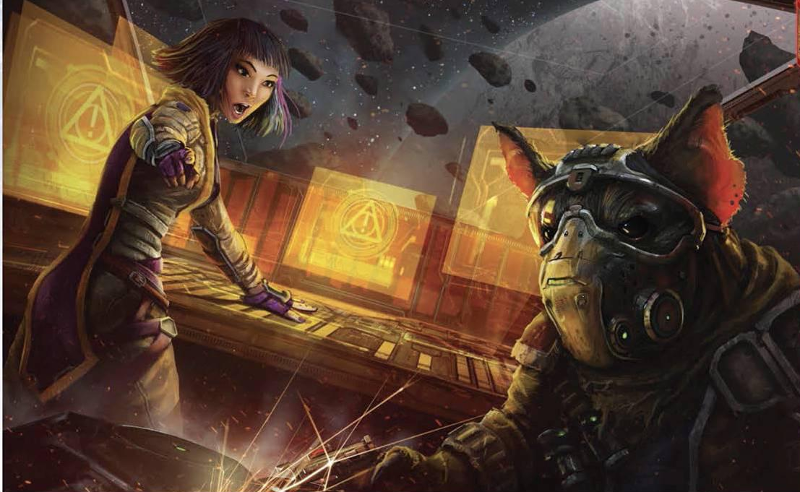
And that's skills! It's nice to see them skim it down somewhat, but... there's still redundancy and a lot of charts most GMs will never touch, and the DCs are just utterly fucked in some cases. You'd think they'd understand the how math underpinning the d20 system functions after working with it for around a decade, but as the book goes on, it just doesn't seem like they understand their actual system inside and out like you'd expect. Hell, like I expected. I didn't think I'd be blown away, but I also didn't think I'd feel this disappointed. It's baffling. I can only guess that being at the top of the hill made them complacent. And, I suppose, why bother when most fans aren't likely to notice or care? It's too early for me to start drinking down buttermilk for bitterness, maybe the next section will be better, right? What's up next?
Next: Feats for 'Finger.
"If you can make a game fun and robust with 150 feats, can you do it with 100?"
Original SA post
Starfinger Core Rules Part #09: "If you can make a game fun and robust with 150 feats, can you do it with 100?"
(James Sutter, Starfinger Creative Director, Gnome Stew interview.)
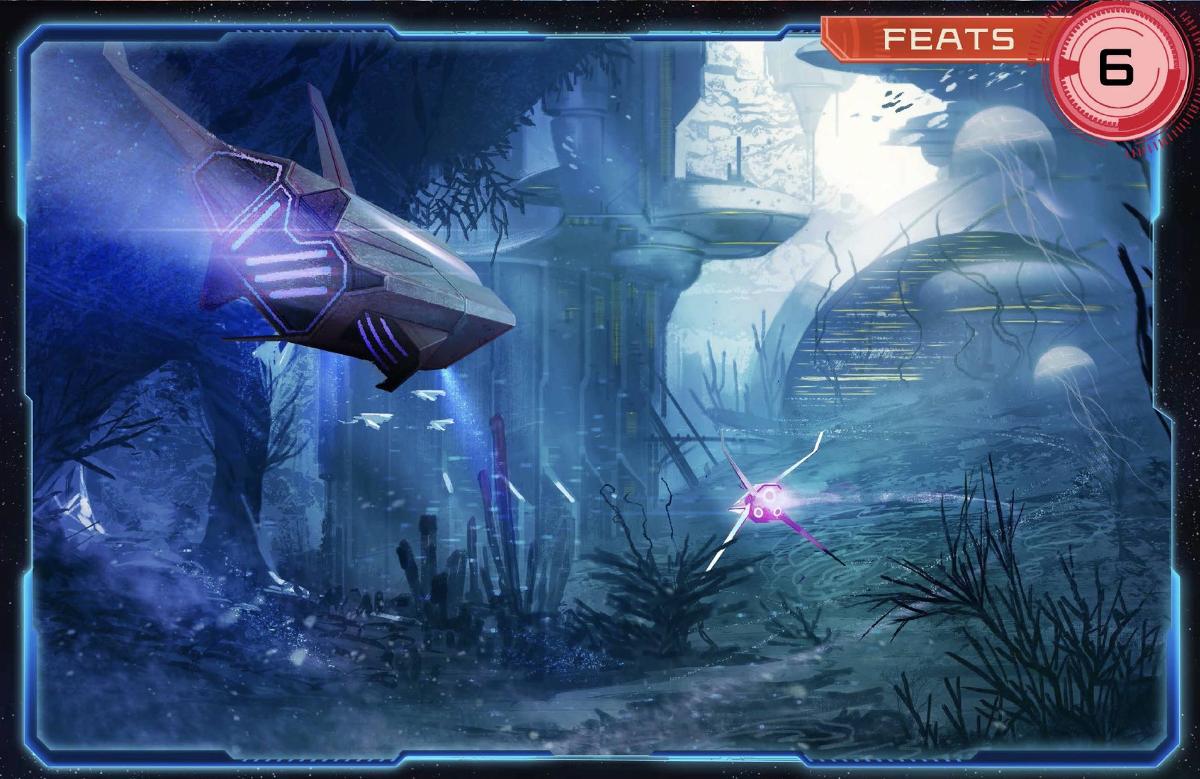
Starfinger Core Rules posted:
All characters have certain abilities that don't directly stem from their races, classes, or skills, These abilities, called feats, represent specialized talents that can come from a wide range of possible courses. When you select a feat for your character, it can represent advanced training, an arcane ability gained from a strange machine on an abandoned alien planet, a knack picked up during your youth, or nearly anything the GM agrees is reasonable for the campaign.
"What'd that strange machine do to you?!" "I think I'm better at cleaving."
I'm going to start by feats that are adapted or just plain copied from Pathfinder counterparts: Antagonize, Blind-Fight, Bodyguard, Cleave, Coordinated Shot, Deadly Aim, Deflect Projectiles (originally Deflect Arrows), Diehard, Drag Down, Far Shot, Fleet, Great Cleave, Great Fortitude, Greater Spell Penetration, Heavy Armor Proficiency, Improved Critical, Improved Great Fortitude, Improved Feint, Improved Initiative, Improved Iron Will, Improved Lightning Reflexes, Improved Sidestep, Improved Unarmed Strike, In Harm's Way, Iron Will, Kip Up, Light Armor Proficiency, Lightning Reflexes, Lunge, Mobility, Nimble Moves, Opening Volley, Parting Shot, Penetrating Attack (originally Penetrating Strike), Quick Draw, Reflect Projectiles (originally Reflect Arrows), Shot on the Run, Sidestep, Skill Focus, Spell Focus, Spell Penetration, Spring Attack, Stand Still, Step Up, Step Up and Strike, Strike Back, Toughness, Weapon Focus, and Weapon Specialization.
Whew! It's certainly possible I missed some, but it's quite a bit.
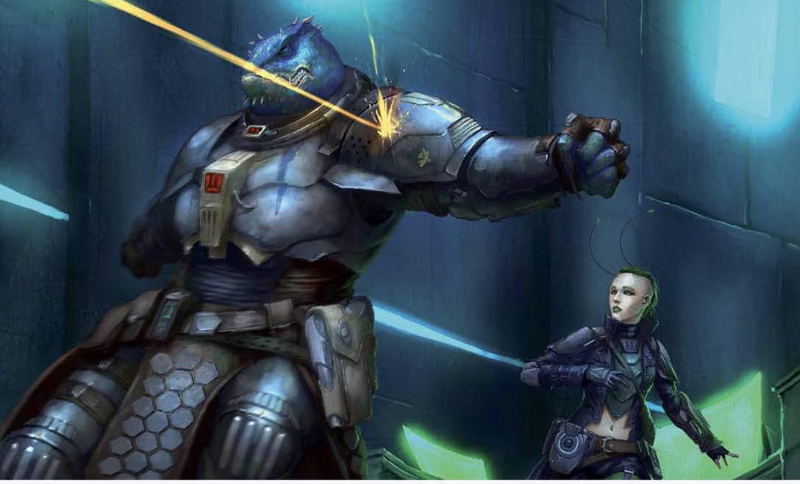
Some of them are somewhat modified for the new combat rules or updated (Toughness is better, but not by much, for example, giving some Fort bonuses against hazardous conditions in addition to a +1 SP per level bump). Others, like Lightning Reflexes or Skill Focus, are the same dogs they've always been. With that in mind, let's look at some all-new, all-different feats!
- Amplified Glitch: As a standard action, you can hack one target per level and cause their stuff to get hacked with a successful Computers check that might stun them for one or more rounds. You can only nail somebody once a day, though, so you can't stunlock them.
- Barricade: You can automatically create improvised cover as a move action, but it only lasts 1d4 rounds once hit. It's kind of neat, until you realize the negative design space filled in by a lot of these feats - can people without this feat kick over a table or drag a vending machine down, or do you have to have this feat to do it? The world may never know.
- Dive For Cover: Lets you fall prone to make a reflex save against an area effect attack a second time. Does not actually let you dive for cover, however. Cover is a different mechanic!
- Extra Resolve: Gives 2 extra resolve points at 5th level or higher. I imagine most classes will want to take this if you've got the room to, given now many abilities - even other feats - and your outright survivability now hinge on your amount of RP available.
- Fast Talk: Lets you make a bluff check at the start of combat to render somebody surprised. You'd think people might catch on, and they do, but only for 24 hours.
- Harm Undead: Lets you do damage to undead foes in an area around you by expending Mystic spells, in case you really, really missed Turn Undead. Are there a lot of undead in this setting? Well, there's an undead planet, but it's not total bad guy territory. So YMMV.
- Improved Combat Maneuver: Gives you a +4 on one combat maneuver, basically the replacement for Improved Disarm, Improved Sunder, Improved Trip, etc.
- Improved Stand Still: Lets you do an attack of opportunity to force people to stop moving at a bonus, but I really brought it up because there isn't many goofier-sound feat names than Improved Stand Still. "I stand still better than you. You don't even know how still I stand."
- Minor Psychic Power: Lets you choose one of several 0-level spells as a psychic power. So, uh. Really minor. The regular and major version give you limited access to a number of 1st or 2nd-level divination-related spells; not a lot for a three-feat chain.
- Psychic Power: Gives one of several different 1st-level mind-themed spells, once a day, and you have to be 4th level or higher. I feel bad for the folks that go all-in as Phrenic Adepts. Really should just play a Mystic instead.
- Pull the Pin: Lets you ask the GM "are they wearing a grenade?" and then pull the pin on a successful disarm. Of course, you have to be in melee to do this in most circumstances, and the grenade goes off at the end of the round, so you best hope your move action gets you out of the half-range blast radius!... if they don't chase you while wearing a live grenade, anyway, or just throw it after you... best hope you go second to use this. (Seriously, how did they overlook that the foe can just throw it after you?)
- Skill Synergy: Pick two skills, they become class skills, or if they're already class skills, you get +2 to them instead. Are you excited? I'm excited.
- Unfriendly Fire: Make a Bluff check when somebody misses you to try and make them hit somebody else next to you. You'd think they'd learn, and they do!... but only for 24 hours.
- Veiled Threat: Lets you intimidate people annd their impression doesn't drop below indifferent. Or you could just take Diplomacy, the unshitty social interaction skill... however, it has the weird effect that if you then bully somebody who's Hostile to you, their reaction improves to Unfriendly when you bully them, then sets to to the fixed result of Indifferent. So it's handy in that one unintended circumstance, giving you a double boost!
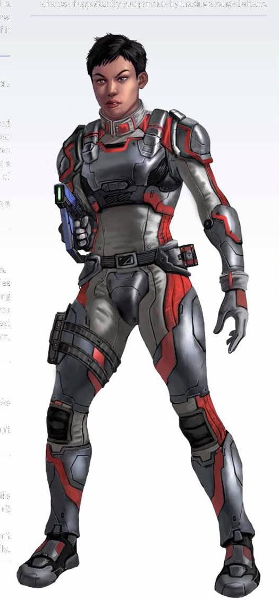
So, now that we have Improvisations, Mechanic Tricks, Connections, Operative Exploits, Revelations, Fighting Styles, and Magic Hacks, what, exactly, role do feats fill? Some feel like Mechanic Tricks (Amplified Glitch), others feel like Magic Hacks (Penetrating Spell), some are like Operative Exploits (Fast Talk). About the best guess is that they focus on boosting mundane actions, but it feels like they're in this nebulous design space where there's even less defining them than before, and class abilities are stealing even more of their show.
Next: Buying a knife is surprisingly complicated.
"... if you bring your barbarian from Pathfinder into [Starfinger] and he's going to run around shirtless with a longsword, he should probably get cut down with an assault rifle."
Original SA post
Starfinger Core Rules Part #10: "... if you bring your barbarian from Pathfinder into [Starfinger] and he's going to run around shirtless with a longsword, he should probably get cut down with an assault rifle."
James Sutter, Starfinger Creative Director, Game Informer interview posted:
Because that just makes sense, right?
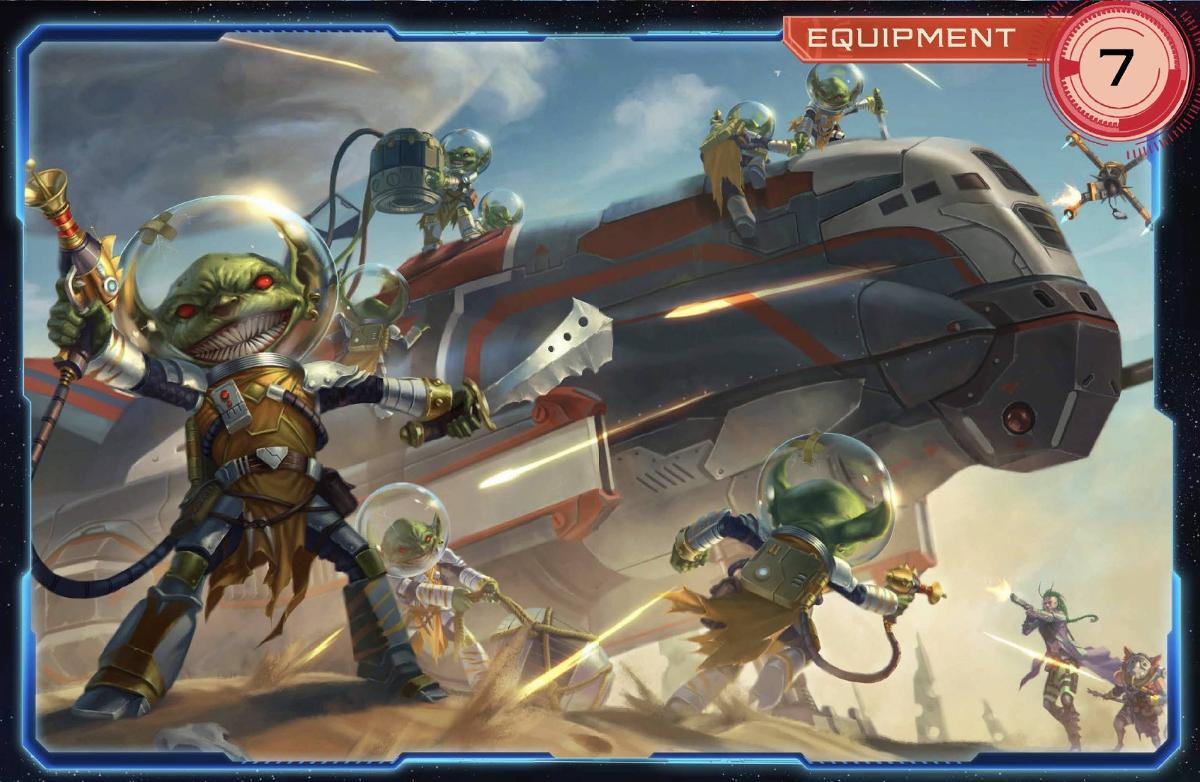
If I start looking unwell, don't call a doctor. This is just my acquired allergic reaction to gun lists in RPGs now.
Since this is the future, everything is done with credits, sometimes stored on "credsticks" so you can steal them sometimes. There's more  about it but that's most of what you need to know. It also notes you can only resell equipment for 10% of its purchase price ever, no doubt to allow GMs to just load down enemy NPCs with badass equipment without worrying about breaking the economy. We're told this is because "any equipment sold by PCs comes without the guarantees and reputation of major merchants and producers (and may be broken, cursed, defective, or stolen)..." Apparently, all PCs automatically have a bad rap as con artists, which may just be accurate. However, they can sell trade goods for 100% of their purchase price.
about it but that's most of what you need to know. It also notes you can only resell equipment for 10% of its purchase price ever, no doubt to allow GMs to just load down enemy NPCs with badass equipment without worrying about breaking the economy. We're told this is because "any equipment sold by PCs comes without the guarantees and reputation of major merchants and producers (and may be broken, cursed, defective, or stolen)..." Apparently, all PCs automatically have a bad rap as con artists, which may just be accurate. However, they can sell trade goods for 100% of their purchase price.
 about it but that's most of what you need to know. It also notes you can only resell equipment for 10% of its purchase price ever, no doubt to allow GMs to just load down enemy NPCs with badass equipment without worrying about breaking the economy. We're told this is because "any equipment sold by PCs comes without the guarantees and reputation of major merchants and producers (and may be broken, cursed, defective, or stolen)..." Apparently, all PCs automatically have a bad rap as con artists, which may just be accurate. However, they can sell trade goods for 100% of their purchase price.
about it but that's most of what you need to know. It also notes you can only resell equipment for 10% of its purchase price ever, no doubt to allow GMs to just load down enemy NPCs with badass equipment without worrying about breaking the economy. We're told this is because "any equipment sold by PCs comes without the guarantees and reputation of major merchants and producers (and may be broken, cursed, defective, or stolen)..." Apparently, all PCs automatically have a bad rap as con artists, which may just be accurate. However, they can sell trade goods for 100% of their purchase price.- Radical Space Wizard: I have these three dimensional slice starknives...
- Stingy Space Merchant: I'll give you 10%.
- Radical Space Wizard: But these are spinning blades wielded by a deadly assassin known throughout the cosmos, made with cutting edge metallurgy and with auras that break the known laws of time and space. Deadlier than a zero-edge doshko or even an advanced baton! 8d12 damage, man!
- Stingy Space Merchant: Yeah, but no warranty. What if it breaks? How do I know you didn't do shifty magic stuff to it? Are the screws loose? Did you loose the fuckin' screws, you shitty wizard?!
- Radical Space Wizard: Fiiine. But I also have this load of megaopiate...
- Stingy Space Merchant: Full market value.
- Radical Space Wizard: ... how do you know I didn't mess with the megaopiate?
- Stingy Space Merchant: I hope you did! My highs are getting boring!
So, instead of having encumbrance, you now have bulk, which is essentially just a very slightly more abstract version. You can carry bulk up to half your Strength score, and then take the encumbered condition (-10 speed, dex bonus is capped at +2, -5 to Str and Dex checks) if you have bulk up to half to your full Strength score. If it's greater, you get the Overburdened condition (5 feet speed only, max Dex bonus of +0, and -5 to Str and Dex-based checks). However, you can't become Overburdened voluntarily, only if you lose Strength score or get thrown into high gravity or whatever. You character will literally shake their head and frown at you, the player, for insisting they try and pick up more. Some things have a negligible bulk, so you can carry an infinite amount of such objects, where infinity is actually just whahtever point where your GM gets fed up with your nonsense. Some count as light bulk which is 1/10 bulk, at which point I realize you're mostly just counting pounds anyway... it's just that larger weights are abstracted. Slightly.
Equipment has levels now, and you can't buy anything higher than 1 or 2 levels above your character level (depending on the size of the community), because you apparently don't have enough rep to buy stuff that expensive otherwise, unless your GM gives special dispensation. Sorry, Timmy, I know you saved up at that summer job to buy a tactical knife, but that's level 7! Nobody will trust that you can handle it.
wait why is a tactical knife level 7?
If you replaced level numbers with colors, it'd be difficult to distinguish from Paranoia's security levels.
We get a lot of  on hands required to use a weapon, which mainly just displays why kasathas having four arms is supposed to be a big deal, since you can't use two-handed weapons one-handed even at a penalty - it just fails. There's also weapon sizes, but medium and small creatures use the same size category of items so ysoka and gnomes aren't screwed. Tracking ammo gets a full half-page, reloading is a move action, there are bullets and energy charges and missiles. There are Improvised Weapons, but they generally do so little damage beyond Level 1 they're not worth using save out of desperation, unless your GM is nice enough to throw you a bone and let them count as more than a Level 1 club.
on hands required to use a weapon, which mainly just displays why kasathas having four arms is supposed to be a big deal, since you can't use two-handed weapons one-handed even at a penalty - it just fails. There's also weapon sizes, but medium and small creatures use the same size category of items so ysoka and gnomes aren't screwed. Tracking ammo gets a full half-page, reloading is a move action, there are bullets and energy charges and missiles. There are Improvised Weapons, but they generally do so little damage beyond Level 1 they're not worth using save out of desperation, unless your GM is nice enough to throw you a bone and let them count as more than a Level 1 club.
 on hands required to use a weapon, which mainly just displays why kasathas having four arms is supposed to be a big deal, since you can't use two-handed weapons one-handed even at a penalty - it just fails. There's also weapon sizes, but medium and small creatures use the same size category of items so ysoka and gnomes aren't screwed. Tracking ammo gets a full half-page, reloading is a move action, there are bullets and energy charges and missiles. There are Improvised Weapons, but they generally do so little damage beyond Level 1 they're not worth using save out of desperation, unless your GM is nice enough to throw you a bone and let them count as more than a Level 1 club.
on hands required to use a weapon, which mainly just displays why kasathas having four arms is supposed to be a big deal, since you can't use two-handed weapons one-handed even at a penalty - it just fails. There's also weapon sizes, but medium and small creatures use the same size category of items so ysoka and gnomes aren't screwed. Tracking ammo gets a full half-page, reloading is a move action, there are bullets and energy charges and missiles. There are Improvised Weapons, but they generally do so little damage beyond Level 1 they're not worth using save out of desperation, unless your GM is nice enough to throw you a bone and let them count as more than a Level 1 club.
There are two types of Armor Class now, EAC (Energy Armor Class) and KAC (Kinetic Armor Class), which is fairly self-explanatory. There are the usual types of energy damage (acid, cold, electricity, fire, sonic) and kinetic damage (bludgeoning, piercing, slashing). We get weapon types (basic melee, advanced melee, small arms, longarms, heavy weapons, sniper weapons, special weapons, grenades, and solarian weapon crystals). Solarian weapon crystals are boosters for Solarians that choose those. Are there armor crystals for Solarians that pick that option? Of course not! Hope you ignored that lousy option...
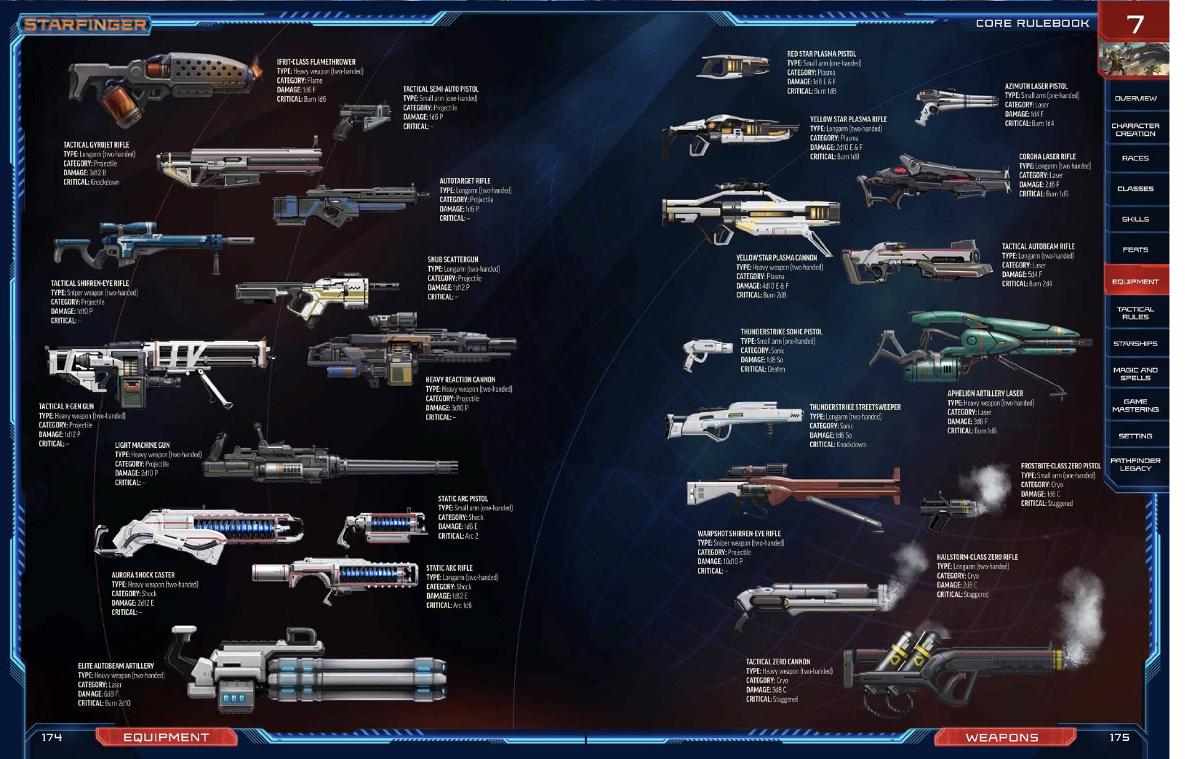
Then we get seven and a half pages of weapon tables, each more baffling than the next, broken up only by a double-page spread of pictures of guns. One thing becomes aptly clear, and that's damage in this game is tied largely to your weapon, not your character. This is because - as far as I can tell from interviews - the designers see damage as being inherent to the weapon and the wielder being more of an aside. Show let's show a sample progression for somebody looking to use one-handed space swords.
- At 1st level, I start with a longsword. It does 1d8 slashing damage. It costs 375 credits.
- My next step is at 7th level, I can now either use a sintered longsword to up my damage to 2d8 slashing damage, and it causes severe bleeding on a crit. Or I can get a tactical skyfire longsword for 2d4 fire damage, but it can set people on fire on a crit. I go with the sintered longsword. It costs 8,420 credits.
- At 9th level, I can take a microserrated longsword for 2d10 slashing damage and bleeding on crit, or a tactical plasma sword that does 2d8 electricity/fire damage (that is, half the damage is treated as one and half the other) and a severe random wound on crit. Slashing seems practical, because damage is damage and bleeding is more damage. I go with the microserrated longsword for 12,100 credits.
- At 13th level, I qualify for a red star plasma sword for 4d8 electricity/fire damage. Seems worthwhile, I'll upgrade for 54,300 credits.
- At 14th level, I can buy for a zero-edge longsword, 7d8 slashing, severe wounds, sure. 79,500 credits.
- At 15th level, I have access to a yellow star plasma sword, does 5d8 electricity/fire with a severe wound on crit. Nah. Pass.
- At 17th level, I can get a molecular rift longsword, and 10d8 slashing seems like enough of an upgrade that I can ignore the fact it has no particular critical effect. I mean, sure, there's an inferno skyfire sword, but 7d8 fire isn't too compelling even with a 4d12 critical burn effect. Cost is 245,200 credits.
- At 18th level, I have another choice. There's the white star plasma sword, which does 8d8 electricity/fire with a wounding effect on crit. Or I can get an 8d10 ultraserrated longsword. Well, the ultraserrated does 1 less average damage than the molecular rift longsword, but it does have a severe bleeding crit effect. I have bottomless pockets for this theoretical scenario, so I dump out the 368,100 credits I need to make the upgrade to ultraserrated.
- Finally, at 20th level, I have a choice. There's a dimensional slice longsword for 14d8 slashing, no fancy crit effect. Alternately, there's the 10d8 blue star plasma sword with wounding crits. Fuck wounding, does that kill people faster? It usually won't come up, given critical ranges have shrunk compared to Pathfinder. Dimensional slice longsword will put me out 727,300 credits.
Now, this is something of a simplification. Maybe I specialize in Improved Crit and take the Plasma Immolation Gear Boost and the plasma swords become a conceivable focus... but that's tangential to the point. The point is, the damage leveling in Starfinger is fucking weird because it's tied to arbitrary weapon charts. I mean, really arbitrary. If I decide to focus on laser pistols (from a "azimuth laser pistol" to a "zenith laser pistol"), I can upgrade at 1st, 6th, 9th, 12th, 14th, and 17th levels, doing from an average 2-3 damage to 20 damage eventually at a total cost of 386,840 credits. But if I decide to go with semiautomatic pistols (from "tactical semi-auto pistol" to "elite gyrojet pistol") I can upgrade at 1st, 7th, 10th, 13th, 15th, 17th, and 20th level from 3-4 damage to 22.5 at a cost of 1,089,160 credits. And I'm sure there must be some formula beneath it, but it's... ugly where a PC might be down three damage dice because their chosen weapon type gets an upgrade at X level instead of Y, or a PC might be spending over twice as much to do +2 damage three levels later than another character. Of course, you can just be weapon type agnostic and just reach for whatever seems to have a higher damage value. I can decide at 4th level I'm sick of doing 1d8 tactical longsword damage and and switch to a two-handed carbon steel curve blade at 1d10 damage instead if I really want. Is that intended? What sort of decision should I be making there? Well, the book offers up no answers. And then at some point I have to throw out my old "frag grenade III"s and instead buy a new lot of "frag grenade IVs" because grenades have levels too. Then there are batons - two of them. There's an 1d6 tactical baton at 1st level, and an 8d6 advanced baton at 19th level. What's special about an advanced baton that makes it do 8d6 damage? It "often has an additional shaft" and and a "weighted end". Oh. Can I just put a weighted object on the end of my tactical baton and have it do more- no? Not at all?
Oy. At least you don't have to level up your clips. 

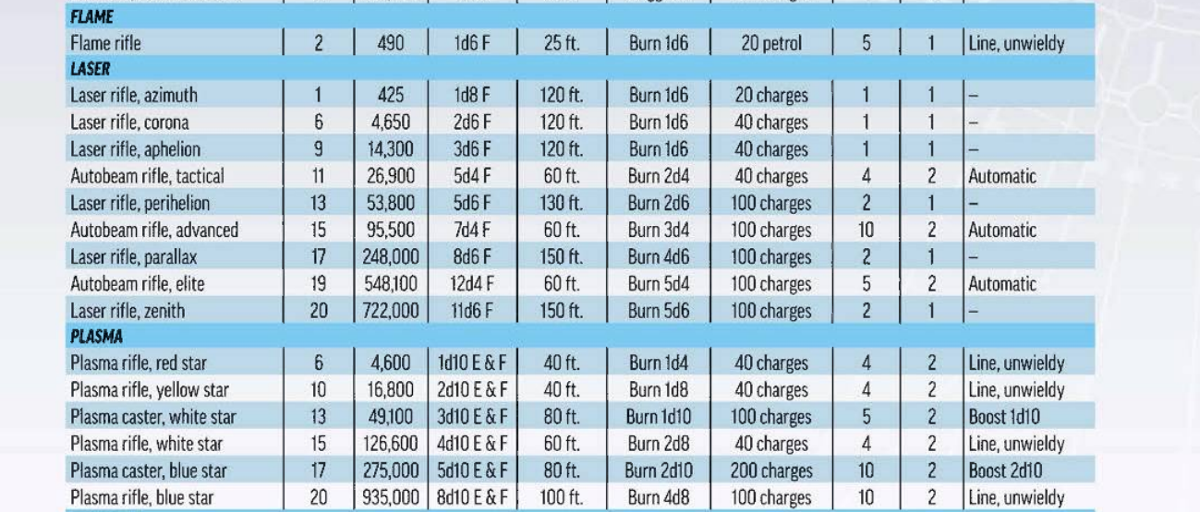
A tiny sampling of the weapon tables (level, price, damage, range, critical, ammo amount, ammo expenditure per shot, bulk, special effects).
It also creates weird situations where stores won't sell me a gyrojet pistol because nobody below level 13 has the rep to be allowed to buy a pistol that uses real-life technology developed decades ago. Or I can't buy a missile launcher because I'm not 10th level (or 8th level, if my GM is nice). And it's not a question of the joy of discovery or trying to figure out what's the best options with what an adventure randomly drops in your lap as loot - as previously stated, the game presumes that shops will have level-appropriate gear for you to purchase, credits allowing. (Except some won't, as we'll see later, without explanation.) In addition, the main way weapons are differentiated are just through A) damage ratings, B) damage keywords, and C) critical hit effects, so generally you're only looking at A.
Some people talk about RPGs being like "video games" disparagingly, and while I don't think an RPG being like a video game is necessarily a bad thing in the slightest, but this feels like a bad implementation of a video game concept. Having weapons be the core of damage is fine in Diablo and its derivatives works because you end up with piles of them, you can slot them in or out and that's that, weapons don't generally break or go missing, and if they do you can repair them. If you need money for a better weapon or a replacement weapon, you can just grind until you get it. Hell, you're likely to be swimming in excess weapons and money in a videogame if you've invested enough time in. In Starfinger, you might lose that 800,000+ paragon seeker rifle to a bad save or skill roll, after which you just have to hope the next adventure gives you a replacement or enough credits to recover it. Then again, you might have a ton of spares, given their shitty resale value - or not, depending on what kind of foes your GM throws against you. There's no real accounting for that. In theory, while GM is supposed to make sure you're properly equipped for your level, the game doesn't really discuss what to do when equipment is lost.
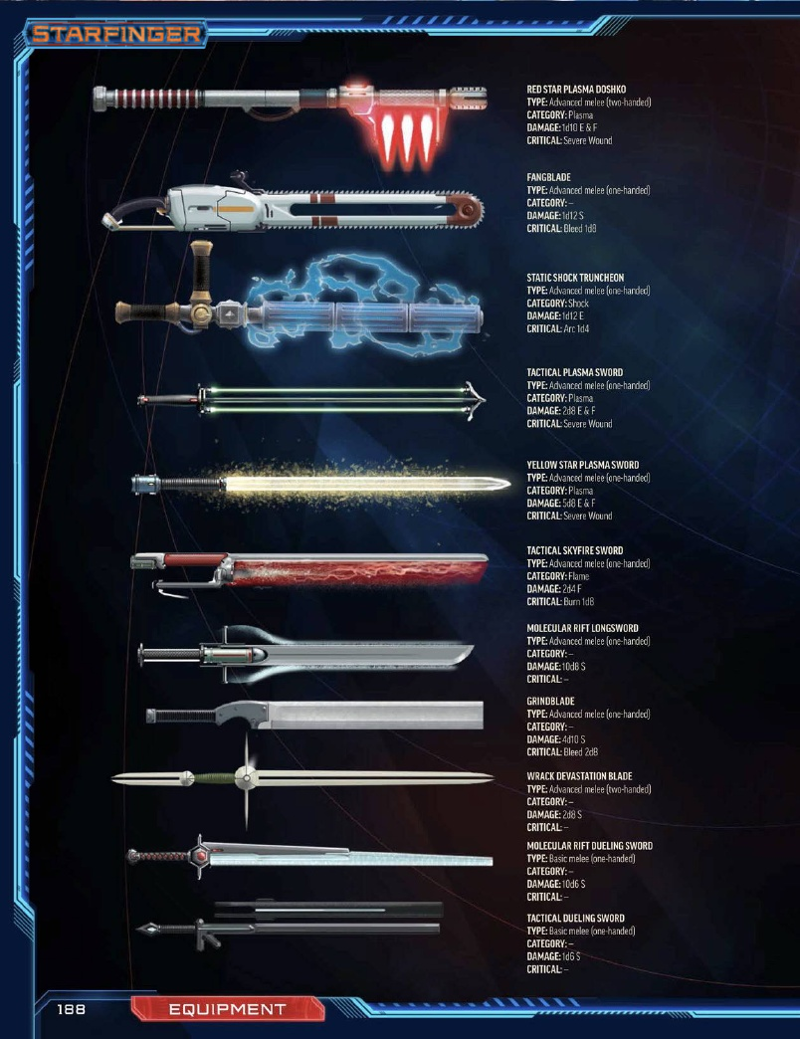
It also creates the weird tactic in high-level combat where learning how to sunder and break equipment - or even just disarm - can be really effective against other humanoid foes. Shoot their guns, and that evil mercenary goes from firing a 3d10 white star plasma caster to swinging a 1d4 rifle butt at you. Given the increased accuracy of Starfinger foes, this is even more effective than it would seem at first glance.
And how does this make sense from a setting perspective? Do manufacturers really make tiers of weapons where some are over ten times as effective as others, then only sell them to a tiny minority because they have some nebulous degree of accomplishment? How does that work? Or are they different brands aimed at different markets of adventurer? How is it that that I leave my hometown for a year, come back, and suddenly there's somebody selling guns that cost a lifetime's salary just because I walked into town? It's like Schrodinger's fuckin' economy.
Except later on communities get "maximum item level" with no explanation- 

But I still have a lot of chapter to get through here, I should really just relax. But seeing them exaggerating and emphasizing D&D's equipment treadmill is- is-
It's certainly a design choice one can make.
Next: Materia.
"If some guy just walks in off the street and says, 'I want a rocket launcher!', most people are going to say, we don't think you're rocket launcher-ready."
Original SA post
Starfinger Core Rules Part #11: "If some guy just walks in off the street and says, 'I want a rocket launcher!', most people are going to say, we don't think you're rocket launcher-ready."
Owen K.C. Stephens, Starfinger Design Lead, GenCon Q&A Transcript posted:
You can have a .38.
Going onward with weapons, some have special properties. Some notable ones new to Starfinger include:
- Automatic: Automatic fire uses your remaining clip, letting you attack one person per two shots with a cone attack, using a full attack. You can't avoid shooting allies, since it's random, so aim that cone template carefully.
- Blast: Another cone effect, this time for shotguns and the like, which lets you do extra attacks at a -2 penalty against targets in the cone from closest to nearest. Hone your arguements to have with your GM about this.
- Entangle: Resisted by Acrobatics or Strength, so the tanglefoot effect is alive and well in Starfinger.
- Operative: Required to use the trick attack class feature, so what's why your operative is using an advanced baton.
- Sniper: This lets you fire farther if you spend a move action to brace it.
There are also a variety of new crit effects, most of which inflict some condition or another. There's also the "wounding" crit effect that does a hit location effect like a crippled arm or bleeding, and it looks suspiciously to me like a scaled-down version of the "Table of Ouch" from Fantasy Craft.
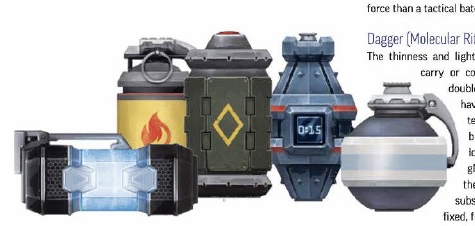
We also get descriptions of all these crazy weapons, such as:
- Cryo Weapons: These fire supercooled gas in a "containment beam" from pistols, rifles, and cannons, though there is a "cyropike" which is a spear with a freezing blade.
- Flame Weapons: Flamethrowers in pistol or rifle configurations, but there are also a "doshko", a "skyfire sword" which is basically just a hollow blade with a bunch of flame jets (seems like it'd break, but this is the future), and... a flare gun.
- Grenades: These come in all the elemental types save acid, and there are also flash grenades (blinds on a failed save), smoke grenades, and stickybomb grenades (tanglefoot rides again).
- Laser Weapons: Your usual lasers and rifles. Note that invisible targets are immune, despite all the heat created in a laser's path, but invisible force shields aren't. Sure. There's also "autobeam artillery", aka gatling lasers, not to be confused with "artillery lasers", which aren't to be confused with indirect artillery - they're just really big lasers. Clear? Well, not invisible, I mean the the colloquial sense of the word...
- Operative Weapons: These are knives and batons used by operatives, because you can't do tricky stabs with big weapons because... that's not what rogues do, okay?! Some of the batons have electric shocks or a generic "pulse", not to be confused with the advanced baton at 19th level, which apparently is just a very well weighted baton.
- Plasma Weapons: These are either projected plasma beams or plasma contained in a magnetic field so you can sword with it. There are doshko (here we're told they're "traditional vesk weapons"), and otherwise we have pistols, rifles, swords, and "caster" (which apparently fire orbs instead of coherent lines of plasma for more damage but less area).
- Projectile Weapons: Bullets, mainly, but also gyrojet weapons, magnetar rifles (their odd name for rail weapons), acid dart rifles (with "whatever acid the wielder desires"), crossbolter (no relation to bowcasters, I'm sure), stellar cannons (really just cannons), x-gen gun (machine guns with external generators), and reaction cannon (uses "advanced materials and and technology to redirect the recoil of a projectile back into the projectile itself").
- Shock Weapons: Arc weapons that fire cones or shots of electrical energy, casters that "fire a blast of electrical energy that explodes when it impacts, creating an electrical storm", and electrified batons. Well, truncheons. If they were batons, that's different!... somehow.
- Solarian Weapon Crystals: Graviton, photon, w-boson, or gluon crystals that add damage to your solar weapon. Those are science words!
- Sonic Weapons: Generic sound pistols and rifles, "streetsweepers" that fire a "low-intensity 'punch' of sound", screamers that fire cones of energy, or pulse gauntlets that let you sound-punch people.
Then, there are uncategorized weapons that include old-fashioned melee weapons and bows (often with high-tech construction), missile and grenade launchers, injection gloves, etc. We get a full list of ammo you need for given weapons, and that's that.
Now there's attempts to explain why one type of weapon is better than another from time to time, and sometimes they make sense, sometimes they don't. Why does a dimensional slice longsword do so much damage? Well, it's surrounded by a "blade-shaped aura". Oh. That explains... not much...
So, weapons can be made from special materials, because overcoming Damage Reduction is still a thing, just like in Dungeons & Digits 3.5. Presumably there are space werewolves and star demons to fight! So, we have the usual - adamantine, cold iron, and silver, and you can make melee weapons out of them or ammo. A literal reading of the rules implies you can also make adamantine lasers or cold iron sonic weapons by making them out of the right materials, but I get the impression that's not intended.
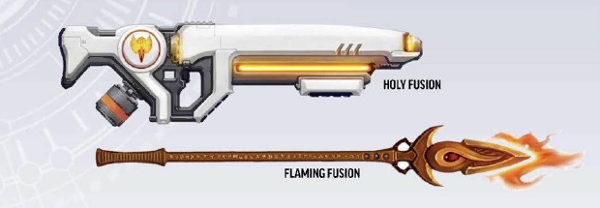
We also have "Weapon Fusions" which are the new form of weapon enchantment. Yes, because working out weapons wasn't complicated enough. They're supposed to be magical mods you plug in like Final Fantasy 7's materia but are hard to remove, and it takes half the cost of the original fusion to move it from one weapon to another. Exactly what you're paying for is unclear; maybe the fusion comes with a credstick reader to take the transfer charge itself? There are also "Fusion Seals" which can be more easily moved between weapons at a surcharge. However, Weapon Fusions and Fusion Seals have an item level they're rated for, and can't be placed on a weapon of a higher level... because... that's what it says in the rules. So if you have a 12th level holy Fusion Seal, you can put it on a yellow star plasma pistol but not a white star plasma pistol, because the cost of Fusions is based entirely on what weapons they can affect.
Did I mention this weapon system can be highly arbitrary?
So, if you know magic weapons from d20 games, most of these will seem familiar. You've got your aligned boosts (anarchic, holy, etc.), your elemental types (corrosive, flaming, etc.), and general effects (ghost killer, dispelling, etc.). Many don't even add direct boosts - aligned weapons just count as aligned, elemental weapons do elemental damage, while others add actual effects. Some have minimum levels they can be purchased at - vorpal is tops at level 10, which is weird because it all it does is grant the severe wound effect, which some weapons get by level 6. But, you know. It's arbitrary!
Next: Make sure you button down that shirt before you step into deep space.
"But from day 1, one of our important goals were, if you are a power armor-wearing knight of Iomedae and you got a plasma cannon, it is important to us that you can have a holy plasma cannon, because when you're facing space imps you want the holy plasma cannon."
Original SA post
Starfinger Core Rules Part #12: "But from day 1, one of our important goals were, if you are a power armor-wearing knight of Iomedae and you got a plasma cannon, it is important to us that you can have a holy plasma cannon, because when you're facing space imps you want the holy plasma cannon."
(Credit: Owen K.C. Stephens, Starfinger Design Lead, GenCon Q&A Transcript)[/i]
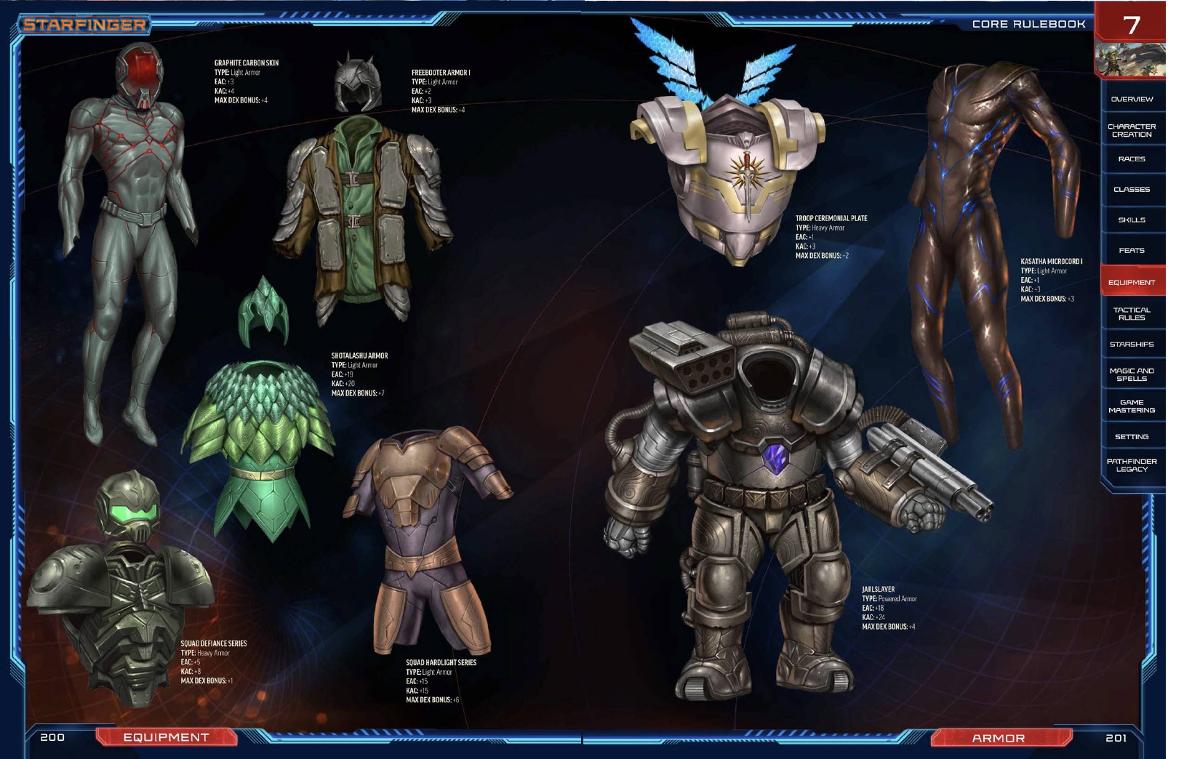
Armor
Armor is now just in two types: light and heavy. Medium has been excised. Armor works more or less like it does in most d20 games, save for a few additions. First, armor has levels just like weapons, and ramps from the "Estex Suit I" (EAC +0, KAC +1, 410 cr) to the "Vesk Monolith III" (EAC +26, KAC +27, 827,250cr). Secondly, as previously noted, armor now has Energy AC and Kinetic AC - though given they're almost never more than 1 rank apart, I'm not sure what the big deal is in dividing the two. Lastly, they have upgrade slots, which you can use to add various functions to your armor. As you can tell from those numbers, armor is the primary way Armor Class is significantly increased - even class benefits like the Solarian solar armor only provide a modest benefit, and level does not increase AC like it might in some other d20 games.
All armor comes with protection from hostile atmospheres and vacuum, an oxygen supply, a bonus against radiation (making those radiation powers seem less impressive now), and protection from modest temperature extremes. You have to turn on the environmental protection manually, though, so if you're unconscious you'll just suffocate unless a friendly person has enough Computer skill to hack your suit to turn it on. You'd think space societies could build a sensor that could sense dangerous gases or vacuum on its own, but apparently not!
Armor types include:
- Carbon Skin: A bodysuit made of *carbon fibers*, which is pretty much magic material!... even in a setting with magic, I guess.
- D-Suit: Your generic Han Starlord casual kind of spacefaring outfit with forcefield helm.
- Estex Suit: Flight suits! Maybe? It doesn't really say how this looks. Hm.
- Freebooter Armor: Metal plates and a button-down shirt make me think this got rejected from a Pathfinder book. Not sure how a button-down shirt seals you off from the vacuum of space. Maybe they're really good buttons.
- Golemforged Plating: A "close-fitting" heavy suit of armor. Nothing to do with golems, though. Probably not even forged.
- Kasatha Microcord: A speed-suit with glowing trim, so your enemies can spot you in the dark. But you look cool while you're shot at?
- Lashunta Ringwear: Banded chain armor with crystals... that will protect you from space. That must be some tight chain armor.
- Vesk Overplate: It's a blunt suit of armor "coated with thermoplastic resin". Science words!
We also have Powered Armor, which requires a full-round action to exit or enter, and requires a special proficiency. It always strikes me that power armor is always way harder to use in RPGs than it generally is in fiction. Other than the general effects of armor, it replaces your Strength score, has its own speed, and may alter your size while in use. They also have a major energy cost, and most will run out a battery in only 20 minutes (only one 5th level suit lasts 20 hours, so it's quickly outpaced by the needs of leveling). They also have the issue that they don't really level all the way so they eventually become obsolete around 17-18th level, should you ever get that far. They're kind of neat but not really practical for any sort of extended mission - you can get in one for a fight but you can't just stomp around in one, which is a real issue for the Soldier builds that are designed around them. That full-round action needed to suit up seems like a really crippling flaw to work around, even presuming you have your armor on hand at all times.
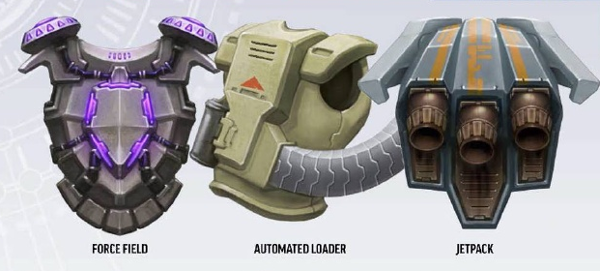
Armor also has armor upgrades, and each armor has 0 to 7 upgrade slots (and is more likely to have more of them at higher levels). And yes, armor upgrades are leveled, too! Thankfully, you can swap them between armors, and it seems like you can add upgrades to an armor above its level, as long as your level is high enough to buy them. Some upgrades can only be installed in certain types of armor (light, heavy, or powered). So let's...

... let's look at them.
- Backup Generator: Lets you build up 1 power charge for every 10 minutes of movement, which means Technomancers with Energize Spell are good with this and a lil' jazzercise or taibo or whatever space exercise is trendy in the fantasy future to get a bonus spell slot.
- Deflective Reinforcement: Gives DR 5/-, which seems really good for 7th level when damage values start to kick up, though it doesn't scale at all with the damage increases over time.
- Exit Pod: Lets you exit armor as a move action. Those slavering to use this with powered armor should note that entering the armor is still a full action.
- Force Field: Conveniently colored from brown (for shit, I presume, 3rd level) to prismatic (20th level). Which means if your enemy looks like a rainbow, you might want to run. Force fields give bonus HP, which means like all such things, they won't keep you from losing SP... mostly. They also have Fast Healing, which means those bonus HP recover after being damaged. High-level ones give a flat % to ignore crits unless they're out of HP. However, they require a standard action to activate, so if a fight breaks out, you have to spend a turn basically just punching a button to activate it. (Having a powered armor with one of these basically means you spend two turns just setting up...)
- Haste Circuit: However, activating haste is just a swift action, thankfully.
- Phase Shield: A move action gives you +1 EAC and costs you a hand (for usage, you can still hold stuff in it). Worth the sacrifice? Probably not.
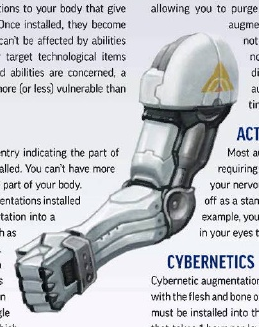
Augmentations
Yes, now you can cyber with the best of the punks. (Or bio with the best of the freaks.) There doesn't seem to be any drawback other than the fact that you can't double up on a particular location, which serves as Starfinger's equivalent of most magic item slots; magic items are restricted differently now. They're not affected by most things that affect machines unless they're specifically called out. Oh, and yes. They are level-dependent, like everything else. Some examples:
- Cybernetic Arm: Not what you'd think - these are extra arms, up to two at very high levels. Doesn't give more benefit than readying more equipment, though.
- Datajack: Hands-free computing. At mid to high levels you get a nickel or dime bonus on Computing rolls, but really all it does is let you complete a hack while shooting at bads or steering a hovercycle.
- Dermal Plating: DR, stacks with armor, but don't forget to get your skin upgraded every three levels! Seriously.
- Retinal Reflectors: You've got Riddick eyes. Why didn't you just buy nightvision goggles? Because the far future doesn't have those. Well, maybe in a supplement someday.
- Vocal Modulator: I got my entire throat replaced and enhanced and all I got was this lousy Disguise dime bonus.
- Adaptive Biochains: Lets you get a cybernetic implant as a biological implant instead? What's the advantage of that? Very little. There's like... uh... I can't find any spells that target cybernetics? Theoretically there are some?
- Dragon Gland: Get a breath weapon just like your favorite dragon!... the age category depending on your level, so you need to upgrade twice for the full effect. The damage values are listed, at least. (There are no rules for dragons in this book, either...)
- Venom Spur: Really deadly for level 2... and then just diminishes to useless after that.
- Wildwise: A throat fungus that lets me talk with animals! Man, glad I didn't get stuck with just a +2 to Disguise checks.
- Personal Upgrades: Permanent ability boosters including magic "ability crystals" that download the ability of cooler heroes into you, technological "synaptic accelerators" that enhance your nervous system (and so can make you... stronger, healthier, or more likeable...?), and hybrid magic/tech "synergizing symbiotes". Unlike other upgrades, you can pay the difference between the old and new - it's presumed every character will take these like the old ability-enhancing magic books of D&D and Pathfinder. Only... it never tells you that. Probably should note that in there. And underline it with highlighter... or, nah, let's just rely on players' system mastery.

Next: "This is the impossible level, boys. Impossible doesn't mean very difficult, very difficult is winning the Nobel Prize, impossible is eating the sun."
"We’re tweaking the rules around gear and economics and magic. We want to make it a little less bookkeeping and a little more 'sense of wonder.'"
Original SA post
Starfinger Core Rules Part #13: "We’re tweaking the rules around gear and economics and magic. We want to make it a little less bookkeeping and a little more 'sense of wonder.'"
(Credit: James L. Sutter, Starfinger Creative Director, Geek & Sundry Interview)
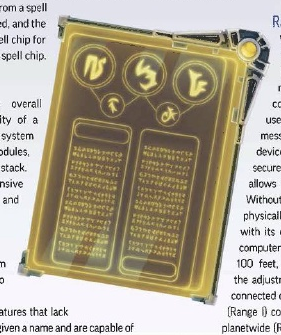
Computers
So, uh. Time for Starfinger to teach us how to hack computers. Doing is at a DC of 13 + (4 x tier), where a computer has a tier between 1 and 10. Weirdly, unlike every other piece of equipment so far, the tier is not tied to a given level (either from the perspective of PC equipment or an NPC challenge). However, trying to gain root access to a computer and do cool stuff ramps up the difficulty by 20, meaning some computers can never be fully hacked. Tier 2 or 3 is about the tops for a portable computer, however, though you can spend extra to miniaturize a computer, and it is possible to get a tier 10 computer as a wristwatch if you have a loooot of money to burn.
Beyond just using apps on a computer, reading its data, or using basic functions (like using a door), a computer has "modules" that determine four more advanced functions that require extra work to access:
- Control: Stuff that the computer runs, like a turret or a robot or even another computer. It also lists cameras, but cameras were a "basic" function just a paragraph ago, so that's unclear.
- Secure Data: Data that has been secured. Only details one topic, and runs a cost from 1 to 1,000 credits depending on how much data you're securing. Because that's how securing data works, as all IT professionals know - it's priced by the gigabyte.
- Spell Chips: So, these spell functions that cast spells through spell gems. It's notable that non-spellcasters can't use spell gems, but computers can. So if you're a engineer and you want to cast a spell, you get a computer to do it for you. Sure. Makes sense.
- Upgrades: These are several forms of enhancement - examples include AI, which lets your computer use social skills, hardened, which gives it a save bonus against effects that target computers (that aren't the Computers skill), miniaturization, range (lets it control systems from a distance), and security (a minor bump to DCs against intrusion attempts).
Finally, there are various countermeasures that take effect under various circumstances:
- Alarm: Warning: the alarm is going off, warning.
- Fake Shell: This is a fake system designed to fool hackers.
- Feedback: Inflicts a condition / penalty on the system being used to hack on a failed hacking attempt.
- Firewall: Makes a module require an extra roll at +2 difficulty to access.
- Lockout: As eimplied.
- Shock Grid: Can stun or kill hackers, but only when used first-hand by arcing lightning off the keyboard or plug or whatever. No "Black ICE" or anything like that.
- Wipe: Wipes information on multiple failed hacking attempts.
Bear in mind most modules / countermeasures cost a % of the original computer, which is a gaming concession and miles from anything realistic when an antivirus program costs you thousands of credits. It bears re-mentioning that computer tier scales well beyond level limits, so an optimized Level 20 hacker trying to hack a Tier 10 computer will only be able to gain basic access about half the time if they have the password and there is no security software. While being an operative or envoy can mitigate that, there's still a Tier ceiling even they can't cross. It's also worth noting that, bizarrely, actually having the password or security key for a computer doesn't even grant basic access automatically - it gives a bonus, but it's possible to steal somebody's password and still fail to access their computer. I guess the space heroes of Starfinger are just fumbletyping all the time? Root access can only be specifically be granted by another root access owner, you can't be clever and steal their password... because of some reason, I'm sure.
This ironically makes social engineering far more valuable than Computing itself at high levels. If you're trying to hack into a Tier 10 system, literally the only way to do that is by to convince a system administrator to grant you access. No amount of jacking in and running the net will allow you to beat a DC of 73 as the game is written now as far as I can see with the math. Even a stolen password won't get you very far there.
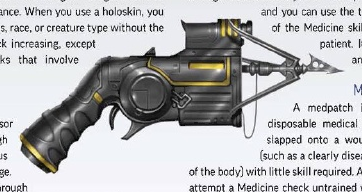
Technological Items
No 10' pole listed, but we do have comm units, detonators (with rules for explosives that are easily missed), fire extinguishers, grappling hooks, holoskin (for cancelling disguise penalities and cool CGI mask yankaways), laser microphones, locks, medical gear, motion detectors, portable lights, restraints, signal jammers, spy drones, tool kits, and x-ray visors.
Why, yes, of course equipment is tied to level. Grappling hooks are level 2, handcuffs are level 4 (zip-ties are only level 1), laser mics are level 5, motion detectors and medical labs are level 7. Seriously.
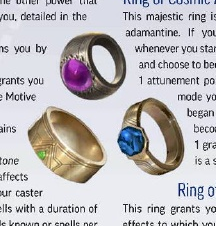
Magic Items
Yes, because we have space wizards, we have space wizard items. Now, because we're already loaded down with armor mods, cybernetics, etc., magic item location has been simplified from Pathfinder's complicated location-based list down to... two magic items that have to be different types unless they're rings. Sorry Zaphod, you can only wear one space magic hat. There are also magic consumables like potions injectors or scrolls gems.
And we'll go over some of them, of course. There aren't nearly as many as in d20, mercifully.
- Aeon Stones: These don't count against your magic item limit (even with themselves), but the only one that's really notable is the Pearly White Spindle, which increases your spellcaster level by 1 for purposes of spell effects only. As currently written, there's no limit to the number of them and no indication they can't stack, so the best wizards have a planetary ring orbiting their head, apparently.
- Charge Cloak: Lets you expend a charge once per day to power a device, another tool for the Energize Spell spellcaster - not by powering their spells, but to fuel their weapons after they've drained them of their power.
- Ring of Cosmic Alignment: Gives extra attunement points for Solarians, so they basically want two of these as soon as they can afford them at Level 11.
- Rod of Cancellation: Drains items of magical properties, but a lot less useful than it is in a normal Pathfinder game for obvious reasons. (Especially when magic items will often be sealed away under environmental armor.)
- Shadow Orb: Dampens light around you and gives you resistance against laser damage... but makes lasers very slightly more likely to hit you because they bend towards the orb. But as per the rules, they never hit the orb, they hit you.

- Spell Ampoules: Like magical potions, but with the advantage of being usable on other willing creatures.
- Spell Gems: Like magical scrolls, but gems.
- Staff of Mystic Healing: Gives an additional healing use for the Mystic.
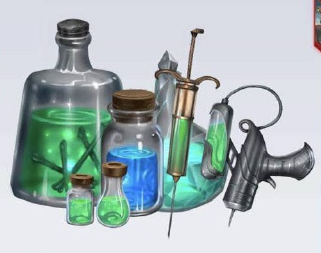
Then there are serums, which are basically magic potions that don't simulate a specific spell effect. Most of them give +2 to two skills and and a specific bonus - "commando" gives extra temporary hit points, "diplomat" gives an extra language, "scientist" lets you make untrained science checks, etc. There's also the Serum of Appearance Change that lets you change your appearance (but not race or gender) but not enough to copy anybody else because game balance. "Well, it says I have... well, it says here I have blue, but I decided I wanted grey eyes." We also have the Serum of Sex Shift, which I was like "Oh that's progressive." until I noticed it was Level 3. Because... game... balance? Granted, that's just barely in range to buy at Level 1 if you're in a "major settlement", but too high of a level for starting characters to get in a "typical settlement". It'll also cost you 1/3 of your starting cash, which I guess is significantly cheaper than RL trans procedures, but... yeah. I dunno. Requiring transgenderism, non-binary, postgenderism, etc. to bow to the universal demand of game balance feels pretty damned bizarre.
This equipment system just gets weird. And stupid. Can I go back to doing lists of guns from Rifts now? Palladium equipment rules may be trash, but they never asked me to log a thousand adventuring hours before I could buy a rocket launcher.
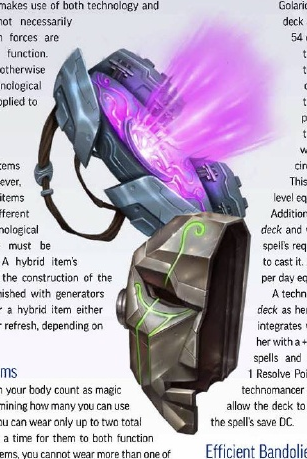
Hybrid Items
No, I can't. We're close to done, but not done. Hybrid equipment is supposed to consist of technological / magical fusions, but the net theme you end up for is "psychic stuff". They count as magic items for the purpose of wearing them, and can get nailed by either anti-magic or anti-tech effects.
- Mnemonic Editor: Because this is Starfinger, we can't just have character rebuilds. Oh, no. That would be simple. Instead, you need one of these, which basically function as a ticket to undo your last two character levels of advancement, allowing you to redo them. Best hope you remember what you picked, because you have to adhere to it. And if you think you can buy this once and share it with your crew, think again - it burns out and is unusable after one use. If you want to use this more than once, you need to get more expensive, higher-level versions. Ironically, given the minimum level of 5, it's unlikely that you'll have a chance to undo your first three levels - probably when you'd still be learning the system and need it the most.
- Null-Space Chamber: There are other weight-saving items like a Glove of Holding or the Efficient Bandolier, but this is a proper Bag of Holding equivalent that creates a dimensional rift designed to hold all your dumb crap.
- Starstone Compass: Apparently there's a "Starstone" at "Absalom Station" and having a literal compass that homes in on it helps in astrogation. It's not that interesting, but I figured I should comment on more than two things!
I just- I'm going to go on about the Mnemonic Editor for a moment. Because this is a game that bends over backwards for the equipment treadmill, but doing character rebuild, oh, that's a step too fucking far and we need to punish the character for the player's lack of system mastery.
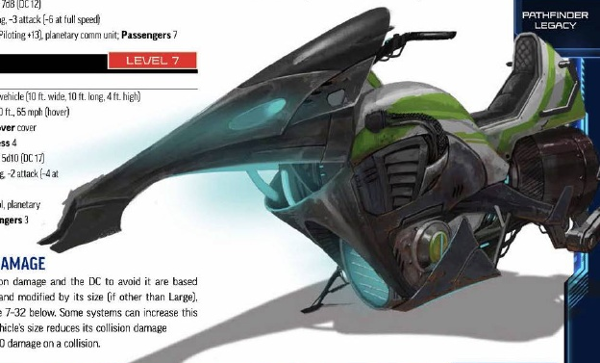
Vehicles
So, these are for riding, from the "goblin junkcycle" to an "exploration cruiser" to a "pump-jet sub". They have their own speed - which has a massive disconnect between their "drive speed" and "full speed", where the full speed is often 10 to 25 times as fast. In fact, the cruising speed is almost always slower than a person on foot. I've flipped forward to the vehicle rules section twice now and tried to see if there was anything I was missing, but it seems legit. And by "legit", I mean "broken". We'll be getting into the whys of wherefores of that once we get to the vehicle rules, though, which are a unique sort of rules disaster. They get their own size, AC, Hardness, HP, passenger count, skill modifiers (for pilots), item level, and collision damage.
Bizarrely, collision damage is based mainly on item level and size to a much lesser extent. That means between two vehicles going the same speed and of the same size and weight, one can do significantly more damage because of its higher level. Though there aren't any great examples here, it's also possible for a hovercycle to outram an armored APC because its level is higher. If that wasn't odd enough, the vehicle list ends at level 7 in this book. That means, like the videogame Borderlands, vehicles can currently get outleveled by the game math to the point where they become potential deathtraps, destroyed by the slightest at-level incidental attack leveled in their direction. Presumably we'll get some higher-level vehicles down the road, but for now they're a weird, neglected part of the equipment section.
Other Purchases
We have "personal items" which are basically equipment by any other name, just not with moving parts or electronics. You've got your backpacks, glue, clothing, hygiene kit, space suits, and tents. There are a few drugs - painkiller (bonus against pain saves, but you're flat-footed for a time), antitoxins, and sedatives (inflicts nonlethal damage). There are poisons here, but they're not statted. Are you interested in grain, textiles, or polymers? Those are detailed too. We get food, lodgings, services, and transportation.
Crafting equipment (tech, magic, or otherwise) requires units of "Universal Polymer Base" to basically 3D print it, but you still need the appropriate skill to craft it, because shut up is why. Starfinger's 3D printers apparently can't have plans downloaded to them, or something? However, crafting equipment doesn't change the cost. If the GM is nice, they might let you save 10% from parts taken from spare equipment (essentially the resale price for that stuff). The only advantage of crafting is being able to make stuff when you have time to do so, enough "UPB" to craft with, and no communities nearby to purchase from. Why? Because you can't use skills to fuck with the equipment treadmill even in the slightest, that's why. There's at least the neat note that UPB is used as a black-market currency because it's useful and untraceable.
Until this chapter, I was pretty neutral on this book. It was kind of dull to me, sure, but it was better than Pathfinder. The equipment section, though, is such a mess. It's weird because they obviously tried to reduce bookkeeping in other areas of the game, but actively made the equipment treadmill require much more bookkeeping, throwing out alternative solutions from D&D 3.5 and books like Unearthed Arcana or Weapons of Legacy. It grates at seeing just how hard they lock basic capabilities of the genre behind level gating to represent a system that has nothing to do with fantasy fiction, nothing to do with space opera, and mostly just requires an excess amount of accounting to make numbers go higher. Worse set, basic sci-fi / modern-day items like nightvision goggles or translators are not to be seen, because those have been cordoned off as character abilities because... because... they're already cordoned off as racial or magical abilities. Seriously.
Next: Time to use all those adjectives on your gun.
"Flintlocks are under most circumstances a terrible idea."
Original SA post
Starfinger Core Rules Part #14: "Flintlocks are under most circumstances a terrible idea."
Owen K.C. Stephens, Starfinger Design Lead, GenCon Q&A Transcript posted:
There's nothing you can do with a flintlock that a fully automatic rifle can't do better. Swords is a different question. One of our core deities is Iomedae and she fights with swords. We've got effective technological sword options throughout your class options.
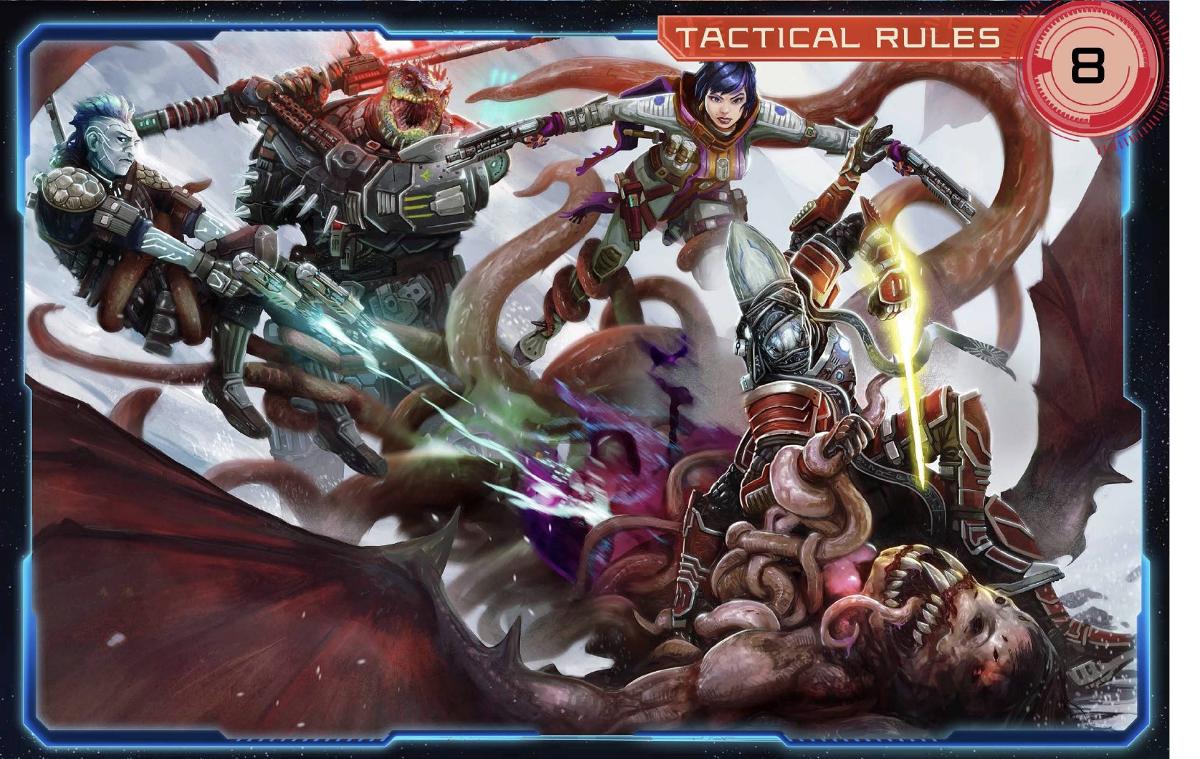
I've mentioned it before in this review, but it's worth re-mentioning: I'll mainly only be discussing how this combat differs from normal d20 combat. For the most part, combat is the same was it was in Pathfinder. There are, however, some differences:
- Attacks either target Kinetic Armor Class (bludgeoning, piercing, or slashing) or Energy Armor Class (acid, cold. electricity, fire, or sonic) based on their energy type. If they would qualify for both, KAC takes precedence.
- You lose Stamina Points before Hit Points. However, unlike other d20 games, you can't go below 0 HP. If you're at 0 HP, you fall unconscious and start dying, and lose 1 RP at the end of each round unless somebody stablized you. If you can't pay the 1 RP, you die. If you have 0 RP when you hit 0 HP, you get a single round to be stabilized or die.
- Yes, you can be punished by using your cool abilities too much with straight-up death. It's like they decided Healing Surges from D&D 4e were cool, and then... completely misimplemented them by making them the main currency for class abilities as a whole.
- Instant death ("Massive Damage") occurs when you take damage that reduces you to 0 HP (or if you're already at 0 HP) and the remaining damage would be equal to or greater than your HP. Not going to come up too often save with low-level characters and egriguous circumstances (falls, collisions, etc.), but it's another way to easily insta-die at 1st level, at least.
- There's notation that enemies can be declared no longer "significant enemies" to PCs, apparently to keep players from milking the benefits of healing combat abilities and to cut combat off before that's an issue, so people can be forced to spend RP to recover. Of course, if RP wasn't tied to to death avoidance and fun powers, that probably wouldn't be something players would be desperate to do...
- At level 3, all classes get Weapon Specialization with specific types of weapons according to their class, but can take a feat for other weapons. This means you add your character level in damage when using that type of damage, or one-half that with small arms or operative weapons. You can't specialize in grenades, however.
- There are no free actions, just standard / move / swift. Reactions replace immediate actions.
- Critical Hits no longer roll for confirmation, if you roll a 20 and would score a hit normally, it's a crit and you double your damage. This may seem like a nice simplification, but it's more punishing for player characters who take more hits and have to deal with attrition, unlike most non-player characters.
- Attacks of Opportunity have been reduced down to triggering when somebody moves out of your threatened space without a "Guarded" step or withdraw action, or when somebody attempts a ranged attack, spell, or spell-like ability in melee. Running also always triggers an attack of opportunity. There is no limit to the number of Attack of Opportunities you can make, this time around.
- Combat Maneuvers no longer trigger Attacks of Opportunity. This is a good change! In general, they've been simplified, requiring a successful roll against the target's (KAC + 8)... so unfortunately the good change is balanced by making them vastly less effective. (The feat Improved Combat Maneuver gives +4 on the, basically reducing it to KAC +4 instead.) Dirty Trick, a combat manuever from the Advanced Player's Guide that lets you inflict a 1-turn condition, makes a reappearance. It can now be done at range with a penalty with the GM's discretion (presumably for things like a rock to the jimmy). Disarm and Sunder are now ridiculously good at mid-to-high levels against armed enemies if you can hit, due to the dependence on weapons to deal effective damage. Trip can send people tumbling in zero-G.
- Covering fire is a new action where you can do an attack that does zero damage, but grants +2 to an ally's AC for one turn. Really, only one ally? Okay... there's also Harrying Fire, which is similar, but grants a single ally +2 to hit a target.
- Guarded Step is a "new" move action that moves you 5', but ignores Attacks of Opportunity for movement.
- The only things counted under swift actions are changing a weapon from one-handed to two-handed (or vice versa) or dropping prone.
- Multiple attacks are still done with the full attack, but now basically you can make two attacks a round with a penalty of -4 to both attacks at any level, unless you have an "unwieldy" weapon. Combat-focused classes (like the Solarian or Soldier) get a third attack at later levels, taking a -5 or -6 to all said attacks. The Operative gets a third and fourth attack at -4, but only with Operative-approved weapons (which do lower damage as a rule).
- You can spend RP equal to one-quarter your maximum (minimum 1, maximum 3) to Stablize yourself. There's no timing listed on this, so I presume you can do it any point. You can also spend 1 RP to regain 1 HP (but no more than that) if you're stable at 0 HP. If you're stablized at 0 HP and there's nobody around to help you recover, you roll a straight Con check. If you roll 20 or higher, you regain 1 HP and consciousness. If you roll 10 or higher, you remain stable. Less than 10? Well, you die. Ah, saves vs. death in 2017. And it's not even level-based! You can die this way at level 20, no bonuses save what you've invested in Constitution.
- You still only recover 1 or 2 HP per character level per day, so the tougher you are, the slower you heal. This isn't new, but it still amuses me. Well, at least SP is easily regained now.
- Size now only seems to affect a creature's reach and miniature size, it's not brought up under attack or defense or referenced much. Technically, it's now possible for a ysoki to grapple an elephant - strength permitting. Presumably, the statblocks of large creatures will cover that sort of thing, but it's not clear yet.
- I'm halfway through the book now, ~hooray~.

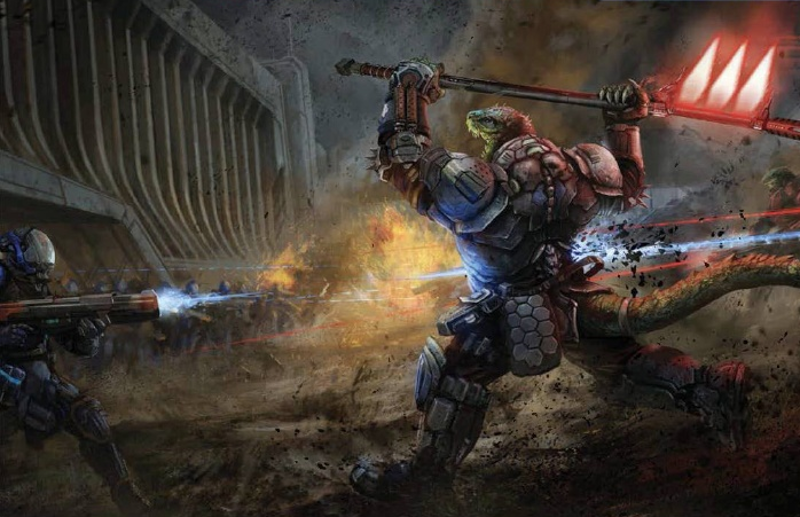
We also get a lot of terminology for senses, where you're "unaware", "aware of presence", "aware of location", or "observing", lots of discussion of lighting... and all the sorts of things that's essential to dungeon environments but seems less useful to a space game, unless you're largely just trying to recreate space horror/action like Aliens or Pitch Black - which I guess works given that Starfinger wants to be all space things to everybody.
We have details on special abilities, the only part of which that seems new is the "See Through" ability for Kryptonians with X-Ray Vision or-
Starfinger Core Rules posted:
. For example, a lycanthrope with sense through (scent [blocked by silver]) can smell through walls-but not through even a thin layer of silver.
Well, that's a weird example. Thankfully, my silver body stocking renders me unsmellable, and protects my essence. We get details on bonuses and penalities and what stays or doesn't stack. We also have details on area templates and effects, descriptors, durations, ranges, targeting, etc. - all mainly for spells and similar effects.
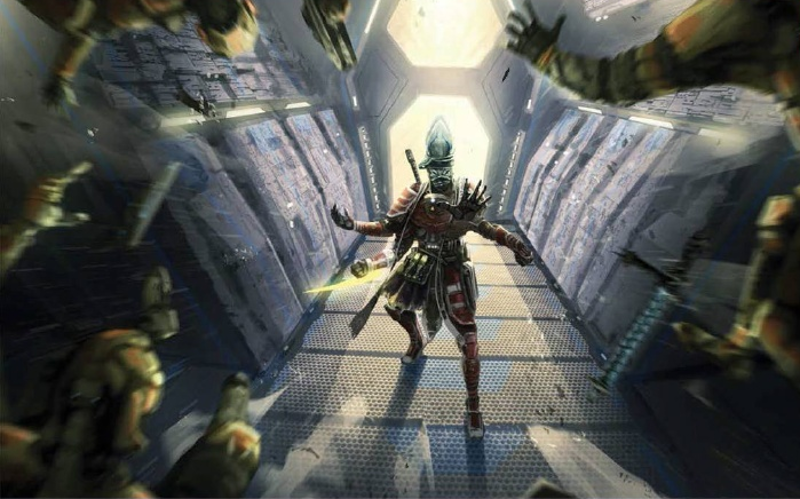
Conditions get covered here as well. New conditions include:
- Burning: You're on fire, and take X damage each turn (or 1d6 if unspecified), but you can make a Reflex roll to smother it (+4 if you stop, drop, and roll) or automatically end it if you drive in water or the like. (No mention of vacuum, which apparently does not stop fire. Ooops.)
- Encumbered: Covers carrying too much, giving a penalty to speed, Dexterity and Strength checks, and limits your Dex bonus to AC.
- Off-Kilter: This is the condition for being disoriented in zero G. You can't take most move actions, are flat-footed, and have a penalty to attacks until you can either use a method of propulsion to right yourself or steady yourself against a surface.
- Off-Target: A small penalty to attacks.
- Overburdened: The worse version of encumbered, which only occurs under special conditions as noted way earlier.
Cowering, Disabled, Fascinated, and Petrified are no longer listed. Things like Energy Drain, Invisibility, and Incorpeorality still exist but are listed elsewhere.
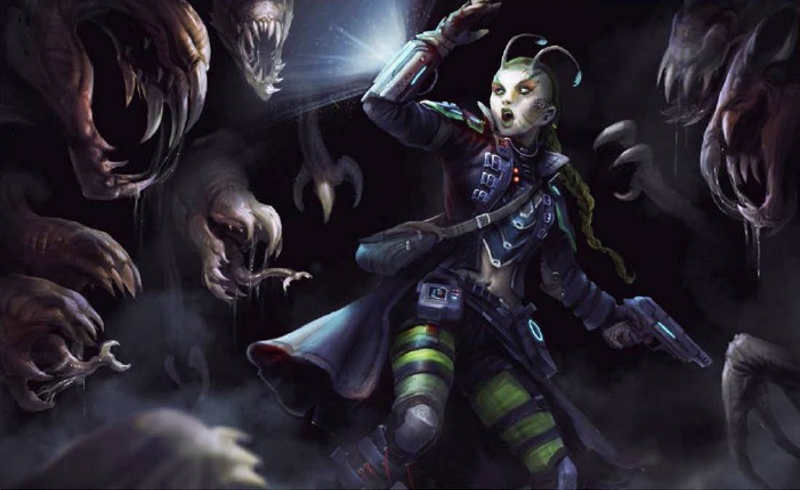
Keeping this short because it'd be easy to get bogged down if I go through a full summary - and most people will already know d20 combat. Next time, we'll get into the all-new rules and, well...
Next: *crashing sound*
"We don't have anything designed to be a Gundam, again because that's just not a Core Rulebook issue, just like we don't have howdahs in the Pathfinder Core Rulebook."
Original SA post
Starfinger Core Rules Part #15: "We don't have anything designed to be a Gundam, again because that's just not a Core Rulebook issue, just like we don't have howdahs in the Pathfinder Core Rulebook."
(Credit: Owen K.C. Stephens, Starfinger Design Lead, GenCon Q&A Transcript)
Vehicle Tactical Rules
Even though vehicles only get a token listing in this book, we get the full vehicle rules, and there sure are a lot of them! Vehicles work in weird ways in Starfinger. I've read this several times and still am left thinking I must be getting something wrong, but I'll try and break it down.
- I'm in a future car, specifically an "Urban Cruiser". It has a top speed of 55 MPH. That's right. Future car is slower than your modern car. Whatever car you own, it is almost certainly faster than this.
- Future car, however, can accelerate from a dead stop to 55 MPH in 6 seconds. Well, technically, in 0 seconds, because it happens before you take any actions. But I have to make a Piloting check at DC 17. If I don't make it, the car stalls and does not move at all. If I don't want to risk that, I can start by moving its drive speed, instead. The drive speed is 2-8 MPH, slower than your average character's movement. In order to accelerate from 2 MPH to 55 MPH, I have to make a Drive roll at DC 12, or I lose control and perform a random 45 or 90 degree swerve. In case you're wondering if there's a way for me to take it slow, no. Either I'm going 2 MPH or 55 MPH.
- Once again, the drive speed is 2 MPH. Maybe 8 MPH, if I'm allowed to "run" as a vehicular action. Not sure about that. 4 MPH seems more accurate. Either way, not fast.
- But, after stalling once or twice, I'm up and running and driving 55 MPH. Blazin' in my six second car. But I've got a small problem. I can't turn. I can lane shift, but at this speed I'm not allowed to change my direction. I can't turn.
- Which is a problem, because I've got a 30 degree turn coming up. So I shift down to my move speed and all but stop the vehicle. Then, at 4 MPH, I crawl through the turn like a turtle on 'ludes. Then, I accelerate back up to 55 MPH and I'm on my way!
- ... or at least, so I think, until one of these turns where I fail my Pilot check, turn 90 degrees, and fly off the road at 55 MPH. Due to the timing involved in braking, I cannot stop at that point. I will crash. Also, I may be a comedy sketch cat.
What the-? How is this supposed to be remotely functional? I'm not expecting GURPS Vehicles here, but it's a hilarious farce. Maybe there's an error and the drive speeds are supposed to be faster - if they were ten times faster, these rules would be wonky, but... at least closer to functional. As it is, you're not likely to make a short drive to work without flinging yourself off the road. Now, to be fair, you can Take 10 on your driving rolls if the GM lets you, and there are no lasers popping off or anything distracting you. Hopefully, you've got enough skill ranks to do that with. Otherwise, off the road you go!
As far as I can tell vehicles have a low "drive speed" (i.e. combat speed) to make sure they don't unbalance combat, since they offer protection, and this bizarre full speed for overland travel but they can't turn. Yes, for some reason the combat tradeoff... for vehicles... was to make them go slower than people.

In addition, to do anything other than drive - because going to that "race speed" of 55 MPH is a full action - like making an attack, even with vehicular weapons, you'll have to slow down to 2 MPH. And these people are going to give us starship rules? That oughta be a sight.
Oh, here's a bonus: no crash ever kills anyone in Starfinger. Crash damage is taken by the vehicle. "Oh," I hear somebody mumbling, "- that's just an appropriate part of genre fiction." True, to an extent, unless you're being played by Alan Tudyk. But it also leads into the interesting followup tactic: buying vehicles and just ramming them into enemies, since you take 0 damage and they'll take whatever the full damage is. I mean, yeah, they get a Reflex save to avoid it, but a friend with a stickybomb can help out with that... presuming you can actually steer your vehicle into them and don't just swerve around wildly.
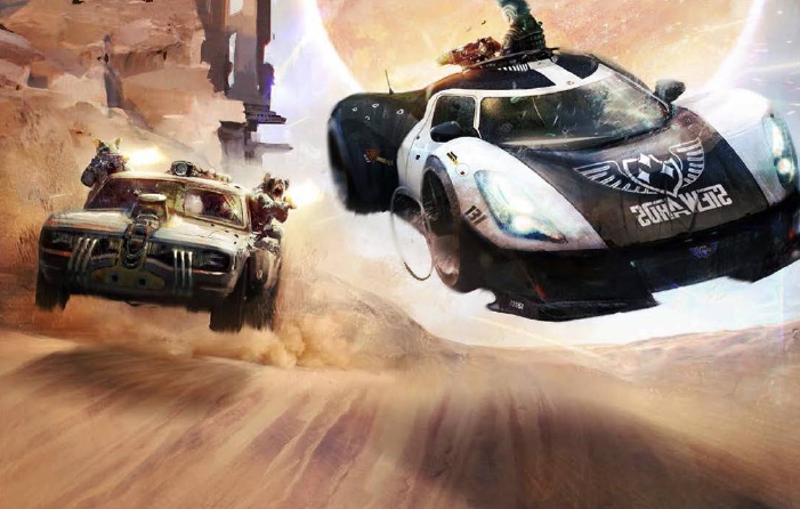
Future Fantasy Cars. 

Vehicle Chases
So, chase rules.
Chases are divided into "zones", and vehicles in the lead get an advantage. Essentially, there are three phases. The drivers choose their actions and act in initiative order. They can take one half action or two, if they take two, they're at -4 on each. Then, any changes in zones are tracked, and then passengers (and pilots, if they only take a half action) act normally in initiative order for shooting or mid-car acrobatics or whatever.
Pilots are usually using the Keep Pace to keep steady or Speed Up to move an extra zone. However, they can also Evade to improve their vehicle's AC, Slow Down to avoid having to make any Piloting rolls, or Trick to give a penalty to chasing vehicles. They might also Engage Another Vehicle to move into melee / boarding range with another vehicle, or try to Break Free from another vehicle engaged with them. Success on any Piloting check moves you up a zone, failure means you stay where you're at. Speed Up is the only way to gain a second zone of movement in a turn. Engaged vehicles stay together if possible, so if one advances and one doesn't, they both advance. Getting more than two zones behind any other vehicle means you get left behind. You can deliberately not rush ahead if you want to stay in a chance, though.
Most of the DCs are dependent on the move you're doing, the level of the vehicle you're driving, or the KAC of the vehicle you're maneuvering against. As such, you have the weird side case that if you want to do better in chases, you might want to pilot a vehicle lower than your level. That carries the risk of having less HP / being more vulnerable, of course, but it's a weird tactic that results from weird rules. You may say "wouldn't high-level vehicles be faster?", well, I'll point out that your vehicle's top speed has almost nothing to do with the chase rules.
Again, for people skimming: the vehicle's top speed has almost nothing to do with the chase rules. The only time it comes up is that if you have a vehicle that's significantly faster (like, 50 MPH faster), you get a reduced penalty on multiple actions from the driver. That's all! A Police Cruiser can be racing a Goblin Junkcycle, and, despite being over twice as fast, it gets no advantage. Every time I see them try and come up with a new mechanic so far, it's where things fall apart. Like, every time. I thought with nine people on the design team, somebody might notice something like "Did you realize our Chase rules don't account for speed?" or "Why is it harder to drive better vehicles?" or "Why can't you steer a vehicle going 55 MPH?"
And now it's time to see that design team crash right into a wall. You can't blame them, though, if they were driving under their own rules...
Wait, I just realized something about the above picture. I had suspected this kind of thing given the "iconic" Envoy's dye streak swapping sides, but let's take another look at it.
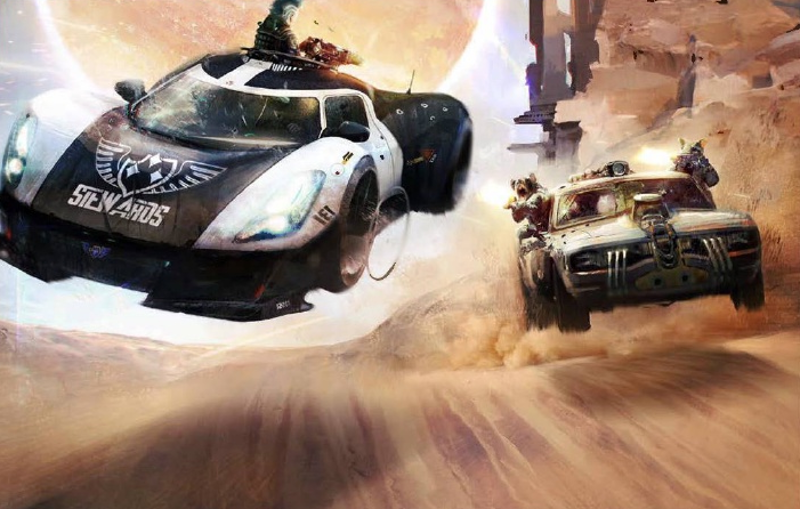
Wow. Ooops. Consider this a friendly reminder of what not to do, for you layout professionals out there. 

Next: "I canna' do it, captain! I just don't have the [roll modifier]!"
"I actually went in thinking: 'Oh yeah, starships are just how you get from Place A to Place B.'"
Original SA post
Starfinger Core Rules Part #16: "I actually went in thinking: 'Oh yeah, starships are just how you get from Place A to Place B.'"
James L. Sutter, Starfinger Creative Director, Game Informer interview posted:
Like, what I want is delving into bizarre ruins on alien planets. And then some of the other people on the staff, most notably Erik Mona, the publisher, and Rob McCreary, one of the senior developers, were saying, “No, that’s crazy, this game needs to be about starship battles and strafing a star destroyer and flying through an asteroid field. That’s the science fantasy that we’re interested in.” So we ended up with this dual mandate: The game needs to be both. So while you absolutely can play a game that’s just entirely in one location, or where starships don’t play a big part, the base assumption is that your adventuring party is not just an adventuring party, but a starship crew.
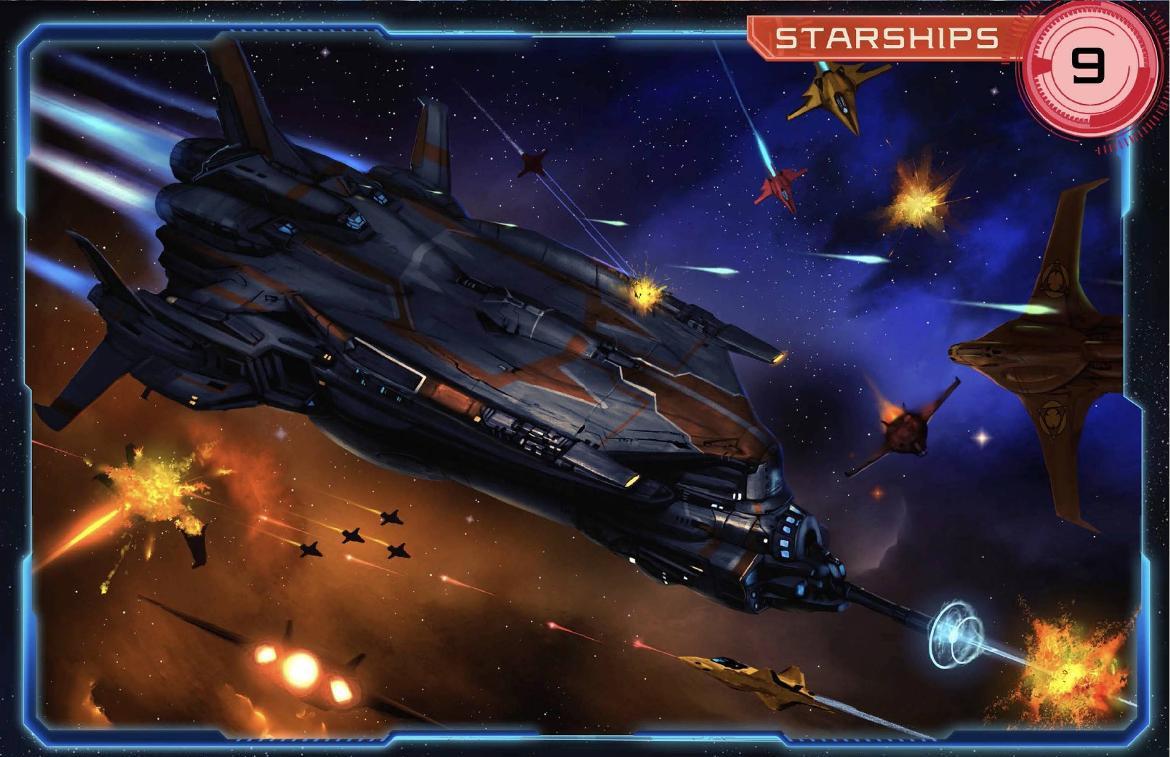
(Also, don't get too excited by the big space battle above, Starfinger rules don't support something like that on any practical level.)
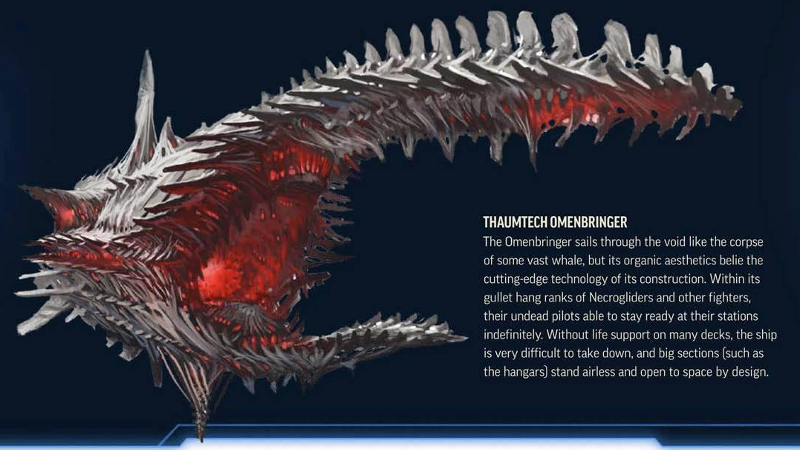
But before we see one of Starfinger's biggest faceflops, we get some of the first setting detail we see in the book. Apparently, though the "Pact Worlds" were able to develop a variety of interplanetary drives, they couldn't do interstellar travel. But three years after "the Gap", there was "the Signal" that sent out information on how to create an interstellar drive through dreams and crashed space probes or scrawled by robots across the universe. In short, he plot boot dropped and suddenly space travel happened. However, only cultures that were advanced enough to use it could, you had cavefolk occasionally getting starship plans that they presumably took a big cave shit on and forgot about.
Then, a god named Triune showed up before the Pact Worlds and was like "So, how about those space engine plans I just farted out, hot shit, huh? Worship me." It seems Triune was a trinity of networked minor gods that discovered "the Drift" and used it to become one of the most powerfulest gods thanks to various cultures now venerating it for space travel.
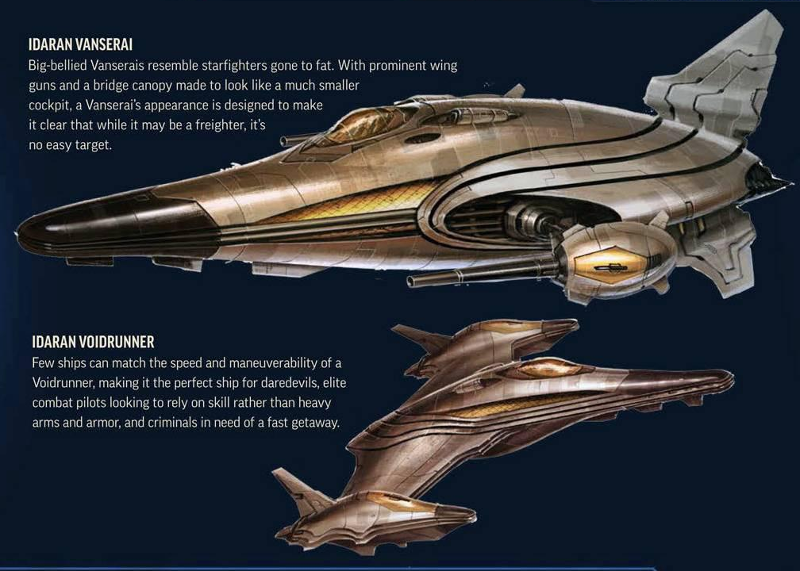
So, spaceships go through The Drift to get to anyplace fast, as it serves as this game's stand-in for hyperspace. The Drift is another plane only accessible through technology (so no plane shift-ing there), and Triune oversees it and makes sure nobody seriously fucks with it. But there's an issue where making space jumps through the Drift tears away a piece of a random plane (at first I thought it was the plane you're jumping from, which would be logical, but no, it's random) so you might accidentally tear a chunk of Heaven or Hell into the Drift with your space travel. Nobody seems to care too much about that aside from the gods themselves, but they aren't doing much about it, from all appearances. It's rumored that Triune is trying to increase the size of the Drift and decrease the size of other planes for mysterious reasons. It's a space oddity.
We get travel times by conventional thrusters and or by drift tech. In settled regions, there are space beacons that one can orient by, and so travel is relatively fast, around 3d6 days with a small chance of a random encounter (10%). Traveling into uncharted areas within the galaxy is 5d6 days with a notable chance of an encounter (25-50%). Nobody has returned from attempts to perform intergalactic travel with Drift technology. There is also Absalom Station, which contains the "Starstone" that apparently makes it easy to travel to for unstated reasons, and you can safely travel there in 1d6 days regardless of your location - and so it's clearly intended as a central hub for characters. Travelling with Drift engines requires you to stand still for 1 minute, so attempting to do so is essentially banned from combat unless you're willing to just take hits for sixty seconds. It doesn't mention this here, but ships with better drives divide these numbers by their drift rating.
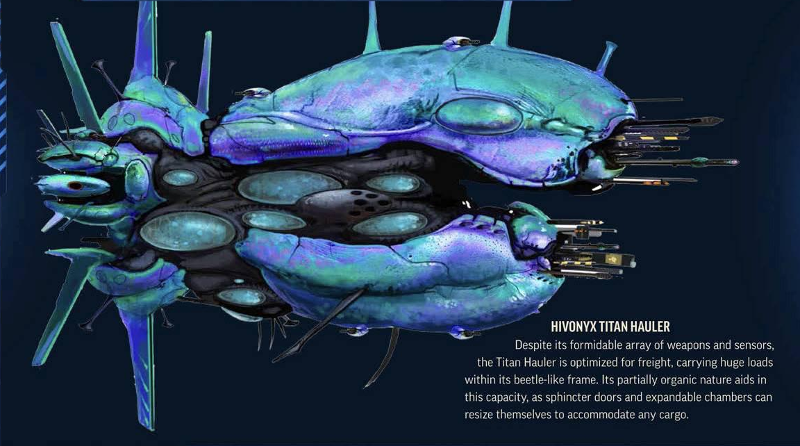
Building Starships
So, even at Level 1, player groups generally get a starship unless the GM declares otherwise. No credit price is put on them, so forget buying one conventionally even if you theoretically could. Instead, you get Build Points (BP) based on your spaceship's tier, and players get a tier of spaceship based on their average character level - 55 BP at Level 1, and 1,000 BP at Level 20. You choose a basic frame, from a small racer or fighter to a carrier or dreadnought, each of which has a BP cost. You then add on the power core (which gives you a budget of "Power Core Units" to power systems) and the thrusters which also cost you BP. Once that's established, there are optional-but-often-necessary systems like armor (+AC,-TL*), computer (bonus to ship-based skill checks), crew quarters, defensive countermeasures (+TL), drift engines (bigger = faster), expansion bays (cool rooms and cargo bays for the most part, but also a few things like escape pods), security (various systems from anti-hacking to a self-destruct system), sensors (better range and bonuses, can scan other ships), shields (add regenerating SP to a ship), and, of course, weapons. Note that unlike all other equipment, nothing is level-based here - it's all point-buy. Note that ships are considered to be on a scale entirely different from normal engagements, and it's suggested that starship attacks on characters be treated more like hazardous environments with explosions going off all around than straight-up fights.
TL = Target Lock, your ability to avoid being locked onto by homing missiles and the like. I know, it sounds like it would be your ability to lock on, but it's the opposite.
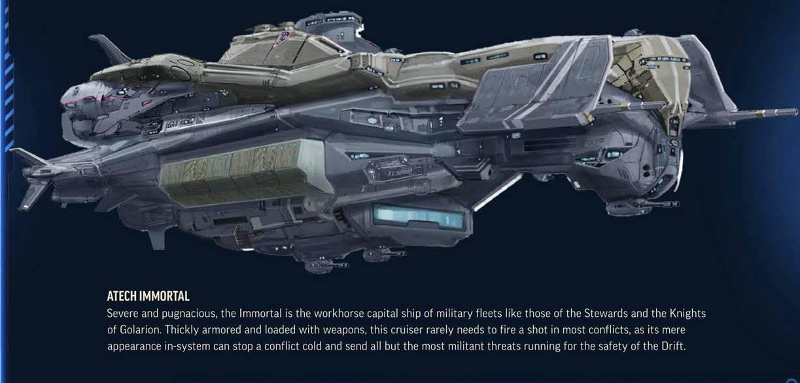
Mind, it's hard to evaluate the system without building a ton of ships, but I'm sure ship optimization will have a field day on forums. In general, ship size breaks down into three categories on account of the classes of weapons you can mount: racer to explorer (light weapons), transport to bulk freighter (heavy weapons), and cruiser to dreadnought (capital weapons). A ship's HP level up only every 4 levels, and damage remains fixed by weapon, so the only real way to improve your damage is to make get better (more BP cost) weapons for your size or get a bigger ship, since damage isn't affected by PC level or abilities. Heavy freighter is probably the largest ship that can be crewed by PCs alone, requiring 6 stations (which means if you have 6 PCs, presumably one's sitting on their thumbs rules-wise because the rules are based around 5 PCs). Having a bulk freighter or anything larger is going to require an NPC crew, which will cost you (2 x skill bonus) credits a day. However, since they won't be making rolls, I imagine you just need to make sure they have the skill; recruiting a gaggle of incompetent redshirts would seem to be the way to go. Conversely, small one-pilot fighters have a serious problem where they can't pilot or shoot at the same time, and have to rely on computers or the like to do one of the other for them while doing the other, resulting in penalties. These rules are focused largely around mid-sized ships and everything else has scaling issues.
In general, that starting 55 BP won't get you much of a ship. Power cores and weapons are limited by size, and in turn thrusters, drift engines, computers, shields, and defensive countermeasures require decent numbers of PCUs. Drift engines are the biggest hogs, and though you can theoretically put drift engines on a fighter, it's not the most practical endeavor and you'll end up with a notably weaker fighter. Sorry, would-be x-wings Ironically, better drift engines have a "maximum size" so the best drift engine can't be put on anything larger than a transport - but the largest power core there this for a transport is 300 PCU, and the largest drift engine requires 200 PCU. Building a vehicle to reduce downtime is going to cripple its ability to engage in fights for its level (as that's the same PCU pool weapons, shields, etc. require), which seems to be the biggest issue. (And, as aforementioned, warping takes a minute no matter what, so don't think your fast drift ship can just avoid combat that way.) In general, the starship rules look solid enough, but the point-buy system means you have to be wary of choices which impact your ship's ability to fight at its tier level. Granted, this is nothing new for point systems - it's a problem that's dogged them since the days of Champions - but it remains an issue here.
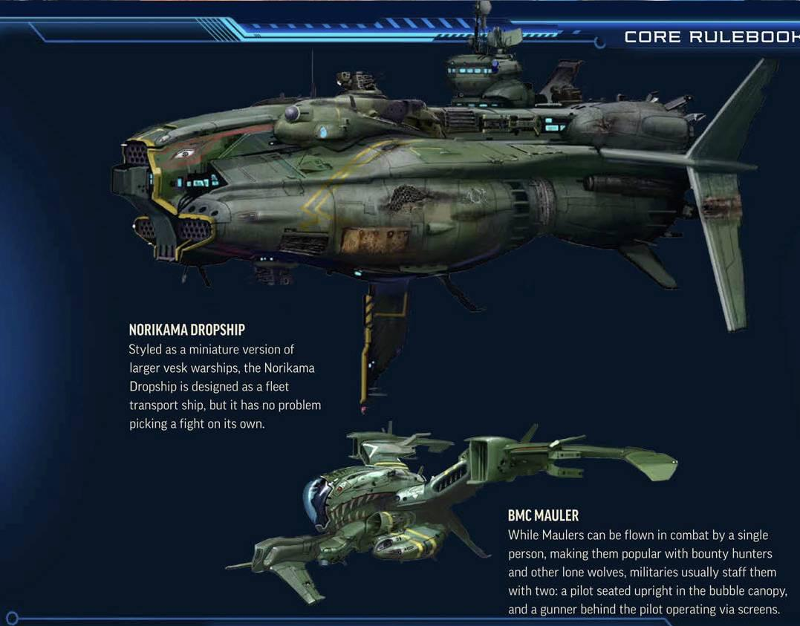
Then, get get sample ships known within the Pact Worlds, whatever those are. There's no frame of reference for these yet, mind, since we haven't heard much about the setting. I know as much as you do. I'm not going to talk about the statblocks too much because they aren't that interesting and are pretty much what you'd expect.
- Eoxian Ship Styles: These are ships of bone and other dead-themed stuff piloted by "elebrians and other undead". Apparently, they don't need protection from the radiation or space. Apparently there is also a "rogue Corpse Fleet" that attacks people of the Pact Worlds as well. The ships listed are the "Death's Head Necroglider", a small interceptor that looks like a coffin, the "Blackwind Sepulcher", a rib-like transport, and the "Thaumtech Omenbringer", a battleship themed after a dead whale. I wonder if these guys will be our friends?
- Kasathan Ship Styles: So, these are generally new ships produced by the "government of the Idari" (kasathans), which are golden ships that look sleek but with a lil' chub to them. Just a lil' chub. They supposedly have magnetic sections that can split apart in a modular fashion, but there are no rules for that, so fuck. We get the "Voidrunner", a small racer, the "Vanserai", which is a well-armed freighter, and the "Millennia", which is a carrier designed after a bird skull.
- Pact Worlds Ship Styles: So human / elf / dwarf / etc. Larger ships are big blocky humans-from-Babylon 5-styled-meet-the-Yamato affairs while the smaller ones are jet fighters. They're intentionally generic! There's the "Ringworks Wanderer", a small shuttle sometimes armed up for combat, the "Kevolari Venture", an exploration vessel on a whatever-year mission, and the "Atech Immortal", a big fuckoff ship which has tiny fins for some reason.
- Shirren Ship Styles: Bulbous organic ships, but ones that have incorporated more traditional technology over time. Apparently the largest manufacturer is a group of pacifists that have software that lock down all weapons unless the ship has taken damage, but apparently everybody deletes the software and the manufacturer gives no further fucks. Quite the firm moral stance, there. We have a "Starhive Drone Mk III" which is a small bug-looking freighter, a "Uie Hiveguard" which a fishbulb-looking destroyer, and the ""Hivonyx Titan Hauler", which is supposed to be "beetle-like" but looks like another fishbulb to me.
- Veskarium Ship Styles: Since the vesk are generic military guys, they get generic military ships in army green, all the better to blend into the darkness of space. Apparently baddies and grey-area types like their ships but good guys would never disrepect them by using their ships or something something... anyway. We have the "BMC Mauler", a small and tough fighter, the "Norikama Dropship", because I guess the vesk are part Japanese, and the "Vindicas Tyrant", a giant baby born from a C-130 and a battleship.
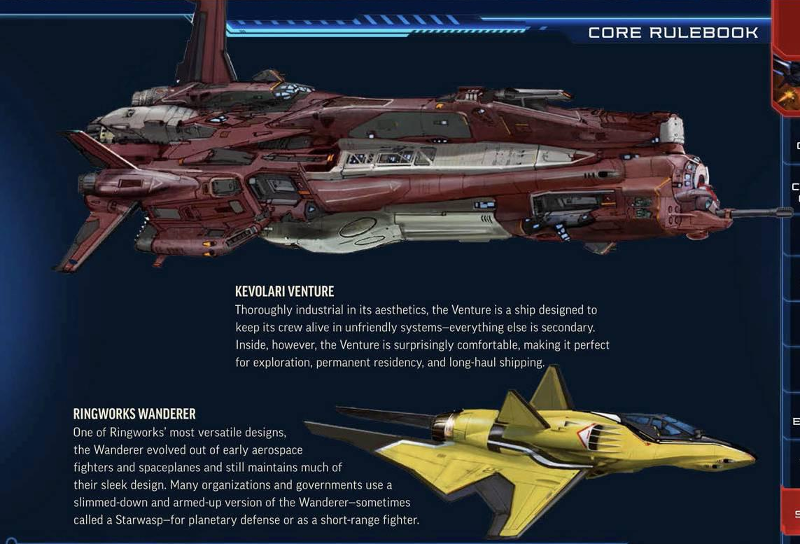
Next: "Never tell me the odds!"
"And there's going to be, at the very high levels, it'll be more or less some of the small ships against giant capital ships are going to be fantastic battles that'll probably be told around your gaming table for a while."
Original SA post
Starfinger Core Rules Part #17: "And there's going to be, at the very high levels, it'll be more or less some of the small ships against giant capital ships are going to be fantastic battles that'll probably be told around your gaming table for a while."
Jason Keeley, Starfinder Design Team Member, Gencon Q&A posted:
Whether you win or lose them, of course, you might just get blown out of the sky. It's not a great story, but it's still a story.
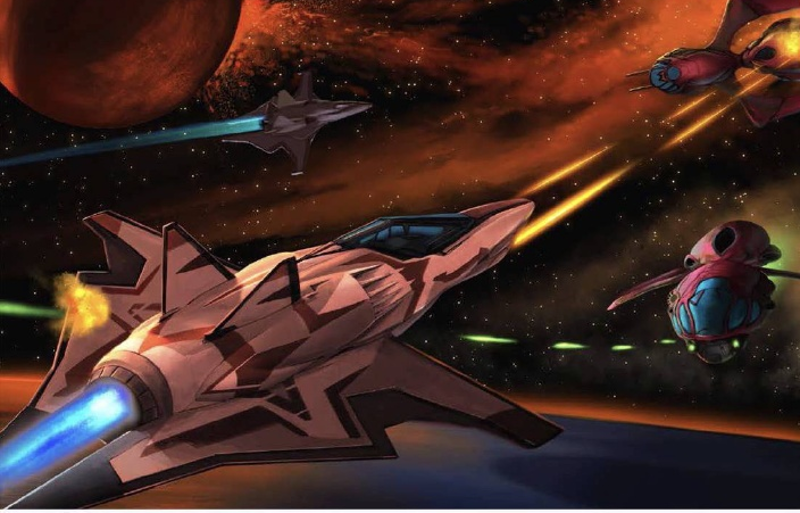
Single-eseat fighters like this, as previously mentioned, aren't actually supported well, as we'll see...
Starship Combat
There are several roles you can take when piloting a ship in Starfinger: captain, engineer, gunner, pilot, or science officer. For ships with large crews, only one character is in each role, and people required to crew the ship beyond the core five are presumed to just be going whatever pleb job they have assigned for them and take no notable actions. "What if we don't have exactly five players?", you may ask, and that's a reasonable question! Unfortunately, no good answer is provided - if you're missing a gunner or pilot, any role can fill in and do a half-assed job at either. You can probably go without a captain, engineer, or science officer at notable drawbacks - only the pilot and gunner are strictly necessary. Of course, if your ship has less than five positions, this can be problematic. The worst are fighters and racers, which run into the huge issue that the pilot has to act as both a gunner or pilot, but can't do both at once, meaning the types of actions they can take will be limited and generally done at penalty.
We're told that the Starfinger Flip-Mat: Basic Starfield and the Starfinger Core Rulebook Pawn Collection are the "perfect accessories" for this mode. While you're at it, you can bust out you can wear your Starfinger Blood Orange IPA to prove your brand loyalty.

So, combat. Usually shits ships start facing each other, but you can roll randomly for distance and facing. Facing matters in this mode, unlike normal combat. During a turn, you first have engineers try and do repairs or provide boosts. Then, pilots make Piloting checks to determine who goes first - the lowest roll goes first. Pilots can then roll for maneuvers and the like if they have to. In addition, the science officer may scan vessels or target foes. (Wait, wouldn't that be more of the gunner's job? Damn Vulcans, taking our jobs-) Lastly, we have the Gunnery phase in which everybody gets to shoot. Shooting is done in the same order as moving, but damage isn't applied until the end of the phase, so everybody always gets to shoot if they can. One of the advantages of going second is being able to shoot down missiles fired at you, if they're still in transit.
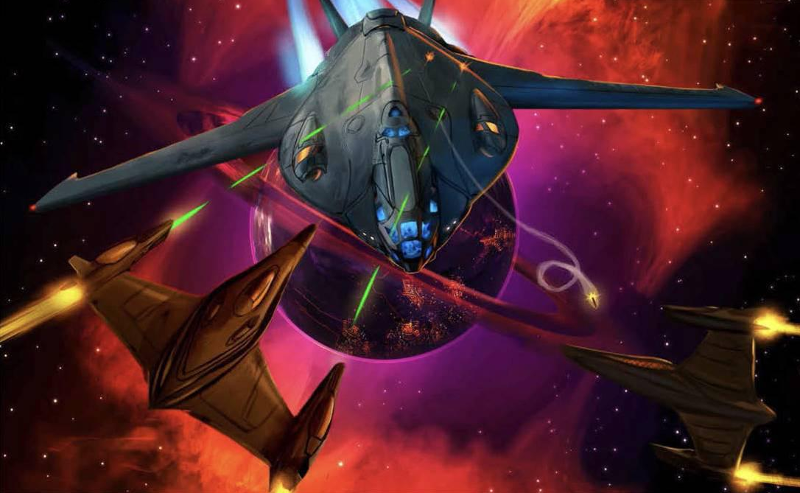
Some more details:
- Pilots get roll modifiers based on speed - going slow gives bonuses, going fast gives penalities.
- Every ship has a maneuverability rating (like old d20 flying creatures do). This determines how many hexes they have to travel between 60 degree turns (one hex facing). It also gives a piloting check modifier as well (penalties for a bad rating, bonuses for good).
- However, pilots can do various stunts, like "Back Off", which lets you go in reverse, "Barrel Roll", which switches your port and starboard sides for around, "Flip and Burn" that lets you turn 180, and "Slide" which is radical spaceship drifting, amongst others. All of these require a Pilot checks, and often give penalities when failed.
- Ships have four firing arcs: fore (front), aft (rear), starboard (right), and port (left) that weapons are mounted in. Gunners can use either their (base attack bonus or Piloting ranks) + Dexterity + bonuses to try and shoot enemies, trying to match or beat the target's AC or TL, depending on the weapon. Now, tracking weapons (the sort that target TL, i.e. missiles) have their own movement and counters as they try and track. If they don't have enough movement to hit the target right off, they have to roll again. Granted, with their speed they generally don't have to roll more than once or twice, but it's a potential drawback. In return, tracking weapons usually have a higher damage for their BP cost.
- Shields are location-based (same arcs) but the hull is universal, so damage that gets through shields is applied to its HP (hull points, not hit points, get it). Some ships have a Damage Threshold, which is a number you need to exceed to do damage (though it doesn't reduce damage). A ship with HP of 0 is disabled and can't do anything, though life support is considered to remain up indefinitely. Being reduced to -HP destroys a ship's life support as well.
- Ships have a Critical Threshold, and damage in excess of that to HP or any Critical Hit to the hull does a Critical Damage effect. How the CT is figured is a little confusing - each ship type has a fixed CT listed, but elsewhere we're told it's 1/5 of their HP. Presumably the former is only for tier 1 ships, but it could stand to be more clear. Critical Damage effects penalize one of the five crew roles, and can stack, starting at a small penalty and ending with a system being disabled entirely, except for the power core (the engineer's station), which just penalizes other systems the more it becomes damage.
Lastly, we have the different actions crew members can take with appropriate skill checks. Some actions are unavailable if your station is sufficiently damaged by Critical Damage.
- Captains can give small buffs to their own crew or penalties to an enemy crew, and at higher levels can spend RP to grant an extra bonus action or rerolls. They're basically the lazylords of the crew.
- Engineers can boost a ship's speed, give bonuses to the science officer, or boost shield or weapons. (Even missile launchers can benefit from more power - somehow.) They can also temporarily cancel out some Critical Damage for 1 round or do a more lasting repair on Critical Damage with multiple turns of work. Higher-level engineers can spend RP to grant multiple buffs or do a quick, temporary repair on Critical Damage that will last for the fight.
- Gunners can shoot, do two attacks at -4 (just like normal combat). High-level gunners can spend an RP to fire all the weapons mounted on an arc or automatically inflict Critical Damage (if damaging the hull).
- Pilots can roll to improve the maneuverability of their craft or do the aforementioned stunts. High-level pilots can spend an RP to move further or do a special stunt that lets them move through enemy hexes unaccosted and change to any direction.
- Science Officers can restribute SP (shield points, not stamina points, because... well, okay, that makes enough sense) between shields, scan ships to learn more about them, and improve the crit range for weapons from 20 to 19-20. High-level science officers can spend an RP to boost attack rolls or a round or force enemy ships to reroll attacks.
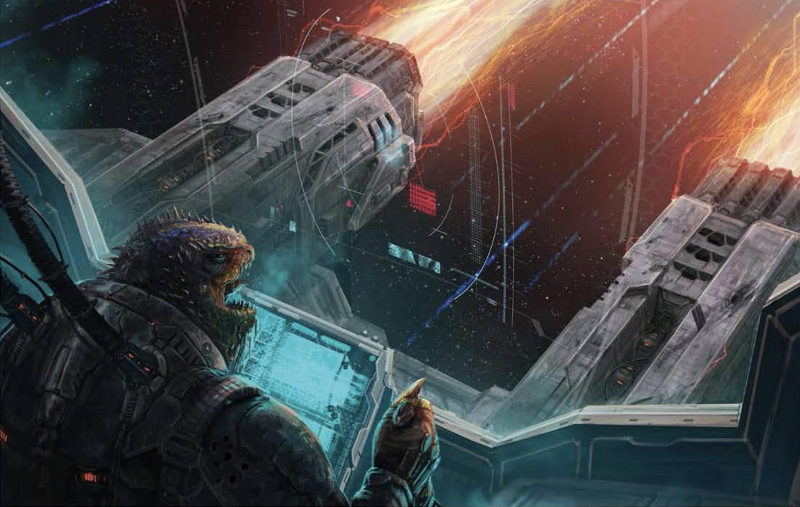
However, there's one major issue with all of this, it's that the DCs for making many of the required rolls for starship positions are badly broken. Many have rolls with DCs of 10-20 + (2 x tier) or 10 + (3 x tier). As such, they ramp up faster than PC skills can keep up. At a certain point, piloting, commanding, engineering, etc., becomes improbable or impossible for high-tier ships. By levels 11-16, certain actions will become near-impossible or outright impossible for PCs to make, depending on how much they've invested in their ship's computer and their own maximization. See, one of the key points is that these skill rolls also ignore any class bonuses, so even an Operator or Envoy's skill boosts are no good in this situation. While you can use Skill Focus, it's a stopgap measure.
Now, Paizo has now acknowledged this and said there will be a fix. But it's not out yet, so I can only judge the game in front of me. There are various fan fixes, but as it is right now, the game was published with a bush-league d20 error - the kind already seen and infamous from products like D&D 3.5's Tome of Magic.
Another observation is that the technology flavor text earlier implies there's a lot of magic being mixed in with technology, and that it's a space fantasy setting, but you can't see it at all in the spaceship rules. There are no fireball cannons, no spaceships cloaked with invisibility or consecrated as holy, and really not much way at all for spellcasting to interface with starship usage. Now, there are obvious reasons for the spellcasting limitations, not wanting wizards to dominate in spaceship combat, but the lack of any cool magic powers or weapons to buy for your ship seems like a real oversight. Granted, every part of the secondary systems in this book (vehicles, equipment, spaceships) speaks to the designers being rushed, possibly to hit this book's GenCon 50 release date. But ultimately, for a system they were proud to tout... somebody should have caught this before publication.
Next: The terrible spellcasters of space.
"We want magic to augment what your character does, we don't want your character to only be able to do magic."
Original SA post
Starfinger Core Rules Part #18: "We want magic to augment what your character does, we don't want your character to only be able to do magic."
(Credit: Amanda Hamon Kunz, Starfinger Design Team Member, GenCon Q&A Transcript)
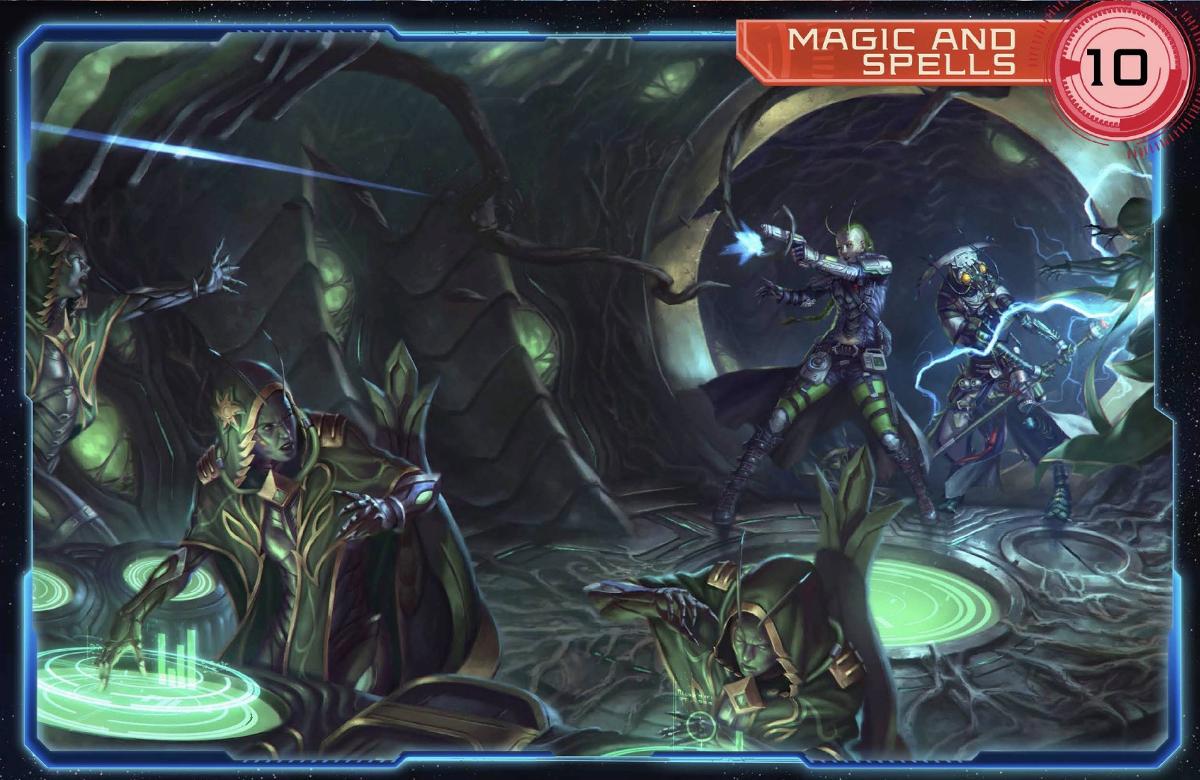
Above: can you spot the magic? Because I can't.
Because you may travel light years across the galaxy, but you can't escape slot-and-level casting. To be fair, Starfinger curbs the power of spellcasters somewhat, limiting them to spells of levels zero through six. On the other hand, another limitation of spellcasters is hacked away with in the form of variable-level spells. A curbed spellcaster is still very much a spellcaster.
Variable-level spells are spells that can be cast at different levels. So instead of learning cure light wounds, cure moderate wounds, cure that wound in your heart from when your love left you, etc., you learn just mystic cure and choose what level you cast when you cast it. However, the weird and clunky catch is that the maximum level you can cast it is the level you learn it at. So if you learn mystic cure as a 3rd-level spell, you can cast it as 1st, 2nd, or 3rd level, but never 4th, 5th, or 6th unless you relearn it again later, at which point you get the earlier spell refunded and you can learn another spell of the same level in its place.
However, there are no more Concentration checks, no more Defensive Casting rolls as in Pathfinder. If you cast a spell in melee, you trigger an Attack of Opportunity. If you take damage, the spell is lost. In addition, if conditions arbitrarily cause you to lose concentration, like getting blasted into vacuum, you can't cast spells. This is also an issue for spells that take 1 round or longer. Combat Casting still exists as a feat, but it only grants +2 to AC against attacks of opportunity and Reflex saves triggered while spellcasting. In a momentary Murphy's Rule, getting set on fire will break your concentration. Being on fire will not. You can still cast all the spells you want while you're on fire once you've gotten over the initial shock..
Otherwise, spellcasting matches its d20 counterparts for the most part. There are only two types of spells currently: Mystic and Technomancer. Mystic spells are the equivalent of Cleric with a slight bit more of a psychic theme, and Technomancers are Wizards with a notable technological theme. And for those that might worry that spellcasters have been cut down too much...
... don't worry about that.
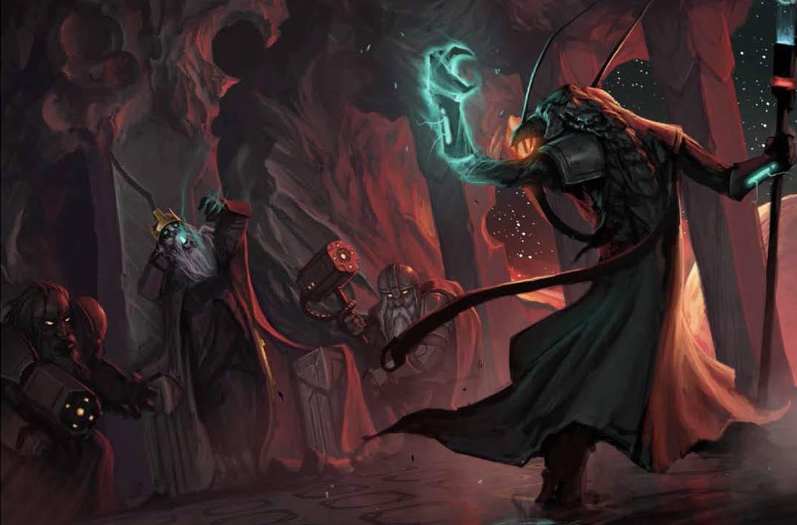
Mystic Spells
Mystic 1
- Charm Person: Fuck Envoys.
- Detect Thoughts: No, seriously, fuck Envoys.
- Mystic Cure: Healing SP is now simple, but healing HP quick is still largely a spellcaster-exclusive province.
- Reflecting Armor: When you take damage, you automatically reflect up to 10 points of it back to the attacker, then the spell is expended. No save. Why would there be a save?
Mystic 2
- Augury: Requires an RP and can't see more than 30 minutes into the future. Otherwise, same is it ever was.
- Zone of Truth: Lawl, fuck Envoys so much.
Mystic 3
- Bestow Curse: A permanent problem a Mystic can inflict on somebody...
- Remove Affliction:... which can only be solved by another Mystic. That hasn't changed.
- Psychokinetic Strangulation: In case you were worried you couldn't tekechoke because you're a Mystic and not a Solarian. Nope! Mystics get it too. Hm. I feel like I've seen this gimmick before somewhere, but where...?
- Speak with Dead: Murder mysteries? Not in this game! Go back to Gumshoe, you!
Mystic 4
- Discern Lies: Have we suggested: fuck Envoys?
- Mind Probe: And let's fuck Envoys again.
- Reincarnate: Hahaha... you're serious? So, it's like Star Trek III, only this time Spock comes back as a gnome.
Mystic 5
- Crush Skull: So, what's the damage of the biggest gun at 13th level? Like, a 4d12 X-Gen gun? Or a 6d6 frag grenade? Because this does 18d8 on a failed save for you imitating a Kids in the Hall skit... or 4d8 on a failed save.
- Modify Memory: Have I mentioned: Fuck Envoys?
- Raise Dead: Or "why everybody needs a Mystic in their party".
- Synaptic Pulse, Greater: Either Stun everybody in a 20' radius around you for for 1d4 rounds, or sicken then for 1 round on a successful save. I imagine some high-level party having their Mystic just charge enemies and stun / sickenlock foes with repeated castings while they gun down enemies and just turn most encounters into clownshoe affairs.
Mystic 6
- Gravitational Singularity: Create a mini-black hole that pulls targets towards it within 30' and does 12d6 damage and effectively grapples anything that comes in contact with it each round.
- Flesh to Stone: Because we had to have a save-or-die somewhere...
- Snuff Life: ... but why not just have another?
- Subjective Reality: Lets you disbelieve in somebody's existence so hard they basically can't do anything to you save for non-damaging magic (only 50% chance), and you can't do anything to them. Your friends, charmed enemies, and summoned creatures can still beat the hell out of them, though. No save.
- Telepathic Jaunt: The Mystic can set up a telepathic link, and then teleport themselves and allies to somebody they've linked to, regardless of distance. (Try not to leave your spaceship behind?)
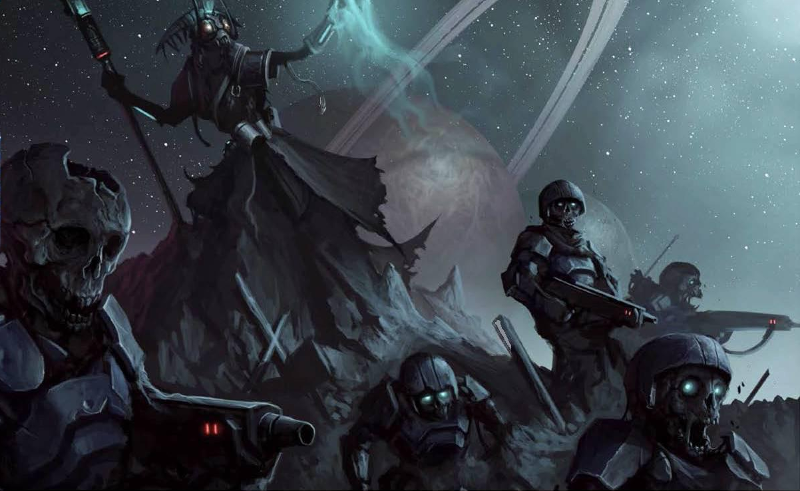
Mystic / Technomancer Spells
Mystic / Technomancer 2
- Darkvision: You might wonder how necessary this is, and then you once again remember you're in a future where nightvision goggles were seemingly never invented.
Mystic / Technomancer 3
- Clairaudience/Claivoyance: "I could hack their cameras and find out, I just need to get root access, then break the security on the camer-" "Or I could just view them invisibly with no chance of failure and no saving throw unless they have a high-level caster who knows one specific spell and has the foresight to cast it-" "FINE. Cast your stupid spell!"
- Haste: Now just grants an extra move action and extra movement. The days of bonus attacks are over.
- Tongues: Remember all the damned languages and a whole skill about interpreting unknown ones? Fuck all that, from 7th level on, your spellcaster has you covered.
Mystic / Technomancer 4
- Animate Dead: You can raise the dead! But there are no rules for animated dead. "Yes, but they'll be in the Bestiary.", some might point out, at which point I quote "This book contains all the information you need to play Starfinger, whether you're a player or a Game Master." Not part of the information. All of it. But it doesn't actually, of course.
- Planar Binding: Bind an extraplanar creature and get it to do what you want if your GM decides you've roleplayed well enough, or have it break free and fuck up your shit if you A) fail the spell resistance, B) dimensional travel powers, or C) a special Charisma check. It can try A-C once a day. What can you summon? Well, there's no Bestiary yet, so-

Mystic / Technomancer 6
- Control Gravity: Turning an area into Zero-G isn't as bad as it sounds, given characters are a lot more likely to be prepared for that in this setting. However, high gravity is utterly crippling as far as save-or-suck effects go, since it instantly hits people with massive encumbrance penalties.
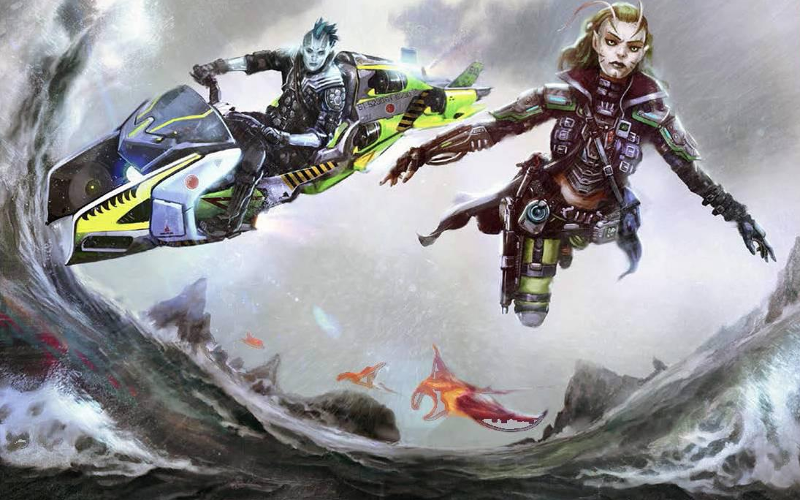
Technomancer Spells
Technomancer 1
- Erase: Lets you erase a book! Or a computer!... only apparently computers keep backups on a round-by-round basis. So it basically gives a computer just a 1-round bout of amnesia.

- Grease: 1st-level slapstick shenanigans remain largely unchanged.
- Magic Missile: ... now needs a full-round around to fire three missiles instead of two. Caster problems solved!
- Supercharge Weapon: Cast in advance, have your weapon do +2d6 or +4d6 damage with your first shot. Bear in mind you're using this when weapons top out at 1d8. And you can cast this on a friendly Soldier's weapon if you gotta. You can even supercharge a normal sword! It's charged with... charging... ness?
Technomancer 2
- Inject Nanobots: So, it's really confusing as to how technomancer shit works. Do they use technology to enhance magic? Or vice versa? I mean, this lets you inject nanobots into somebody to confuse them and do 4d8 damage (and this specifically ignores triggering attacks of opportunity). Do you like, have to prepare your nanobot components in advance? Or are they conjured from the Elemental Plane of Nanotech? The world may never know.
- Invisibility: Still only 2nd level!
- Knock: Still only 2nd level!
- Mirror Image: Still only... you get the idea.
- Recharge: Combine with Energize Spell, and use a 2nd-Level spell to reuse your higher-level spell slots, though it will cost you an RP, and 20% of the time the battery will blow up in your face instead. Is breaking the spell economy worth the risk?
Technomancer 3
- Arcing Surge: What's the biggest gun you can use at 7th level? Like a 2d10 Reaction Cannon, maybe with another 1d6 from some Fusion? Well, this does 10d6 in a line. Suck it, soldiers.
- Displacement: Soldier: "At this level, I can get a +11 armor bonus, meaning it's 55% harder to hit me!" Technomancer: "I can cast a spell that gives a flat 50% penalty to hit me!" Soldier: "Ha! Sucker!" Technomancer: "... oh, and I can wear armor that makes it 45% harder to hit me too." Soldier: "Oh. Aw."
- Explosive Blast: I know they give warnings about used batteries, but inflicting 9d6 damage with one feels like a bit of an exaggeration regarding the dangers.
- Instant Virus: Give a robot the cyber-flu.
- Probability Prediction: Gives a reroll in a system that almost never gives them, though you have to discharge it before you roll.
Technomancer 4
- Corrosive Haze: You create acid-resistant naites that convert water in the water into... acid. It'll damage unattended objects but not attended objects, so if you want to save your favorite mug, just hold on to it.
- Creation: "Cast as a 4th level spell, you can only create an object out made of vegetable matter." "How much pot can I make, man?" "... enough for everybody, I'm pretty sure."
- Dimension Door: "I could hack their door and get us in, I just need to get root access, then break the security on the door-" "Or I could just teleport us past the door instantly." "FINE. Cast your stupid spell!"
- Overload Systems: No attacks of opportunity when inflicting this save-or-suck 50% chance of losing an action every round you're under its effect. Works on robots and humans alike. Yes, you can overload a human's systems. Sure. Why not?
- Rewire Flesh: "... you manipulate the target's DNA to painfully rewire that target's biological functions to mimic the cold and rigid processes of a robot..." which does ongoing damage and debuff and eerily mimics the fantasies of ASFR fetishists.
- Rewire Flesh, Mass: Granted, I also remember seeing this effect in a CYOA book I had when I was a kid and I got nightmares out of it. Now a new generation can too!
Technomancer 5
- Control Machines: Step back, engineers. No hacks required.
- Passwall: "So, I'm going to distract the guards while you hack the door, and he shuts off the security guns, and you hack the door-" "Or I could-" "You have a spell, don't you?" "Yeah, I can just make a hole in the wall over here." "Fuuuuu- cast your stupid fucking spell again."
- Prying Eyes: "I'll send my drone in to scout out ahead." "Hey." "What?" "Nameless engineer." "What?" "I'll just cast this spell that lets me scatter around 20 tiny spies and scan the whole complex." "Why am I even here? Your spells do everything I do." "I charmed you earlier today." "FFfffff- friend."
- Synapse Overload: 18d8 damage. Save? The save is to resist being staggered. The damage occurs on touch. Why no, it doesn't trigger an attack of opportunity! Why would it? (And for the record, if you cast a touch spell and miss, you don't lose the spell. If you take damage, you don't lose the spell. Essentially nothing can actually disrupt a spell like this other than running away.)
- Unwilling Guardian: Specifically makes somebody into a bullet shield for you and makes them fight anybody that attacks you, because Charm spells weren't enough.
Technomancer 6
- Discharge, Greater: I bet you though it was worth spending a half-million credits on that laser gun? Well, now all your ammo is dead because you failed a save. Eat an unwholesome pie.
- Disintegrate: Or "how to rid enemies of all their utterly necessary equipment they utterly rely on at this level". A failed save means their midnight sunstone bazooka only takes 4d20 damage?
- Interplanetary Teleport: Well, it's certainly one fix to spaceship DCs being broken at this level. Doing interstellar travel requires RP equal to the number of days that would take. You may note that the amount of days is random; so if the roll is higher than your RP, you lose all your RP and the spell fails.
- Shadowy Fleet: You create an illusionary space fleet bombarding a 60-foot area. What if somebody successfully disbelieves? Half damage, because this is Starfinger.
- Terraform: Lets you kinda-sorta terraform a planet!... well, 100 feet of it, anyway. You may wonder why this is in the Technomancer's wheelhouse, given it has to do with life and not tech? Well, I don't know either! It seems way more in the Mystic's thematics, but Technomancers have to pee in everybody's cheerios since they're wizards and can vary from theme whenever the writers like, I suppose. Granted, Xenodruid Mystics get it as an available spell, but they're the only Mystics who do.
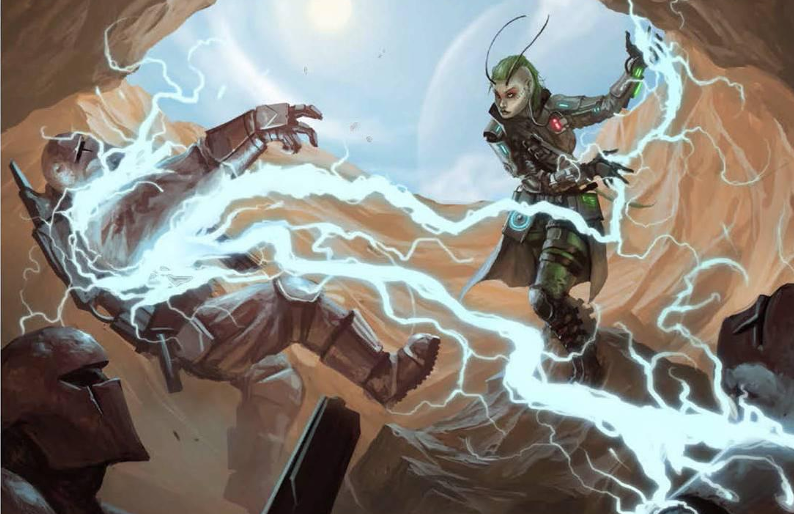
And lastly, let's go over Mystic Cure, the replacement for Cure [whatever] wound. I'm just going to quote directly from the most powerful Pathfinder single-target Cure spell, first-
Pathfinder SRD posted:
CURE CRITICAL WOUNDS
School conjuration (healing); Level alchemist 4, bard 4, cleric/oracle 4, druid 5, inquisitor 4, shaman 4, witch 5; Domain healing 4CASTINGCasting Time 1 standard actionComponents V, SEFFECTRange touchTarget creature touchedDuration instantaneousSaving Throw Will half (harmless); see text; Spell Resistance yes (harmless); see textDESCRIPTIONThis spell functions like cure light wounds, except that it cures 4d8 points of damage + 1 point per caster level (maximum +20). Since undead are powered by negative energy, this spell deals damage to them instead of curing their wounds. An undead creature can apply Spell Resistance, and can attempt a Will save to take half damage.
And here's the Starfinger equivalent:
Starfinger SRD posted:
MYSTIC CURE M1–6
School conjuration (healing)Casting Time 1 standard actionRange touchTargets one living creatureDuration instantaneousSaving Throw Will half (harmless); Spell Resistance yes (harmless)With a touch, you heal and invigorate your target, restoring a number of Hit Points. If the target regains all of its Hit Points as a result of this healing, you can apply the remaining healing to yourself, as long as you are a living creature. On the other hand, if this isn’t enough to restore all the target’s Hit Points, you can transfer any number of your own Hit Points to the target, healing the target that amount. You can’t transfer more Hit Points than you have or more Hit Points than the target is missing.Mystic cure restores a number of Hit Points to your target depending on the spell’s level.
- 1st: 1d8 + your Wisdom modifier
- 2nd: 3d8 + your Wisdom
- 3rd: 5d8 + your Wisdom modifier
- 4th: 7d8 + your Wisdom modifier
- 5th: 9d8 + your Wisdom modifier
- 6th: 11d8 + your Wisdom modifier
In addition, unlike most healing, when you cast mystic cure as a spell of 4th-level or higher, you have two options to enhance its effects. The first option is to restore an extra 5d8 Hit Points with a 4th-level mystic cure spell, an extra 7d8 Hit Points with a 5th-level mystic cure spell, or an extra 9d8 Hit Points with a 6th-level mystic cure spell. The second option is to bring a target that died within 2 rounds back to life. In addition to healing such a creature, the spell returns the target to life, and the target takes a temporary negative level for 24 hours. This spell can’t resuscitate creatures slain by death effects, creatures turned into undead, or creatures whose bodies were destroyed, significantly mutilated, disintegrated, and so on.Casting this spell doesn’t provoke attacks of opportunity.
A slight upgrade.  Granted, it could be working overtime to try and make up for the loss of the ridiculous heal spell.
Granted, it could be working overtime to try and make up for the loss of the ridiculous heal spell.
 Granted, it could be working overtime to try and make up for the loss of the ridiculous heal spell.
Granted, it could be working overtime to try and make up for the loss of the ridiculous heal spell.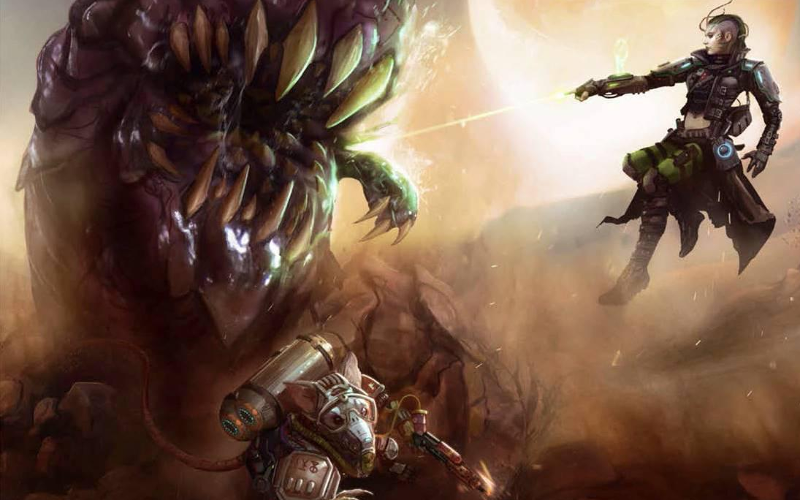
And because we couldn't leave wish behind, Mystics get miracle at 20th level once a week while Technomancers at 20th level can use two 6th-level slots and 2 RP to cast wish... well, as long as they have those two resources. While 20th level effects may as well not exist for most campaigns, it's at least noting that even in Starfinger, they still have to have "do nearly any damned thing" as a top-level power.
There's, of course, a litany of spells I didn't cover because they're just stuff you've mostly seen before, damage dealers with new themes, modest utility spells, etc. I tried to keep it short for the sake of our sanity, though it's a relatively brief spell list - about half that of Pathfinder's. Though Starfinger works hard to cut down the power level of spellcasters, they still remain very strong because they still have niches so vague as to step all over many of the other classes, even with the designers obviously eyeing that sort of thing more closely than before. After all, they clearly cut out bless and similar broad-boosting effects that would impinge on an Envoy's support abilities... and then left in every end-run around the social mechanics. So it goes.
Next: But are tabletop campaigns eligible for a Hugo?
"So if you want to play an Ursula K. Le Guin style science fantasy, or C.J. Cherryh, who whoever it is that you're into, you can do that in our system."
Original SA post
Starfinger Core Rules Part #19: "So if you want to play an Ursula K. Le Guin style science fantasy, or C.J. Cherryh, who whoever it is that you're into, you can do that in our system."
(James Sutter, Starfinger Creative Director, Game Informer interview.)
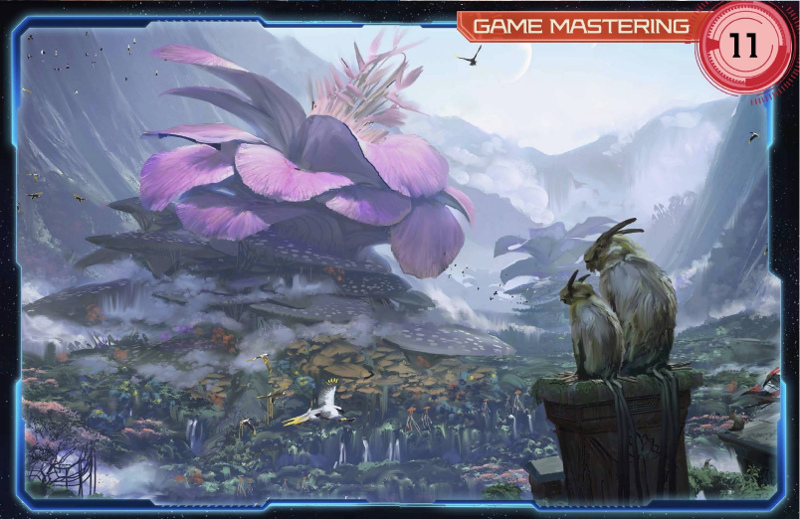
So, their first suggestion is to run published adventures, and they encourage you to do so.
Of course they do.
It however, notes that some people just run on some basic notes or off the cuff, and that's okay too. They suggest that when writing up an adventure, just keep to broad strokes and when you're thrown off your guard, just grab some reference material and wing it. Reference material like the Starfinger Alien Archive.
Because of course.
There's notes that some people stat out every creature, while others just reuse material from the Starfinger Alien Archive. Others only write down partial statblocks. Actual advice? Why have that when we have noodle arms and a big fat shrug! Have we mentioned there is this Alien Archive book, even after we said this was the only book you need unambiguously? Welll... you might need that? Maybe?
Of course you do.
Designing encounters is "both an art and a science" but is mostly just bog-standard d20 Challenge Rating (CR) stuff, which is never gotten any fresher. For example, an NPC has CR equal to their level which uh, is rarely ever accurate and will usually get torn apart by any reasonably competent group of PCs. In addition, it means a 7th level Envoy is supposed to be an equal challenge to a 7th level Technomancer and that's either hilarious, sad, or both. Even sadder is that a 10th level Soldier sans equipment is CR 9, because an humanoid NPC without equipment is only -1 to CR. Suuure, I'm sure that Soldier will be terrifying, coming at you with their 1d3 nonlethal meathooks. Hey, there's this book called the Alien Archive that can help you with your NPCs, maybe?
Because of course there is.
It may seem I'm being needlessly pedantic, but they were the ones that said that this was the only book you need. Once again, from Chapter 1, page 7:
Starfinger Roleplaying Game posted:
This book contains all the information you need to play Starfinger, whether you're a player or a Game Master.
Chapter 1 had no mention of the Alien Archive. And why not? I mean, all of us who are RPG hobby veterans know that D&D clones are oft-separated into several necessary books, but Starfinger is aimed at new players as much as old-timers. So why not bring this up in Chapter 1? The only reason I can think on holding off on mentioning it until the midst of Chapter 3 and not even emphasizing it until Chapter 11 is to more or less obscure that fact and to make like the entry price looks like the $60 cost of the core rule book, when the entry cost for a gamemaster adds in the $40 cost of the Alien Archive for a total of $100.
And then they'd like you to subscribe...
Making money isn't wrong. And getting a fair price for your game isn't wrong. And getting financially supported richly by your fans isn't wrong. But obscuring the true cost of your game is a problem, I think. Thankfully, the days of just picking up a book in a store and trying to parse it out are over, and there are places where you can ask online "What do I need to play Starfinger?" But it's still curious that they wrote that this book was the only thing you need more than once, knowing that it isn't.
Moving on, XP charts still have a detailed chart based on the challenge rating of the creature and the number of people in the party, and formulae to adjust that CR based on the number of creatures of a given CR and all that. There's some handwaves done towards the notion of "story awards", but XP is still primarily gained by eliminating, overcoming, or bypassing specific threats - mainly fights (on foot or spacecraft) and vehicle chases. It does add that they have to be actual threats, and going around committing civilian atrocities shouldn't be rewarded. (Of course, like many such games, it provides an alignment system where you can be any alignment you like!... but presumes you're good or at least neutral.)
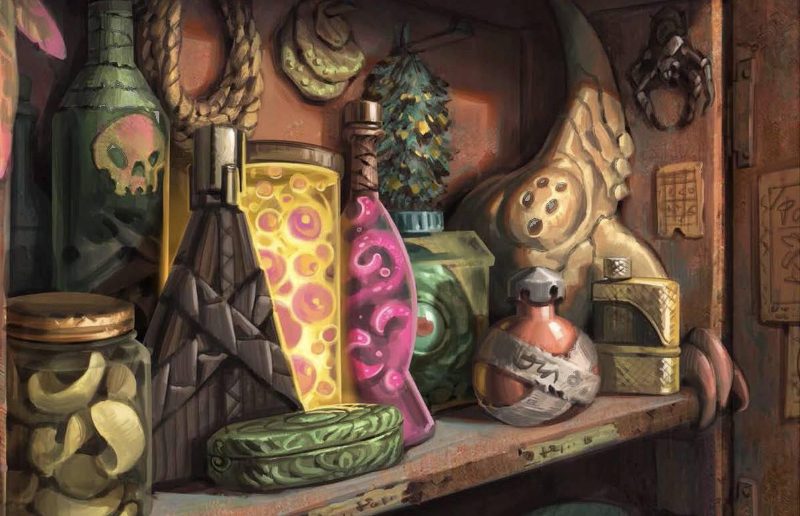
We have charts detailing the value of loot that should drop from each encounter and what the wealth level of each character should be for a given level. It notes that since usable loot is miserably salable (you can only ever sell equipment for 10%, as it restates) to make up the difference in terms of story awards like job payments. Of course, there's also the complicated issue of having to figure out what items count towards a PC's wealth value and which are only worth their resale, which comes down to trying to predict which equipment a PC will use and what they'll stash...
There's also the question of "what happens if the PCs decide to sell their spaceship" and... Starfinger doesn't have an easy solution to that.
Starfinger Core Rulebook posted:
But starships are expensive-what's to stop them from simply selling their starship and retiring, or using the money to buy gear far too powerful for their level?
Uh, the fact that sellers can automatically evaluate a character's level and not sell them equipment unsuitable for it? C'mon, they covered this. Well, it says that the GM can just instruct them not to. If that's not enough, they can come up with a story explanation where it's actually lended by a patron, or it has an AI that doesn't wish to be sold (wait, does that make it a character, then...?), or other reasons it doesn't ultimately belong to the PCs. Ultimately, starships are meant to be kept aside from the normal gear and wealth structure.
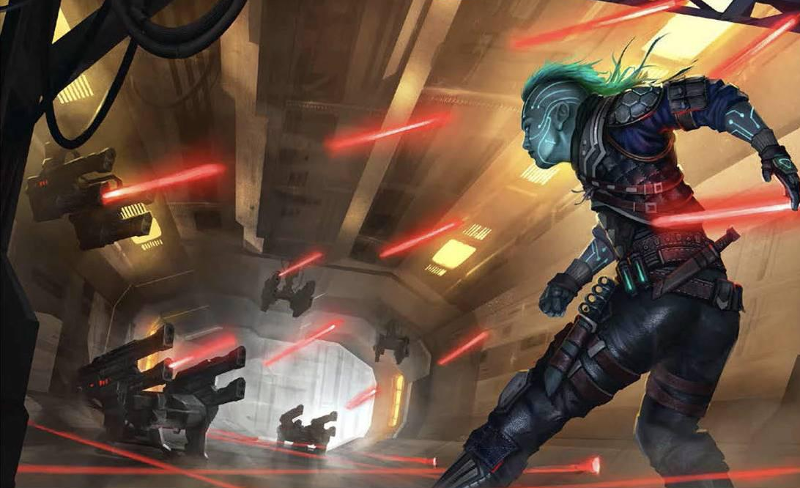
We've given sample DCs for GMs, saying that:
Starfinger Core Rulebook posted:
A challenging DC for a skill check is equal to 15 + 1-1/2 x the CR of the encounter or the PCs' Average Party Level (APL).
Which, while not as unworkable as the computer or starship rules, results once again in math where tasks get slightly harder at a rate faster than the PCs gain competency. At level 1, a PC with maximized bonuses might have a +8 against a DC of 17, meaning they need a roll of 9 or higher to succeed. At level 20, a PC with maximized bonuses will be adding +32 against a DC of 45, meaning they need a roll of 13 or higher. And note that most PCs won't necessarily have maximized bonuses in the skill checks they're making all the time. Operatives and Envoys have it a little better, but ultimately the slow increase in difficulty applies for most PCs.
It notes that GMs can fudge rolls in desperation, putting Starfinger in the pro-fudge camp - and to use a GM screen for that kind of thing - but not to be antagonistic about it. In addition, it notes you can adjust encounters if PCs don't have the tools to do so, like ignoring a particular type of Damage Reduction or giving PCs a plot twist that lets them overcome it, but not to overdo it. (Of course, they could have written rules where random rolls can't result in unresolveable failure states - or just unfun results - but Paizo's not in that business.)
It notes that character death should be addressed as quickly as possible, resolving encounters and working out whether or not the PC is going to stay dead - "You aren't required to let a dead character return to life." - or return. If a PC is to return to life, the GM is encouraged to immediately whisk them to the situation where that can occur. Alternately, if a player is moving on to a new character, it's suggested a player can take up the role of an established NPC for the meantime until the new character can be generated. Also, because the equipment treadmill trumps all other concerns-
Starfinger Core Rulebook posted:
Thus, it's usually easier to simply assume that the dead PC's personal gear (though not necessarily important story items belonging to the group) is destroyed, lost, or otherwise goes away.
I know Starfinger: a Game of Space Accounting might not have been an attractive title, but it certainly would have been more accurate whenever the subject of stuff comes up.We're given a variety of other pieces of advice - Starfinger guides GMs to confront problem players and dismiss them if necessary, advises keeping campaign journals, tells GMs to resolve rule conflicts swiftly, etc. It ain't all bad, and a lot of it is good advice, though it's mainly mainly matters of XP and equipment that get any real depth.
Next: Standing on the sun.
"There are a ton of different styles of science fiction and science fantasy being blended together in [Starfinger]—everything from space horror like Alien or Event Horizon to Firefly-esque comedic escapades to the political drama of The Expanse—but at its heart, this game is really about exploration, seeing worlds no one’s ever seen before."
Original SA post
Starfinger Core Rules Part #20: "There are a ton of different styles of science fiction and science fantasy being blended together in [Starfinger]—everything from space horror like Alien or Event Horizon to Firefly-esque comedic escapades to the political drama of The Expanse—but at its heart, this game is really about exploration, seeing worlds no one’s ever seen before."
(James Sutter, Starfinger Creative Director, Gnome Stew interview.)
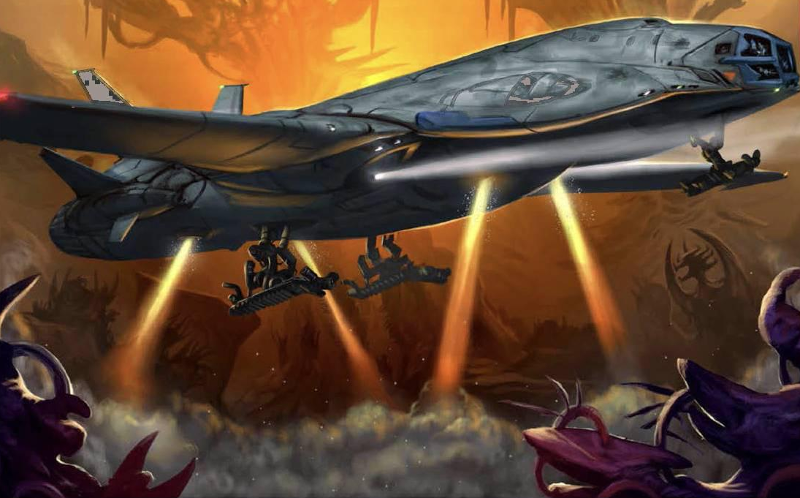
Environment
Or, more specifically, "environments that harm or impede you".
We deal with space first, where radiation and suffocation are dangers, as well as automatic turn-by-turn damage from decompression. They do get it right that space isn't "cold" (something RPGs get wrong more often than not) and that it takes hours for a body to begin to suffer from cold issues. We get descriptions of various planetary bodies, and we're told that you can't survive a star's heat at all without Immunity to Fire - otherwise you instantly just die, no saving throw.
Pathfinger Core Rulebook posted:
Any creatures or items not immune to fire are instantly and utterly consumed down to the molecular level-only spells such as miracle or wish can bring back such victims.
Well, hope you've got a 20th level caster pal to help you out with that setback!
There are corrosive worlds (they do acid damage), worlds without atmospheres (vacuum rules), thick atmospheres (sickens or suffocates), thin atmospheres (fatigues or causes ability score damage), and toxic atmospheres (various poison effects). There are clouds that can obscure vision and maybe be toxic or corrosive on some worlds. Extreme water depths can have the effects of thick atmospheres but ironically, there are no rules for the crushing pressure involved, so you can sink forever and not have to deal with that, apparently.
We get all sorts of terrain and weather rules we can skim over, as Starfinger doesn't get into the obsessive terrain rules that Pathfinder with its rules for berms and fence-hopping. Most of it is relatively reasonable, but extreme environments can be farcically punishing... but you also end up with the old-school effect where high-level characters can take farcical punishment. For example, a 10th level Soldier can take a lightning bolt to the head, a quick immersion in boiling water, or fall from any height (on average). That classic Murphy's Rule holds true.
Well, unless you're in extreme gravity, which triples the damage. Try not to fall there. Gravity itself affects speed (lower in high, no effect in low), jumping distance, and carrying capacity in predictable ways. Movement in zero-g requires you to push off objects and then move in a fixed direction - colliding with another creature or object can put you both into the "off-kilter" state - or to climb along handholds. Granted, the DC to stop your movement when hitting a wall or when climbing along a surface is a whopping 20, which means everyday folks who live in zero-g environments spend a decent amount of time stuck on or bouncing off of walls.
You can now successfully die from drowning or suffocating, unlike many older d20 games. Radiation is treated as a poison, and at high enough levels of radiation and low enough fort saves, it's pretty much a death sentence without remove radioactivity, thanks to a poison save DC that can ramp up to 30. (Medicine just gives a bonus to saves, while remove radioactivity requires a caster level check versus the DC of the radiation.)
Overall, the environmental rules are refined from Pathfinder and generally cleaned up, though their punishing nature can discourage risk. Or exploration. "Y'know, let's go do a job someplace that doesn't make our eyeballs melt." Presumably GMs shouldn't throw PCs places they aren't ready for, but there are no particular guidelines on that.
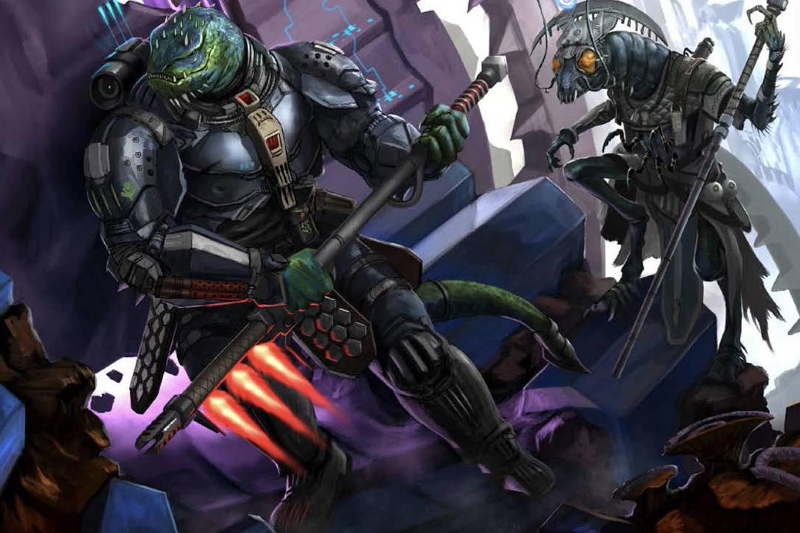
Settlements
So, there are now stat blocks for settlements. They're more descriptive than mechanical, however, mainly dealing with the alignment and type of community, its level of population, government type (from anarchy to utopia), various settlement qualities (academic, devout, notorious, etc.). We then get a two sample communities:
- 01: A space station over Aballon (?) infected by a virus called "Bureaucratic Syndrome" that caused all local machines to become subject to complex "hierarchy and ritual". While mechanical organisms are quarantined here, there hasn't been an attempt to quarantine it due to the "strange discoveries" and technology it produces.
- Estuar: A community created to farm water from a melting ice cap to sell to the desert dwellers of Akiton. A generic scum / villainy producer.
Oh, and there's one more entry on the statblocks that's not actually mentioned or discussed: "Maximum Item Level". Yes, in contradiction to the equipment section that claimed all communities have level-appropriate gear for their locale, they instead have a maximum item level they can sell... which I guess means communities are divided into level zones, effectively? 01 has a level of 16, while Estuar has a level of 4, which means you effectively can't resupply some items in some areas now.
As if to underline that, the next section deals with "Settlement Technology", which isn't actually listed under settlement statblocks for some reason, but gives guidelines for how easy it is to hack into tech there. However, since the given level of settlement technology isn't actually listed in the statblock, it seems to be just left for GMs to wing it, like it was included as an afterthought. That then sequels into various durability scores for walls, doors, etc. We also get a few unusual materials:
- Pure Adamantine: Like found in Pathfinder. Or D&D. Or Wolverine. About hardness 50.
- Polycarbon Plate: Polycarbon is used to make bulletproof glass, certainly. It's tough stuff! For some reason, though, the Starfinger version is tougher than steel or adamantine alloys. I guess words like "polymer" sound futuristic even if the substance being described is laughably mundane.
- Nanocarbon: Tubes are magic! They're hardness 35.
- Adamantine Alloy: The impure version of adamantine, and it loses 20 hardness as a result, down to hardness 30.
- Transparent Aluminum: For some reason Starfinger erroneously states it's made of aluminum, oxygen, and nitrogen, when the formula actually was hydrogen, accurentum, and aluminum. Hardness 10.
Of course, since weapon damage scales but substance durability does not, this has some weird effects. This means many ranged weapons under 5th level will have a hard if not impossible time shooting through a wooden door. Hell, an azimuth laser pistol wielded by a first level character will take about ten shots - half a clip - to put a hole in a hide hut. Even at 5th level, it's a coin flip whether or not that same pistol will be able to punch a hole in that same hide hut - if they have weapon specialization!
On the other hand, high-level characters in the teens will be be doing enough damage to make a Rifts character proud, any stray shot slicing through stone or steel readily and causing massive levels of property damage. Not that Starfinger tracks that kind of thing, but high-level characters would regularly risk bringing structures down on themselves - to say nothing of punching holes in a ship or station wall.
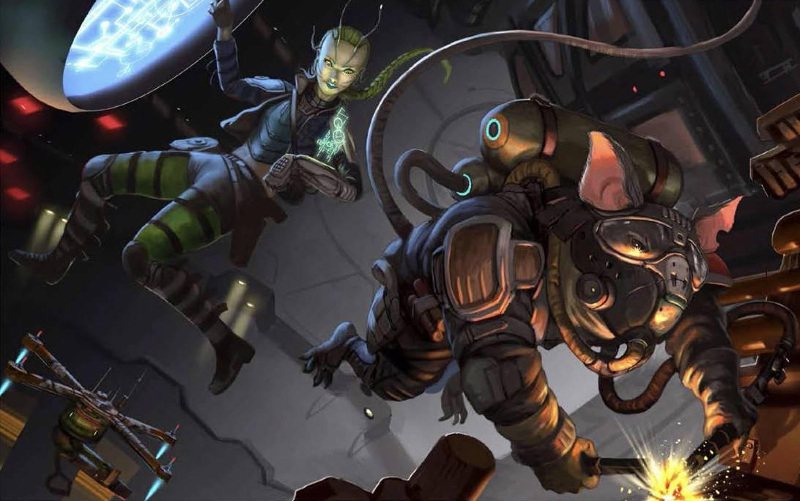
Traps
Traps are located with Perception, and then disabled with Engineering (mechanical traps) or Mysticism (magic traps). Let's get this out of the way: like the spaceship and computer rules, the trap DCs are busted because they use the same sort of formulae provided for general skill DCs in the gamemaster section. Now, unlike the spaceship rules, this can be compensated for by Envoys and Operatives with the appropriate builds, but once again, it's still an issue. It's worth mentioning that detect magic is explicitly no good for detecting magical traps, because traps are said to be specifically warded against that effect. However, unseen servants and other creative wizardly means are still fine for activating certain triggers remotely. Unlike Pathfinder, we don't get costs for traps, so it's not clear if a punji pit trap costs 750 credits to dig this time around.
Traps have very detailed statblocks complete with AC, HP, hardness, DCs, to reflect a variety of approaches, in case somebody wants to shoot them, blow them up, disarm them, whatever. And we get examples, like a pit trap, laser blast trap, jolting console trap, mind spore trap (poisonous spores that make it harder to think), hacker's curse trap (curses equipment with penalties), explosive detonation trap, nanoflechette launcher trap, obedience implant trap (shoots you with a "magic microchip" that takes you over), disintegration chamber trap, and a soul upload trap. It's always interesting how the more powerful you get, the more dire the consequences of the trap become...
Oh, and the most-detailed trap: a trash... compactor trap? Not sure why that was included, and I don't know why PCs would jump in a trash compactor. Maybe if they're really stupid? Don't just throw out a bunch of perfectly good PCs, GMs!
Next: I'm afflicted, you're addicted.
"The [Starfinger] Adventure Path, the first volume of which will come out in August at the same time as the Core Rulebook, will also have a Bestiary section just like the Pathfinder Adventure Path does, so right out of month 1 you'll have some new monsters, and every volume of the AP will have a selection of new monsters and new aliens and such."
Original SA post
Unknown, GenCon Q&A Transcript posted:
Will the Core Rulebook contain monsters, or will they be in a separate book later?
Jason Keeley, Starfinger Design Team Member, GenCon Q&A Transcript posted:
In a separate book later. We will have that First Contact Free RPG Day product available to even before Starfinder comes out, so you'll still have a couple of monsters. And also we know, as Owen mentioned earlier, that there's a philosophy where you can grab the (Pathfinder) Bestiary, plop it open, and run the monster that you find there.
Starfinger Core Rules Part #21: "The [Starfinger] Adventure Path, the first volume of which will come out in August at the same time as the Core Rulebook, will also have a Bestiary section just like the Pathfinder Adventure Path does, so right out of month 1 you'll have some new monsters, and every volume of the AP will have a selection of new monsters and new aliens and such."
(Credit: Jason Keeley, Starfinger Design Team Member, GenCon Q&A Transcript)
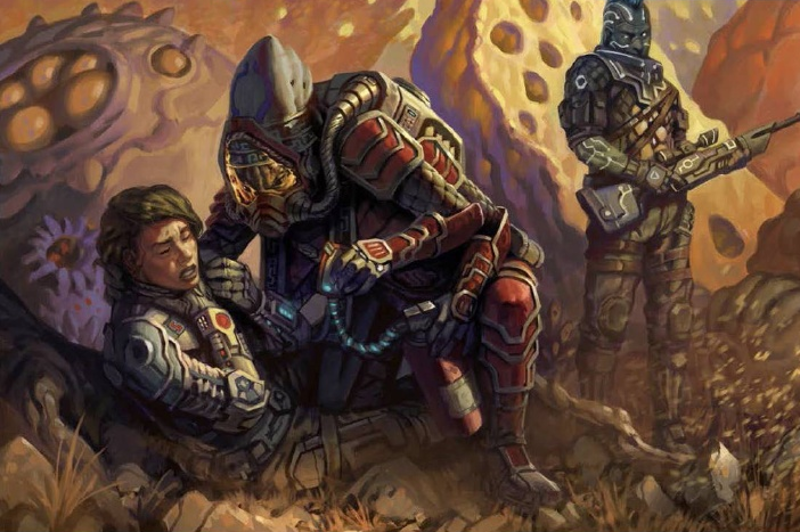
Afflictions
This is mainly describing four things: curses, diseases, and poisons. Curses have a single effect and require a specific condition be met to be removed (or just having a friendly Mystic with remove affliction). Diseases come in two types: physical and mental, and each has a 7-step series of status effects depending on how far along you are. Similarly, poisons have six types, one for each attribute, but with only 5-steps. And with both diseases and poisons, hitting the last step kills you. Some really deadly versions of either might skip steps. Drugs work like a low-level poison, but a failed Fortitude save can result in the addiction "disease" being inflicted as well. Poisons and diseases require medical card to basically stop the progression and start reversing the steps... or you can just cast remove affliction, though doing so requires a caster level check equal to the normal DC of the effect + 4... but also lets you skip a lot of the steps in recovery. Being cured requires a number or successful consecutive saves while being treated, though most poisons only require one save.
In general the DCs of afflictions doesn't see the escalation other systems do, going from DC 12 to DC 20.
For curses, we have:
- Curse of Lethargy: This slows the accursed, requiring you to run four continuous hours a day for a week to break the curse.
- Curse of the Miser: Makes you lose 10% of your "net worth" each week, whatever that might entail. You can only break it by spending 20% of your "net worth" selflessly... which seems to break the equipment treadmill, or at least make your GM scramble to appropriately maintain your wealth levels.
- Curse of the Ravenous: You treat each hour as a day for purposes of starvation, which means you'll likely starve to some extent whenever you sleep. This can only be broken by drinking water and eating gruel for a month.
- Curse of the Vainglorious: Failing a check will give you minor penalties for a minute to whatever roll was performed, and prevents you from taking 20. You have to "apprentice to a master" for 1 month to break this curse.
- Curse of the Zealous: Whenever you would make your first hostile action in a combat, you're confused for 1d4 actions. To break this- "The victim must take no hostile actions for 1 month of active adventuring." No, really.
Curses just highlight the need for a spellcaster and the presumption you'll be packing remove affliction or at least paying for an NPC caster to do it for you. Of the five, only one - Vainglorious - is inconvenient rather than crippling. Zealous is downright murderous, more or less excepting a whole PC from damage-dealing for a full month of adventuring to recover, which could be exceptionally dangerous. Miser, depending on how it's interpreted, could permanently leave a character permanently behind on the equipment treadmill. And so on. There's no point to even bothering with interfacing with the solution for Miser - you're better off just hiring a remove affliction service unless you're 4th level or lower where it's cheaper to just pay it off. (And that's presuming such a low-level character can even interpret the curse and it's solution.)
It's a bad mechanic. Actually dealing with the curse solutions is almost always too much trouble to worry about, and it's better to turn to magic to resolve the issue. Magic is, of course, the desired solution to all these problems.
Disease can really be divided into two types: fleeting and punishing. (Those are my terms, not Starfinger's.) Cackle fever, devil chills, filth fever, leprosy, mindfire, red ache, and shakes are all just fleeting ones - varying in type and DC, and a potential pain if you're got a bad fort save, but ultimately treatable given some downtime. The punishing diseases, however, are much worse, because if not swiftly treated (once again, preferably with remove affliction), they can have permanent penalties. And by permanent, of course, Starfinger doesn't mean actually mean the definition of the word - "lasting or remaining without essential change". Permanent means "you need magic to fix this". Namely, restoration, another Mystic spell. The punishing diseases are:
- Blinding Sickness: True to its name, if you fail two saves without recovering, you go blind.
- Demon Fever: The weakening this inflicts is permanent after one failed save.
- Mummy Rot: This has no normal cure, inflicts the effects of both types of diseases, and can only be cured by a successful double dose of remove affiliction spells cast back-to-back.
- Slimy Doom: Two failed saves leaves you permanently impaired.
So, once again, you have this whole system where a number of the diseases aren't worth fucking around with. Magic is, once again, the key. Worth mentioning is the addiction disease, caused by drug addiction. It's a special case where it only kicks in if you fail to take the drug. It features a progressive DC the longer you go without, making recovering from drug addiction harder than surviving bubonic plague or ebola slimy doom. I know you don't want to make it easy, but recovering from megaopiate addiction requires at least three DC 20+s saves, where ebola slimy doom requires two DC 14 saves. Hell,
Speaking of which, let's talk about drugs! Drugs provide a minor benefit with the cost of addiction and penalties (the first tier of the "disease" they represent). You have to fail the save against addiction to get the benefit, however, but you can voluntarily fail if you really want it. The listed drugs are:
- Dreamshiver (2,500 cr / dose: Get a huge bonus against fear or fall asleep - it's literally a coin flip between the two and there's no way to influence it. Pass.
- Hyperleaf (95 cr / dose): Space pot, gives a minor bonus against mind-affecting effects. (Say 'mind-affecting effects five times fast'.)
- Megaopiate (22,000 cr / dose): With a bonus to saves against pain and Damage Reduction 5/-, space heroin verges on being useful.
- Transdimensional Pesh (14,000 cr / dose): The urban legend version of PCP, now in space. A bonus against fear and +2 SP per level.
At first glance, drugs might seem handy for maximization, but the issue is that they work like diseases, which means failing a single save against them - and you have to fail a save to get the bonuses - means you move along the disease progression track, which always includes physical. The first step of a physical disease makes you sickened and fatigued, which is -3 to most major actions... and then it gets worse. You have to take drugs once a day or suffer from withdrawal, which also functions as a disease to recover from, one with very high Fort save DCs to do so. It makes me wonder why they gave drugs bonuses at all, because it's not like they offset the penalities in the slightest. At the third or fourth stage of the disease, you can only act in action scenes at severe penalities and self-harm. This can easily happen after a week or two of drug addiction. And yes, this also means all drugs are lethal. Space pot can conceivably kill you in weeks, not that it's likely to, given you'll be bedridden or comatose long before that, at which point you either need to have your dealer make a home visit or go through withdrawal. And withdrawal definitely can kill you if you fail to roll to recover.
Yes, some drugs can certainly be dangerous. They are. But this is some Reefer Madness-level rules, where one hit of a death stick, one failed save, and you're risking death. There's no point for a PC to bother with these short of having them inflicted forcibly on them somehow, but how often does that happen in genre fiction outside of drug scare films? And what's more, most of the prices for drugs are farcical. 22,000 cr for a single dose of megaopiate, a drug you have to take every day to avoid going into withdrawal? That's the cost of three cars. Meanwhile, the lost of a remove affliction spell is 1,000. Even if you presume it takes two or three spell treatments, that's worth it. There's no economy in drugs other than hyperleaf, and even that's only for the rich at around 3000 credits a month.
John, Expounded Universe podcast posted:
My name is Elan Sleazebaggano, and I looove death sticks.
In any case, we have poisons left. Poisons usually just require 1 save to recover from, maybe 2 for really lethal ones. The big issue is their frequency usually being 1/round, sometimes with truncated progression tracks. They aren't too interesting to talk about, though. Black Lotus Extract is the deadliest, killing you after four failed DC 20 saves and requiring two successful saves to recover from. Shadow Mist and Ungol Dust each inflict a permanent weakened state after a single failed save unless you have a restoration spell handy. Green Lotus Extract is your mind control drug, with enough failed saves putting somebody in a state where they effectively can't resist social skills. And so on.
With so much of these relying on the party having remove affliction or restoration to recover from or survive, you may wonder if there's any technological equivalent. Well, there are antitoxins that at least give a saving throw bonus against poisons, but unless you've taken that in advance, all it may do is save you from dying, but not save you from sucking. More pointedly, there's a the regeneration table, which works as a remove affliction, restoration, and raise dead, all in one. However, it's less portable than a spell, because it's a table. It's more expensive, at 45,000 credits. And-
Starfinger Core Rules posted:
As a result of its need to perfectly attune itself to one creature suffering one exact set of ailments and the expenditure of its quantum state particles, a regeneration table functions only once and is then inert and useless.
You know how much it costs to get a Mystic to cast all those three spells in a row? 13,000 credits. Basically, this is a whole subsystem that's fixed by one class and one class only, and if you don't have a Mystic around, you get severely punished.
Oh, and as a curiosity, the space culture of Starfinger is no better at curing diseases or poisons than the fantasy culture of Pathfinger. Possibly worse, given there are fewer classes that can effectively treat them.
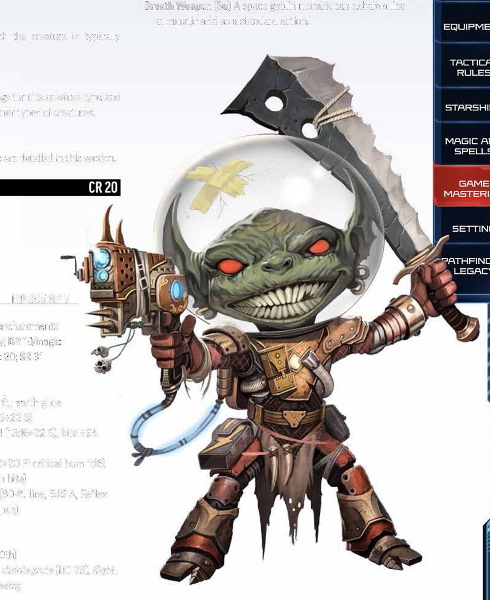
How to Read Stat Blocks
Lastly, we finish the GM section with "how to read a stat block", which is of dubious usage given this book only contains a single monster stat block, but sure, here it is. The only thing that's really new to d20 other than sections detailing with Starfinger-specific traits (resolve points, EAC, KAC, etc.) is an "aura" entry (for persistent area effects from a creature). Interestingly, monsters now only have ability modifiers, not scores. (Scores were obviously still completely necessary for PCs, tho.) This is a section of the book only put in so you can understand supplemental material. It's not worth a thing on its own, because...
We get one statblock as an example, and a pointedly useless one: the "Space Goblin Monark" at CR 20, a space goblin technomancer with nearly 400 hp that does around 67 damage with each hit of its "quantum dogslicer", can teleport between planets, charm people, robotify people, spit acid, is invisible-
It's like a parody of 3.5 monster stats. I'm not entirely sure how serious this is supposed to be. It's also actually unusable even beyond its ridiculous numbers and abilities - it has a number of powers and effects that are never described in the book, like an "unnatural aura", "light sensitivity", or "earth glide". So, ultimately, we have an entire section that's relatively useless unless you pick up a book like the Alien Archive, since that's the only antagonist statblock we get.
Owen K.C. Stephens, Starfinger Design Lead, Gencon Q&A Transcript posted:
For the Core Rulebook, we already want everything that goes in the campaign book, everything that goes in a core rulebook, everything that goes into a system for starship combat. Ultimately there's only so much room for this thing if we don't want it to end up being 50 pounds and 5,000 pages. This is the solution we came up with that we all worked very, very hard on, so that we could give you the monsters you need, allow you to play on day 1, but not give you a book that you can't carry.
The final book is 525 pages and 3.7 pounds, for the record. We just hit page 421. I feel like it's a peculiar form of insanity carried the genes of D&D that makes a designer believe, with a straight face, that 525 pages is not enough space for a complete game. Those rules for deadly space pot? That spell that turns people into suffering robots? The fourteen pages of sample character builds I didn't even mention because who could possibly give a ysoki's ass?
That shit was necessary. Also, the designers were straight-up honest about it, why is the book adverted as... well, I'm probably not done with that dead horse just yet. But I wish I was.
Next: Mind the gap.
"Musically, [Starfinger] is basically a Coheed & Cambria album."
Original SA post
Starfinger Core Rules Part #22: "Musically, [Starfinger] is basically a Coheed & Cambria album."
(James Sutter, Starfinger Creative Director, Tribality interview.)
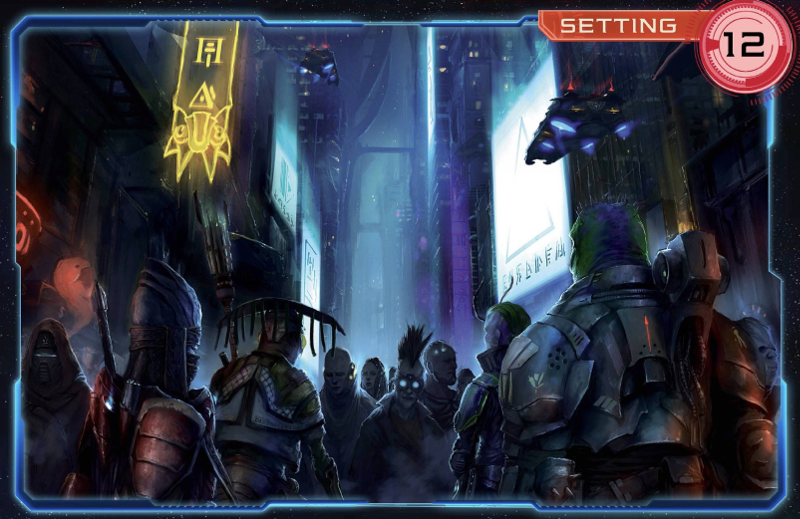
So, most D&D-alikes only have a implied setting - maybe some gods are named, we know dwarves and dragons exist, some guy named Higbee had a spell named after him, whatever. But they don't often dictate a full setting. Starfinger breaks from that and has a defined setting: the "Pact Worlds". I had to wonder why it does this, of course, and the easiest reason is marketing. After all, if they wanted this to be true...
Starfinger Roleplaying Game posted:
This book contains all the information you need to play Starfinger, whether you're a player or a Game Master.
... they could have turned over the next 75 pages to antagonist statblocks. But they didn't. They also skipped the "how to create a world!" section you see a lot in D&D-style games. Because they're not interested in that, apparently. What they are interested in, however, is selling you on introducing the Pact Worlds setting.
I can only surmise the reason is marketing. It's easy to sell d20 players a big book o' crunch, but likely harder to sell their Golarion material. However, by getting players and GMs to invest in the Pact Worlds setting at ground zero, it makes them much more likely to buy setting books and adventures set there. And so Starfinger isn't just a game, but a setting. Now, plenty of games do this already as the default - Vampire: the Masquerade was anything but a game of generic vampire politics - but it's a shift for Paizo that's worth noting, and one presaged by Pathfinder products having become more and more tied to their setting of Golarion in recent years.
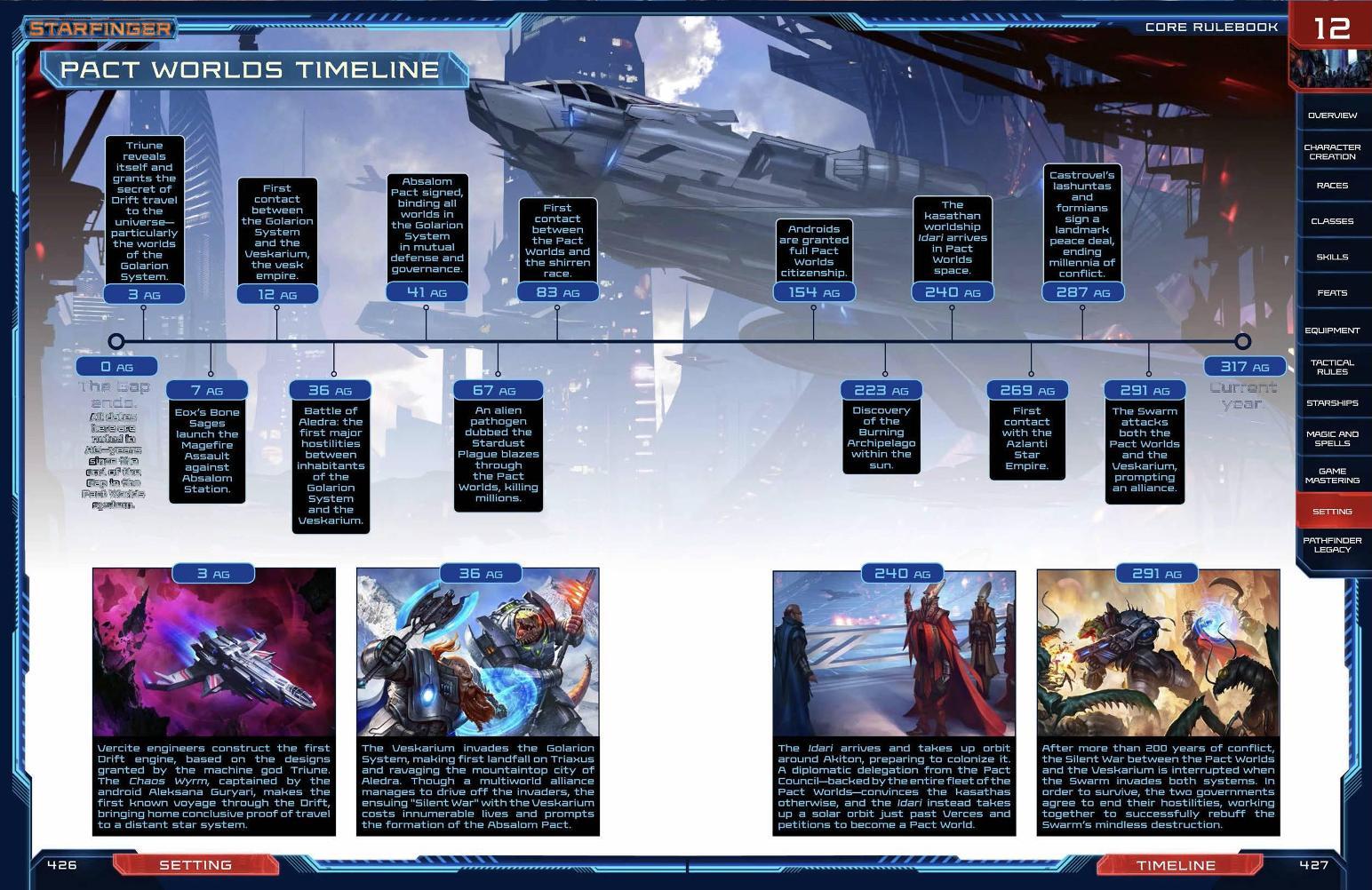
History
Hoo boy. history is a rough place to start. To editorialize: sell people on what makes your setting special and interesting, and then they'll be interested in the history and lore on their own. However, we go from here to a timeline in the span of three pages.Timelines are exciting, right?  Super-exciting! They, uh, have numbers! And events! And a general lack of context! Everything you've wanted!
Super-exciting! They, uh, have numbers! And events! And a general lack of context! Everything you've wanted!
 Super-exciting! They, uh, have numbers! And events! And a general lack of context! Everything you've wanted!
Super-exciting! They, uh, have numbers! And events! And a general lack of context! Everything you've wanted!
So, the big event that opens Starfinger's history is "The Gap" (not the store). Essentially, about three centuries ago everybody got hit with selective amnesia regarding an indeterminate space of time - you know, the movie sort where you forget your name or your history but can still remember how to hold a fork and all the appropriate curse words to use.It even seems to have affected extraplanar beings, so if you're like "Okay, I'll use Contact Other Plane and ask a space angel", that's no good either. The space angels don't know shit. And for the records, the gods were either affected as well or aren't chatty about it. It's intended as the big mystery, so you can go around being space archaelogists looking for answers as part of the Starfinger Society. For whatever reason, it isn't fully consistent - some places might have some details or records that were somehow preserved - but otherwise computers and records were wiped. Conveniently, people have rediscovered the name of the original planet that humans and all your Pathfinder races came from - Golarion - but it seems to have gone missing. After all, records from before "The Gap" (again, not the store) still exist. (Golarion is the published setting for Pathfinder.) The gods, when questioned, mention that Golarion still exists, but in some secluded space "unreachable by magic or science". So, you may as well forget about it, because that literally covers all means through which you would reach it, doesn't it?
In any case, the Gap (as a reminder, not the store) is an old conceit, going back likely to Rebirth: When Everyone Forgot!, a 1944 novel where a scientist inflicts an amnesia ray on the world, to anime like A Wind Called Amnesia. Starfinger takes place roughly three centuries after this event, so the holocaust of collapsing societies and reborn civilizations has already largely occurred and things can get back to relatively regular space business again. (Thankfully, any of the five or six conquering space forces all avoided the Pact Worlds during that period, or so it seems.) As many recovered, they discovered they already had interplanetary travel invented, but then the god Triune would come along and fart ou Drift technology for interstellar travel. This was already as discussed in the spaceship chapter, though this section doesn't beat around the bush and says outright that Triune is responsible for Drift technology. As such, you've had a rush by various civilizations to seek new worlds, but also the emergence of new threats from faraway places.
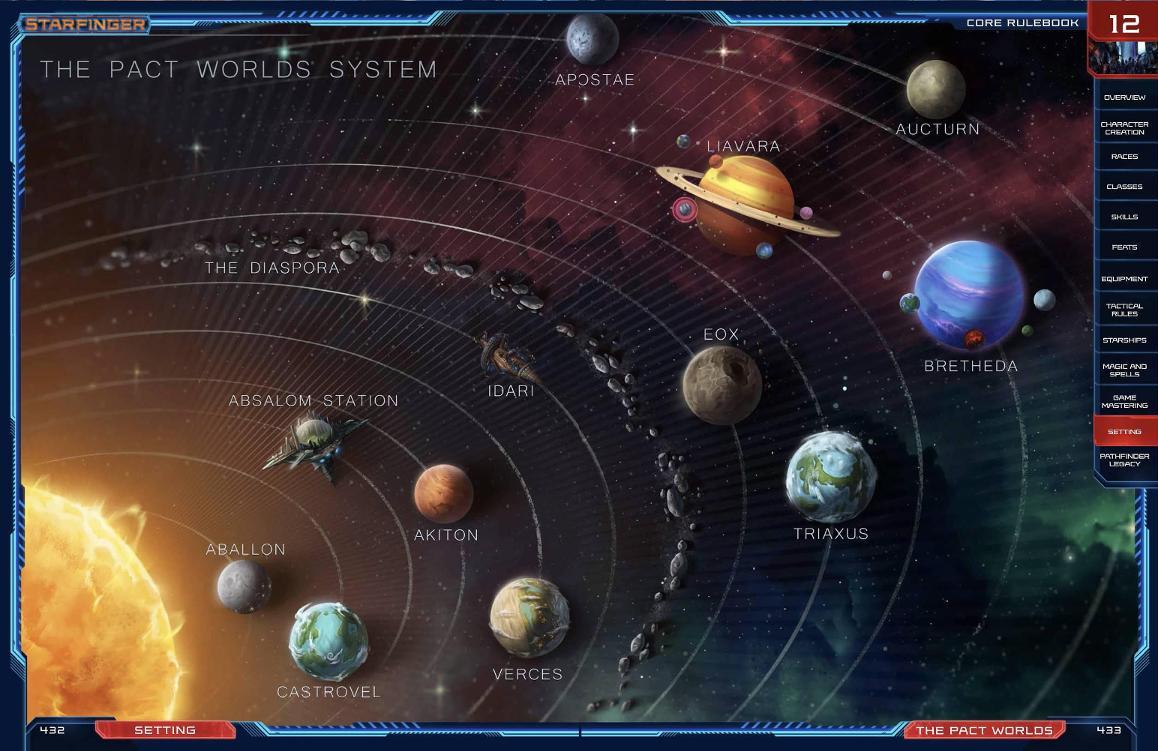
The Pact Worlds
The worlds of Golarion's system - the core of our setting here - were already settled after the Gap (not the store). In their exploration, they encountered the Veskarium, empire of the vesk, aka the lizardy not-Klingons from the character creation section. For mysterious reasons, the vesk had not gotten Drift technology, but were savvy enough to greet Golarion system explorers long enough to steal Drift technology themselves. Then the vesk, having the seeming depth of any generic warrior race, immediately put themselves to work building interstellar spaceships and then attacked the planets of the core setting. This forced the inhabitants of the Golarion system to form an alliance they would call the -
- Pact Worlds. Whew. I can now stop referring to the "blahdeblah of the Golarion system" which is awkward to say because Golarion already vanished into a plot hole. Anyway, the Pact Worlds and Veskarium would go to a low-intensity war, with neither able to obtain a decisive advantage. But then they were interrupted by the "a vast, world-devouring entity called the Swarm", so they put aside their conflicts and formed an alliance to fight off a big assault by alien bugs. While the alliance was tense afterwards, it has remained ever since. Other PC races like the shirrens or kasathas would show up, clock in, and then march onto the character selection screen obligingly. Why show up at the Pact Worlds, though?
Well, this isn't clearly explained here, but there's a space station orbiting the orbit formerly occupted by Golarion - Absolom Station. Apparently, it contains something called the Starstone which in prehistory supposedly allowed people to become gods. Right now it's not so much about the begodding, instead acting as a powerful Drift beacon. This makes travel to Absolom trivial as detailed in the starship section. As such, the Pact Worlds have become one big cantina scene writ large, with Absolom Station at the center of it all. However, it seems like it would also be really easy for the Pact Worlds' enemies to warp to Absolom trivially, avoiding all defenses, but this isn't addressed.
Government
However, the Pact Worlds remain more of an alliance of different worlds than a one-system government. Though the Pact does allow things like interplanetary law enforcement, it's more of a European Union than a Galactic Empire. It ensures things like trade, some basic universal rights, and mutual defense. There's a Pact Council located on Abalsom Station, with delegates provided from each world in proportion to their population, and a Directorate of five representatives (one from each world). The Council decides issues by vote, while the Directorate handles deadlocks and particularly pressing or important crises. There's also a Director-General of the Stewards, who advises the Directorate and carries out their directives- he's elected by the Stewards. Who the fuck are the Stewards? Well, a Ctrl-F lets me know they're the Pact's Spectres interplanetary law-enforcement officers. Okay. Not all worlds get full representation - some are treated as protectorates. Moons are generally overseen by their respective worlds save for those who have achieved their own independence. And, lastly, some independent groups like the "Diaspora" or the "Idari" have their own Pact World status.
Magic and Technology
So, magic still exists, but as seen as requiring too much effort compared to technology. Still, it's sometimes incorporated into technology, though such small effects are apparently not included in dispel magic castings because that tech has work-arounds and reasons and blah blah metagame concerns. In any case, whereas there used to be a lot of magic traditions, now it's seen as one sprawling field instead. It turns out when we discover more about something, people specialize less. Sure, makes sense.
The whole melding of magic in technology is discussed a lot, but starships and rayguns still work like they would in any old science fiction setting outside of weapon fusions, so I'm not sure I see the point. Magic is everywhere, it just... doesn't affect technology or the world much, seemingly.
Communications
People communicate through... communicators. How do communicators work? By communicating. Are they radios? I mean, it says they're wireless. It mentions "cellular communication", so do they use cell towers? I don't think so. They can be jammed "electromagnetically" or blocked by materials "determined by the GM".
I'm starting to think they're not putting this under proper sci-finific rigor.
Well, however they do it, they communicate - and it mentions some powerful folks use space angels and space devils as messengers instead - but communication beyond a single planet requires fixed devices attacked to a Drift beacon, so shady sorts that need to use that kind of communications use other means or only turn on their communicators for short bursts.
Also various planets have "infospheres" (i.e. internet) and they have a not-wikipedia, but there's no internet connection between worlds, despite there being no actual technological limitation on that notion. Interplanetary communications exist, so there's not much reason why not other than cost and effort.
Time
60 minutes, 24 hours, 12 months, since there are two different worlds and a space station that "through astronomical anomalies" have that day cycle.
Astronomers, your heads may now: 

Years are marked as "AG" for After Gap, and PG for "Pre-Gap" but the latter tends to be inaccurate. So some use an older dating method called "AR" for "Absolom Reckoning". Days are literally "firstday, secondday" where firstday = monday, and months are named after various Golarion gods.
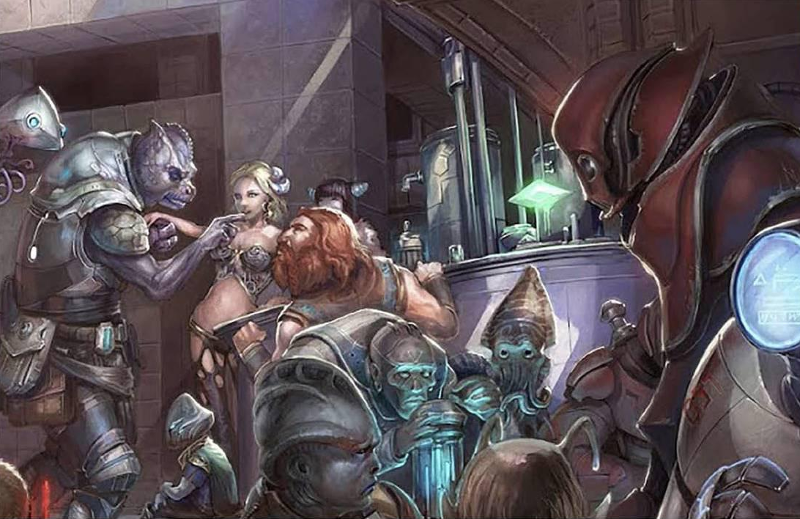
Daily Life and Culture
Despite the game being about about "... bold explorers, daring corporate agents, militant law keepers..." most non-player people are apparently wage slaves for the most part and capitalism is the norm. (Yes, space and aliens and all that, but we've got an equipment treadmill to run!) Prejudice is dampened due to the more cosmopolitan nature of civilization, but not always. In general, ethnicity and sexuality hangups have gone away, but there are still issues between races rarely. "Prejudice tends to be reserved for the most familiar and the most foreign..." Religion apparently unifies rather than divides, since most of the gods of the Pact Worlds are aligned. Well, except for the religiously-motivated antagonists that're coming up, but they don't count, do they?
Starfinger Core Rulebook posted:
At the moment, gritty Akitonian shumka beats and Absalom eyebite rock are becoming popular in many rougher venues. while upscale nightclubs play delicate Vercite ether-ballads or Aballonian-produced euphonies - music designed by advanced computing to directly stimulate aural pleasure centers, creating a perfect listening experience. High fashion remains dominated by the sleek styles coming out of Kalo-Mahoi , the eternal punk look of Absalom Station's trash-glamorous Spike, and the gothic severity of Apostae. Sports like brutaris, starlance, and ship racing persist in popularity, though most people find their thrills with VR parlor games or holo and stillframe shows.The most popular of these latter are inevitably Eox's blood-soaked reality broadcasts, constantly decried by censors but never actually crossing the line into illegality. Of late, ordinary books have even seen a surge in popularity, perhaps in part due to legendary lashunta holo star Cashisa Nox declaring a preference for well-read consorts.
I see, I see. Wait, what did any of that mean? 

Next: Oh, the places you'll go (in 1d6 days/Drive Rating).
"We didn’t try to make a fantasy that was so unique and bizarre that you’d never run into it before."
Original SA post
Starfinger Core Rules Part #23: "We didn’t try to make a fantasy that was so unique and bizarre that you’d never run into it before."
(James Sutter, Starfinger Creative Director, Game Informer interview.)
Time for the Pact Worlds proper.
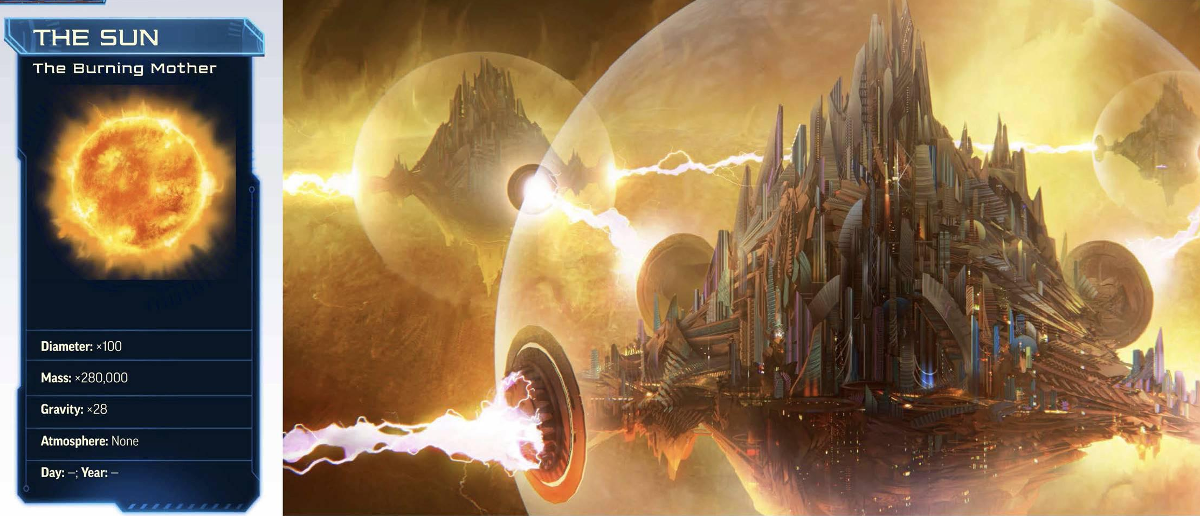
Sun
Worshippers of Sarenae (that's the sun goddess) found a bunch of mysterious bubble-cities on the surface of the sun protected by magic, and have settled there with "sunskimmers" that gather up solar energy or "magically bottle nuclear fire" to keep the place running. There are corporate robotics plants or "jungle boxes" that make use of the solar energy, though some of the jungle boxes apparently had sentient plant creatures take over them.
Apparently the Sun naturally opens portals to the Positive Energy Plane or the Plane of Fire, and sometimes people meet delegations from the Plane of Fire at the bubble-cities. There are efreet and the like who say there's mysterious civilizations underneath the sun's surface that are also are mysterious, but are afraid to talk about them, in other to preserve the mystery.

Plane of Fire II.
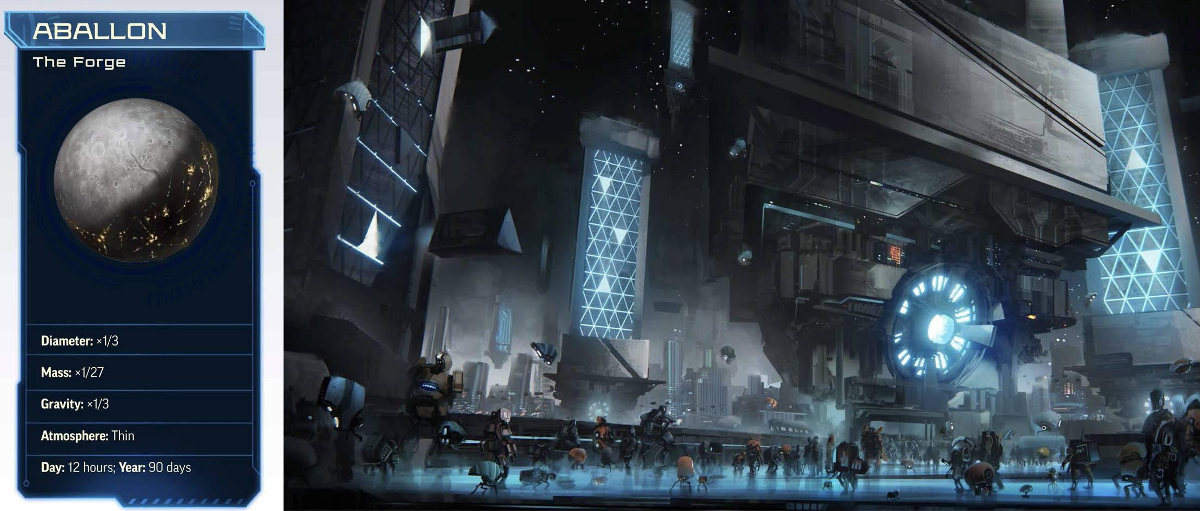
Aballon
The closest planet to the Sun, Aballon had robotic life seeded by a mysterious race called the "First Ones" who then apparently moved on after building a robot civilization. The sentient robots that inhabit the planet are divided between those who stockpile resources to give to the First Ones upon their "eventual" return, and those who seek to emulate the First Ones by traveling onwards.
You may think "Oh, this must be where androids come from.", but it isn't - most androids were constructed elsewhere. Instead, if you want to play a rad Aballonian robot, you're just out of luck right now. Maybe in a supplement they'll show up. However, it is a haven for artificial creatures. They also have a famous robot court and worship Triune, as Epoch, one of the god's three aspects, was constructed here.
Robot Mercury.
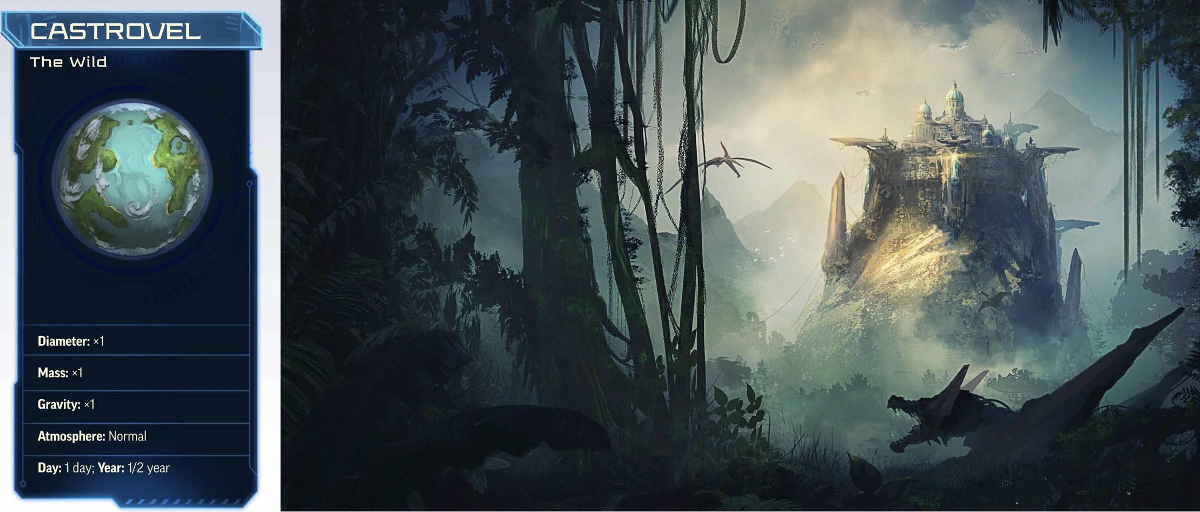
Castrovel
A hot jungle planet, this is mostly settled by lashuntas, elves, and formians. Oh, do you not know what a formian is? Well, you have to realize this Complete Game includes a lot of references to old D&D monsters it presumes you already know about. Like the efreet I mentioned above! Don't worry, no description or stats are available in this Complete Game, so just forget about them.
Apparently this has usually had matriarchal city-states in old serial sci-fi fashion connected by ancient teleportation portals (for all your MMO quick travel needs), but there's been more privatization and corporate exploitation nowadays (for all your Avatar emulation needs). The lashunta and formians used to be at war but have come to peace. Elves now serve as xenophobic psuedo-natives that keep people off their continent, should you need some angry natives.
Pulp Venus.
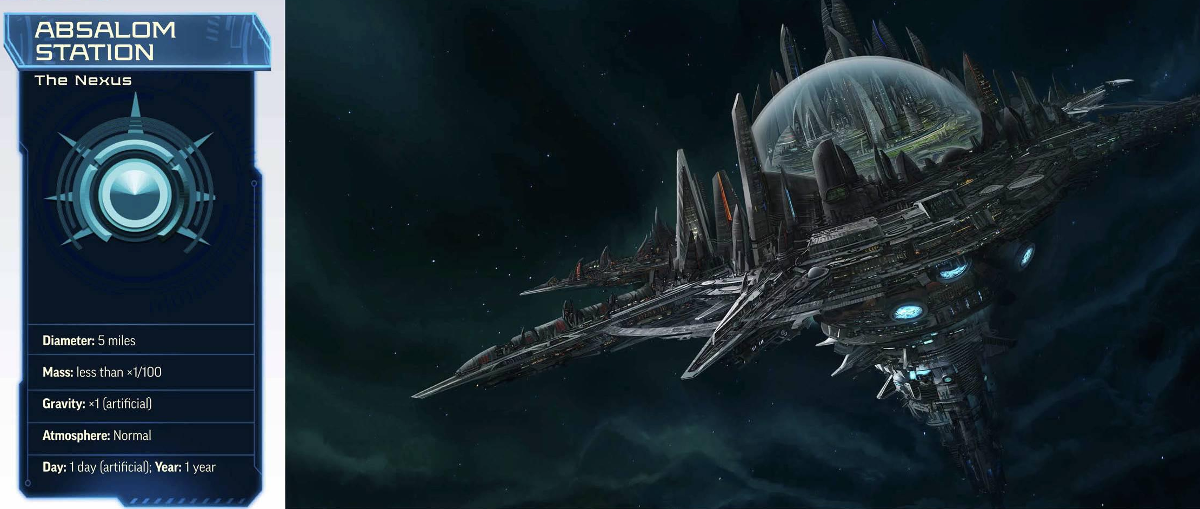
Absalom Station
As mentioned before, this is home to the Starstone, which acts as a Drift beacon and powers the station. There are myriad neighborhoods namedropped, no doubt to be dealt with in some fat location book, and right now we get engineering bays and corporate enclaves to gang-ruled sections. Because when you run the most powerful station in multiple systems that serves as the ruling seat of the solar system, what you put up with is outright gang rule over parts of it. That shit is okey-doke.
somebody's been playing too many bioware games, I think
There are a lot of ships called the "Armada" that use the station as a home base while the crew largely give in the chips. Technomancers are trained in the "Arcanamirium" and solarians are trained in the "Cosmonastery", which are real names I'm not making up. (I like getting a little cosmonastery myself, if you know what I mean.) They also have issues where nativist terrorists (that is, humans and other ex-Golarion races) want to kick out or restrict foreigners, which has increased tensions.
Babylon Citadel.
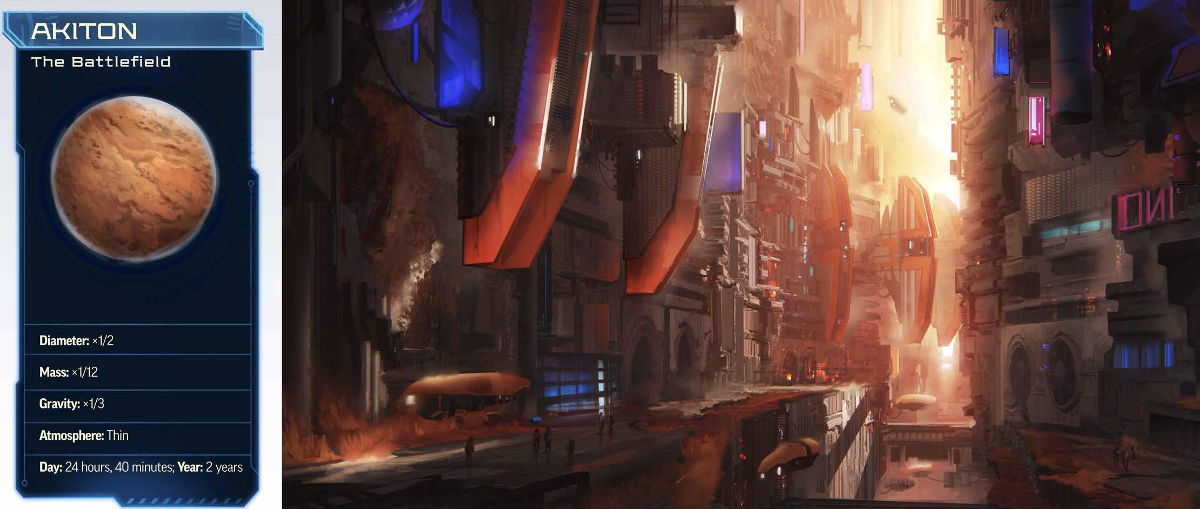
Akiton
A dying world wrecked by environmental disaster, its mining industry was wrecked by the discovery of interstellar travel. These days it's a lawless desert planet where people fight all the time. The wealthy hold it together but everything else is falling apart.
Though it's home to a variety of races, the main indigenous inhabitants are the ysoki. There are are red martians taken straight from Barsoom minus the egg-laying, shobhads which are green martians but bigger, and lizardfolk "who make model citizens until their reproductive cycle drives them violently insane". A lot of races mentioned with no stats yet to actually use them, a... theme we'll see a lot in this section. A lot.
Tatooine Barsoom.
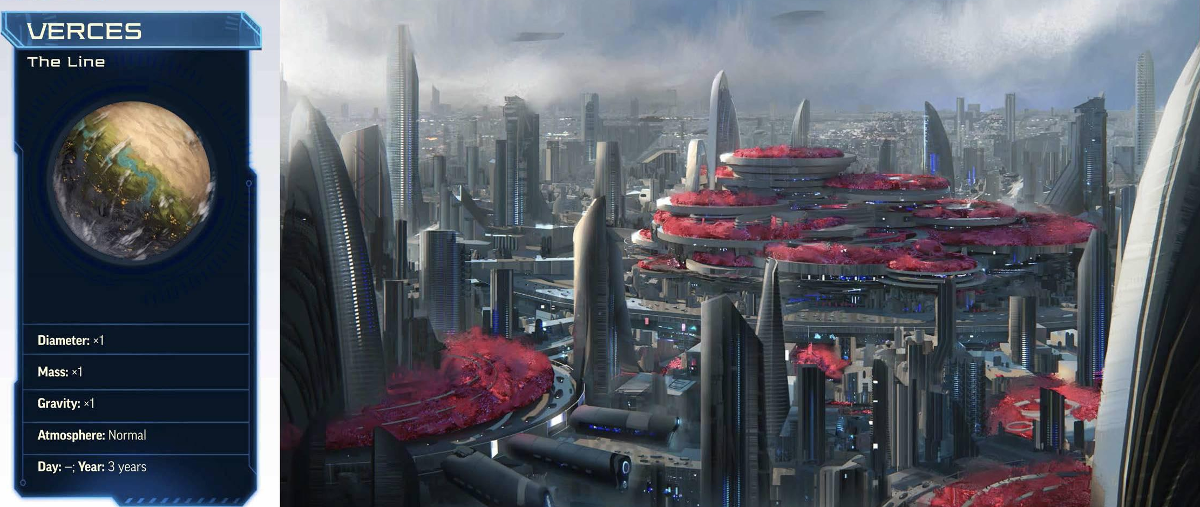
Verces
So, this is a tidally locked world. Could life actually exist on a planet like that? Don't ask questions like that, it does! One side is a desert home to "plants and animals with photosynthesizing skin" while the other is full of sinister predators because it's dark, man, so dark, like. Meanwhile, there's a temperate zone in the middle that forms the "Ring of Nations" that was the inspiration the Pact Worlds. However, they're occasionally raided by "Outlaw Kingdoms" that exist outside the ring, somehow. There are also solar farms and ice mines here as well. Inhabited largely by the verthani, who apparently are like humans but with color-changing skin and black eyes. Can you play one? Not yet!
Also there is a mysterious tube on the bright side of the planet that nobody has returned from exploring, and those who did only "transmitt[ed] only strange ravings about winged creatures in the depths". So bats? Sounds like bats to me. Spacebats.
'winged creatures' is supposed to be scary and ominous in a setting where a winged alien might be your goofball neighbor, I suppose
Coruscant meets Pandora.
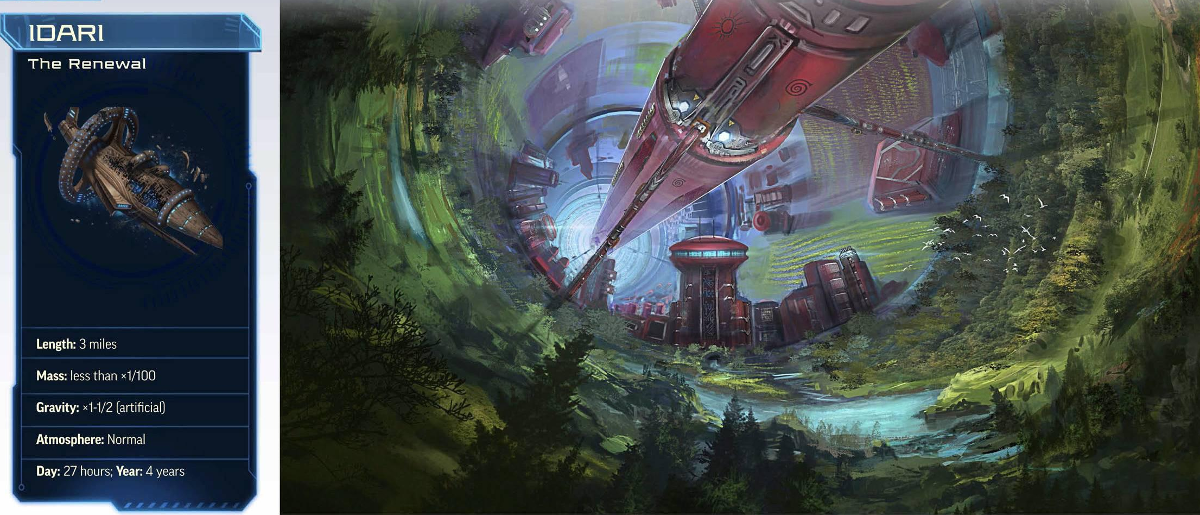
Idari
Not a planet, but a kasthan colony ship parked in orbit just past Verces, since they couldn't find room on Akiton? Seriously? That place is a dying desert shithole where nothing grows and people kill each other every day, it can't have that many people. Well, whatever. I suspect they took one look at the world and were like "y'know, maybe space is better anyway". This has a large rotating center with people living along the interior of the "Drum", despite the fact the art makes it look like it has a big gaping hole in the side. Though it doesn't fly anymore, a good deal of the population works for the government just maintaining it. Yet despite this, anybody can emigrate whenever they want, so working on the ship must be a pretty sweet gig to hang around doing menial labor all the time.
They have a large spire-like temple called the Sholar Adat where the dead are taken, and they take a "hair-thin" slice of the deceased brain which can be used to summon back the deceased's soul for questioning via technomagic. It implies this might require an undetailed fee and accessing souls older than a century requires a warrant for some reason. Kind of a neat idea, but a bit vaguely presented.
Generation Ship.
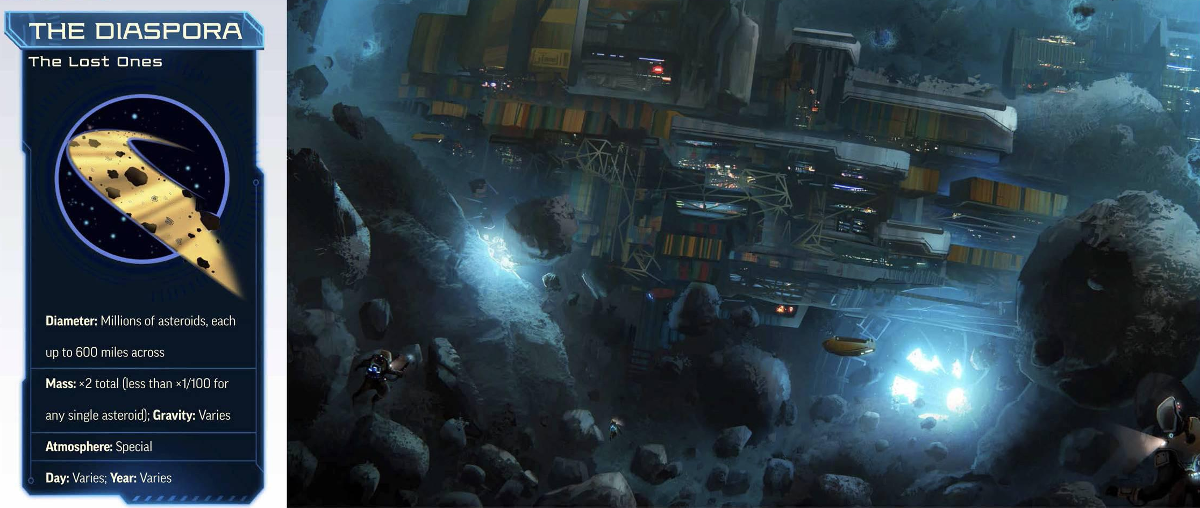
Diaspora
An asteroid belt caused by the collison of two planets millennia ago, this is your standard asteroid felt with some larger chunks for settling. It's implied in the text it's not your cinematic sort of belt where the asteroids are close enough to form an obstacle course, but the art is firmly in the dramatic rock swarm territory. It's mainly home to miners and space pirates, but there are also "sarcesians", angelic humanoids adapted to hard vacuum. Are there rules for them or any more details than that? Of course not! Buy supplements, kiddo! Also they hate Eox.
There's also a small planetoid here called Nisis, mainly made up of ice and water and full of monsters that eat colonists. The solution, seemingly, has been to send more colonists. Also it has a magic river that flows between various asteroids and planetoids, but it's become more dangerous because of attacks of unseen creatures which are called "diaspora wyrms" even though nobody's seen them. Also Nisis is growing bigger! This is mysterious. What's going on?

Also there are spooky space cultists who all vanished and left a haunted asteroid. You should totally go there, that'd be a great plan.
"Looks like Poppycock."
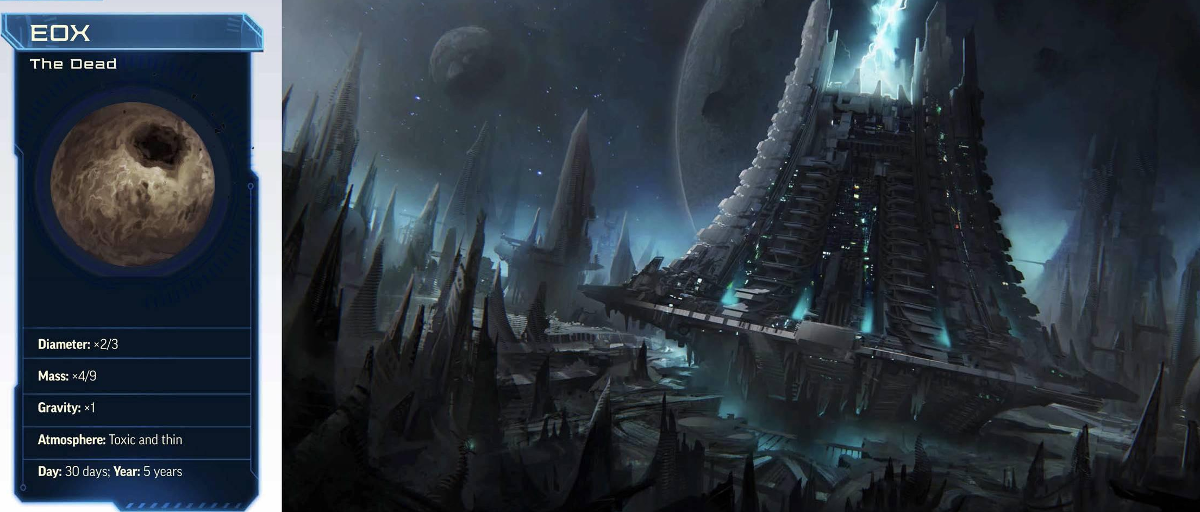
Eox
Once home to the technologically and magically advanced elebrians - who were like humans only they were called elebrians instead - they became haughty and decided to blow up all other worlds that didn't acknowledge them as The Most Awesome Ever. So they blew up two planets and created the Diaspora (which is why the sarcesians hate them) but the backblast from the weapon nuked their whole world. Oooops. The survivors became necromancers and most of the survivors are undead or mutants, in that order. Bizarrely, though the elebrians previously had spaceships statted up, the elebrians get no stats themselves, despite being one of the core setting races who get mentioned a bunch.
Run by the bone sages (no doubt experts in the ancient art of boning), the non-undead elebrians are often contentious internally but united against external threats, and are generally just amoral as opposed to malevolent. Also they have a city set up entirely for living inhabitants which have "cruel reality shows and competitions" that are aired throughout the Pact Worlds. Seems ethical.
Ghost World.
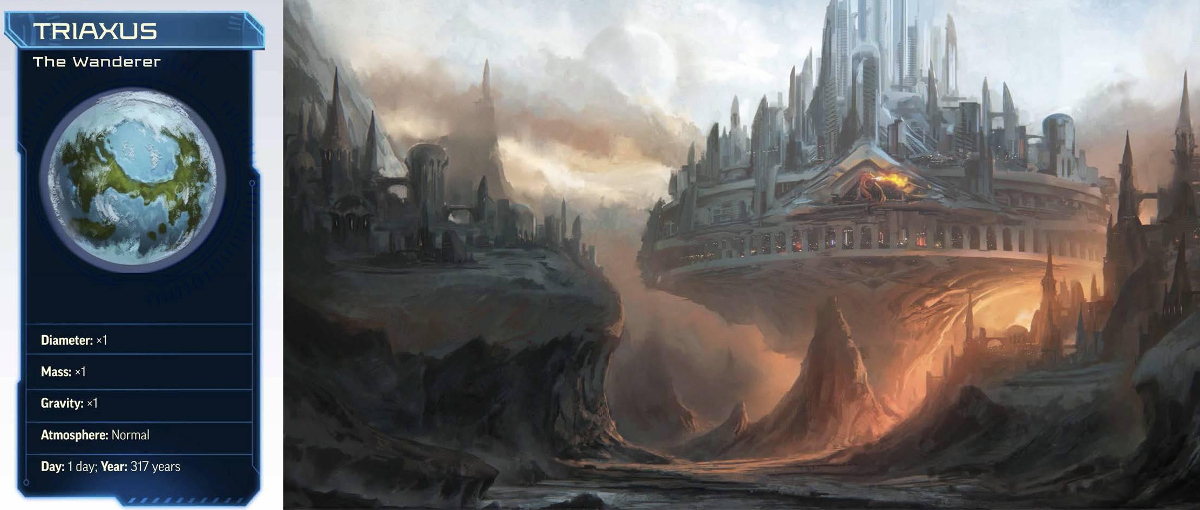
Triaxus
So, this has an eccentric orbit that causes a 317 year summer / winter cycle, and is home to "ryphorians" who are humanoids that have dark sun during the summer cycle and white fur in the winter cycle (it's currently winter). Though the local humanoid nations have been traditionally at conflict with dragon-ruled nations, the Pact has gotten the dragons to go corporate (they're mostly evil dragons). A few Triaxian countries have rejected the Pact to embrace xenophobia, instead.
There's also the mercenary company called the Skyfire Legion that used to ride "dragonkin", which - I had to look them up because shit is so rarely explained here - are riding-sized dragons that bond with riders telepathically. Instead, these days humanoids and dragonkin team up as coopilots on starfighters. There's also Ning, which is anti-Pact but pro-Corporations and pro-criminals, and is "obsessed with honor and status" and has "genderless warriors" and... the whole thing feels vaguely Ming the Mercilessish, but it's not very detailed here.
Mongo Pern.
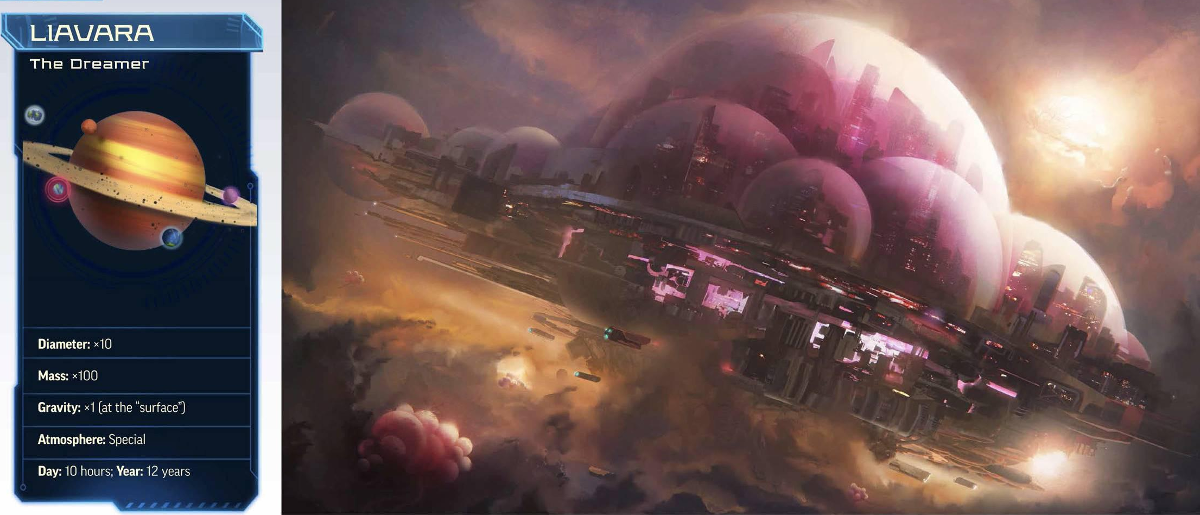
Liavara
A ringed gas giant, apparently the gassy interior is well-populated witha fauna like "oma space whales", "giant bacteria", or "keji swarms". Apparently this planet is home to the "Dreamers", who are descendants of barathus colonists who have gone into an enlightened nature children sort of state and sing prophetic songs, like you do. Who are the barathus? Wait until the next planet for that. The barathus apparently are fairly territorial and see the Dreamers as "psuedoholy". As such, gas mining and colonization is fairly restricted.
Naturally, it has many moons, including Arkanen, which apparently loses its atmosphere throughout the year only to have it replenished in an "impossible" orbit that travels through Liavara's atmosphere, and some think it was deliberately crafted to orbit in this fashion. In addition, there's Osoro, which has settled mountains rising over a poisonous lower atmosphere. Melos had all of its population vanish and has ruins that get picked over. And there's Hallas, which is apparently isolated as the local energy beings tend to cause normal people's heads to explode incidentally.
Saturn Rukh.
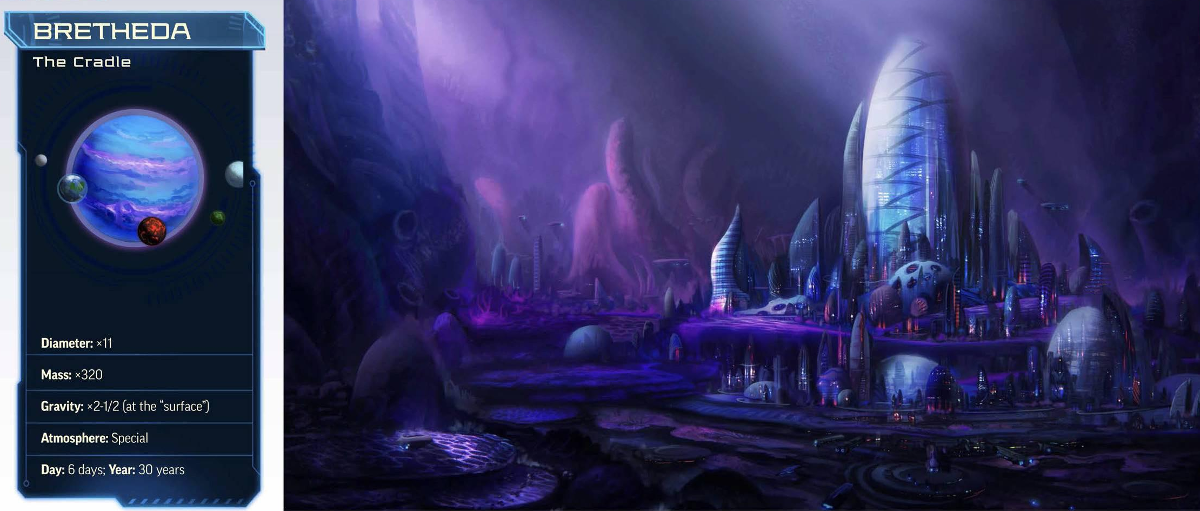
Bretheda
A gas giant and the largest planet in the system. Here you can find the barathus, who are big jellyfish that are intensely communal and rely on biotechnology. They have a larger entity called Confluence that serves as the equivalent of a government when needed, formed by barathus who volunteer to be a part of a communal intelligence.
There's an ice-covered moon called Titan Kalo-Mahoi run by "the aquatic Kalo", a forested moon of Endor Marata with a "seven-gendered" "furry" race called the maraquoi who are split between trying to preserve their culture and joining with the rest of the solar system. There's Dykon which has the "urogs", brilliant crystalline creatures. Then there are the "death moons" like Thyst or Varos with extremely hostile environments that are largely home to mining operations.
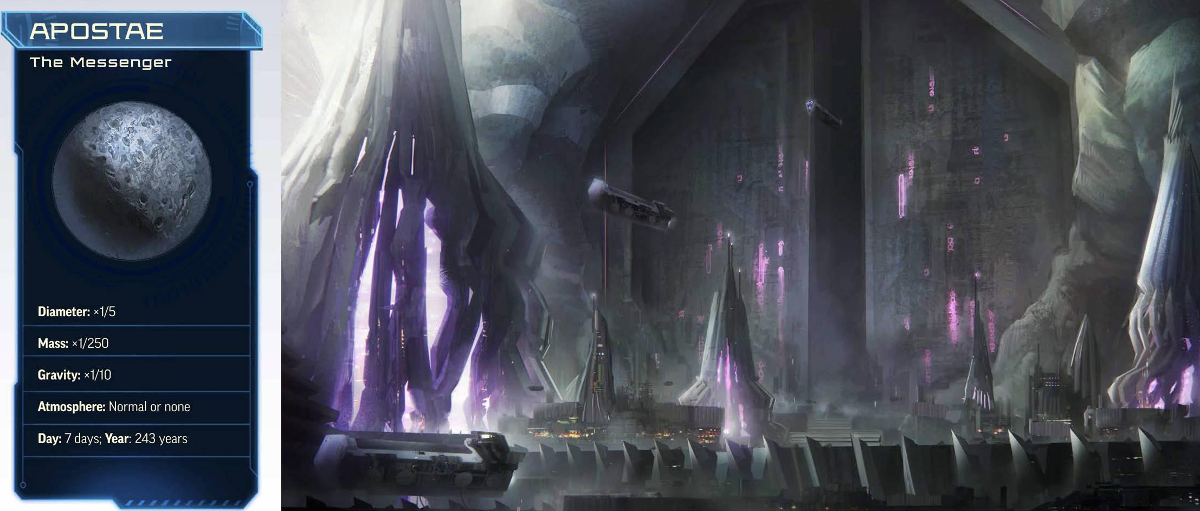
Jupiter Medusa.
Apostae
A rocky planet once apparently settled by a lost race, the drow have come here because it's dark and already has a bunch of ruins and tunnels carved up where they can be at home. And "home" involves summoning demons and using orcs and other races as near slave-labor. The Pact Worlds apparently put up with this because-

Since the drow settlements are comparatively small, there are still a lot of dungeons ruins to explore and a mysterious portal to an unknown location. Not really more to say.
Menzoberranzan Neptune.
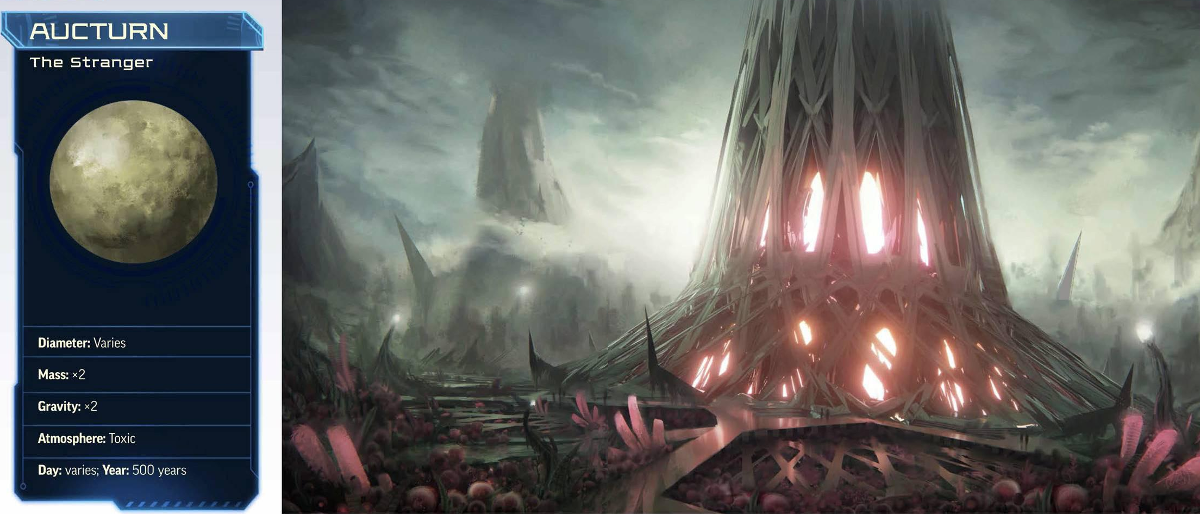
Aucturn
A planet that most believe is actually a giant Great Old One egg, and apparently it's warred over by the "cults of the Elder Mythos" who want to ride it like an atom bomb and the "Dominion of the Black" who think they can control Peepthulu. There's also a big temple to Nyarlathotep which is run by Carsai the King who may actualy also be Nyarlathotep. He's apparently become a pop culture icon for the edgy and successfully promoted Elder God worship.
In any case, it's big organic goozone with a spooky and poisonous green atmosphere. There's apparently a mountain called the Gravid Mound that some think is a big pregnant lump where Aucturn will give birth before it's born because Those Are the Ways of the Goooods. Apparently, they think they'll get some sort of big pinata explosion of cool magic instead of all dying. Makes sense.
Yuggoth Pluto.
And that's that, we can wrap up the Pact Worlds system there. There are some interesting ideas, and some derivative ones, but it's hard to use either given the lack of stats provided in this section for the litany of things that are namedropped.
Next: New worlds, new civilizations.
"As is always the case, I got super excited by all these ethical quandaries and was keen to put them in the game."
Original SA post
Starfinger Core Rules Part #24: "As is always the case, I got super excited by all these ethical quandaries and was keen to put them in the game."
James Sutter, Starfinger Creative Director, Starfinger Reddit AMA posted:
At which point the rest of the team pointed out that games are supposed to be fun, not just a vehicle for philosophical treatises.
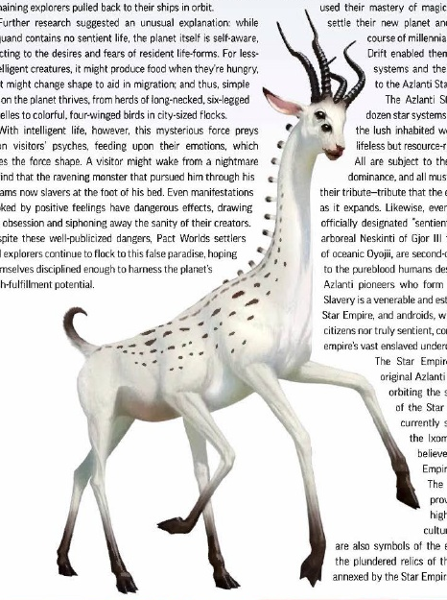
Beyond the Pact Worlds
We get some notes that most other locales are wild frontiers, but there are other empires likt the Azlanti Star Empire (who?) and the Veskarium. Most places haven't arranged interplanetary empires, though. Some of the other notable places listed are:
- Cynosure: Apparently once the polestar of Golarion, this is supposedly home to the goddess Desna (who?) and her servants known as the Spheres (what?).
- Ironstar: A massive Dwarven space station equipped with a Drift engine, this travels through the galaxy looking for a mythological promised land for dwarves.
- Kasath: The home planet of the kasathas, this is a desert planet being irradiated and overheated by its sun, which is an expanding red giant. There are some karathas that remain here stubbornly because fuck the sun, seriously.
- Lausill: A water planet with water people who don't go into space because legends.
- Taru Seco: A binary system with ruins left behind by ruin-leavers.
- Xio: A space station in deep space that broadcasts distress signals in an unknown language, but nobody who has gone there has ever returned ooooo..
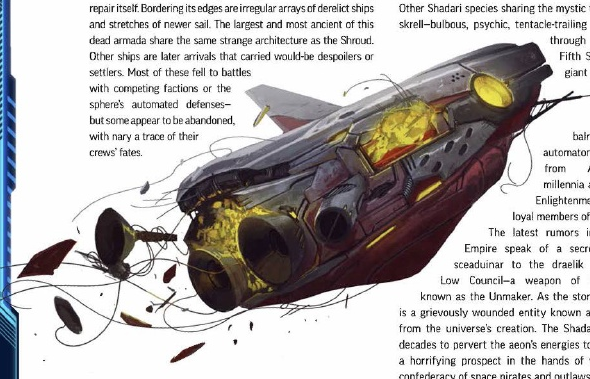
After that short list, we get a longer list! Lists on lists.
- Arquand: A self-aware planet that shapes itself to the needs of its animal inhabitants. With sentient visitors, though, it brings their dreams and wishes true in the usual GM-screwy way and drives pepole dead or insane, but people travel there to try and use this ability to their advantage (it doesn't work out).
- Azlanti Star Empire: Apparently formed from an interstellar outpost created by a former Golarian Empire of humans, they apparently became magically and technologically advanced, and have been busy conquering star systems ever since. It has a variety of barely-described alien races as well as android slaves.
- Daegox 4: A super-prison in a nearby system run by Daegox Corporation which is run by the appropriately-named Daegox, a "mysterious humanoid race", doubly mysterious in that they're given no description. Nobody has ever escaped!... except for one person who probably has?
- Daimalko: Populated by the "gray-skinned Daimalkans", this planet apparently was wracked by war until colossi awoke, which were apparently also called "kaiju", because sure, why not, may as well call then titans while you're at it. In any case, people had to retreat underground until mysterious "Guardians" showed up with magic orbs that could direct the colossi, and the people have started to repopulate the surface, but there are still various dangers and blah blah blah why would you go here I dunno.
- Embroi: A sea planet run by "regal mollusks", headed up by the Embri, who are masked and follow proscribed roles, having quashed out all freethinking. However, few realize that this is apparently a fiefdom of Hell, with the demons apparently being homebodies- sorry, "exist only in the planet's shadows", which I'd interpret as living in your parent's basement. They have plans and a small bowl of word salad that isn't explained.
- Lothun: So, a big metal planet settle by the group called the Prospectors (who?), they tried to use nanotech that went haywire and though there's some wandering pockets of atmosphere now, the Protectors can no longer be contacted, and it could be a target for those looking to gain their terraforming tech either for good or eeevil.
- Orikolai: A halo- er, toroid-shaped plent, the odd shape creates long seasons that local life has adapted to. Some spectuate this was some kind of lab or experiment by a long-vanished race (with a moon at the center), but apparently there's a a race against time to study it, as it's about to collapse! Well, in centuries, anyway. But it's immediate!
- Orry: Once a technomagical utopia, well they fucked up and blowed it up. Of course they did. Never once have I heard the word "utopia" in a game without the sound of a train crash or diving plane immediatley following it. In any case, is is now 10 swaths of land that float in the same atmosphere, and they don't collide despite at times crossing close enough for people to grapple hook between them. Also there are mysterious artifacts that prevent planes and teleportation from working, so better work on that swingin' arm. A land of contrivance.
- Preluria: An acidic gas giant inhabited mainly by "psychic gas oozes", but there are a number of settlements on its 23 (mostly) inhabitable moons for those seeking extreeeeme isolation, from the rich to the criminal. There are a variety of factions that struggle for control, though I'm not sure why you'd bother so much, given there's nary a mention of valuable resources or really any reason to stick around.
- Riven Shroud: A damaged... ruin... of a Dyson Sphere, though much is still inhabitable. There's a variety of named but totally undescribed races, and it's also got defenses that engage approaching ships from time to time. However, it's seemingly using ruined ships to try and repair itself. But what happened to the crews? Spooky stuff, no doubt.
- Shadari: We just had the "Riven Shroud" and this is entitled "A Shrouded Confederacy". There must have been a 2-for-1 shroud sale. In any case, this is a system where Shadari is the largest world, and it's a space pirate and outlaw refuge dominated by an "entropic religion" where the worshippers "bear the mystic Eye of Enlightenment". Not sure if that's a literal eye or what. Supposedly they have a weapon called the "Unmaker" which could blow up the universe, which is certainly a not the best plan, but they're just evil and generic enough to do it!
- Tabori Cluster: A number of stars around a now-collapsed supergiant, the resulting nebula caused a mining rush for rare "siccatite" deposits, whatever those are. However, some people here have been stranded by "interference destroyed their vessel's engines", which certainly is some interfering. Others just like living on a rustic shithole with a pretty sky.
- The Veskarium: This is a large solar system that the Vesk conquered prior to Drift technology, and they have a variety of client races, including "stone-faced squidfolk", "feline humanoid barbarians", and "pacifist frost behemoths". It's run by vesk autocrats obsessed with honor, but are ruthless and see non-vesk as inferior.

And so, we come to the end of space. We've got a lot more to cover still, but I just want to stop and just emphasize how many races we're gotten to tease us for the Alien Archive:
-
Efreet
-
Salamanders
-
Anacites
-
Formians
-
Shobhads
-
Ashok
-
Ikeshti Lizardfolk
-
Verthani
-
Sarcesians
-
Elebrians
-
Ryphorians
-
Dragons
-
Dragonkin
-
Dreamers / Barathu
-
Kalo
-
Maraquoi
-
Urogs
-
Drow
-
Orcs
-
Orocorans
-
Neskinti
-
Vilderaro
-
Neskinti
-
Daegox
-
Daimalkans
-
Embri
-
Devil (malebranche)
-
Orrians
-
Draeliks
-
Skrell
-
Balrodds
-
Haan
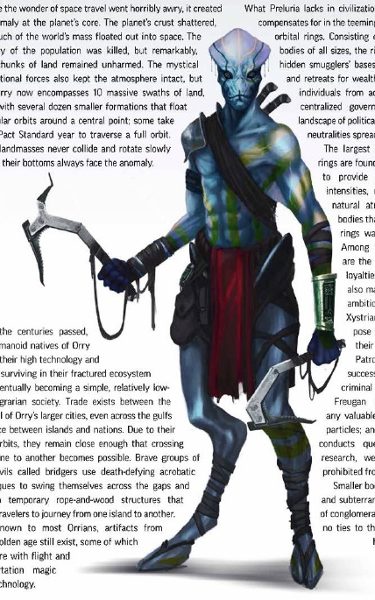
Also, we have a variety of unnamed races - "pulsating philosopher worms", "hyperevolved energy beings", "several advanced aquatic civilizations", 15 unnamed Azlanti client races, "stone-faced squidfolk", "antlike beings", "feline humanoids", and "pacifist frost behemoths".
Starfinger Roleplaying Game posted:
This book contains all the information you need to play Starfinger...
Oh, shut up.
Next: What if you could Slide into a thousand nineteen different worlds?
"That is known as the Drift, and when you go into the Drift, sometimes you pull stuff from other planes with you, whether that be a small chunk of Heaven or a tiny part of Hell or maybe a bit of the Maelstrom, etc. etc., and sometimes that comes with, you know, a bunch of angels minding their own business singing hallelujahs and suddenly they're in another dimension."
Original SA post
Starfinger Core Rules Part #25: "That is known as the Drift, and when you go into the Drift, sometimes you pull stuff from other planes with you, whether that be a small chunk of Heaven or a tiny part of Hell or maybe a bit of the Maelstrom, etc. etc., and sometimes that comes with, you know, a bunch of angels minding their own business singing hallelujahs and suddenly they're in another dimension."
(Credit: Jason Keeley, Starfinger Design Team Member, GenCon Q&A Transcript)
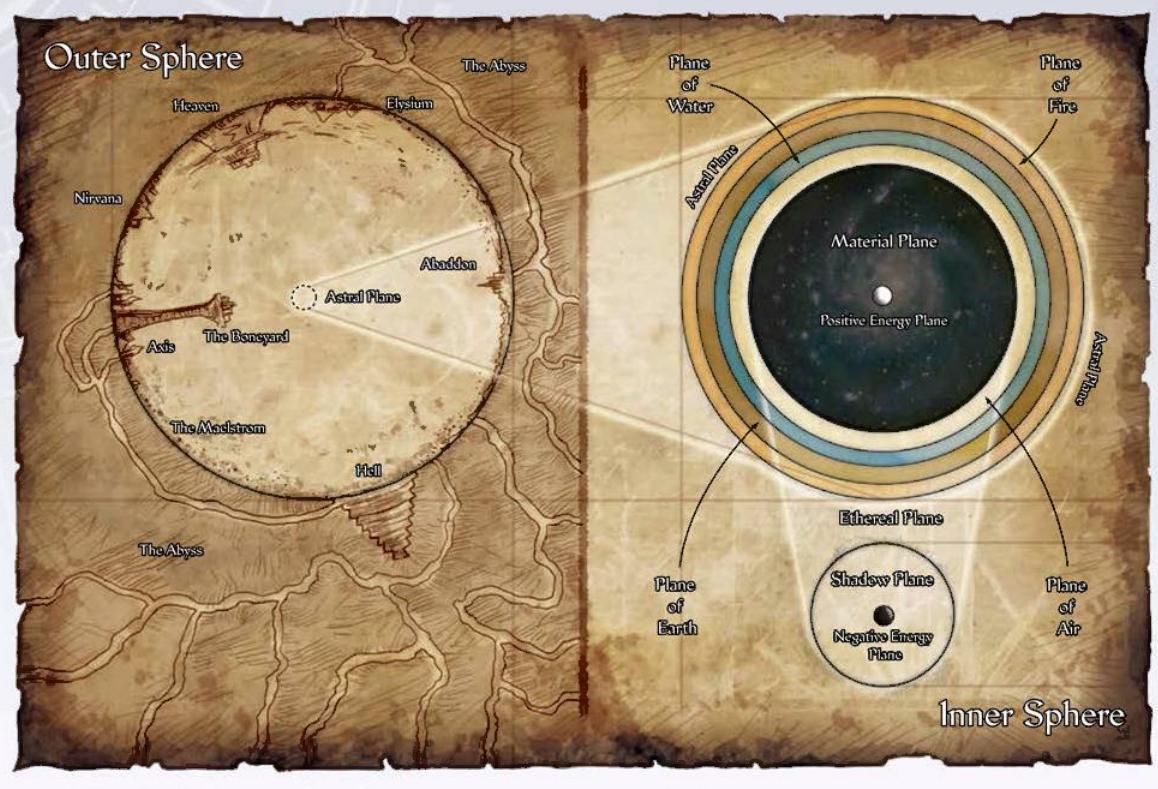
The Great Beyond
Time to talk about other planes! Granted, this doesn't see much use unless you have a Mystic or Technomancer of 16th level or higher who can cast plane shift. In addition, casting plane shift requires you to have a specifically attuned object (for Mystics) or program (for Technomancers) for a plane in question. However, the nature of the Drift means you might run into a chunk of one of these other worlds there while warping around, so there's at least that, but it's a bit tricky to use this section as written. Additionally, it's real short, so there's not much to go on. Hell, there's barely anything to go on.
The Inner Sphere is the set of planes that make up most of the area "around" the Material Plane (the Material Plane being the actual setting of the game). They include:
- The Drift: The aforementioned plane used for FTL travel.
- Elemental Planes: Four of them, Air, Earth, Fire, and Water - the usual.
- Ethereal Plane: Kind of redundant with The Drift around, huh? A spooky mist place that's a way to travel between planes!... somehow.
- The First World: A "rough draft for the Material Plane" abandoned by the gods and dominated by fey.
- Negative and Positive Energy Planes: Planes of unlife and life energy, respectively. We're told both are equally deadly! But I'll just add the "fun" murphy's rule that you can just stab yourself repeatedly on the Positive Energy Plane to keep from exploding.
- Shadow Plane: Scarytown
The Astral Plane isn't something this book really cares about, and I don't have much reason to either, as a result.
The Outer Sphere is where dead people go, becoming the servants of deities or becoming an angel or demon, and a god named "Pharasma" (not the stormtrooper) decides where you end up. We have:
- Abaddon (neutral evil): Daemonvania.
- Abyss (chaotic evil): Demonville.
- Axis (lawful neutral): Inevitabland.
- Boneyard (neutral): Pharasma's Judgement Park.
- Elysium (chaotic good): Hippiezone.
- Heaven (lawful good): Archonia
- Hell (lawful evil): Devilburg.
- Maelstrom (chaotic neutral): CHAOS CONTROOOOL.
- Nirvana (neutral good): Sounds really monastic for a place monks can't end up.
Of course, you can summon some of the creatures from these planes, but are there any rules for them? Of course not! Are there any rules for these planes? Of course not! Are we done with this section? Of course n... of course.
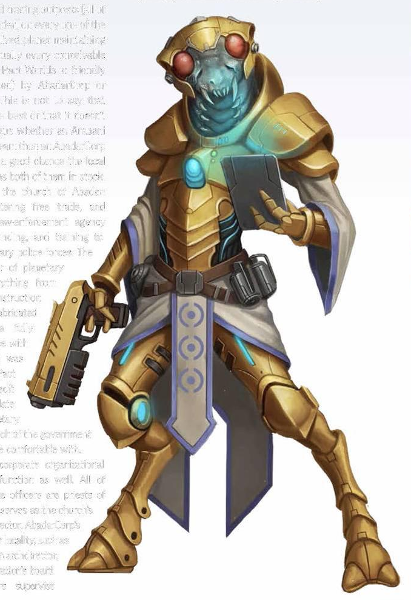
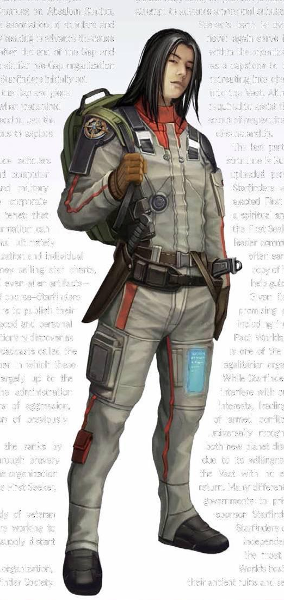
Abadarcorp and Starfinger Society illustrations.
Factions & Organizations
Like the "Beyond the Pact" section, it starts with micellany and then moves onto the main organizations? It's a weird layout, so I'll reverse the order a bit and start with the main factions.
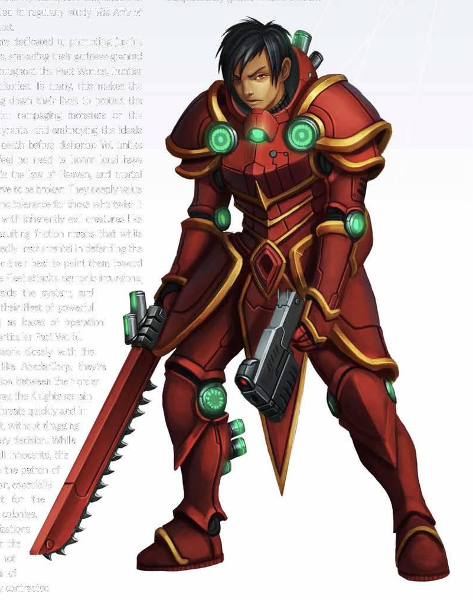
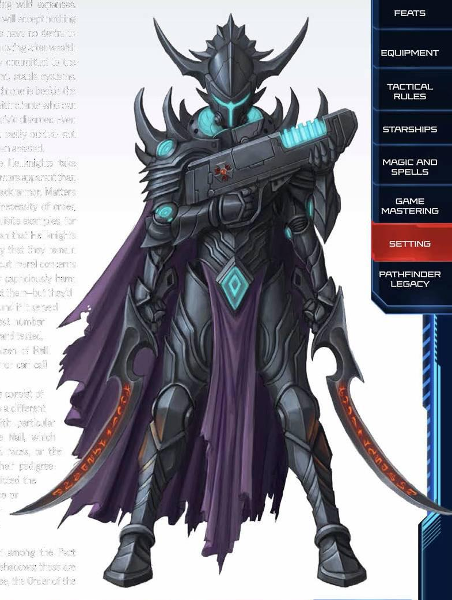
Knight of Golarion and Hellknight illustrations.
- Abadarcorp: The largest corporation and Church of Abadar, god of Civilization + Commerce + Wealth. Basically they Wal-Mart up everything and are effectively the Pact Worlds governmental bank. People are uncomfortable about this but there's no indication Abadarcorp is anything but straightforward.
- Android Abolitionist Front: So, this is a covert organization that goes around liberating androids, which is cool! Also they're super-secretive, which is weirder given that... enslaving androids is illegal in the Pact Worlds and they're really just busting up criminals. I mean, that cloak and dagger stuff makes sense if slavery is the cultural norm, but not so much when it's clearly not allowed. However, there's an extremist, violent minority that believes anything that seems to be sentient needs to be liberated, and go around gunning down ship crews to liberate their AIs. (Because I guess we just can't have liberating slaves as a straightforward good cause... or something...)
- Augmented: This is mostly a social movement that thinks self-augmentation is rad, yo. They're mainly based out of Verces and has a lot of people who just plug in to the net and tune out, man. Most are open-minded sorts who are just pushing for understanding, but of course you have the extreeeme faction who wants to just forcibly augment people with nanos or surgery, and the two groups have a "shadow war" going.
- Free Captains: So, this is a sort of space pirate brotherhood run by pirate lords. They have a code - don't attack fellow members, respect ships that pay protection fees, stand by your word, and crews have to fight for their commander unto death - but can leave at any port. This is basically to prevent infighting, but exactly why is... vague. It's not like they seem to be united against lawkeepers or anything, but I guess it makes it harder on space cops, but there's no actual rule again ratting people out. Probably should add that in.
-
Hellknights: Oh hey, Mercykillers, haven't seen you since Planescape. 'Sup?I guess I should say a little more. These are guys that go around enforcing law irregardless of the morality involved. What law? Y'know... law... that thing everybody agrees on... that isn't subjective... anyway, they're basically like a bunch of Vaders and Fetts who go around bounty hunting or acting as
evilruthless right hands. Though it says they don't champion evil, they hero-worship devils, wear black spiky armor, and will burn a baby if it would preserve order, so you can make a your own call there. Kind of Mercykillers join the Space Marines while cosplaying as Sith Lords. - Knights of Golarion: Primarily united under the faith of Iomedae, these are, uh, psuedo-religious fanatics that hold up
religious lawgood as the highest virtue and go around protecting the innocent and killing devils or the undead. But sometimes the devils go "I have diplomatic immunity!" So the Pact Worlds government tries to point space paladin Riggs and Murdock at less political targets to keep them from upsetting the apple cart with their antics. They're exceedingly generic paladin types that conflict a bit with the attempts in this book to sell a more conflicted morality to the Pact Worlds (what with Eox the skeletor planet). Vut the Paizo management doesn't really let the writers lean into that as mentioned in interviews, and it's pretty half-assed as a result. - Starfinger Society: Explorers that go around to trying to uncover history and artifacts for the greater good, and sell or publish the results. Generally they're supposed to not go around outright stealing or exploiting but given they only just "frown" on that sort of thing, presumably it still happens.
SpectresStewards: These are "warrior-diplomats" tasked with maintaining the Pact Worlds alliance through policing, negotiations, or preventing wars. They're based out of Absalom Station and work with the council but aren't beholden to them. However, their jurisdiction is limited to the system itself, so baddies can escape them by just jumping out of the system... but they still have a lot of leeway to pull shenanigans.- Xenowardens: These are druids that go around trying to keep newly discovered planets and try and make sure that their ecology isn't ruined. They have "arkships" which apparently are made from organic tech "to reduce reliance on nonrenewable technologies", whatever that means in the infinity of space. Also their leader, the Greenspeaker, has a crowd of space mice that follow them around that can answer questions about the future but don't actually understand language themselves. Sure. Okay.
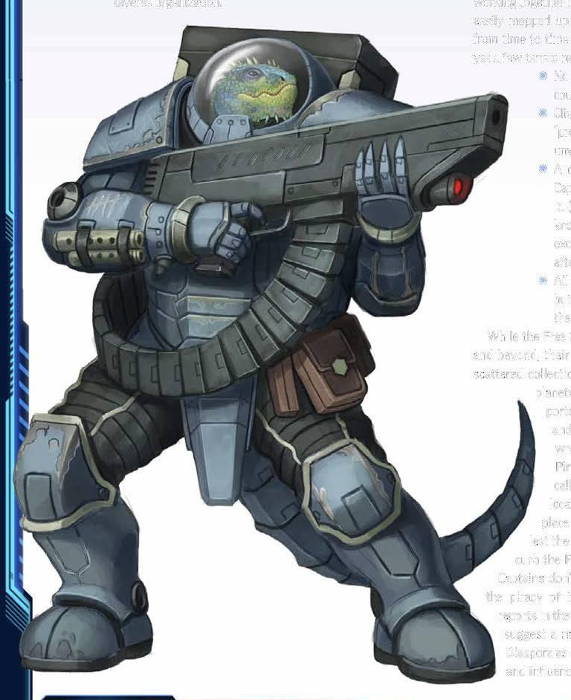
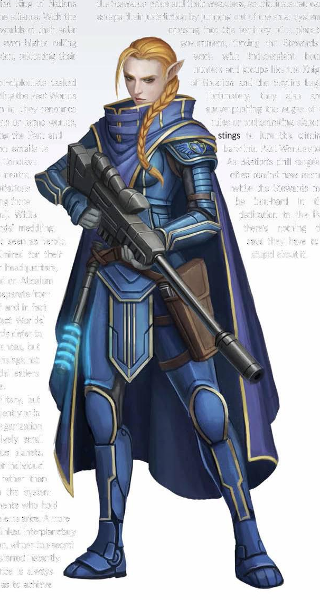
Free Captain and Steward illustrations.
We also have a Corpse Fleet of rogue elebrians that go around raiding the living, cults of the public domain Elder Mythos, the Golden League of crime families, and the Skyfire Legion of mercenaries bound to dragonkin (the book still hasn't mentioned what dragonkin are).
... also the Golden League is an rather unfortunate name for an organization that has a very clearly Asian theme, I guess even the far future of deep space isn't immune to pulp Yellow Peril tropes. Dammit, Starfinger, you were doing pretty well there.
Next: Gods and monsters.
"Lots of considerations went into choosing the gods for [Starfinger]: how many old gods to keep vs. how many new ones to introduce, what kind of stories we wanted to tell, what gods already had a connection to space, how many alien gods vs. Pact Worlds gods, gender balance, alignment balance, an obvious god for every core race, etc."
Original SA post
Starfinger Core Rules Part #26: "Lots of considerations went into choosing the gods for [Starfinger]: how many old gods to keep vs. how many new ones to introduce, what kind of stories we wanted to tell, what gods already had a connection to space, how many alien gods vs. Pact Worlds gods, gender balance, alignment balance, an obvious god for every core race, etc."
(Credit: Rob McCreary, Starfinger Design Lead, Starfinger Reddit AMA)
James Sutter, Starfinger Creative Director, Starfinger Reddit AMA posted:
Rob makes this all sound so calm and considered, not even mentioning all the times he probably wanted to throw me out a window.
Faith and Religion
So we have a literal score of gods to cover. This isn't a full list, we're told, but only the most commonly worshipped deities. In space, nobody can hear you scream, but prayers are heard loud and clear. But why does god allow [vehicle rules] to exist?
- Abadar: Commerce, law, and hard work and pullin' yerself up by the bootstraps. Some day he created civiliztion for us. Also he has a vault with a bunch of platonic ideals of things, which is weird, because he's not really like Plato? May as well give him the Hammer of Thor as long as you're looking for random analogues.
- Besmara: A nautical goddess that now oversees pirates, strife, and space monsters. She is "brash, fickle, greedy, and lusty" and is generally a patron of pirates and smugglers, and apparently disdains meaningless klling. Apparently she has a ship called the Starwraith that sails around space and would be a really problematic random encounter.
- Damoritosh: A vesk deity of conquest, obedience, and is worshipped to champion the strong over the weak and honorable surrender. He's just as generic as the vesk themselves are. Well, at least they can be like "by Damoritosh!" or something.
- Desna: What do luck, stars, dreams, and travel have in common? Desna, I guess. She champions impulsiveness as the manic pixie dream girl of gods, and prefers worshippers avoid conflict. Apparently a lot of ships have a small shrine or idol of her and casual prayers to her are common.
- Devourer: The Devourer embodies the destruction of the universe and "it largely ignores the pleas and prayers of even its most devout worshipers", which is no doubt why the Mystic class notes it twice as a possible patron.
 Some think that the Devourer will give birth to a new universe but those who worship it "know" that the Devourer will only leave behind nothingness. Why do they worship it, then? Well, I guess when life hands you lemons, you embrace generic, psychopathic nihilism.
Some think that the Devourer will give birth to a new universe but those who worship it "know" that the Devourer will only leave behind nothingness. Why do they worship it, then? Well, I guess when life hands you lemons, you embrace generic, psychopathic nihilism. - Eloritu: A mysterious deity of mysteries, Eloritu's worship has migrated to the Pact Worlds from multiple extrasolar cultures. The god of magic and history, it hails from some mysterious place called Gemmenad and may have had something to do with Gap or Golarion vanishing, but it's not saying.
- Halax: The god of the Shirrens that apparently predated them becoming the Swarm and has returned to them since then, not being in for the whole all-consuming hive-mind deal. Hylax is a god of friendship and peace, and is mainly followed by bug-people and various diplomatic sorts. Though she mainly oversees hive cultures, she prizes individuality, because... she does, shut up.
- Ibra: Because Eloritu wasn't enough god of mysteries, let's have another! Well, this is the god of cosmic mysteries, or something. Sure. It has mysterious origins and tries to encourage astronomy and science. It's pretty redundant, basically being the science-flavored Eloritu.
- Iomedae: A mortal human who ascended to become a god... somehow, and is the goddess of humanity with a paladin's thematics, all about honor and swording and goodery. Oversees the Knights of Golarion, and is really... I can't just keep calling these gods generic, let's see the thesaurus... derivative? We'll go with derivative.
- Lao Shu Po: A rat who apparently ate part of a dead god, it then became a rat-god of the night!... and then became the rat-god of sneaky, merciless sorts and Han shooting first. She's apparently a patron of the Ysoki, but most just pray to avoid her notice. Her followers are often persecuted for obvious reasons, those reason being "We like to stab." and "Yes, that includes you." Slightly curious that the only obviously Asian organization is criminal and the only obviously Asian-named god is also a patron of criminals. Not that I'm saying anything. Wait, shit, I just said it. Also, "Ning", I've got my eye on you.
- Nyarlathotep: Meh.
- Oras: A god of evolution in the scientific sense, this is mainly a god for biologists and druids. It doesn't any personality beyond "evolution is good for life". I guess evolution was just a religion all along...
- Pharasma: A goddess of birth, death, and fate, Pharasma assigns you to your death bin and apparently knows if you've been bad or good. She's fine with resurrection spells, but not so much with undeath. Apparently every culture has some worship of her which I guess makes her the biggest deal, god-wise.
- Saranae: Generic sun healing god wait no shit not generic, I mean iconic.
- Talavet: God of the kasathas that champions tradition with a storytelling theme on the side. She's about both community and self-reliance which seems kind of contradictory, but whatever. Also she has a feud with Nyarlathotep because apparently the gnarliest of the Hoteps tells evil stories. Sure, whatever.
- Triune: A fusion of Brigh (goddess of clockwork and invention), Epoch (an AI god created by Aballon), and Casandalee (an android "Iron God"?), Triune oversees computers, robots, and the Drift. Mostly been covered previously.
- Urgathoa: A god of disease and undeath and breaking taboos. She sounds a lot like the god of teenagers in black t-shirts saying fuck you, dad or mom which sounds rad but I guess she's evil because undeath and corruption of the natural order and one of these deities was almost interesting for a moment and they they got boring. Fuck you, mom or dad!
- Weydan: A god of equality and exploration, Weydan often takes mortal form to to explore the universe as avatars, and "believes in every sentient species' right to freedom" which I'm pretty sure was Optimus Prime's line. Apparently this puts him at odds with Abadar who is suddenly oppressive now. Oookay. He's a god of rebels and the Starfinger Society and stuff like that.
- Yaraesa: A lanshuntan scientist who ascended to a god of knowledge and scienc, and rejects faith - that is, she apparently grants spells in "consistent and predictable ways that can be taught like a science" but does not make clear what that could be. Well, at least she lets you have atheist priests but not atheists actually. Ultimately, though, I'm pretty tired of reading about gods with personalities that are "yep, they like their portfolio".
- Zon-Kuton: Evil sadistic god of darkness and pain and slavery and torture and more pain and loss and envy and also pain. But it's okay. He has a medical condition, apparently.
Oh, thank fuck I'm done- wait, no, there are more. Fuck it. Agradd is a dwarf god of dwarf shit, Arshea is a fuck god of fuck fucking, Asmodeus is a ripoff god of fuck you D&D, Black Butterfly is a nice god of fucking darkness, Calistria is a trickster god of fucking elves, Eldest are ruler gods of fucking faeries, Groetus is a skull god of the fucking apocalypse, Lamashtu is a mother god of fucking monsters, and Lissala is an Azlanti god of fucking tyrants. These are gods 21-29 and I've had enough.
Also fuck you, Azathoth, fuck you, Shub-Niggurath, and fuck you, Yog-Sothoth, I know you work for the fucking exposure and I'm stick of your fucking public domain asses, get out of my fucking sight. This is all I can think of when I see you.
And that- wait, that's not all? We also have "philosophies", fuck. Faiths 33-38. Fuuuuck. The Cycle are fortune cookie Jedis, the Green Faith is generi- er, fortune cookie nature worship, the Prophecies of Kalistrade are a wealth through ritual purity cult, Sangpotshi is... fortune cookie Buddhism, Singularitism is belief in a technological Singularity, and the Song of Silence is "becoming a lich is rad, let's do that."
In case you were wondering what the Solarians' faith is, herrre it is.
Starfinger Core Rules posted:
Introduced to the Pact Worlds by the kasathas, the philosophy of the solarians teaches that existence is an endless cycle. Stars are born, die, and are born again, alternately bringing life to the universe and destroying it. The balance of the cosmos rests on the Cycle, and it connects everything in the universe.
Did those words actually mean anything? I can't even fucking tell anymore.
Yeah, I know, I know. Most of the Golarion gods weren't made to be special snowflakes. They were made to be typical fantasy fill-ins and just be comfortable little slots for your Clerics or Mystics to swear by while casting spells, but boy, does it make for a boring read. It's also not actually that useful compared to factions or locations unless you're doing a tour of the religious practices of the setting, and even then 38 faiths is too fucking much. Granted, I may be worn a bit thin. Book's almost done. Let's, uh, finish the fucking book.
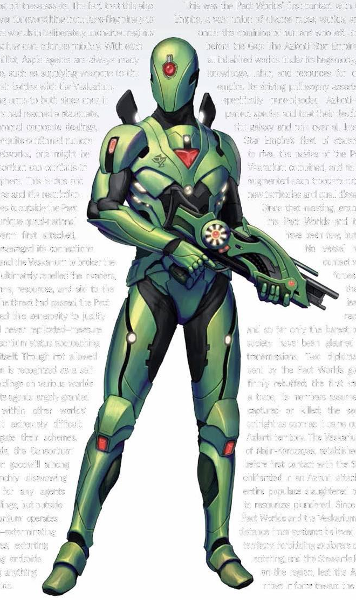
Threats
Villain stuff. Do we get useable statblocks to go with the descriptions? Haha! Not in this fucking book!
- The Aspis Constortium: Remember the Weyland-Yutani Corporation from Aliens? Let's get it out of the way: these guys are aspholes. There, done. So, this is basically the rival to the Starfinger Society that goes around being imperialist dicks, exploiting or exterminating native cultures, and hanging around with criminals but never quite getting arrested. They're like the bad guys from Avatar, too. The one with the aliens, not the benders? I'm pretty sure like that one. I've never seen it. They're pretty much every bad space corporation ever.
- Azlanti Star Empire: Remember the Empire from Star Wars? This is made up of eeevil humans who gun down Pact World representatives because they bad and conquer stuff but haven't conquered the Pact Worlds even though they're several times its size because... um... also they're human supremacists (specifically, Azlanti supremacists) and they're space Nazis, or the First Order, or the Empire.
- Cult of the Devourer: Remember the Reavers from Serenity? Starfinger does too, so they throw them in, but forgot to give them an origin story. "Let's worship the apocalypse and take the bad drugs and drive spikes into our skulls because it's Sunday and there's nothing else to do!"
- Dominion of the Black: Remember the Shadows from Babylon 5? Yeah, these are mystery biologically-themed, ancient, evil monsters who have names like "The-Whispers-of-the-Void-Have-Eyes". I guess we're are actually supposed to take them seriously and not conclude they're just space fourteen-year old teens who just discovered L'Oreal's Feria in Blue Black.
- The Swarm: Remember the bugs from Starship Troopers? These are evil conquering interstellar bugs that expand and devour because they tried it once and got hooked. The shirren are a "freak mutation" that broke off from them.
- The Hidden: Remember the colonists from The X-Files? These are evil greys and shapeshifters that may be hiding amongst people and they've been visiting since even before the Gap and the government censors stuff about them because shut up they do.
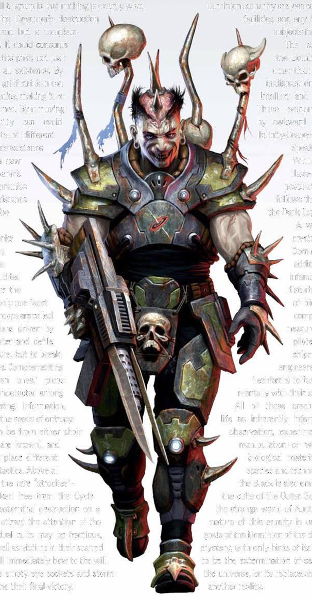

Next: A path back home.
"In the same way we did with Pathfinder, we’re trying to be all things to all people, which is normally a recipe for disaster."
Original SA post
Starfinger Core Rules Part #27: "In the same way we did with Pathfinder, we’re trying to be all things to all people, which is normally a recipe for disaster."
(James Sutter, Starfinger Creative Director, Game Informer interview.)
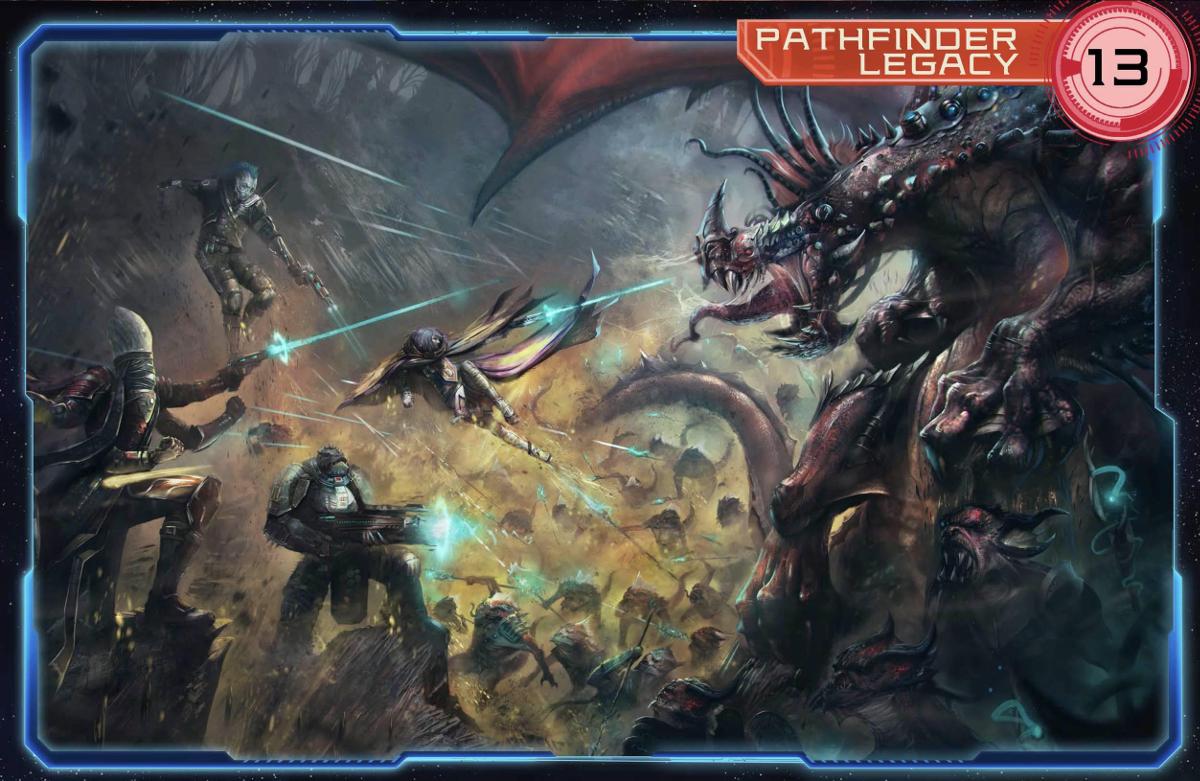
I'm going to be skipping a lot of fine detail here. This section is mainly about the differences between Pathfinder and Starfinger, which I've already covered broadly throughout the text. We get conversions for things like bonus types, actions, and skill names, but the meat here is for conversions of monsters and classes.
Monster conversion mainly seems to consist of adding 25% extra HP, giving it Starfinger weapons if appropriate, removing multiattacks and adding its CR to its damage value, removing critical ranges on attacks (20s only), converting spells / feats / afflictions to Starfinger where possible, and generally adjusting to the new standards whenever possible. It's worth noting that monsters get RP but not SP.
Or you can just run it as written, as it notes for quick encounters that players are unlikely to notice any difference. 

Class conversions are to be allowed by the GM only. This consists of giving them a key ability modifier (used to determine their RP), adjusting their hit dice to the HP / SP standard (it's worth noting that Starfinger uses fixed HP values), adding skill ranks for very low-skill classes, adjusting proficiences when necessary, giving new class features to enable added attacks for combat-centric classes. We have a long list of how to convert some specific features, though spells is mostly given a "yep, converting this will be hard". Of course, it's worth noting there's no mention of lowering full Pathfinder casters from their 1st to 9th spell level progression to Starfinger's 1st to 6th level spell progression, meaning wizards still rock the spacefaring house.
Finally, we get full writeups for all of the old Pathfinder races here in the back.
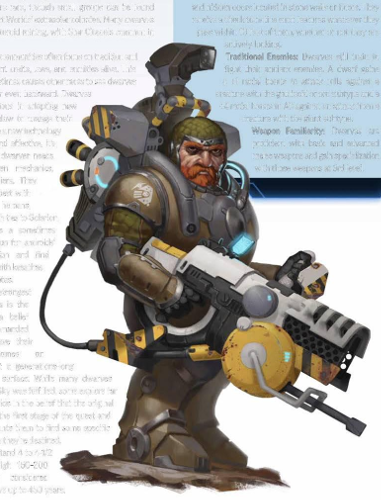
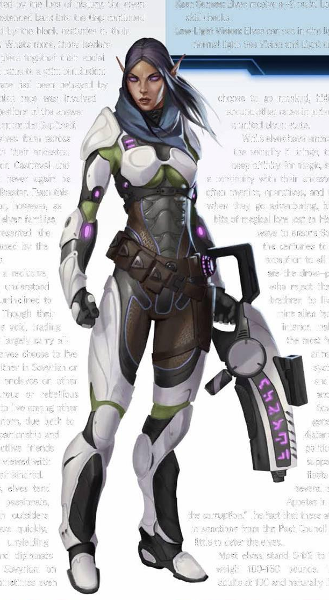
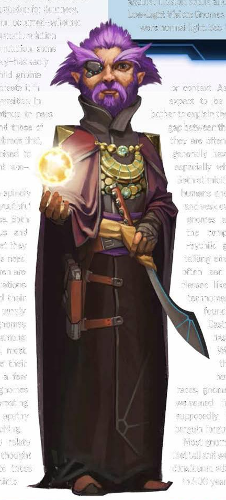
- Dwarves: Generally found on space stations, big dwarven ships, or mining colonies, dwarves apparently are traditionalists that focus on older but reliable technology. Apparently they once sought to emigrate to the surface, and while some of them think this as been achieved long ago, some interpret it as a quest to find a particular world which will serve as a new dwarven land. They're still trained to notice "unusual stonework" even though that seems to be of limited use in most of the environments they'll be in. They're also still trained to fight goblinoids and orcs as well, even thought they don't really seem to have the same constant war going with them. The only really new trait they have is proficiency and speciality with all weapons, which is nice... but things like the stonework and training to fight goblins for dwarves that may have lived on a spaceship or space station all their lives rings of a lazy, conservative conversion.
- Elves: We're reminded that Golarion elves slowly take on the color of their surroundings, but how does this work on a spaceship? Well, that'll be a mystery, as is the big mystery that the elves have figured out they were betrayed during the Gap! You may wonder what sort of betrayal is being referred to, and I do too, but it doesn't say. Apparently just the notion that they were betrayed (somehow) was enough to get most elves to retreat to the xenophobic seclusion of their nation (Sovyrian) on Castrovel. Those who don't are known as the "Forlorn" because the elves are now huge racists. This is followed by them making attacks on their drow brethren to "cleanse the corruption". But the Pact Worlds defend the drow, because apparently running a demon-controlled apartheid society is a-okay as long as you don't rock the boat. As far their traits go, they've traded in their proficiency with bows for a general bonus on Mysticism checks.
- Gnomes: So gnomes have divided into two ethnicities: feychildren and bleachlings. Feychildren are anime-colored and whismical and seek adventure. Bleachlings are "monochromatic" and are believed to come from a plague that drains the color out of gnomes who don't seek out enough adventure (no seriously you guys this is serious), and have a "half-deserved" reputation for dourness. While bleachlings are the minority, apparently their strain is dominant and gnome researchers are trying to figure out what really caused them during the Gap (not the store). Also, have we mentioned gnomes are totes wacky and très obnoxious? Well, they are. In any case, gnomes are the most altered of the races so far, with a bonus to Culture, a bonus against fear effects, and a very limited reroll ability. They still have several spell-like abilities, but can't chat with animals anymore.
- Half-Elves: Elves and humans, despite racism on the former's part, still get to boning. However, a good number of half-elves are just children of other half-elf pairings these days. They can settle in Sovyrian but it's implied that they're second-class citizens there. Howver, it notes that half-elves avoid most of the prejudices past because bug-people couldn't give two shits if a human's ears are a little pointy. Mechanically, they're essentially identical to their Pathfinder counterparts. (Also, you think they'd have gotten a better name over the centuries than "half-elves".)
- Half-Orcs: Most half-orcs these days are now the children of other half-orcs, but people are still racist against them, and many are second-class citizens on Apostae. Some turn to augmentation because fuck it, they can't be any less accepted, while others try and seek out new worlds away from the garbage opinions of the Pact Worlds. Why half-orcs would still face such prejudice when there are races like ysoki, shirren, or vesk that have zero reason to care, I'm not so sure. They now get a dime bonus to Survival checks, which still doesn't offset that they probably get the worst mechanical bonuses in Pathfinder or Starfinger. (And yes, despite having their own complete communities, they're still just "half-orcs".)
- Halfling: Just too many halves by half. Halflings were apparently part of the original space explorers due to their adventuring spirit. It notes that they're rivals with the Ysoki, but less mechanically inclined. Finally, we can have the ultimate Marvel crossover, Rocket v Pip, Whose Side Are You On? They also dislike cybernetics because they have biological pride like they just stepped out of Rifts, and in general there's a lot of rah rah aren't tiny humans cool? Their main big change is that they have lessened penalties for moving while sneaking (by 5), or to hide after sniping (by 10), which is one of the few non-dime bonuses I've seen a race get - hell, it's practically a whole dollar.
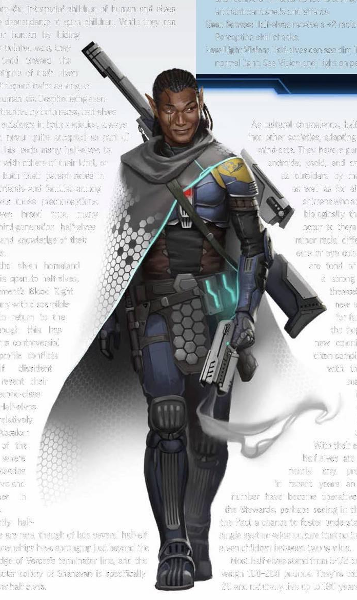
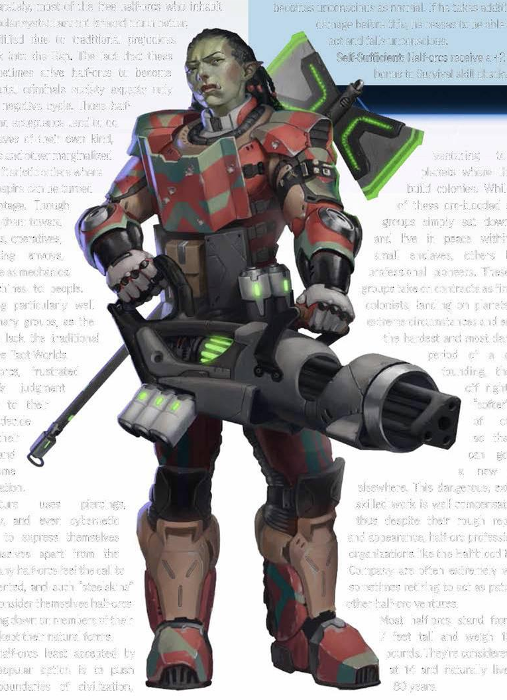
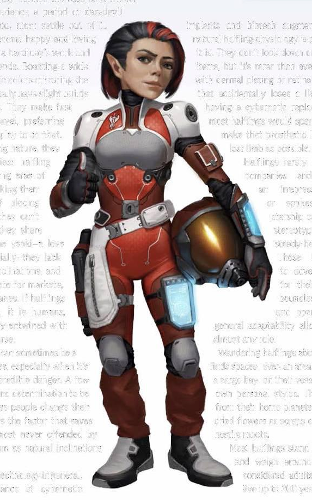
I feel like a memo got missed somewhere along the line. Despite racism largely having been supposedly discarded, elves and half-orcs are still loaded with discrimination baggage (as perpetrators or victims) as their primary traits, and gnomes are centered around a miscengenation dilemma. The dwarf writeup feels surprisingly thoughtless, as well. In general, the section feels a little off-note after the earlier race writeups, as if it was done by a different author than the core design leads.
After this, we have a glossary, most of which will be pretty familiar to d20 players that have gotten this far in the review. We're almost done. 

Next: Appendix N.
"If we could do for space opera what Shadowrun did for cyberpunk, I’d be thrilled."
Original SA post t
t
Starfinger Core Rules Part #28: "If we could do for space opera what Shadowrun did for cyberpunk, I’d be thrilled."
(James Sutter, Starfinger Creative Director, Gnome Stew interview.)
Presented without comment.
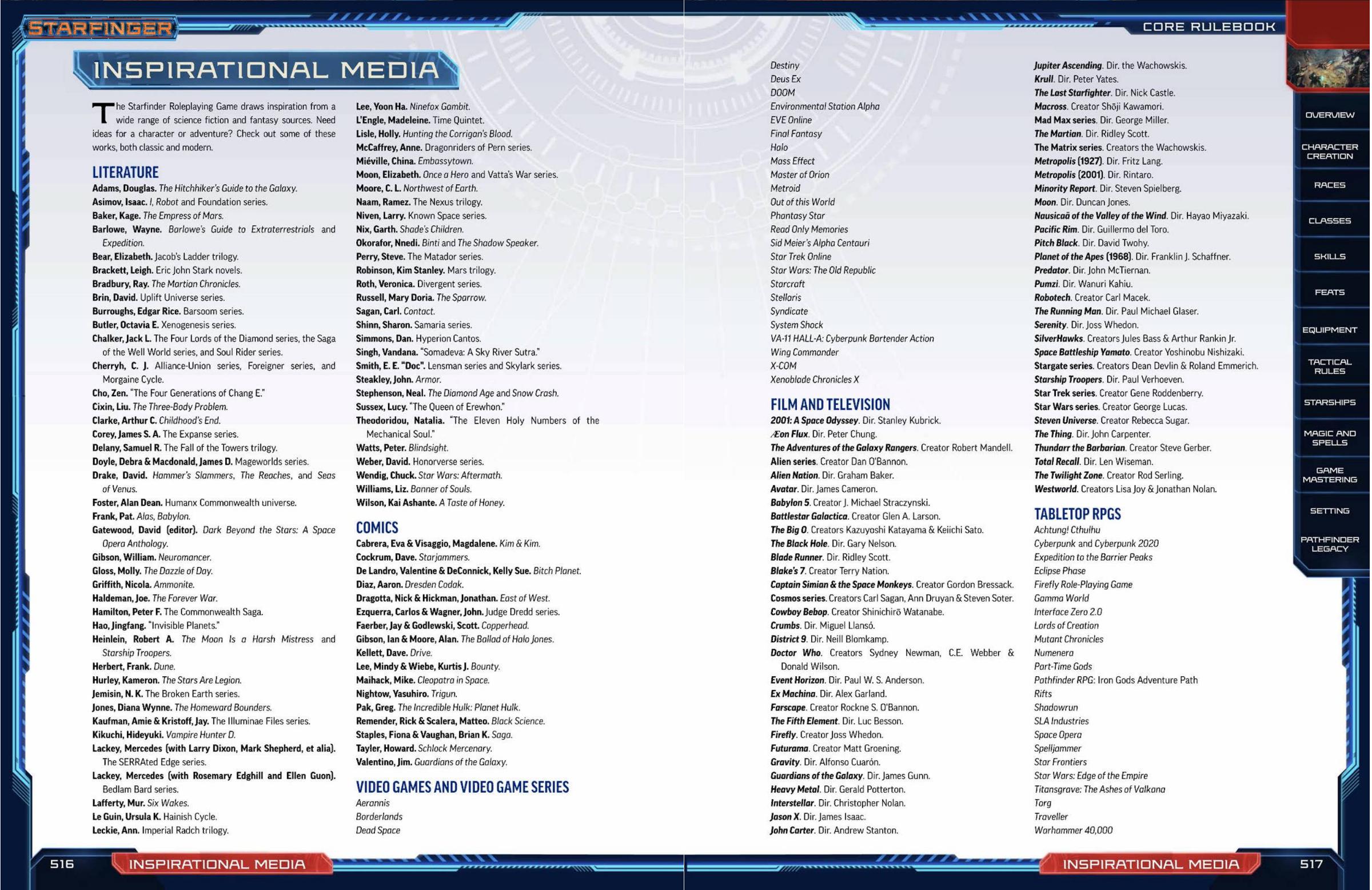
Wait.
Rifts?
Really?

Next: The review at the end of the universe.
"If we terminate the License due to breach, you have to immediately stop selling products that use the Compatibility Logo and you must destroy all of your inventory of those products (including all marketing material)."
Original SA post
Starfinger Core Rules Part #29: "If we terminate the License due to breach, you have to immediately stop selling products that use the Compatibility Logo and you must destroy all of your inventory of those products (including all marketing material)."
(Credit: Starfinger Compatibility License.)
But do you want to compete with Paizo at their own game? Seems like a great plan for all the remoras out there. Well now you can... again! It's time for the Starfinger Compatibility License, which just like the Pathfinder Compatibility License, lets any person fall backwards into Starfinger publishing! Essentially, it lets you use the Starfinger logo and declare compatibility as long as you abide by Paizo's rules - no making a supplement that looks official, no "adult" or "offensive" content, nothing outright illegal, etc. And if you violate it... well, see the quote above. And so they know which people have signed up for this, they have a public registry. Which, as far as I can tell, they never review, check, or edit.
So, like the Pathfinder review, before we're through, let's take at best worst beworst entries on the registry. If you're just a little dev that really doesn't deserve this, you have my meaningless apologies.
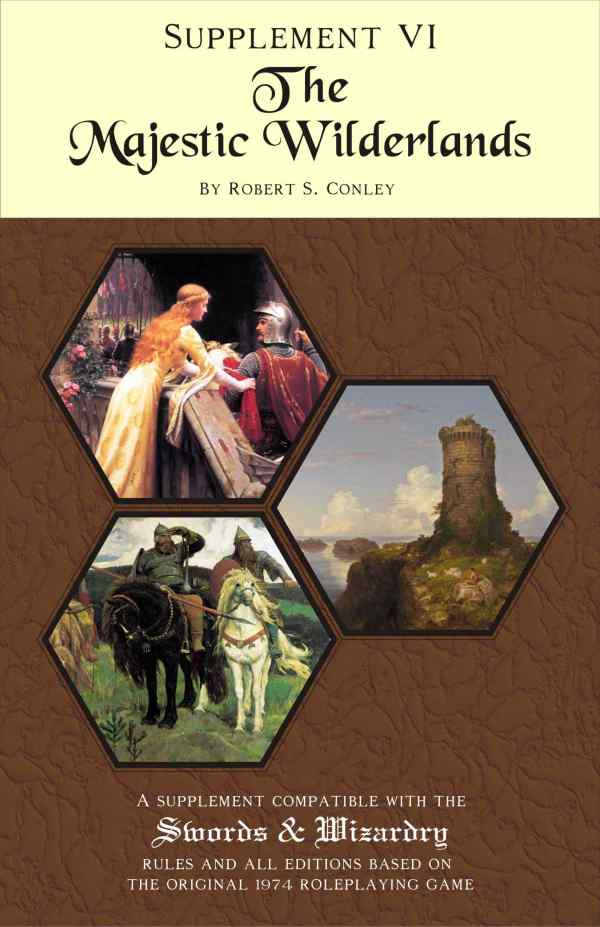
Bat in the Attic Games posted:
I would be using the [Starfinger] rules to implement the Majestic Stars setting I have developed for the science fiction genre. Products would be a series of rules supplements, setting books, and adventures.quote:
Mankind has reached the stars only to find… EarthBirds flying under distant skies, fish swimming unexplored seas, and dinosaurs ruling unknown continents. On a hundred words there are the children of Earth. Children from an Earth of sixty-five million years ago.Now man has outgrown his cradle and traveled into the black, wondering who and what scattered the seeds of Earth throughout the cosmos. Mankind is forging a new life among the stars but old fears and conflicts still threaten. The year is 2425 and this is their universe, the Majestic Stars.What is the status of humanity?Humanity has spread out in a 100 light year sphere centered on Earth and the other core worlds. They are still divided into nations and many world have multiple governments. There been limited exploration out to 500 light years. Hundreds of inhabitable worlds are known. It is appears that the vast majority of them are terraformed worlds that were created by a dinosaurian civilization dating from 65 million years ago.
Dinosaurs?It appears that the ancient dinosaurians terraformed most potentially inhabitable world within their range. The limits of which hasn’t been reached yet.On some the descendants of dinosaurs still roam. On others they died out, mammals or other animal orders have taken their place. On at least two worlds, sentient life developed and created their own civilization. The mammalian Kang'rits whoes technology was a century behind humanity at the time of first contact, and the Saurians whose technology is a century ahead of humanity. The Saurians are descended from dinosaurs however they are not the Ancients of 65 million years ago.
Make space dinosaurs playable or hard pass.

When I looked up Tramma, I found more than I bargained for.
Davide Tramma posted:
The products are adventures/adventure paths compatible with the [Starfinger] core rulebook.The will use the setting "The Pact Worlds System".They will refer to the Product Identity as stated in the rules.Is is possible to get this specific license in order to use the setting "The Pact World System" and produce e-book ?Thanks
Dear Paizo: please don't license out your setting to right-wing Italian fascists. That wouldn't happen... could it? 


GeekPunk posted:
THE OUTBLACK - Amid the darkest portion of space, where the even the ancient light of the stars seem unable to penetrate the dark shroud of a post-apocalyptic expanse, the denizens of planets long destroyed struggle to survive amid the merciless void of the Outblack.THE OUTBLACK is a proposed campaign setting for [STARFINGER].
It's said that not even light can escape the egotistical pull of an edgelord.
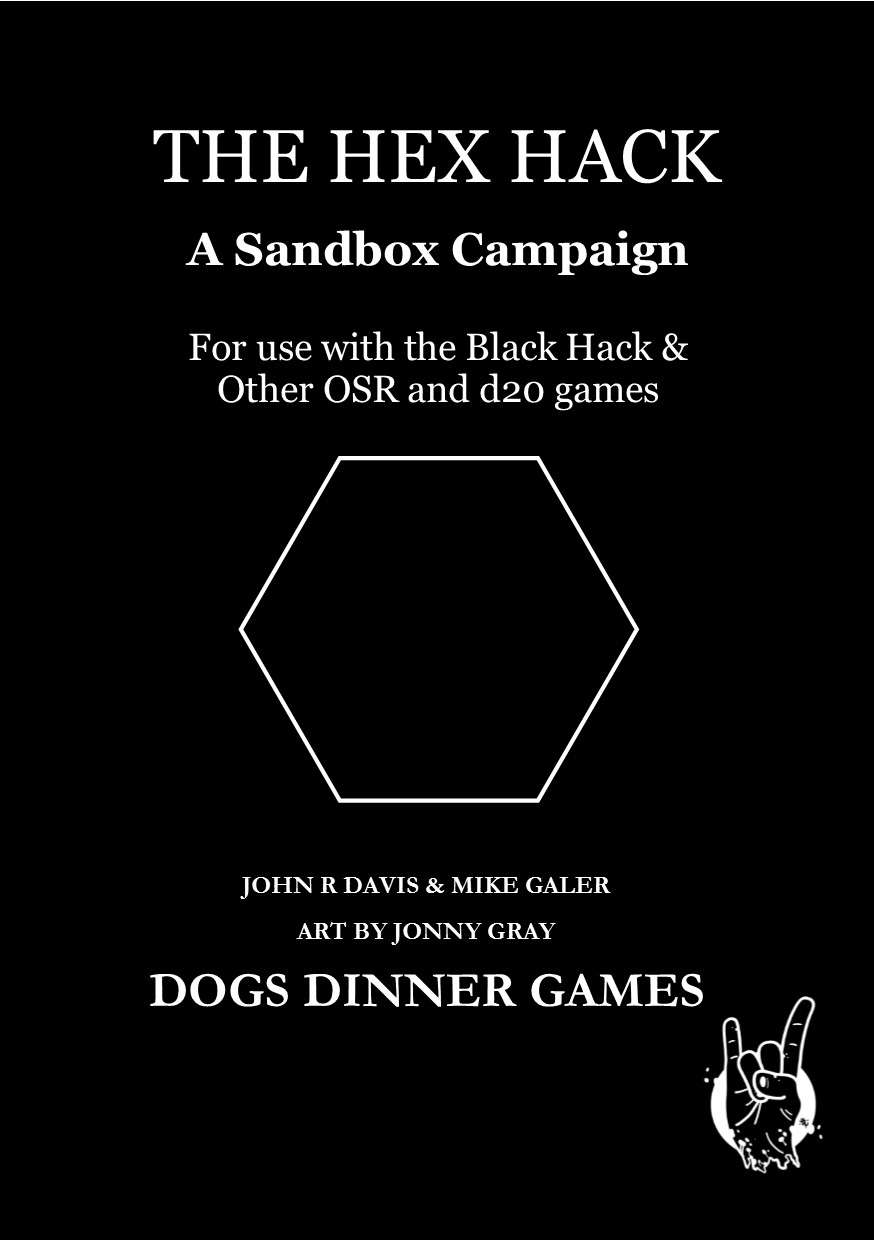
John R Davis posted:
SECTOR CRAWL: BEYOND THE BLACK EXPANSEOf all the great mysteries in the universe, one fact had always been held to be true. There is nothing beyond the Black Expanse.Smah’ala Space Station, orbiting the great class III sun prides itself at being the Bastion of the Last Breath, The Anchor of Civilisation, the final point of cheer, beyond which there is nothing.This is all set to change.It is well documented that each time a ship enters Hyperspace a slight, near undetectable tear is known to open into the planes beyond. Recently a tear has grown in size and stability. Some call it a Rift in space. Through this burgeoning gap signals are beginning to be detected. They come not from the planes elsewhere, but from beyond the black expanse itself. Or so the greatest minds thought at that time.A probe was hastily sent through and strange data arrays began to be broadcast back to the space station. Beyond all myth and legends, a Jump-Gate was detected, the safe and instant way to travel with no risk!!. The long held dream of all space-farers.A crew of ready volunteers, some of the most experienced, intellectual, and bravest in the known worlds were sent through in the most modern and powerful ship able to squeeze into the fluctuating anomaly. Something went wrong, terribly wrong. Not only was all contact lost with the starship Herald but the rift began to become unstable and start to close. To the dismay of all, the chance to find an ancient Jump-Gate seemed diminished.An eminent scientist, too old to travel she claims, found the cause of the catastrophe, the starships' energy profile was very high and caused a calamitous interaction with the rift. She proposes a low tiered vessel, a basic explorer designation craft, could simply drift through the tear on minimal power, and survive. With its crew, intact.This is where you come in.Sector Crawl: Beyond the Black Expanse is a 64 page 3-D hexploration set in the great beyond, for 1st level PC’s using the [Starfinger Core Rules]. It promises great glory, or a grim death, for those who dare to try to uncover its secrets.An Adventure Scape (a sandbox in space) allowing the freedom to explore in any direction.A set of ancient mysteries, long-held legends, and hidden untruths to discover.A myriad of random and range encounters.Aliens to encounter, moons to explore, resources to exploit and entities to exterminate.Enough content to get PCs to at least 7th level.
3-D hexploration, huh? Also how black is space, let me tell you how black it is-
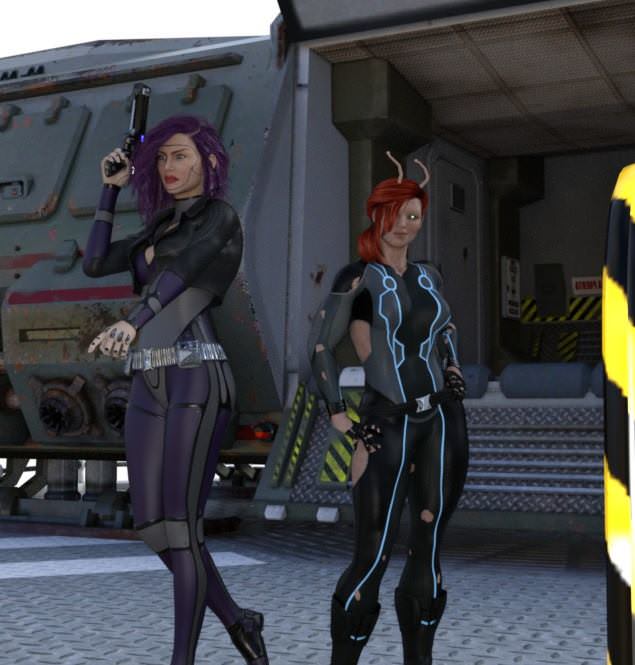

Production Platform 3 Toys, LLC posted:
Production Platform 3 will initially be converting our original Pathfinder Roleplaying Game sci-fi supplements to the [Starfinger Core Rules] mechanics and then expanding our catalog - from genetically-engineered humans to alien flora and fauna to be used anywhere adventurers dare to go. From super-soldiers to sky-sharks to space galleons, we're here for you.Watch for our stand-alone campaign settings - RadLands and Crossing the Black - currently being developed!
It's so black.
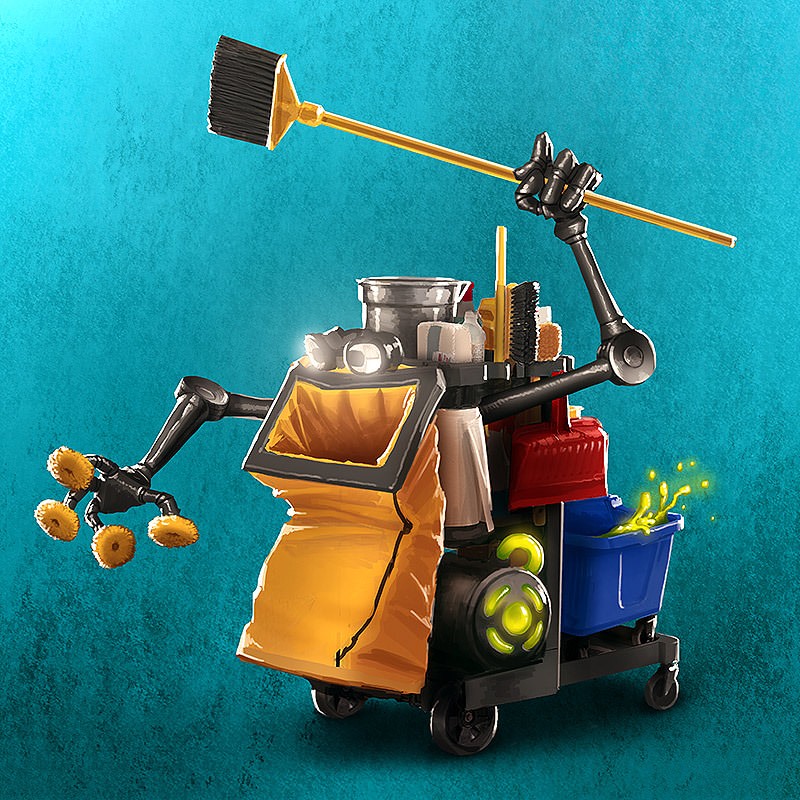
Actual quote: "Next NPC up, Master Chief Squeaky, head of Custodial services aboard the Uranus Hertz. Created by Sean McMannamy."
Time for the cutting edge of planetary puns with:
Happy Gnome Publishing posted:
Happy Gnome Publishing, led by best-selling Spec Fiction author T.J. Lantz, is proud to announce Redshirts, a twelve level Sci-fi/Comedy campaign guaranteed to provide the funniest experiences in the Galaxy. Taking cues from genre classics such as Hitchhiker's Guide to the Galaxy, Spaceballs, and Futurama, Redshirts aims to take you where no man has ever really wanted to go before (Like to pick up the captain's dry cleaning from a quarantined planet or to get the command crew tacos from a nearly abandoned space station). Everyone know the universe is a dangerous place, but it's even worse when you're a Redshirt.Redshirts will be available September 2017.
"He's dead, Jim!" "It's okay, go ahead and cast mystic cure." "Oh, right. Jim, that tired old gag of mine doesn't really work in this system, does it?" "I suppose it doesn't, Bones, but given the ability of transporters to just replicate a person, in body, mind, and soul: did it ever really work?"
Well, at least there's unintentional humor in Starfinger to be found?
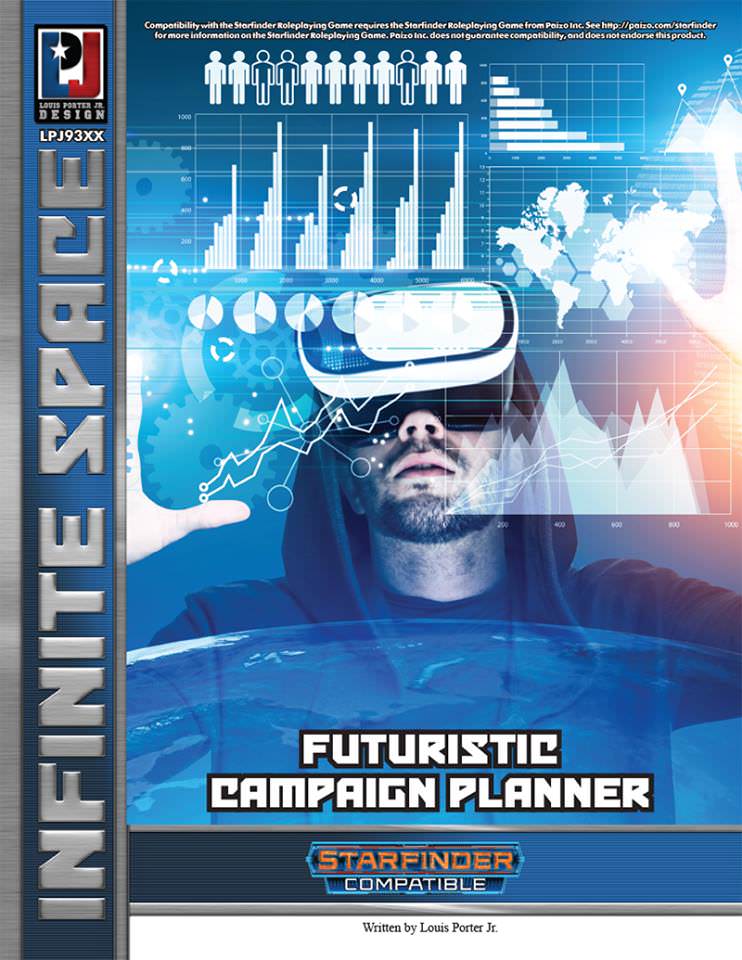
Louis Porter Jr. Design Inc. posted:
Polymecha - General [Starfinger] material
What, not Haven: System of Violence?

Nkids posted:
NkidsDew CrewSquirtle Squad
What? 

Have I mentioned that Paizo just lets people post anything to this registry? Well, there you go. One publisher posted themselves twice... or maybe there are two different companies named "Misfit Games".
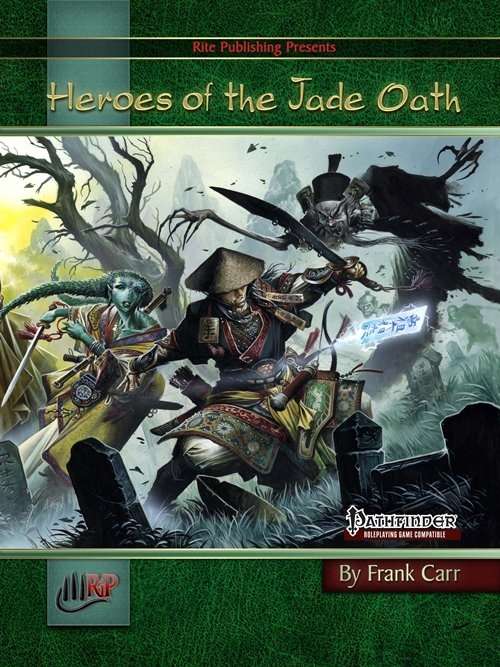
Rite Publishing posted:
Jade Nebula Campaign Setting
Have you considered just calling it "Space China" or "China in Space" or "Kung Fu 2100"?

Ryan Wolfe posted:
I have a couple dozen starship designs that I have developed over the last decade or so and sell on RPGNow:My plan is to create additional content to facilitate the use of these and future ships in [Starfinger].I'd also love to work on official [Starfinger] products if I could be of service.~Ryan Wolfe0-hr.com
I can understand putting in a job application online can feel like you're just flinging it into the void, but in this case it's literally true.
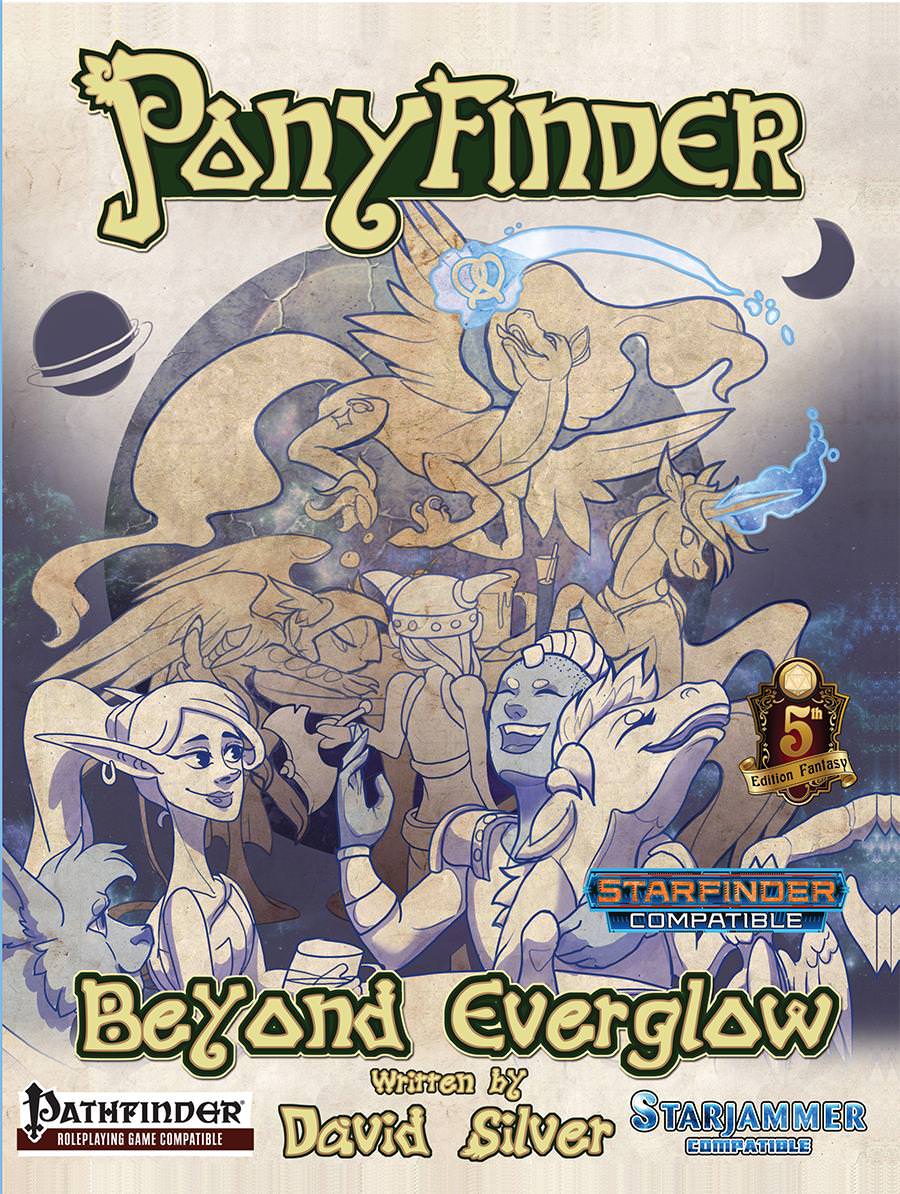
Silver Games LLC posted:
None yet, but Ponyfinder will launch to the stars, given time.
Oh. Well. Good for them.
given the endless march of space is so dark settings this actually feels like something of a respite
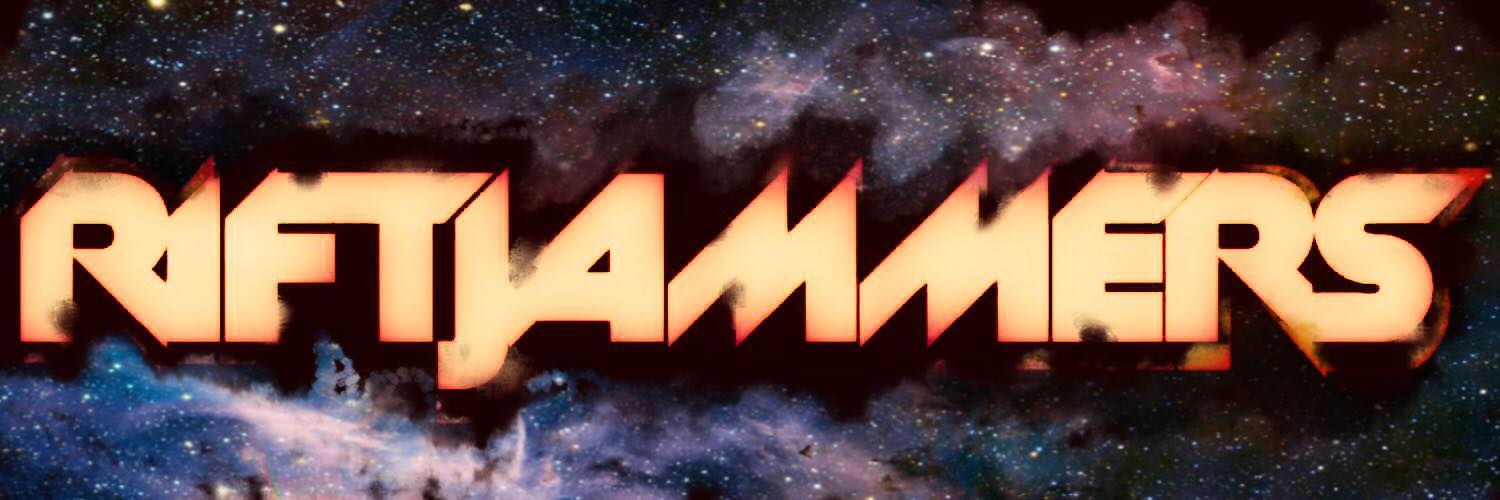
Spellhawks Press posted:
Riftjammers - The Alaxia Expanse is a star system on the Outer Fringes of the Great Verse. Transplanar travel through rifts in the void are dangerous and unpredictable but it gets you where you need to go. News of the Drift network in other systems has many talking but it's still the frontier in Alaxia. Too survive you need a ship,crew, and nerves of steel to enter the rifts.A sentient Godmind A.I called Nexyss created the Omnicortex. A vast artificial mindscape that allows the flow of information, entertainment, and commerce.All material is still being written & playtested. Nothing is official yet.
I'll wait for the official version, then.
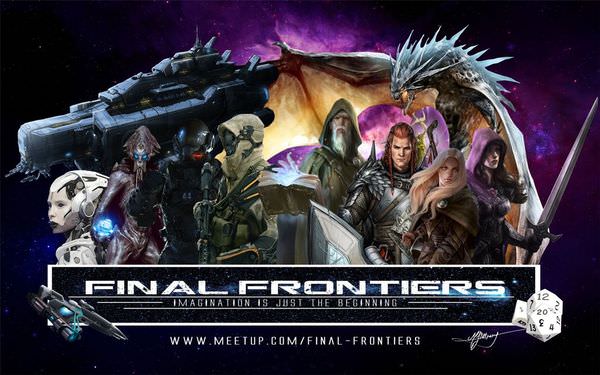
Stephen Robertson - Final Frontiers - Prth posted:
I am the proud owner of a complete Pathfinder collection, part Physical, Part digital, and use it to promote Pazio content here in Perth through the Tabletop Gaming Organisation I am part of.
Did... you register just to brag? Well, to each their own.
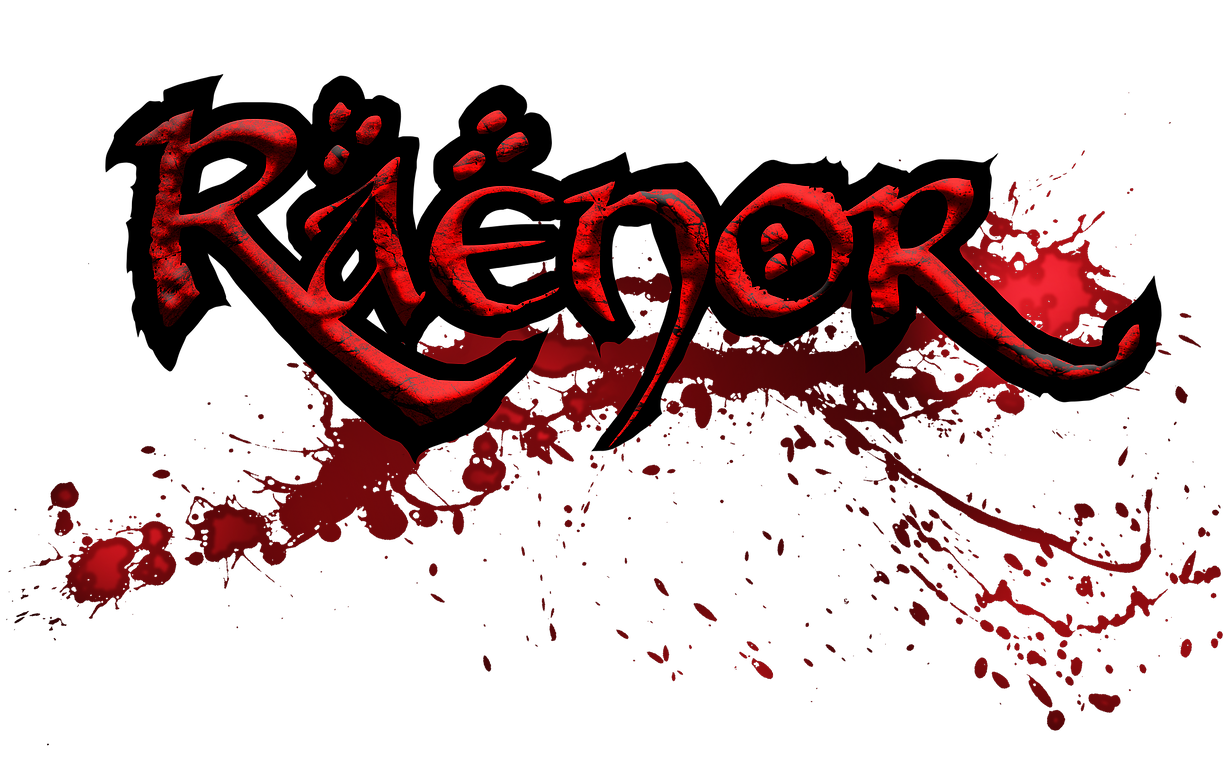
Storm Bunny Studios posted:
Our first new setting will be Alessia - A Magitech World. Built to support 5e, [Starfinger], and Pathfinder, Alessia is a world that has reached the height of its magical development, which it has nurtured to replace technology at almost every level of society. Combining its understanding of magic with its need to reach the stars, Alessia has become a sanctuary world for over two dozen different races; it is a place of transformation and expansion, a world filled with Peace Keepers fighting to keep an encroaching darkness at bay.Storm Bunny Studios will also be introducing Rænor, the Bloodlands, a Nexus System planet recovering from global devastation caused by the Everheart's Fall and the Skyfires it caused. Now in its Third Age, Rænor is waking up, recovering its history, and actively working to regain its place in a much larger universe.
All, yes, I remember Everheart's Fall and the Skyfires, and all sorts of other word salad that means nothing when you're doing a paragraph pitch for your game, stop that.
"But don't you want to know what that means-", the straw designer mumbles.
No.
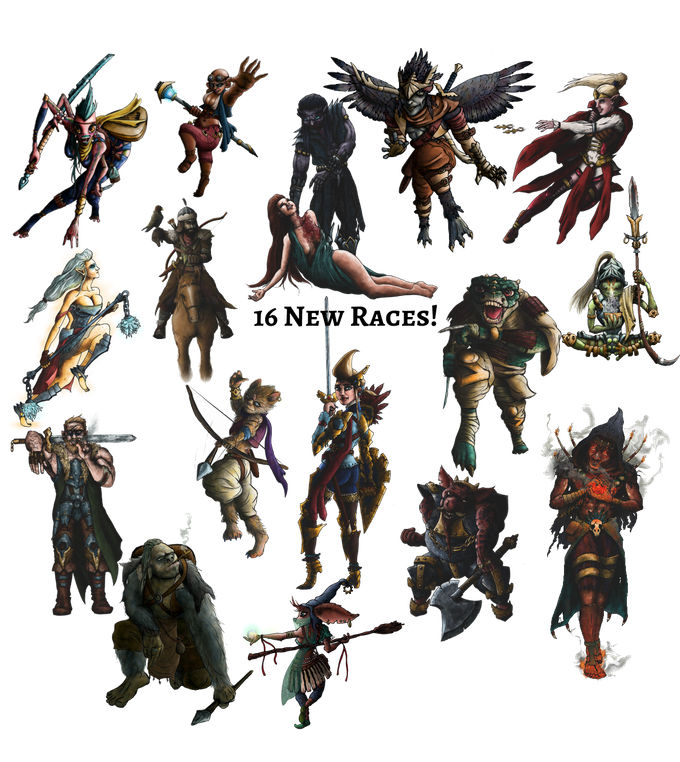
Terran Empire Publishing posted:
We hope to adapt our Pathfinder compatible campaign setting, Manastorm: World of Shin'ar, to [Starfinger]. The new setting will take place in the Milky Way Galaxy, centered on Earth and the Terran Empire that has risen from the ashes of alien occupation.
Wait, if it's centered on Earth, why is it called...? 


Third-Party Publishers posted:
Use of the [Starfinger] Roleplaying Game Compatibility Logo for advertising licensed products, including on product covers and in product descriptions, per Exhibit A: Usage Requirements.
I don't know if this is a template that just somehow got put on the list or what. Did I mention they don't ever seem to check it?
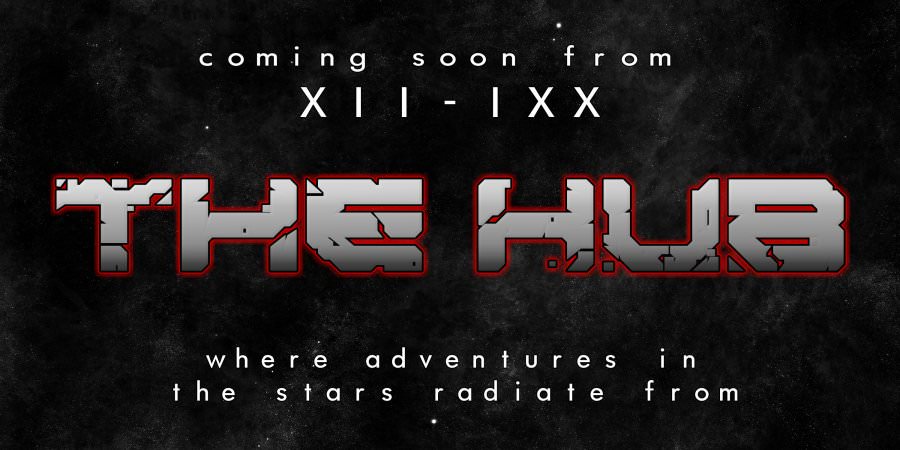
XII-IXX (Twelve-Nineteen) posted:
As an imprint of GeekPunk Games, XII-IXX will expand THE OUTBLACK campaign setting, as well as additional [STARFINGER] compatible products including...GRIMM SPACE - An original campaign setting inspired by the tales of the Brothers Grimm with a dark sci-fi edge.
Wait, why do you need an imprint for work in the same setting... wait, is that a space station made of gingerbread?
Mmmm. Looks delicious. Set a course!
Next: PUNCH IT.
"So take home a deck of [Starfinger] Condition Cards—and all its space goblins—today. Please."
Original SA post
Starfinger Core Rules Part #30: "So take home a deck of [Starfinger] Condition Cards—and all its space goblins—today. Please."
Jason Keeley, Starfinger Design Team Member, Paizo Blog posted:
These goblins have already tipped over the office fridge and are starting to gnaw on boxes of Flip-Mats. Oh no! I think they've made it to the serv—
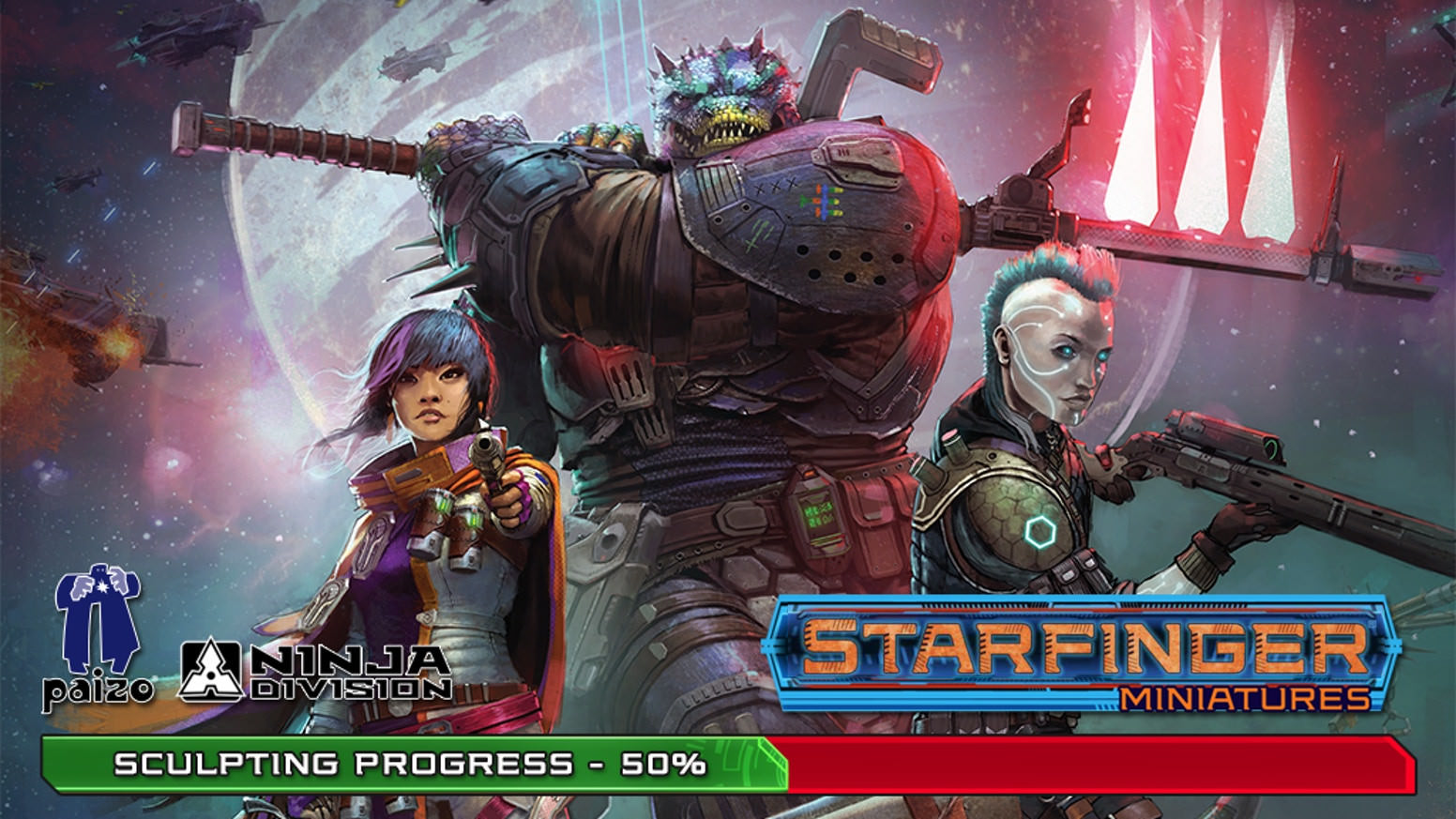
They published the Adventure Path before the Alien Archive.
And why wouldn't they, really? Here you are, with your new copy of Starfinger Core Rules hot in your hand, but you don't have enough to run it. Ideally, you want the Alien Archive to complete your game, but it's not out for two whole months. So you pick up Dead Suns 1 - Incident at Absolom Station and run it with your friends. Eventually the Alien Archive comes out, but your friends ask: are you going to run Dead Suns 2 - Temple of the Twelve? And, well, it's the next part! It's only natural to run it. So why not?
Paizo wouldn't want to sell you the Alien Archive right off the bat, as a marketer. What you want to do is put everything else out there, whether those are Starfinger Pawns, Starfinger Condition Cards, Starfinger GM Screen, Starfinger Player Character Folio, Starfinger Combat Pad. Man, you wanted that Alien Archive, but maybe the pawns sound handy. So you pick those up and use them while running Incident at Absolom Station. Then, when the next set of pawns drops, it's designed for use with Alien Archive. So why wouldn't you pick them up? And when the minis come out, well, you're already used to using the Flip-Mats...
There's even a subscription for Starfinger accessories. When I harped a bit about Starfinger Core Rules declaring itself "everything you need", that was a soft target. Maybe it was just a typo. A marketing typo. But it's even softer when you realize that by no means does Paizo want you to just buy the core. I mean, they do, but what they want is to get people invested long term. And if they can get you to play through a year of a six-part Adventure Path, you're in. You're invested.
And that may sound like a condemnation, but I'm actually somewhat impressed. It's savvy. And it's hard making money at RPGs, and I have to admire anybody who can manage it. After all, most games you can walk home with the core and maybe a supplement or two and run for six months to a year without dropping money again. Paizo makes money at it - pretty good money from all appearances. Their GenCon booth is downright spacious, as you can see below. A lot of people just credit them for seizing the existing Dungeons & Dragons 3.5 fandom as the secret to their success, but I'm not sure that would be sustainable. I think it was relevant to their intitial success, but building on that success, we see all the lessons brought forth here in Starfinger... for both good and ill.
James L. Sutter, Starfinger Creative Director, Gnome Stew Interview posted:
Starfinger APs will be very much like Pathfinder APs, and we hope that you’ll subscribe! They’ll come out every month, so you’ll be getting two complete adventure paths a year, just like with Pathfinder. The books themselves will be a bit smaller, but they’re going to be your primary vector for all things Starfinger—in addition to the adventures, they’ll also have setting information, new rules systems, new monsters, etc. Unlike with Pathfinder, where we have a bunch of different product lines, Starfinger’s going to have a much smaller number of releases—mostly just the adventure path. So instead of getting your rules from one line, your setting info from another, and so on, you can subscribe to just one line and get pretty much everything.
James L. Sutter, Starfinger Creative Director, Geek & Sundry Interview posted:
With Starfinger we’re looking to do away with the distinction of “This is a rules book, this is a campaign setting book versus an adventure. If you like Starfinger, subscribe to the Starfinger line, get the adventure path, and that’ll also give you your rules for things related to it. The hope is that every month people will be getting another cool bite of that universe, whether it’s lore or crunch. You know, Paizo came from Dungeon and Dragon [magazines] and I used to be the editor/developer on Dungeon Magazine and that had the same vibe. Even early Pathfinder was just a monthly Adventure Path, and that was how we told you about the world.
James L. Sutter, Starfinger Creative Director, Game Informer Interview posted:
The adventure paths will be not just where we’re presenting adventure information, but really where we’re expanding the setting and the ruleset. It’ll be a little more comprehensive and address a lot of different things. So our hope is that means even more people will get into the adventure paths, just as their regular way to get more Starfinger content. With Pathfinder we had more of a pick and choose thing where it was: “Decide which elements of Pathfinder you’re most excited about,” and you can subscribe just to that. With Starfinger, we really want to say: “No, this is the game.” The stuff that we put out is going to be so important that you kind of just want to get the Starfinger stuff rather than some set of the Starfinger stuff, and in exchange, we won’t put out 10,000 books and make you go broke.
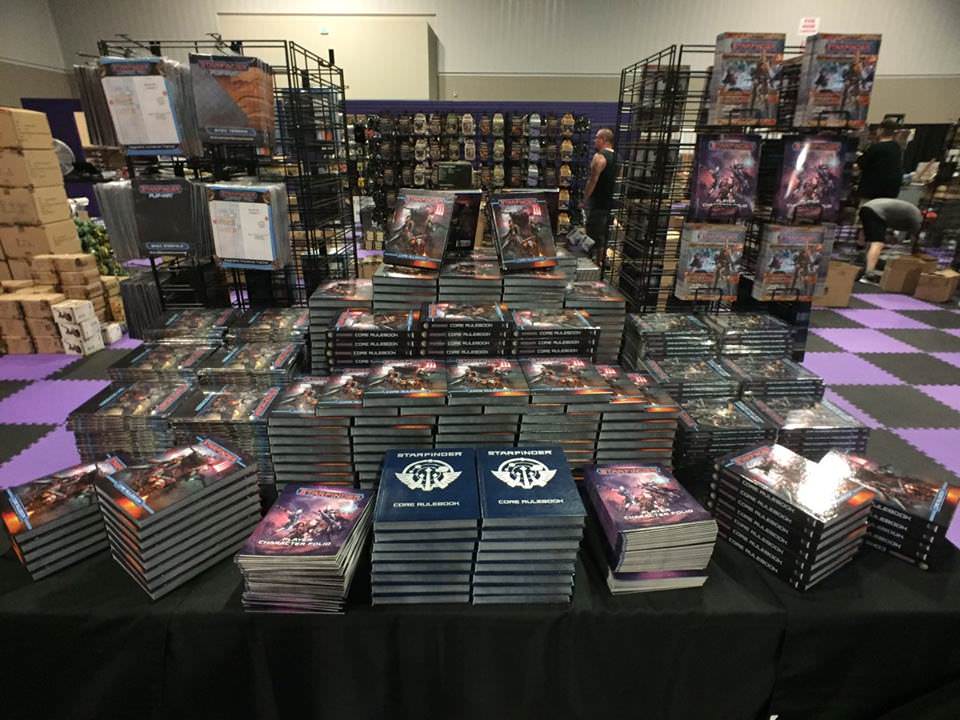
If only the game was better.
I believe some folks will point to one recurring joke I did and conclude "well, he didn't want to take it seriously anyway". And that's fine, it'll happen. I make a lot of fun in my reviews, I do, but it's not necessarily a criticism in and of itsel. However, I ran Dungeons & Dragons 3.5 for years and wrote hundreds of pages of fan material, some of it even licensed by Wizards of the Coast. I knew d20 very, very well back then. And while the game is profoundly flawed, I think you could take the Lego bricks of late-era 3.5 and make a pretty solid game. Unfortunately, Pathfinder dialed the game back to 2003. However, with nearly a decade since its release, I figured Paizo might be itching to do something new. I was legitimately interested to see, at the very least, a refined version of what they've been doing.
And let's get this out of the way: the major improvement is in the classes. They're far more robust and balanced. Granted, some are much more flexible or powerful than others, but the tiers of balance have narrowed, at least. The Envoy is obviously the weakest of the lot - fans have been calling that out as well - but there's nothing quite as bad as the Fighter or Monk were in Pathfinder. Feats have improved, if only incrementally - there's nothing as bad as Dodge or Weapon Focus was, though a number of the weaker feats (Lightning Reflexes, Skill Focus) were retained for some reason. Even spellcasting is much better balanced - still broken, but far less so. In general, the tiers between classes have narrowed significantly and there aren't any that seem straight-up unfun to play.
Where the game completely lost me was the equipment, though. It's simultaneously exacting and abstract at the same time, trying to be "realistic" in tying weapon damage to specific guns... but also making the entire economy abstracted in relation to it. But, at the same time, it wants to have "real" costs in an effectively unrealistic economy, and adds a layer of bookkeeping on both the player and gamemaster side of things without significantly improving the game aside from being able to do a it costs X to fire this gun for Z seconds reference. I'm not sure, in particular, in a "game for everybody" you'd have game accounting like this. It could have been trimmed down immensely.
Then we get into the effectively rushed and seemingly unfinished material - the vehicle rules, the limited spaceship rules, the broken DC values of many rolls, etc. For a company of Paizo's stature, this is inexcusable. While a game like Starfinger is near-impossible to fully playtest, given the time it takes to play out a full campaign and the number of mechanical options, the points where it breaks down should not be so immediately obvious. Some break points are inevitable, but here they're just nakedly clear on a extremely basic reading of the rules. And unlike the equipment section, this isn't a matter of personal taste, but numerous places where the rules lead to unintended results, like a starfighter pilot being unable to shoot and maneuver at the same time, or cars having to take turns at under 10 MPH.
And the setting - well, it has some interesting ideas. A lot of the odder worlds have interesting hooks, but the book doesn't have enough room to flesh them out. However, the feel of a "fantasy space setting" generally falls flat. Though we're told that magic and technology have fused to an extent, there's very little that gives that impression in the actual equipment section, which generally leans towards a standard sci-fi arsenal with a few magic oddities. And when we get to the worlds, that's even less so - the only reason to know it isn't just a standard sci-fi setting is because they insist otherwise. But magic only shows up with they absolutely need it, such as the necromancers of Eox, and then vanishes behind the curtain behind a veneer of standard space opera. The villainous factions in particular fall flat, having all of the cartoon villainy of the chaos factions of Warhammer 40,000 without the humor or heavy metal bombast. And without nuance or depth to carry them through, you mostly have just human-faced monsters to replace the orc hordes of old.
In fact, Starfinger is brazenly derivative at points. And that's not actually a problem if you have enough creative energy to make a recycled idea interesting again, but Starfinger... often feels like it's just filling out quotas. "Did you like Jedi, we've got those! Did you like Aliens? Got those too. Firefly? Don't worry..."
James L. Sutter, Starfinger Creative Director, Game Informer interview posted:
I actually think that the second Thor movie, The Dark World, watching that I remember at the time joking: “Oh well, that’s my favorite of any of the Star Wars movies,” because there’s so much of that which has that futuristic fantasy feel, where there’s starships blasting people, but also magic. So I think that felt very akin.
Oh, geez, I would've been totally down for Space Thor. Why didn't they make that?
Ultimately, it's a disappointment, and it makes the brazen push towards the "gotta buy it all!" marketing ring even more hollow than it would normally. It's disappointing. After all their years on working on somebody else's game, I'd have thought they'd be more willing to push the envelope than they did, but Starfinger is exceedingly "safe". There's very few surprises for dedicated Pathfinder fans, and not much to attract people who didn't like Pathfinder to begin with. Whether or not it's intentional, it seems aimed at milking their existing audience rather than significantly growing it.
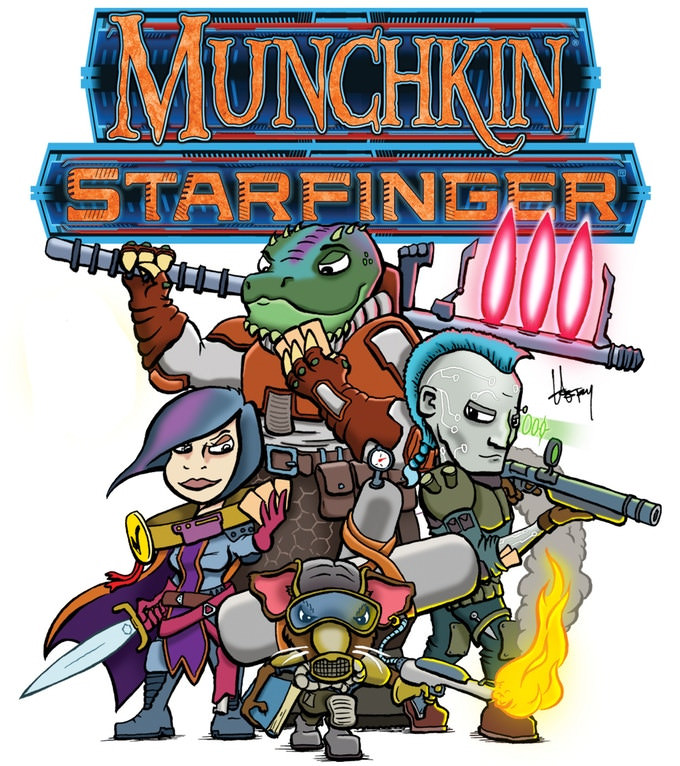
But I don't know why I'm that surprised. Of the three principal designers, there isn't any apparent game writing experience outside of the d20 design bubble. James L. Sutter has written almost exclusively for Pathfinder (aside from some previous Dungeons & Dragons 3.5 magazine work). Robert G. McCreary started writing as a Pathfinder fan and has exclusively only ever written for Pathfinder. Owen K.C. Stephens is the only time you find broader experience, having gotten his start writing for the first edition of Star Wars d20, but even then he's only written for d20 material, like the Everquest Role-Playing Game or Gamma World Sixth Edition. While I have no doubt they might be familiar with games outside of the d20 bubble, they don't have professional experience there. And in Starfinger, that shows. Instead of innovating, it's more often just reshuffling chairs.
Once again, I wanted to like it. I actually kind of miss picking out the perfect prestige class for my character and finding weird mechanical combos. I miss the weird ideas that came out of Dungeons & Dragons 3.5 later in its lifespan - the odd new races and classes, new kinds of magic, new options that turned the game on its head - and to an extent, Pathfinder has some of those. However, compared to its forebears, Starfinger is far more conservative. While Wizards of the Coast attempted to push the envelope on a relatively regular basis, Pathfinder lives in mortal fear of alienating its subscribers or introducing anything that might shake the game's compatibility with existing Adventure Paths.
It's still okay to play, and I have no doubt people will enjoy it. There will no doubt be uncritical reviews out there, much like the sort of softball marketing-masked-as-interviews I've gotten to quote throughout this piece. You can probably do a fair amount of game without seeing the cracks. But the fact that the cracks are there - and that they're obvious on a simple cover-to-cover read - means I just can't recommend it, especially in an industry that has games like Ashen Stars, Fragged Empire, or Stars Without Number. Or even just Star Wars. No doubt Starfinger will be a hit, but it feels it's as much to do with marketing as it might have to do with merit.
And that's all...
... wait, the Alien Archive is out? Already? The review took that long to- FUUUUUUUUUUU-
 Back to it, then.
Back to it, then.
Next: This review is now over. If you have experienced any frustration because of this review, please enjoy a calming musical interlude before the next review. Thank you for reading.
